8 perfect places in Central America for solo travelers
Apr 5, 2022 • 7 min read

From Costa Rica's beaches to the high-rise life in Panama City, Central America is a playground for solo travelers © Francesco Riccardo Iacomino / Getty Images
Central America is the sort of place where you can scan the rainforest canopy for monkeys in the morning, soak in volcano-heated hot springs at lunchtime and explore Mayan ruins in the afternoon, before chilling on a white-sand beach with a tropical beverage in hand as the sun sets over the Pacific.
Stretching from Guatemala to Panama, taking in seven tropical countries swaddled by beaches and rainforests, this region was tailor-made for overland travel. And ambitious solo travelers will have a field day making all their own choices without having to run each decision past a committee.
Backpackers are particularly well-served here, with busy traveler hubs offering inexpensive hostels, budget restaurants, abundant Spanish language programs and rollicking nightlife across the isthmus. For the days when you want some company, you won't struggle to find travel companions in Central America.
Getting around is easy – comfortable buses connect destinations across all seven countries, and short flights can help you maximize your time. Renting a car is also a handy way to explore individual countries, though you can't take rental cars across international borders.
While it’s important to be careful about where you walk alone and who you trust, locals are very welcoming to strangers. Here's our guide to getting the best out of solo travel in Central America.

Uvita, Costa Rica
Best for wellness, whales and water.
This beachfront and mountainside village on Costa Rica ’s Pacific Coast is famous for the transformational festival Envision , which draws crowds of footloose and fancy-free young people each February. But Uvita has year-round appeal for solo travelers looking for a slower pace of life, healthy food, outdoor fun and self-reflection in a beautiful waterside location.
Yoga and surfing are the activities of choice, though humpback whale-watching is also popular during the migration season from mid-July to mid-November and mid-December to April – the coastline here is even shaped like a whale’s tail. Collegial hostels and guesthouses are poised behind the beach and scattered over the mountainside, tucked into jungle glades.
Epic solo travel experience: Sliding down a gushing waterfall into a natural swimming pool at Cascada Verde then grabbing a Costa Rican cerveza (beer) at Flutterby House to reward yourself for your boldness.
Lago de Yojoa, Honduras
Best for lakeside adventures.
Most people traveling through Honduras on a backpacking adventure think first about the stunning Bay Islands (particularly Utila ) and then head for Nicaragua, but in recent years, in-the-know travelers have taken to adding a stop at the nation’s largest lake, Lago de Yojoa .
Undeveloped and enveloped by dense jungle, this tropical hideaway is anchored by a friendly hotel that doubles as a craft brewery and coffee roastery . Birdwatching, boat trips, zip-lining, kayaking, caving and guided hikes to waterfalls can keep a solo adventurer busy for days, providing plenty of experiences to chat over with like-minded travelers.
Epic solo travel experience: Hire a guide to take you on a hike to the three scenic waterfalls in Parque Nacional Montaña de Santa Bárbara ; highlights of the trek include coffee plantations, traditional villages and a mind-melting series of waterfalls with spectacular views.

Caye Caulker, Belize
Best for an island escape.
On many Caribbean islands, you may feel like paradise is set aside for honeymooners, but that's not the case on this laid-back slice of soft white sand and azure sea. “No shirt, no shoes… no problem” is Caye Caulker ’s casual motto, and lazing around in a hammock enjoying some tranquil solitude is practically mandatory here.
When the desire to be social strikes, rent a bike and pedal over to the Split , the channel that separates the north and south parts of the island. Here, international travelers bask in the sun, dive into warm Caribbean waters and sip tropical cocktails at the Lazy Lizard bar while booming reggae fills the air.
Epic solo travel experience: Sliding through the clear blue waters at Caye Caulker Marine Reserve with rays, turtles and harmless nurse sharks.
Altun Ha, Belize
Best for ruins in the jungle.
Solo travelers touring the length and breadth of Central America will no doubt venture to the standout sites of the ancient Maya world – Guatemala’s Tikal and Honduras’s Copán . But if your trip is a bit less ambitious, Belize’s Altun Ha is an easy and rewarding side-trip from the country’s favorite island escapes.
These atmospheric ruins date back to the 7th century and include a pair of elegant temples adorned with Mayan mask carvings, towering over two immaculate plazas. If the Temple of the Masonry Altars looks familiar, you've probably already seen it on the label of your Belkin beer or the country's banknotes.
Epic solo travel experience: Continuing another 30 minutes up the Old Northern Highway from Altun Ha for the mud massage of your life at Belize Boutique Resort & Spa .

San Juan del Sur, Nicaragua
Best for surfing and nightlife.
You can be alone, but you never need to feel lonely in Nicaragua 's San Juan del Sur (SJDS). The excellent swells bring in surfers from all over the world who gather in beach bars and cafes to bond over their beloved sport. Then there’s Sunday Funday, a debauched midday 'pool crawl' that makes stops at numerous hotel pools, with strong cocktails made from Flor de Caña rum served at every turn.
If Central America’s booziest throw-down feels too intense, opt instead for a relaxed happy hour serving of cold Tona beers at Bambu Beach Club or Henry’s Iguana Beach Bar . In between parties and hangovers, surf the breaks off Playa Maderas, Playa Hermosa and Playa Remanso , or take daytime trips to lookouts and turtle beaches.
Epic solo travel experience: Journey to the laid-back town of Playa Maderas 30 minutes north of SJDS, where you can rent a board and try your luck with the beach breaks.
Panama City, Panama
Best for city vibes.
Central America’s glitziest metropolis is more than just a Miami-esque skyline at the mouth of the Panama Canal. This international hub is one of the few places on the isthmus that truly has it all: restored colonial neighborhoods, raucous nightclubs, ritzy casinos, a world-famous canal, rainforest and beach escapes, you name it.
Groups traveling in Panama City will almost certainly squabble over which activity to dive into next. With only yourself to satisfy, the Panamanian capital becomes a cosmopolitan playground of the highest order. Set aside time to explore the 265 hectares of rainforest at Parque Natural Metropolitano , just 10 minutes from downtown.
Epic solo travel experience: Tour the four-floor interactive museum at the Miraflores Visitor Center to learn how the Panama Canal was built, then watch enormous boats pass through the ingenious lock system, and feel the scale of this epic endeavor.

Antigua, Guatemala
Best for learning spanish while you travel.
With its cobblestone streets, pastel facades, earthquake-rattled basilicas and ornate colonial architecture, Antigua is absurdly pretty. Coupled with the city’s relative safety and cosmopolitan attitude, this makes it Guatemala ’s top destination for solo travelers, and particularly those looking to pause for a few weeks to work on their Spanish.
There are dozens of language schools to choose from, and many offer homestays, meal plans and immersive outings to nearby sights and events. Between classes, you can take advantage of the city's fabulous location, surrounded by volcanoes, Maya communities and coffee plantations. Recess never looked so appealing.
Epic solo travel experience: Venture into the hills above Antigua to stop over at Earth Lodge , a working avocado farm where you can stay in an A-frame cabin or a treehouse, eat like royalty, and hike and gaze at spectacular scenery.
Santa Teresa, Costa Rica
Best for a beach getaway.
This freewheeling, sun-soaked beach town may be inconvenient to reach, but Santa Teresa ’s bone-white sands and ethereal sunsets attract visitors of all stripes: backpackers, hip families, Hollywood movie stars and everyone else. You’ll fit right in.
Surfing and trips to the waterfalls in Montezuma are the main day-time pursuits, but it’s equally fun to rent an ATV and cruise around in the dust with your shirt off. The beach bar scene is hot and restaurants are gobsmackingly good – and you'll appreciate having an Earth Café poke bowl all to yourself.
Epic solo travel experience: Santa Teresa locals gather on the beach for every single sunset, because they are truly stunning. Grab a cocktail at Banana Beach and join in the ritual.
You may also like: 15 things you absolutely must do in Central America 8 of the best places to surf in Central America for beginners to pros Central America's most thrilling volcano adventures
Explore related stories

Solo Travel
Dec 10, 2021 • 10 min read
Whether it’s the atmosphere or the culture, some places are naturally suited for people traveling alone. These 10 spots are perfect for solo travelers.

Jun 29, 2024 • 8 min read

Jun 26, 2024 • 3 min read
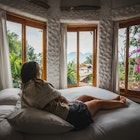
Jun 25, 2024 • 5 min read

Jun 4, 2024 • 7 min read

May 22, 2024 • 8 min read

May 19, 2024 • 6 min read

May 8, 2024 • 5 min read

Apr 2, 2024 • 22 min read

Mar 10, 2024 • 8 min read
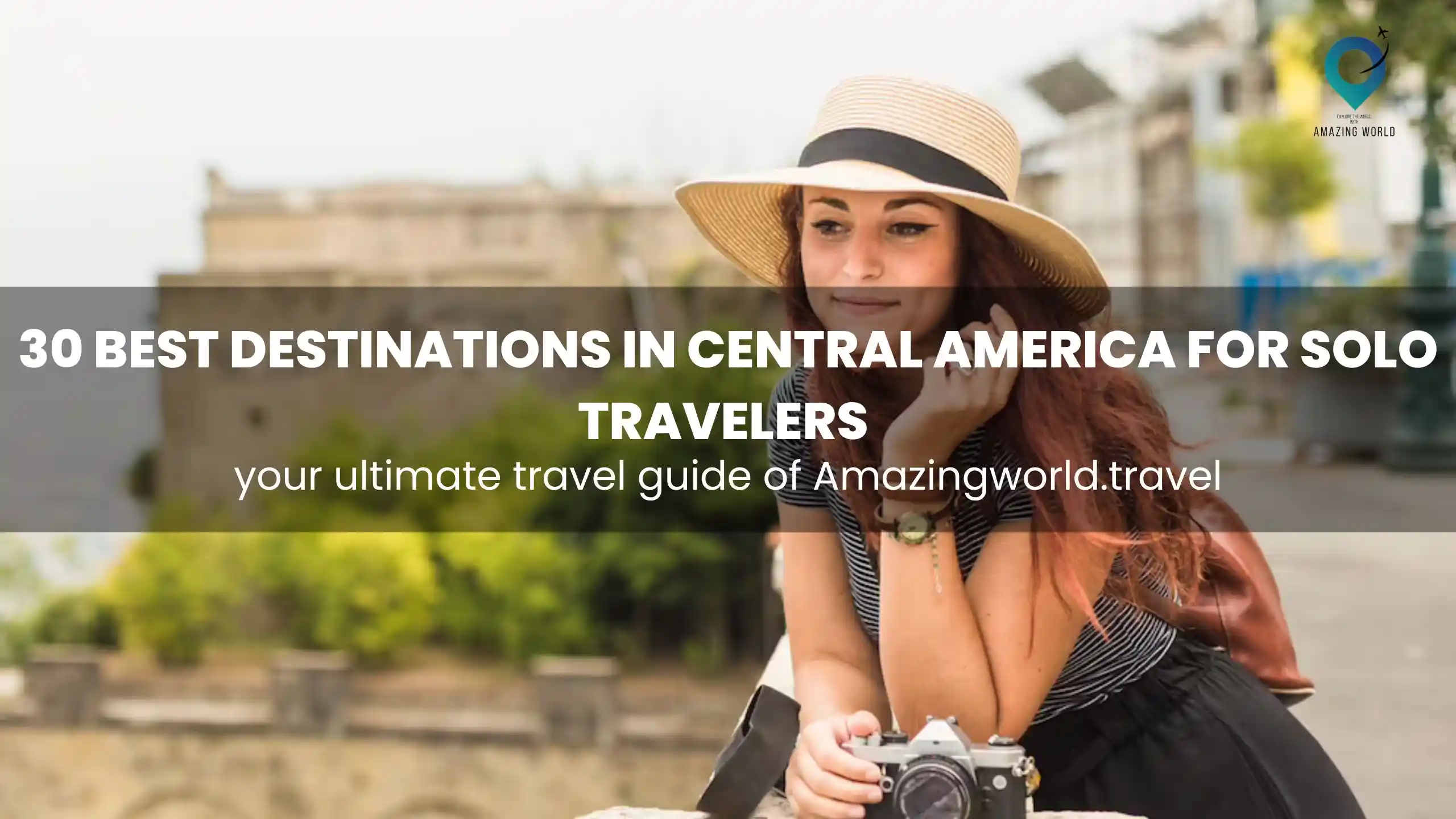
- Central America
30 Must-Visit Destinations in Central America for Solo Travelers | Amazingworld
- 53 minute read
- April 18, 2023
30 Best Destinations in Central America for Solo Travelers
Central America is a treasure trove of adventure, culture, and natural beauty, making it an ideal destination for solo travelers. Whether you’re an experienced backpacker or a first-time traveler, there’s something for everyone in this region.

From the stunning colonial towns of Antigua and Granada to the pristine beaches of Roatán and Tulum, and the ancient ruins of Copán and Tikal, Central America has it all.
Here are the 30 best destinations in Central America for solo travelers, each offering a unique and unforgettable experience. So, pack your bags, grab your passport, and get ready for an adventure of a lifetime in Central America!
1. Antigua, Guatemala – Colonial Charm & Volcanoes.

Antigua is a stunning colonial town located in southern Guatemala, surrounded by three majestic volcanoes. This charming city is known for its vibrant culture, rich history, and stunning architecture, making it a must-visit destination for solo travelers.
Location : Antigua is located in the central highlands of Guatemala, about 45 minutes from the capital city of Guatemala City. The town is situated at an elevation of 1,500 meters (4,900 feet) above sea level and is surrounded by the Agua, Fuego, and Acatenango volcanoes.
Known for : Antigua is known for its stunning colonial architecture, colorful markets, and vibrant nightlife. The town is also a popular destination for those seeking outdoor adventure, with opportunities for hiking, mountain biking, and volcano climbing.
The Best Mode of Transportation: Antigua is a walkable city, and most of the attractions are located within a few blocks of the central square. However, if you need to travel further, you can take a tuk-tuk or a taxi. Buses are also available for travel to other towns and cities in Guatemala.
Daily Budget : The daily budget for a solo traveler in Antigua can range from $20-$50 USD per day, depending on your accommodation and dining preferences.
Hostels and budget hotels are available for around $10-$20 USD per night, while mid-range hotels can cost around $40-$60 USD per night.
Food and drinks are generally inexpensive, with local street food starting at around $1-$2 USD.
Culture : Antigua is a UNESCO World Heritage Site and has a rich cultural history. The town is known for its Spanish Baroque-style architecture and is home to many museums and art galleries.
Antigua is also known for its colorful markets, where you can find handmade crafts, textiles, and souvenirs.
Nightlife : Antigua has a vibrant nightlife, with many bars and clubs located in the town center. Some popular spots for nightlife include Cafe No Se, which offers live music and mezcal tastings, and Las Vibras de la Casbah, which has a rooftop bar with stunning views of the town.
Food : Antigua is known for its delicious cuisine, with many local dishes featuring ingredients like black beans, rice, and plantains. Some popular dishes to try include pepián, a traditional meat stew, and chiles rellenos, stuffed peppers.
There are also many international restaurants and cafes in Antigua, offering everything from pizza to sushi.
Safety Measures: Antigua is generally a safe destination for solo travelers, but it’s important to take precautions like avoiding walking alone at night and keeping your valuables secure. It’s also recommended to drink bottled water and to be aware of your surroundings.
Attractions : Antigua is home to many beautiful attractions, including the stunning colonial architecture of La Merced Church and the famous Santa Catalina Arch.
The town also has many museums and art galleries, such as the Casa Santo Domingo Museum and the Nim Po’t Textile Museum. Outdoor enthusiasts will enjoy hiking the Pacaya Volcano or visiting the nearby Lake Atitlán.
Some Travel Tips:
- Pack comfortable walking shoes for exploring the town
- Try to learn some basic Spanish phrases to help you communicate with locals
- Take a tour to learn more about the town’s history and culture
- Be sure to try some of the local street food for a true taste of Antigua
If You are planning to visit the USA and looking for the best flight booking from your destination then, So we recommend you book your flight from Qatar Airways or Emirates
2. Granada, Nicaragua – Colorful Town & Lakeside Relaxation.

Granada is a charming colonial town located on the shores of Lake Nicaragua, in western Nicaragua. This colorful town is known for its stunning architecture, vibrant culture, and relaxed atmosphere, making it a perfect destination for solo travelers looking to unwind and soak up some Central American charm.
Location : Granada is located about an hour south of the capital city of Managua, and is situated on the shores of Lake Nicaragua. The town is surrounded by lush tropical forests and is known for its stunning views of the Mombacho Volcano.
Known for: Granada is known for its stunning colonial architecture, colorful buildings, and relaxed pace of life.
The town is also a popular destination for those seeking outdoor adventure, with opportunities for kayaking, hiking, and zip-lining in the nearby forests.
The Best Mode of Transportation: Granada is a walkable town, and most of the attractions are located within a few blocks of the central square. However, if you need to travel further, you can take a tuk-tuk or a taxi. Buses are also available for travel to other towns and cities in Nicaragua.
Daily Budget: The daily budget for a solo traveler in Granada can range from $20-$50 USD per day, depending on your accommodation and dining preferences.
Hostels and budget hotels are available for around $10-$20 USD per night, while mid-range hotels can cost around $40-$60 USD per night. Food and drinks are generally inexpensive, with local street food starting at around $1-$2 USD.
Culture : Granada has a rich cultural history, with its colorful buildings and stunning architecture showcasing the town’s Spanish colonial past. The town is also home to many museums and galleries, including the Mi Museo de Granada, which showcases Nicaraguan art and history.
Nightlife : Granada has a relaxed nightlife, with many bars and cafes located in the town center. Some popular spots for nightlife include The Garden Cafe, which has live music and a rooftop terrace, and La Hacienda, which offers a range of cocktails and wines.
Food : Granada is known for its delicious cuisine, with many local dishes featuring ingredients like plantains, beans, and rice.
Some popular dishes to try include Gallo pinto, a traditional breakfast dish, and vigorón, a dish made with yucca, pork rind, and cabbage salad. There are also many international restaurants and cafes in Granada, offering everything from sushi to pizza.
Safety Measures: Granada is generally a safe destination for solo travelers, but it’s important to take precautions like avoiding walking alone at night and keeping your valuables secure. It’s also recommended to drink bottled water and to be aware of your surroundings.
Attractions : Granada is home to many beautiful attractions, including the stunning colonial architecture of the Cathedral of Granada and the colorful buildings of Calle La Calzada.
The town is also known for its beautiful Lake Nicaragua, where you can take a boat tour or kayak. Outdoor enthusiasts will enjoy hiking the Mombacho Volcano or visiting the nearby Isletas de Granada.
- Take a boat tour of Lake Nicaragua for stunning views of the surrounding area
- Visit the nearby Masaya Volcano National Park for a unique outdoor adventure.
Also, read– Top Famous Places to Visit in Indonesia
3. Roatán, Honduras – Caribbean Paradise & Diving.
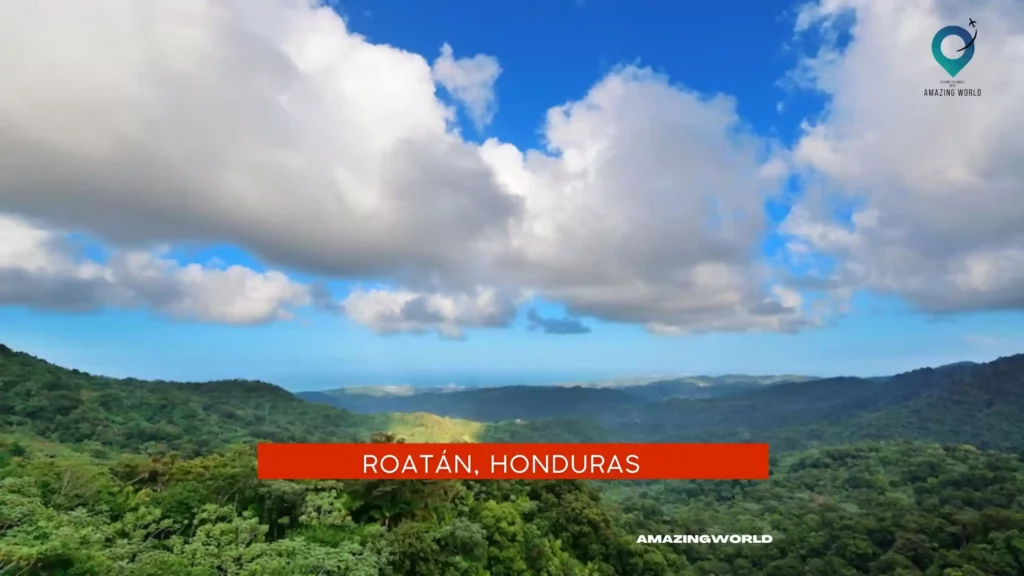
Roatán is a stunning Caribbean Island located off the coast of Honduras. With its white sandy beaches, crystal-clear waters, and vibrant coral reefs, Roatán is a paradise for solo travelers looking to relax, explore, and dive into a world of adventure.
Location : Roatán is located about 30 miles off the northern coast of Honduras, and is the largest of the Bay Islands.
The island is situated on the second-largest barrier reef system in the world, making it a prime location for scuba diving and snorkeling.
Known for: Roatán is known for its stunning beaches, crystal-clear waters, and world-class diving.
The island is also home to a rich cultural history, with influences from the Garifuna people and the Spanish colonial era.
The Best Mode of Transportation: The best way to get around Roatán is by taxi or rental car, as the island is relatively small and easy to navigate. There are also buses and vans that run between towns and attractions.
Daily Budget: The daily budget for a solo traveler in Roatán can range from $50-$100 USD per day, depending on your accommodation and dining preferences.
Budget-friendly hostels and hotels are available for around $20-$30 USD per night, while mid-range and luxury hotels can cost up to $300 USD per night. Food and drinks are generally more expensive than in mainland Honduras, with meals starting at around $10-$15 USD.
Culture : Roatán has a rich cultural history, with influences from the Garifuna people and the Spanish colonial era.
Visitors can explore the island’s cultural heritage through music, dance, and traditional crafts.
Nightlife : Roatán has a laid-back nightlife, with many bars and restaurants located on the beach. Some popular spots for nightlife include
The Sunken Fish, a beachside bar with live music and cocktails, and Foster’s West End, a lively bar with a pool table and karaoke.
Food : Roatán is known for its delicious seafood and traditional Caribbean cuisine. Some popular dishes to try include conch fritters, fried fish, and coconut shrimp. There are also many international restaurants and cafes on the island, offering everything from pizza to sushi.
Safety Measures: Roatán is generally a safe destination for solo travelers, but it’s important to take precautions like avoiding walking alone at night and keeping your valuables secure. It’s also recommended to drink bottled water and to be aware of your surroundings.
Attractions : Roatán is home to many beautiful attractions, including the stunning beaches of West Bay and Half Moon Bay, and the Roatán Butterfly Garden, which features hundreds of species of butterflies and tropical birds.
Outdoor enthusiasts will enjoy scuba diving or snorkeling at the world-famous reef system, or exploring the lush tropical forests and waterfalls on the island.
- Pack plenty of sunscreens and insect repellent
- Book scuba diving and snorkeling trips in advance to secure a spot
- Visit the Garifuna community in Punta Gorda to learn more about the island’s cultural heritage
- Take a boat tour of the nearby Cayos Cochinos, a group of small islands known for their pristine beaches and clear waters.
4. Panama City, Panama – Skyscrapers & Canal History.

Panama City is a vibrant and cosmopolitan city located at the southern end of the Panama Canal. With its impressive skyline, rich history, and diverse culture, Panama City is a must-visit destination for solo travelers looking for a mix of urban adventure and natural beauty.
Location : Panama City is located in the southern part of Panama, along the Pacific Ocean. The city is situated at the entrance to the Panama Canal, which connects the Atlantic and Pacific Oceans.
Known for: Panama City is known for its towering skyscrapers, historic old town, and the Panama Canal. The city is also famous for its lively nightlife and diverse culinary scene.
The Best Mode of Transportation: The best way to get around Panama City is by taxi or Uber, as the city is relatively spread out.
The metro system is also a convenient and affordable option, with a single fare costing around $0.35 USD.
Daily Budget: The daily budget for a solo traveler in Panama City can range from $50-$100 USD per day, depending on your accommodation and dining preferences.
Budget-friendly hostels and hotels are available for around $20-$30 USD per night, while mid-range and luxury hotels can cost up to $200 USD per night.
Food and drinks are generally affordable, with meals starting at around $5-$10 USD.
Culture : Panama City is a melting pot of cultures, with influences from indigenous communities, Spanish colonizers, and African slaves.
Visitors can explore the city’s cultural heritage through museums, festivals, and traditional dance performances.
Nightlife : Panama City has a vibrant nightlife scene, with many bars, nightclubs, and casinos open until the early morning hours.
Some popular spots for nightlife include Casco Viejo, a historic neighborhood with rooftop bars and live music, and Calle Uruguay, a street lined with trendy bars and restaurants.
Food : Panama City is known for its diverse culinary scene, with influences from Latin America, the Caribbean, and Europe.
Some popular dishes to try include ceviche, plantains, and sancocho, a traditional Panamanian soup.
There are also many international restaurants and cafes on offer, catering to all tastes and budgets.
Safety Measures: Panama City is generally a safe destination for solo travelers, but it’s important to take precautions like avoiding walking alone at night and keeping your valuables secure.
It’s also recommended to drink bottled water and to be aware of your surroundings.
Attractions : Panama City is home to many beautiful attractions, including the historic district of Casco Viejo, the Panama Canal, and the Amador Causeway, a waterfront promenade with stunning views of the city skyline.
Outdoor enthusiasts will enjoy hiking in the nearby rainforest of Soberania National Park, or taking a day trip to the beautiful islands of San Blas.
- Visit the Panama Canal Museum to learn about the history of this engineering marvel
- Take a guided tour of Casco Viejo to explore the city’s colonial architecture and narrow streets
- Enjoy a sunset cocktail at one of the rooftop bars in the city center
- Take a day trip to the nearby town of El Valle de Anton, known for its scenic hiking trails and natural hot springs.
Must Explore Post – Best Places to Visit in Maldives
5. Monteverde, Costa Rica – Cloud Forest & Zip Lining.

Monteverde is a small town located in the northwest region of Costa Rica, famous for its lush cloud forests, incredible biodiversity, and adrenaline-pumping adventure activities.
Solo travelers looking for a unique and unforgettable experience in Costa Rica should definitely put Monteverde on their itinerary.
Location : Monteverde is located in the province of Puntarenas in northwest Costa Rica, about a 3–4-hour drive from the capital city of San Jose.
Known for: Monteverde is known for its stunning cloud forests, which are home to over 500 species of birds and thousands of other plants and animals.
The town is also famous for its exhilarating zip-lining tours, suspension bridges, and other adventure activities.
The Best Mode of Transportation: The best way to get around Monteverde is by rental car or taxi, as the town is quite spread out and public transportation can be unreliable.
Many of the adventure activities in the area also require transportation, so it’s recommended to book tours with transportation included.
Daily Budget: The daily budget for a solo traveler in Monteverde can range from $50-$100 USD per day, depending on your accommodation and dining preferences.
Hostels and budget-friendly hotels are available for around $20-$30 USD per night, while mid-range and luxury hotels can cost up to $200 USD per night.
Culture : Monteverde is a small town with a laid-back, rural vibe. The area is home to a number of indigenous communities, and visitors can learn about their culture through guided tours and cultural events.
Nightlife : Nightlife in Monteverde is relatively low-key, with most visitors preferring to spend their evenings relaxing after a day of adventure activities.
However, there are a few bars and restaurants in town that offer live music and entertainment.
Food : Monteverde is known for its fresh and delicious local cuisine, which includes dishes like gallo pinto (rice and beans), casado (a traditional Costa Rican dish with rice, beans, and meat or fish), and ceviche.
There are also many international restaurants and cafes in town, catering to all tastes and budgets.
Safety Measures: Monteverde is a safe destination for solo travelers, but it’s important to take precautions like avoiding walking alone at night and keeping your valuables secure.
It’s also recommended to drink bottled water and to be aware of your surroundings during adventure activities.
Attractions : Monteverde’s main attraction is the Monteverde Cloud Forest Reserve, where visitors can hike through the lush forest and spot a variety of plants and animals, including monkeys, sloths, and birds.
Other popular activities in the area include zip-lining tours, canopy walks, and night hikes.
- Book adventure activities and tours in advance to avoid disappointment
- Bring comfortable hiking shoes and warm clothing, as the cloud forests can be chilly and damp
- Visit the local cheese factory to try Monteverde’s famous cheese
- Take a day trip to the nearby town of La Fortuna to see the famous Arenal Volcano and soak in the natural hot springs.
6. San Juan del Sur, Nicaragua – Surfing & Beach Parties.
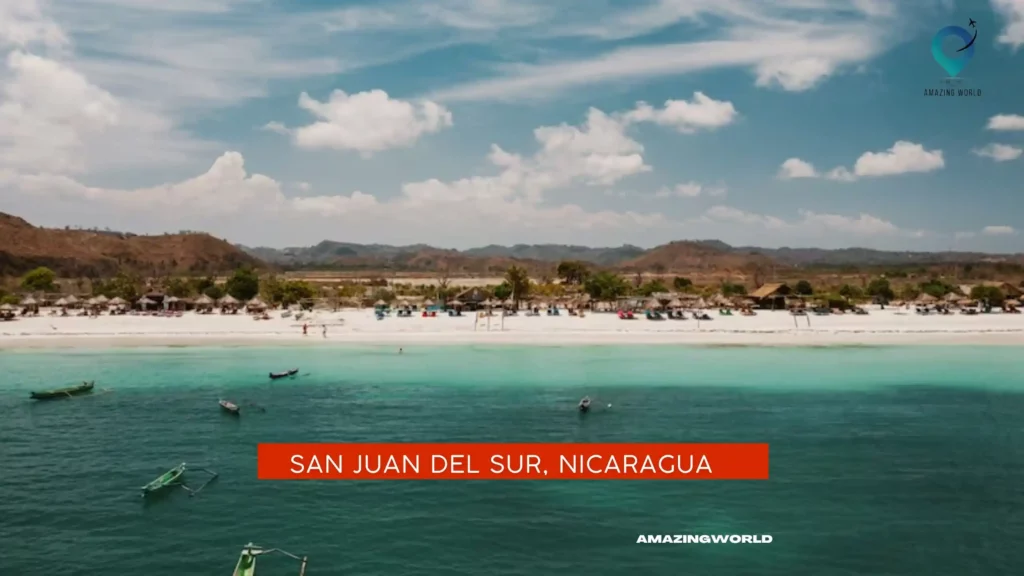
San Juan del Sur is a vibrant coastal town located on the Pacific coast of Nicaragua, known for its stunning beaches, excellent surfing, and lively beach parties.
Solo travelers looking for a fun and laid-back atmosphere should definitely consider adding San Juan del Sur to their itinerary.
Location : San Juan del Sur is located in the Rivas Department in southwest Nicaragua, about a 2–3-hour drive from the capital city of Managua.
Known for : San Juan del Sur is known for its beautiful beaches, world-class surfing, and lively nightlife.
The town is popular with backpackers and surfers, and visitors can enjoy a range of water sports and beach activities.
The Best Mode of Transportation : The best way to get around San Juan del Sur is on foot, as the town is small and easy to navigate.
Taxis and moto-taxis are also available for longer trips, and buses run to nearby towns and cities.
Daily Budget: The daily budget for a solo traveler in San Juan del Sur can range from $30-$100 USD per day, depending on your accommodation and dining preferences.
Hostels and budget-friendly hotels are available for around $10-$20 USD per night, while mid-range and luxury hotels can cost up to $200 USD per night.
Food and drinks are generally affordable, with meals starting at around $5 USD.
Culture : San Juan del Sur has a vibrant and diverse culture, with influences from indigenous communities, Spanish colonization, and modern-day tourism.
Visitors can learn about the local culture through music, dance, and festivals.
Nightlife : San Juan del Sur is famous for its lively nightlife, with beach parties and bars that stay open late into the night.
Visitors can enjoy live music, DJs, and drink specials at many of the town’s popular bars and clubs.
Food : San Juan del Sur has a range of dining options, from local street food to international cuisine. Seafood is a specialty in the area, with fresh fish and shellfish available at many restaurants.
Visitors can also try traditional Nicaraguan dishes like gallo pinto and vigorón.
Safety Measures: San Juan del Sur is generally a safe destination for solo travelers, but it’s important to take precautions like avoiding walking alone at night and keeping your valuables secure.
It’s also recommended to drink bottled water and to be aware of your surroundings during beach parties and nightlife activities.
Attractions : San Juan del Sur’s main attraction is its beautiful beaches, which offer excellent surfing, swimming, and sunbathing opportunities.
Other popular activities in the area include boat tours, horseback riding, and hiking in nearby nature reserves.
- Book accommodation in advance, especially during peak season (December to April)
- Bring plenty of sunscreens and insect repellent, as the sun and bugs can be intense
- Learn some basic Spanish phrases to communicate with locals
- Take a day trip to nearby Ometepe Island to see the twin volcanoes and learn about indigenous culture.
7. San Ignacio, Belize – Mayan Ruins & Jungle Adventures.
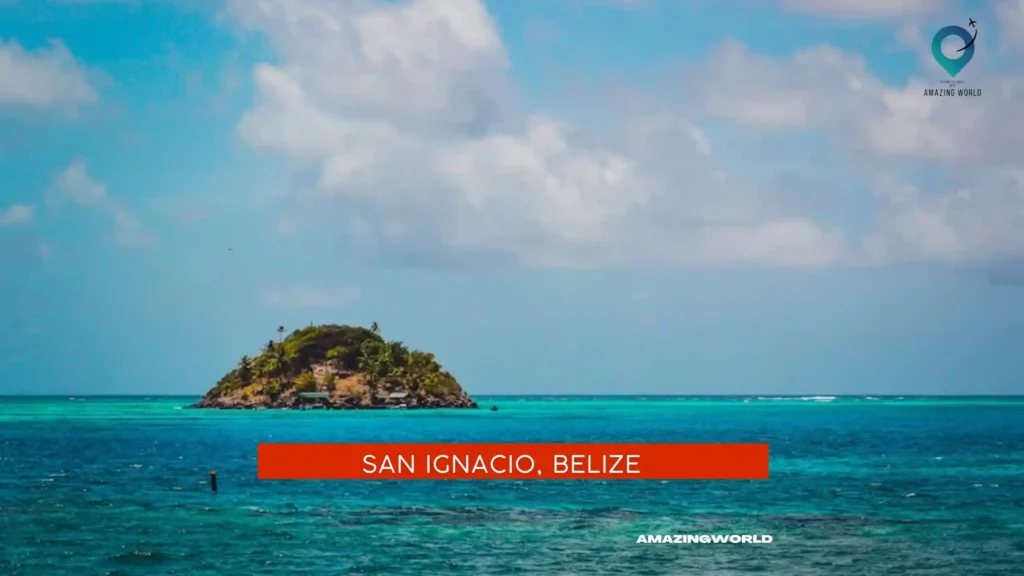
San Ignacio is a charming town located in western Belize, close to the Guatemalan border. It is known for its natural beauty and rich Mayan history, offering a unique experience for solo travelers seeking adventure and cultural immersion.
Location : San Ignacio is situated in the Cayo District of Belize, surrounded by lush jungles, rivers, and ancient ruins.
It is approximately 135 km west of Belize City and can be easily accessed by bus or car.
Known for: San Ignacio is renowned for its proximity to several Mayan ruins, including the famous Xunantunich and Cahal Pech archaeological sites.
Visitors can explore the remains of ancient cities and learn about Mayan history and culture. The town is also popular for its adventurous activities, such as caving, hiking, and zip-lining.
The best mode of transportation: The best way to get around San Ignacio is on foot, as most attractions are within walking distance.
However, visitors can also rent a bike or take a taxi to explore the surrounding areas.
Daily budget: Solo travelers can expect to spend around $50-$60 USD per day in San Ignacio, including accommodation, food, and transportation.
Culture : San Ignacio is a melting pot of various cultures, including Maya, Mestizo, and Garifuna.
Visitors can experience traditional dance performances, local cuisine, and immerse themselves in the daily life of the locals.
Nightlife : While San Ignacio is not known for its nightlife, there are a few bars and restaurants where visitors can socialize and enjoy a drink or two.
The town also hosts various cultural events throughout the year, such as the San Ignacio Town Fiesta.
Food : San Ignacio offers a range of cuisine, from traditional Mayan dishes to international fare. Visitors can try local specialties such as fry jacks, tamales, and rice and beans.
The town also has several vegetarian and vegan-friendly restaurants.
Safety measures: San Ignacio is generally considered safe for solo travelers, but it’s always important to take precautions.
Visitors should avoid walking alone at night, keep their valuables secure, and be aware of their surroundings.
Attractions : San Ignacio’s main attraction is its proximity to several Mayan ruins, including Xunantunich and Cahal Pech.
Visitors can also explore the nearby Mountain Pine Ridge Forest Reserve, where they can hike to waterfalls, swim in natural pools, and see ancient cave systems.
Some travel tips:
- Don’t forget to pack insect repellent and sunscreen, as the weather can be hot and humid.
- Consider hiring a local guide to learn more about the Mayan history and culture.
- Take a dip in the natural pools of the Rio on pools, located just outside of San Ignacio.
8. Copán, Honduras – Archaeological Site & Sculptures.
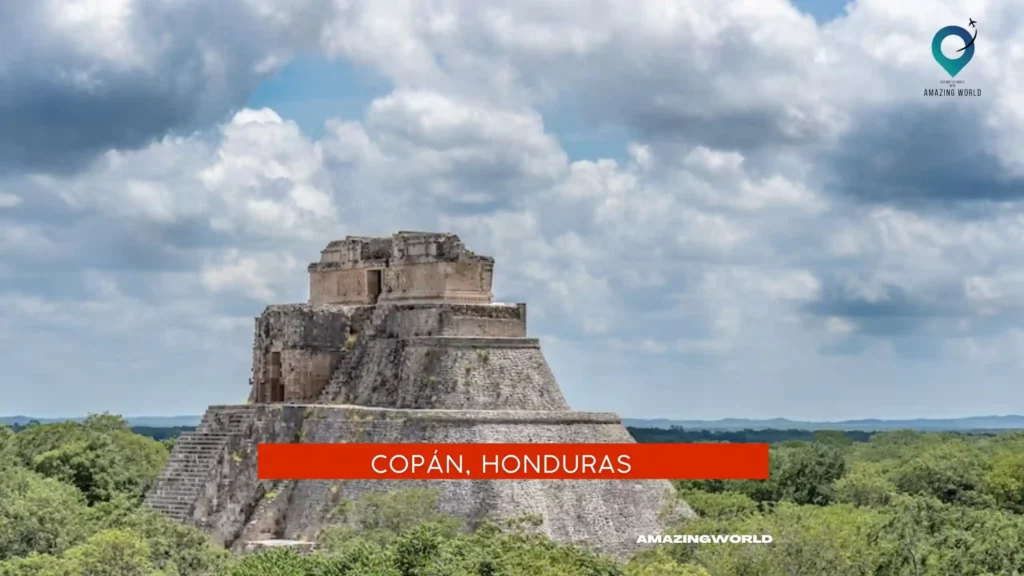
Located in western Honduras, Copán is a small town known for its archaeological site and ancient sculptures. The town is surrounded by lush greenery and is a peaceful retreat for those looking to explore ancient civilizations.
Location : Copán is located in the western part of Honduras, close to the Guatemalan border. The town is situated in a valley surrounded by hills, providing a scenic backdrop to the ancient ruins.
Known for: Copán is famous for its archaeological site, which dates back to the Mayan civilization. The site is home to intricately carved sculptures and hieroglyphics that offer a glimpse into the ancient Mayan culture.
The best mode of transportation: The best way to get around Copán is on foot, as the town is small and easily walkable. Taxis and buses are also available for those who need to travel outside of the town.
Daily Budget: The average daily budget for a solo traveler in Copán is around $30-40 USD, which includes accommodation, food, and transportation.
Culture : The town has a laid-back and friendly atmosphere, with a mix of Mayan and Spanish influences in its culture. Visitors can experience the local culture by visiting the colorful markets and interacting with the friendly locals.
Nightlife : Copán is not known for its nightlife, but there are a few bars and restaurants that offer a lively atmosphere in the evenings. The town is more suited for those looking for a peaceful retreat rather than a party scene.
Food : The local cuisine in Copán is a mix of Mayan and Spanish influences, with dishes such as tamales, pupusas, and baleadas.
Visitors can also find international cuisine in the town’s restaurants.
Safety measures: Copán is generally a safe destination, but visitors should take normal safety precautions such as avoiding walking alone at night and keeping valuables out of sight.
Attractions : The main attraction in Copán is the archaeological site, which includes the ruins of the ancient Mayan city and intricately carved sculptures.
Visitors can also take a horseback ride through the lush countryside or go bird watching in the nearby mountains.
- Wear comfortable shoes for exploring the archaeological site, as there is a lot of walking involved.
- Don’t miss the opportunity to try the local cuisine, as it offers a unique blend of flavors.
- Take a guided tour of the archaeological site to learn more about the history and culture of the Mayan civilization.
You Also May Like it– Top 22 Places to Visit in Phuket |Thailand
9. Caye Caulker, Belize – Island Vibes & Snorkeling.
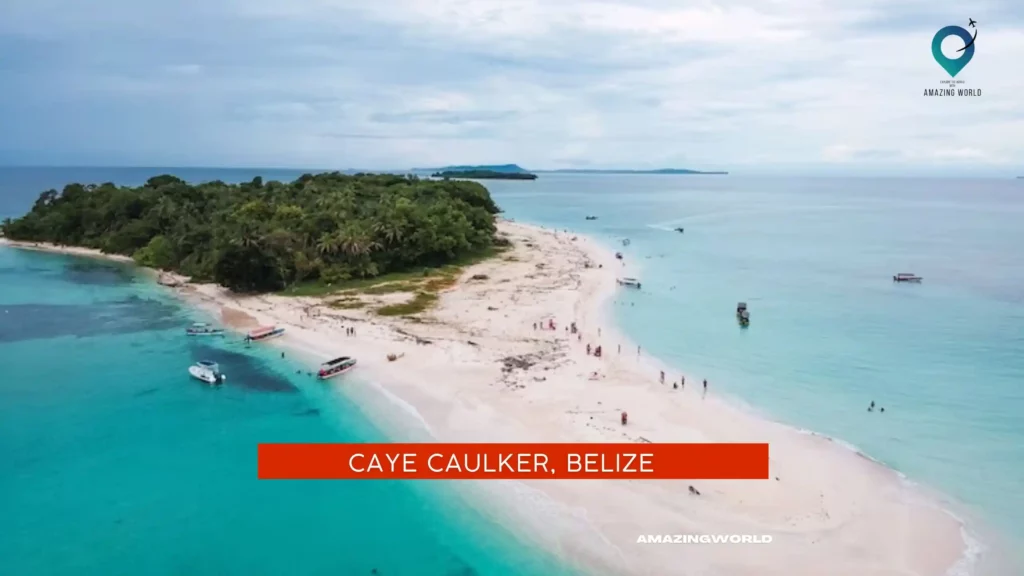
Caye Caulker, located off the coast of Belize, is a paradise for solo travelers seeking an island getaway. With its laid-back vibe, turquoise waters, and colorful houses, this small island has a unique charm that will captivate anyone who visits.
Location : Caye Caulker is a small island off the coast of Belize in the Caribbean Sea. It is situated about 20 miles north-northeast of Belize City and is accessible by water taxis or small planes.
Known for: Caye Caulker is known for its relaxed atmosphere, pristine beaches, and world-class snorkeling and diving.
It’s the perfect destination for those seeking an escape from the hustle and bustle of city life.
The best mode of transportation: The island is only about 5 miles long, and the best way to get around is by walking or renting a bike or golf cart.
There are no cars on the island, so you can enjoy a peaceful and serene atmosphere.
Daily budget: Caye Caulker is relatively affordable, with budget accommodation and food options available. You can expect to spend around $30-50 USD per day, depending on your activities and preferences.
Culture : The island has a mixed cultural heritage, with influences from the Garifuna, Maya, and Creole communities.
The locals are friendly and welcoming, and you can experience their unique way of life by participating in cultural activities such as drumming or dancing.
Nightlife : Caye Caulker has a vibrant nightlife, with bars and restaurants lining the beachfront. You can enjoy live music, dancing, and cocktails under the stars.
Food : The island offers a variety of local and international cuisine, with seafood being a specialty. You can try conch fritters, lobster, and fresh fish, or opt for vegan and vegetarian options.
Safety measures: Caye Caulker is generally a safe destination, but it’s always important to take precautions when traveling solo.
You should avoid walking alone at night and keep your valuables secure.
Attractions : Some of the top attractions in Caye Caulker include snorkeling at the Hol Chan Marine Reserve, swimming with nurse sharks at Shark Ray Alley, and enjoying the stunning sunsets from the Split.
You can also take a day trip to the neighboring island of Ambergris Caye.
Some travel tips: Be sure to bring plenty of sunscreen, bug spray, and comfortable shoes for walking on the sand.
It’s also a good idea to bring cash, as many places on the island do not accept credit cards. Finally, don’t forget to pack your snorkeling gear!
9. La Fortuna, Costa Rica – Arenal Volcano & Hot Springs.
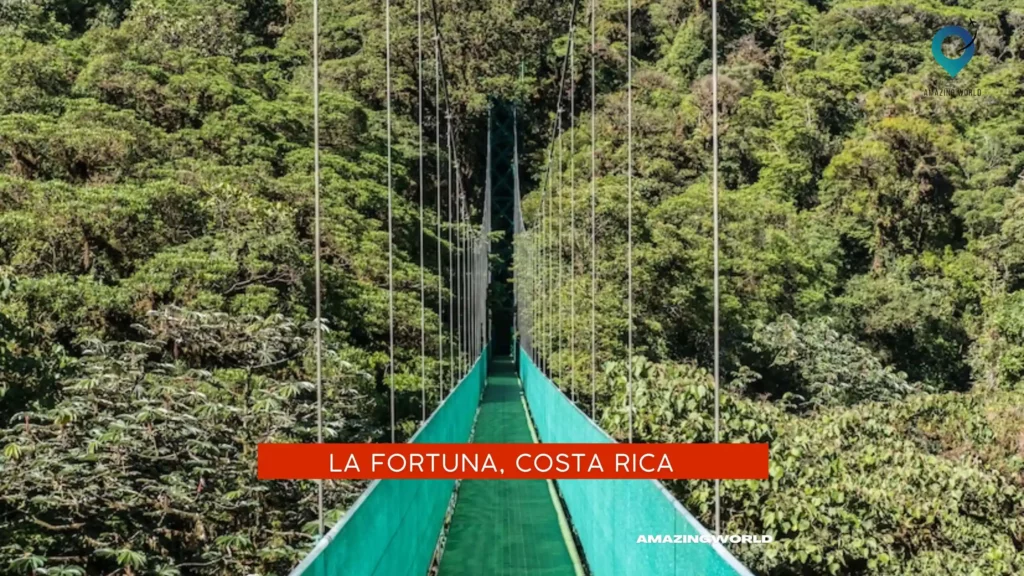
La Fortuna is a small town in Costa Rica, located in the northern part of the country. It is known for its stunning natural beauty, especially the Arenal Volcano, which is one of the most active volcanoes in the world.
The town is surrounded by lush rainforests, thermal hot springs, and breathtaking waterfalls. La Fortuna is a popular destination for adventure seekers, nature lovers, and those seeking relaxation in a tranquil setting.
Location : La Fortuna is situated in the province of Alajuela, in the northern part of Costa Rica. It is located about 3 hours away from the capital city, San Jose, and is easily accessible by bus, car, or shuttle.
Known for: La Fortuna is famous for the Arenal Volcano, which dominates the skyline and provides a spectacular backdrop for the town.
It is also known for its natural hot springs, which are said to have healing properties due to their high mineral content.
The town is surrounded by lush rainforests, and there are plenty of opportunities for outdoor activities such as hiking, zip-lining, and white-water rafting.
The Best Mode of Transportation: The best mode of transportation to get around La Fortuna is by foot or by car. Most attractions are within walking distance of the town center, and car rental is readily available.
Daily Budget: The average daily budget for La Fortuna is around $50-$100, depending on your accommodation and activity choices.
There are plenty of budget-friendly options for food and lodging, as well as more luxurious options for those seeking a more upscale experience.
Culture : La Fortuna is a small town with a laid-back atmosphere. The locals are friendly and welcoming, and there are plenty of opportunities to learn about Costa Rican culture and traditions.
Nightlife : La Fortuna is not known for its nightlife, but there are a few bars and restaurants in the town center where you can enjoy a drink and some live music.
Food : La Fortuna has a variety of dining options, from street food to upscale restaurants. The cuisine is predominantly Costa Rican, with a focus on fresh seafood and tropical fruits.
Safety Measures: La Fortuna is generally a safe destination for travelers, but it is always important to exercise caution and be aware of your surroundings.
It is recommended to use a safe or locker to store valuables and avoid walking alone at night.
Attractions : Some of the top attractions in La Fortuna include the Arenal Volcano National Park, the La Fortuna Waterfall, the Arenal Hot Springs, and the Sky Adventures zip-line park.
- Bring comfortable shoes and clothes for outdoor activities.
- Don’t forget to pack insect repellent and sunscreen.
- Try the local cuisine, including fresh seafood and tropical fruits.
- Take a dip in the natural hot springs for a relaxing and rejuvenating experience.
10. Leon, Nicaragua – Colonial Architecture & Revolutionary History.
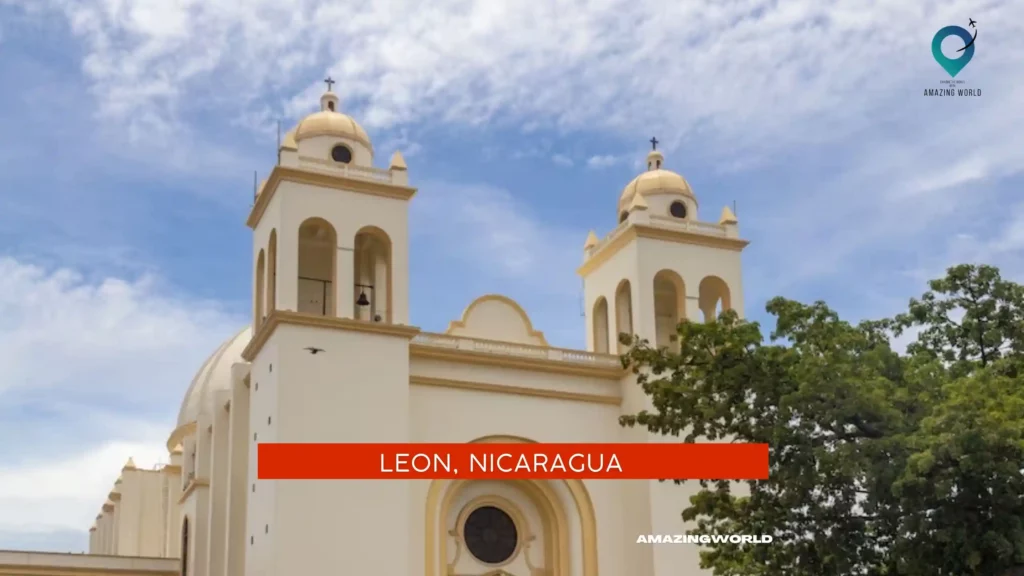
Leon is a city located in western Nicaragua, known for its rich colonial architecture and revolutionary history. This city offers a blend of fascinating historical landmarks, stunning natural attractions, and a vibrant arts and culture scene, making it a perfect destination for solo travelers seeking adventure and exploration.
Location : Leon is located about 90 kilometers northwest of Managua, the capital city of Nicaragua. It is situated near the Pacific Ocean and is surrounded by several volcanic peaks.
Known for: Leon is known for its beautifully preserved colonial architecture, revolutionary history, and cultural diversity. The city is also famous for its lively music scene, street art, and delicious street food.
The best mode of transportation: The best mode of transportation in Leon is walking or cycling. The city is relatively small, and most of its attractions can be easily reached on foot or by bike. Taxis and buses are also available for longer distances.
Daily Budget: The daily budget for travelers in Leon can range from $30 to $50 per day, depending on the level of comfort and activities undertaken.
Culture : Leon is known for its rich cultural heritage, which can be experienced through its music, art, and cuisine. The city has a diverse population, with influences from Spanish, African, and indigenous cultures.
Nightlife : Leon offers a vibrant nightlife scene, with numerous bars and clubs that cater to both locals and tourists. The city is known for its live music and salsa dancing.
Food : Leon is a food lover’s paradise, with a variety of delicious street food and traditional dishes. Some popular local dishes include gallo pinto, vigorón, and quesillo.
Safety measures: Travelers should take usual safety precautions while visiting Leon, including avoiding isolated areas at night and keeping valuables secure.
Attractions : Some of the top attractions in Leon include the Cathedral of Leon, the Museum of the Revolution, and the Rubén Darío Museum.
The nearby Maribios volcanic chain and beaches of Las Peñitas are also popular day trips.
Some travel tips: When visiting Leon, it’s recommended to wear comfortable walking shoes and carry plenty of water to stay hydrated. It’s also a good idea to learn some basic Spanish, as most locals speak little to no English.
11. Bocas del Toro, Panama – Caribbean Archipelago & Beaches.
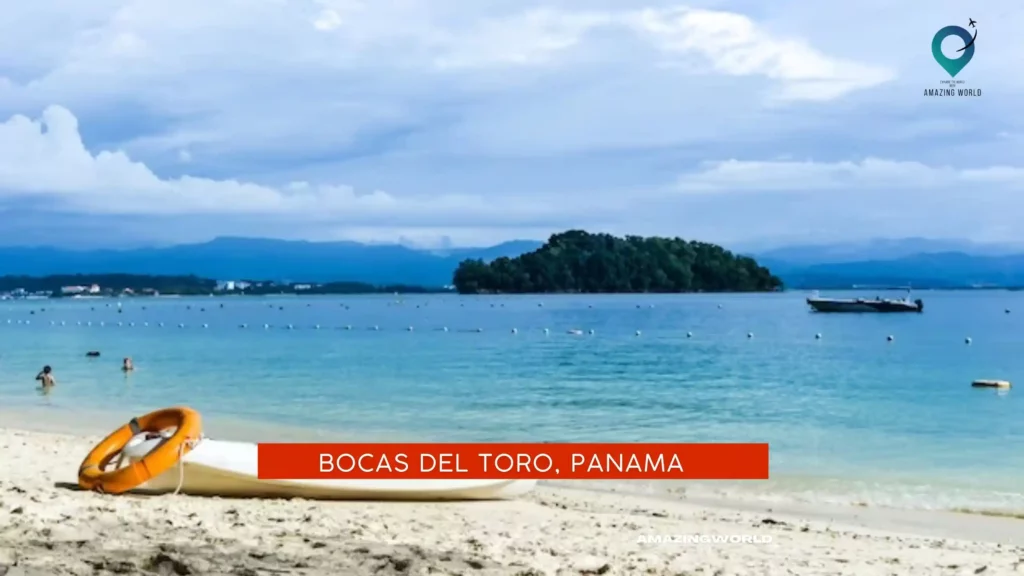
Bocas del Toro, a hidden gem in Panama, is a tropical paradise that offers everything you could want in a Caribbean vacation. From picturesque beaches to vibrant coral reefs, this archipelago has something for everyone.
Bocas del Toro is an ideal destination for solo travelers seeking adventure, relaxation, and a unique cultural experience.
Location : Bocas del Toro is an archipelago located in the northwestern part of Panama. The main island, Isla Colon, is the largest and most developed of the islands.
Known for: Bocas del Toro is known for its stunning natural beauty and rich cultural heritage. It’s a perfect destination for travelers who want to explore the outdoors, relax on the beach, and immerse themselves in the local culture.
The best mode of transportation: The best way to get around the islands is by boat or water taxi. There are several options available for island hopping and exploring the various beaches and attractions.
Daily Budget: Bocas del Toro can be relatively expensive compared to other destinations in Central America. However, travelers can still find affordable accommodation and dining options if they plan accordingly.
The average daily budget can range from $50 to $100 USD, depending on your travel style and preferences.
Culture : The culture of Bocas del Toro is a unique blend of Afro-Caribbean, Indigenous, and Spanish influences.
You can see this influence in the music, dance, and cuisine of the region. The locals are warm and welcoming, and visitors can easily immerse themselves in the local culture.
Nightlife : Bocas del Toro has a vibrant nightlife scene with many bars and clubs that cater to travelers and locals.
The nightlife is a mix of Caribbean and Latin music, and visitors can enjoy dancing, socializing, and trying local drinks.
Food : The food in Bocas del Toro is a fusion of Caribbean, Latin, and Indigenous cuisine. Visitors can enjoy fresh seafood, plantains, and other local specialties.
There are also many international restaurants and cafes that cater to different tastes.
Safety measures: Bocas del Toro is generally a safe destination for travelers. However, visitors should still take standard precautions such as avoiding walking alone at night and being aware of their surroundings.
Attractions : Some of the top attractions in Bocas del Toro include exploring the beaches, snorkeling, diving, and surfing.
Other popular activities include hiking, visiting local indigenous communities, and exploring the nightlife.
Some travel tips: Some essential travel tips for Bocas del Toro include bringing sunscreen, insect repellent, and cash, as credit cards are not accepted everywhere.
Visitors should also be prepared for occasional rain showers and pack accordingly. It’s also a good idea to learn some basic Spanish phrases as the locals primarily speak Spanish.
12. San Salvador, El Salvador – City Culture & Volcanoes.
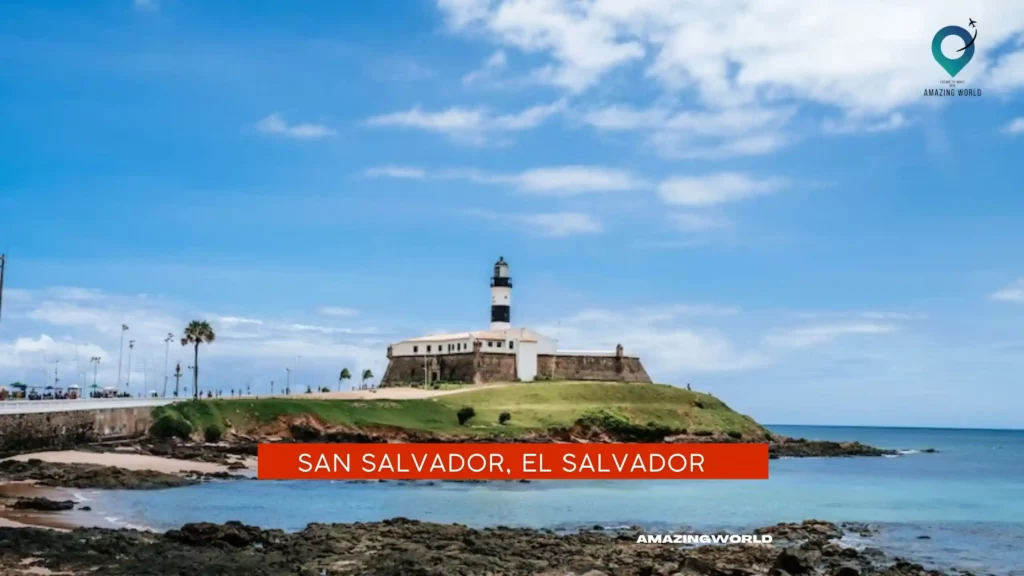
San Salvador, the capital city of El Salvador, is a vibrant and bustling metropolis that offers a mix of city culture and natural beauty. The city has undergone significant transformations in recent years, with the restoration of historical landmarks and the development of modern infrastructure.
It is a great destination for solo travelers looking to explore Central America’s urban landscapes and immerse themselves in the local culture.
Location : San Salvador is located in the central region of El Salvador, in the heart of Central America. It is surrounded by beautiful landscapes, including the San Salvador volcano and the Boqueron National Park.
Known for: San Salvador is known for its rich history, colonial architecture, museums, and art galleries. It is also a hub for music, dance, and street art. The city has a thriving street food scene and is famous for its pupusas, a traditional Salvadoran dish.
The best mode of transportation: The best way to get around San Salvador is by using the public transport system, which includes buses, microbuses, and taxis. However, if you plan to explore the city’s surroundings, renting a car or taking a guided tour is recommended.
Daily Budget: San Salvador is a budget-friendly destination, with accommodation and food options to suit all budgets. A daily budget of $30-$50 should be enough for a solo traveler, including accommodation, food, and transportation.
Culture : The culture of San Salvador is a mix of indigenous, European, and African influences, reflected in the city’s music, dance, and cuisine.
The city has a rich history of Mayan and Aztec civilizations, as well as Spanish colonization and modern-day struggles for independence.
Nightlife : San Salvador has a vibrant nightlife scene, with a variety of bars, clubs, and music venues. The Zona Rosa district is a popular spot for nightlife, with a range of options to suit different tastes and budgets.
Food : San Salvador is known for its street food scene and traditional dishes, including pupusas, tamales, and ceviche.
The Mercado Central is a great place to sample local cuisine and experience the bustling atmosphere of a typical Salvadoran market.
Safety measures: As with any major city, it’s important to take safety precautions when visiting San Salvador.
It’s recommended to avoid traveling alone at night and to be aware of your surroundings at all times.
It’s also advisable to keep your valuables secure and avoid displaying expensive items in public.
Attractions : San Salvador has several attractions worth exploring, including the National Palace, the Museum of Anthropology, and the El Boqueron National Park.
Other notable landmarks include the Metropolitan Cathedral and the San Salvador volcano.
- Learn some basic Spanish phrases to help you communicate with locals.
- Wear comfortable shoes, as there is a lot of walking involved in exploring the city.
- Be respectful of the local customs and traditions, including dress codes and religious practices.
- Always carry a copy of your passport and important travel documents with you.
13. Ometepe Island, Nicaragua – Twin Volcano Island & Hiking.

Ometepe Island in Nicaragua is a natural gem that draws in solo travelers with its unique twin volcanic peaks, lush forests, and tranquil beaches.
It’s an ideal destination for adventure seekers and nature lovers who want to explore off-the-beaten-path destinations.
Location : Ometepe Island is located in Lake Nicaragua, which is the largest lake in Central America. It is accessible by a ferry ride from the mainland, which takes about 1-2 hours.
Known for: Ometepe Island is known for its two majestic volcanoes, Concepcion and Maderas, which are popular for hiking and offer breathtaking views of the surrounding landscapes.
The island is also home to many archaeological sites, pristine beaches, and wildlife reserves.
The best mode of transportation: The best mode of transportation on the island is a bike or scooter, which can be rented from various places. Taxis and buses are also available for getting around the island.
Daily Budget: Ometepe Island is relatively affordable, and the daily budget for a solo traveler can range from $30-$50, depending on the type of accommodation and activities chosen.
Culture : Ometepe Island has a rich cultural heritage that is evident in the various archaeological sites and museums located on the island.
The island is also home to many indigenous communities that have preserved their traditions and way of life.
Nightlife : The nightlife on the island is relatively low-key, with a few bars and restaurants that offer live music and entertainment. However, the island’s natural beauty and tranquility make it an ideal place for relaxation.
Food : Ometepe Island offers a range of local and international cuisine, including fresh seafood, traditional Nicaraguan dishes, and vegetarian options. Many restaurants on the island use organic and locally sourced ingredients.
Safety measures: Ometepe Island is generally safe, but travelers should be cautious of petty crime and take necessary precautions, such as avoiding secluded areas at night and keeping valuables safe.
Attractions : The main attractions on Ometepe Island are the two volcanoes, Concepcion and Maderas, which offer excellent hiking opportunities and stunning views.
Other attractions include the Ojo de Agua natural spring, San Ramon waterfall, and the Charco Verde Nature Reserve.
- Be sure to bring sturdy hiking shoes and comfortable clothing for exploring the island’s natural wonders.
- Rent a bike or scooter to get around the island, but be cautious of the unpaved roads and hills.
- Visit during the dry season (November to April) for optimal hiking conditions and clear views.
- Take a break from technology and enjoy the island’s natural beauty and tranquility.
14. Tulum, Mexico – Mayan Ruins & Beaches.
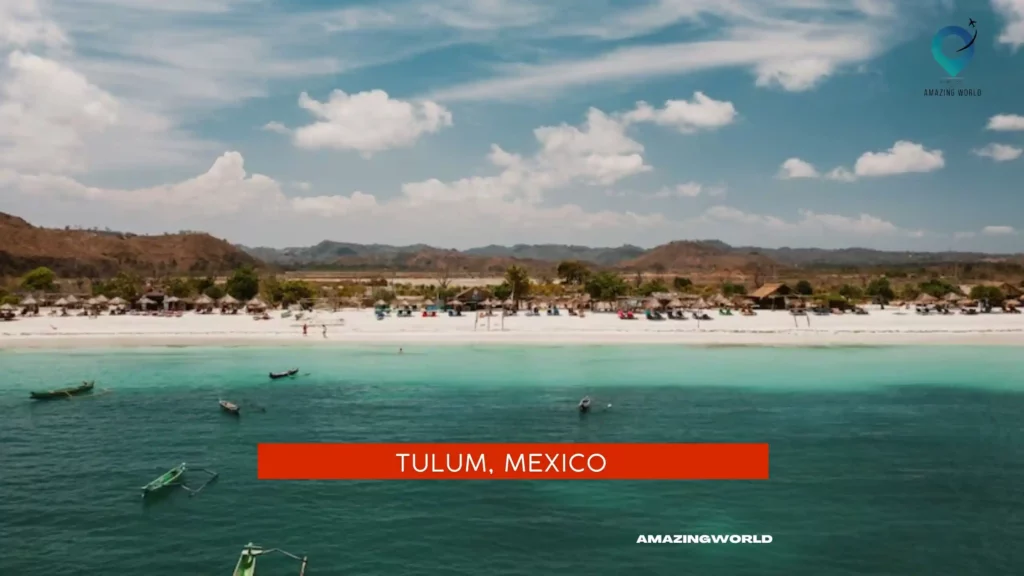
Tulum, located on the east coast of the Yucatan Peninsula, is a charming Mexican town that has become a popular destination for travelers seeking a mix of history, culture, and natural beauty.
Known for its stunning white-sand beaches, turquoise waters, and well-preserved Mayan ruins, Tulum offers a perfect blend of relaxation and adventure.
Location : Tulum is situated approximately 130 km (80 miles) south of Cancun, and 65 km (40 miles) south of Playa del Carmen.
The town is nestled between the Caribbean Sea to the east and the lush jungle to the west, creating a unique and picturesque landscape.
Known for: Tulum is known for its impressive Mayan ruins, which are located on a cliff overlooking the Caribbean Sea. The ruins date back to the 13th century and were once a thriving Mayan port city.
Tulum is also known for its beautiful beaches, including Playa Paraiso, which is consistently ranked as one of the best beaches in the world.
The best mode of transportation: The most convenient mode of transportation in Tulum is by bike or scooter.
Tulum is a small town, and many of the attractions are within biking distance of each other. Bikes and scooters can be rented easily and affordably in town.
Daily Budget: The daily budget for Tulum depends on your travel style and preferences. On average, a budget traveler can expect to spend around $50-60 per day, while mid-range travelers can expect to spend around $100-150 per day. Luxury travelers can expect to spend upwards of $300 per day.
Culture : Tulum is a hub of Mexican culture and history. The town is home to many galleries, museums, and art exhibitions, showcasing the works of local and international artists.
Visitors can also experience traditional Mexican cuisine, music, and dance at the many restaurants and bars in town.
Nightlife : Tulum’s nightlife scene is relatively laid-back and centered around beachfront bars and clubs. Most bars close by midnight, but a few stay open late into the night.
The town also hosts a variety of live music performances and cultural events throughout the year.
Food : Tulum’s food scene is a mix of traditional Mexican cuisine and international fusion dishes.
The town is famous for its fresh seafood, and many restaurants offer oceanfront dining experiences. Vegan and vegetarian options are also widely available.
Safety measures: Tulum is generally a safe destination for travelers. However, it is important to take standard safety precautions, such as not walking alone at night and not leaving valuables unattended.
Attractions : In addition to the Mayan ruins and beaches, Tulum offers a variety of attractions for travelers, including Cenote Dos Ojos, a natural swimming hole with crystal-clear waters, and Sian Ka’an Biosphere Reserve, a protected area of tropical forest, mangroves, and wetlands.
- Visit the Mayan ruins early in the morning to avoid crowds and heat.
- Bring plenty of sunscreen and mosquito repellent.
- Book your accommodations and tours in advance, especially during high season.
- Explore the nearby cenotes for a unique and refreshing swimming experience.
15. Tortuguero, Costa Rica – Sea Turtles & Jungle Canals.

Daily Budget: The daily budget for Tulum depends on your travel style and preferences. On average, a budget traveler can expect to spend around $50-60 per day, while mid-range travelers can expect to spend around $100-150 per day.
Luxury travelers can expect to spend upwards of $300 per day.
- Bring plenty of sunscreens and mosquito repellent.
16. La Ceiba, Honduras – Adventure Hub & Beaches.
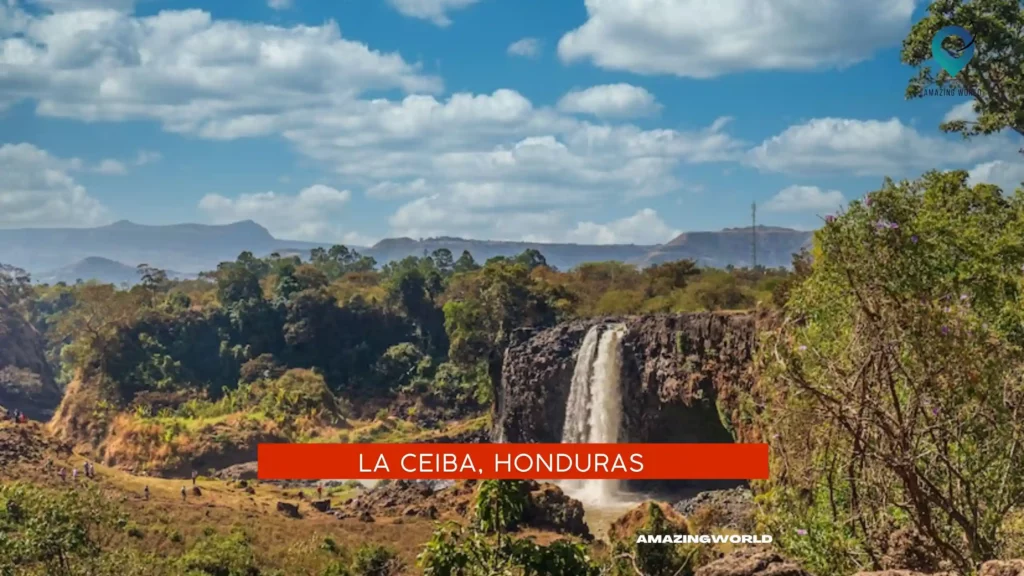
Located on the Caribbean coast of Honduras, La Ceiba is a vibrant city that serves as a gateway to some of the country’s most thrilling outdoor adventures. From hiking and rafting to diving and beach hopping, La Ceiba is a hub for adrenaline seekers looking to explore the natural beauty of Honduras.
Location : La Ceiba is located on the northern coast of Honduras, about 180 kilometers (110 miles) northeast of the capital city of Tegucigalpa.
Known for: La Ceiba is known for its lively atmosphere, stunning beaches, and access to some of the best adventure activities in Honduras. It’s also home to the country’s largest carnival celebration, which takes place every May.
The best mode of transportation: The easiest way to get around La Ceiba is by taxi or bus. Buses are the most affordable option, but taxis offer more flexibility and comfort.
Daily Budget: A daily budget of $30-$50 USD should be sufficient for budget travelers. Mid-range travelers should expect to spend $60-$100 USD per day, while luxury travelers can expect to spend upwards of $150 USD per day.
Culture : La Ceiba has a vibrant cultural scene, with a mix of Afro-Caribbean, Garifuna, and indigenous Honduran influences. The city is home to a number of museums, galleries, and cultural events, such as the May carnival celebration.
Nightlife : La Ceiba has a lively nightlife scene, with a variety of bars, clubs, and live music venues to choose from. The area around Avenida San Isidro is particularly popular for nightlife.
Food : La Ceiba is known for its seafood, which can be found in abundance at the local restaurants and street vendors. Other popular dishes include baleadas (a type of tortilla filled with beans, cheese, and other toppings), and pastelitos (fried meat pies).
Safety measures: While La Ceiba is generally a safe city, it’s important to take precautions such as avoiding walking alone at night and keeping an eye on your belongings. It’s also a good idea to research the safety of the specific areas you plan to visit.
Attractions : Some of the top attractions in La Ceiba include Pico Bonito National Park, Cayos Cochinos Marine Reserve, and the Cangrejal River. The city also has several beautiful beaches, such as Playa de los Tintos and Playa de la Mocuana.
- Bring insect repellent, as mosquitoes and other bugs can be a nuisance in the area.
- If you plan to hike or raft, make sure to bring appropriate gear such as sturdy shoes and a waterproof jacket.
- Learn a few basic phrases in Spanish, as English is not widely spoken in La Ceiba.
17. Flores, Guatemala – Tikal Ruins & Lake Views.
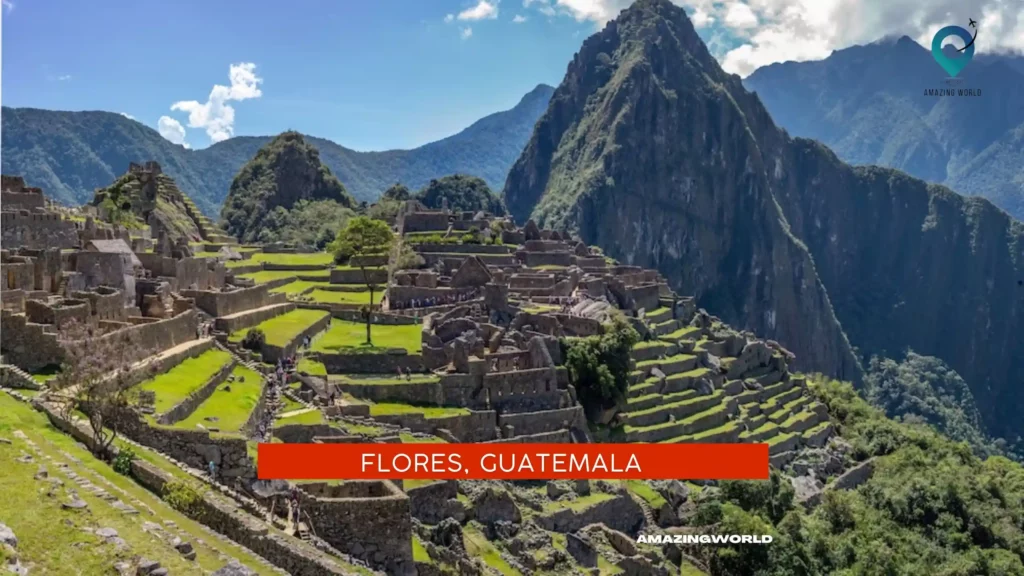
Located in the heart of Guatemala, Flores is a small and charming island town that serves as a gateway to the world-renowned Tikal ruins.
With its picturesque cobblestone streets, colorful buildings, and stunning views of Lake Petén Itzá, Flores is a must-visit destination for any traveler exploring Central America.
Location : Flores is located in the northern region of Guatemala, in the department of Petén.
It is situated on an island in Lake Petén Itzá, which is surrounded by dense jungle and is a short drive away from the Tikal ruins.
Known for: Flores is known for its colonial charm, stunning lake views, and proximity to the Tikal ruins, one of the most important archaeological sites in the world.
It is also a popular destination for outdoor enthusiasts, with opportunities for hiking, kayaking, and wildlife spotting in the surrounding jungle.
The best mode of transportation: The best way to get to Flores is by flying into Mundo Maya International Airport in the nearby city of Santa Elena.
Once in Flores, the best mode of transportation is on foot or by tuk-tuk, as cars are not allowed on the island.
Daily Budget: A daily budget of around $50-70 USD should be sufficient for a comfortable stay in Flores, including accommodations, food, and activities.
Culture : Flores is rich in both Mayan and colonial Spanish history and culture, with many ancient ruins and colonial buildings to explore.
The locals are friendly and welcoming, and visitors can experience traditional Mayan cuisine and customs.
Nightlife : While Flores is not known for its nightlife, there are a few bars and restaurants that offer live music and a laid-back atmosphere for a night out.
Food : Visitors to Flores can enjoy a variety of local and international cuisine, with a focus on traditional Mayan dishes such as tamales and chiles rellenos.
Fresh seafood is also readily available due to the town’s location on the lake.
Safety measures: While Flores is generally a safe destination, travelers should take precautions against pickpocketing and theft.
It is also recommended to use a licensed tour guide when visiting the Tikal ruins to ensure safety and respect for the site’s cultural and environmental significance.
Attractions : The main attraction in Flores is the Tikal ruins, which are a UNESCO World Heritage Site and the largest excavated Mayan ruins in Central America.
Visitors can also explore the island’s charming colonial architecture, take a boat tour of the lake, or hike in the surrounding jungle.
- Be sure to bring bug spray and sunscreen, as the region can be hot and humid with mosquitoes.
- Use a licensed tour guide when visiting Tikal to learn more about the site’s history and cultural significance.
- Consider taking a day trip to nearby Yaxhá ruins or El Remate for more Mayan ruins and jungle adventures.
18. Puerto Viejo, Costa Rica – Afro-Caribbean Culture & Beaches.

Puerto Viejo is a small town located on the southern Caribbean coast of Costa Rica. This laid-back town is known for its Afro-Caribbean culture, beautiful beaches, and abundant wildlife.
It’s a popular destination for solo travelers looking to relax, immerse themselves in a unique culture, and explore the natural beauty of Costa Rica.
Location : Puerto Viejo is located on the southern Caribbean coast of Costa Rica, in the province of Limon.
Known for: Puerto Viejo is known for its Afro-Caribbean culture, which is evident in the local cuisine, music, and traditions.
The town is also famous for its beautiful beaches, which are perfect for surfing, swimming, and sunbathing. The area is home to several wildlife reserves, where visitors can see sloths, monkeys, and exotic birds.
The best mode of transportation: The best way to get around Puerto Viejo is on foot or by bike. The town is small enough to walk around, and there are several bike rental shops in town.
Daily budget: The daily budget for Puerto Viejo can vary depending on your accommodation and food choices.
However, on average, a budget of $50-70 per day should be enough to cover accommodation, food, and activities.
Culture : The Afro-Caribbean culture in Puerto Viejo is a blend of African, European, and indigenous influences.
The locals are friendly and welcoming, and visitors can experience the culture through the food, music, and festivals.
Nightlife : Puerto Viejo has a vibrant nightlife scene, with several bars and clubs that stay open late into the night.
The nightlife is centered around reggae music, and visitors can enjoy live music performances and dance the night away.
Food : The food in Puerto Viejo is a fusion of Afro-Caribbean and Costa Rican cuisine. Visitors can try traditional dishes like rice and beans, plantains, and jerk chicken.
There are also plenty of seafood options, including fresh fish and shrimp.
Safety measures: Puerto Viejo is generally a safe place to visit, but it’s always important to take precautions.
Visitors should avoid walking alone at night, keep their valuables safe, and be aware of their surroundings.
Attractions : The main attractions in Puerto Viejo are the beautiful beaches and wildlife reserves.
Visitors can also take a cultural tour of the town, visit the local markets, and take part in water sports like surfing and snorkeling.
- Don’t forget to pack insect repellent as mosquitoes and other bugs are common in the area.
- The best time to visit Puerto Viejo is between December and April when the weather is dry and sunny.
- If you’re planning to rent a bike, make sure to wear a helmet and follow the local traffic rules.
- Always check the surf conditions before heading out to the beach to ensure your safety.
19. San Pedro, Belize – Scuba Diving & Island Life.
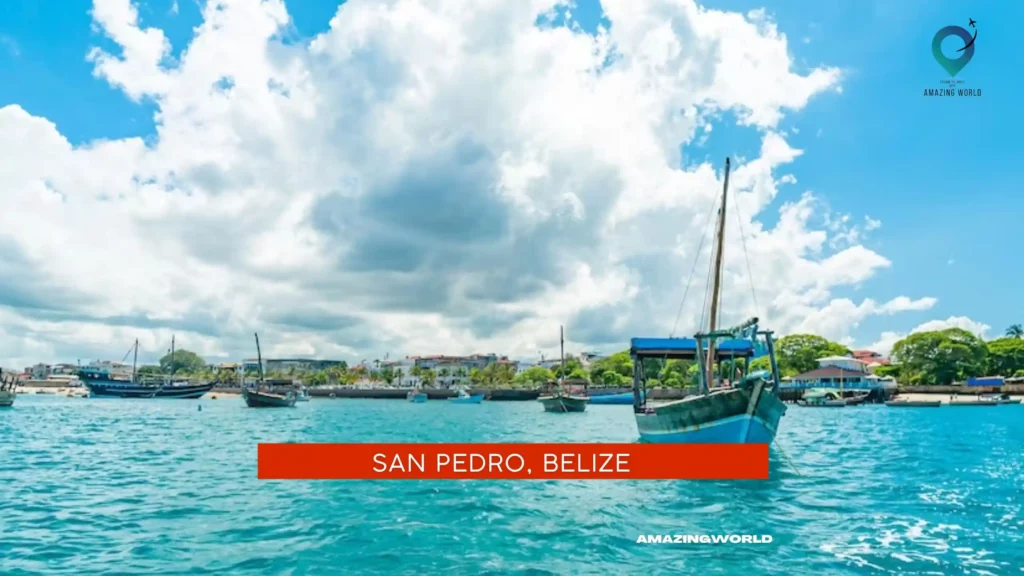
San Pedro is a charming little town situated on the southern part of Ambergris Caye, the largest island in Belize. It is a popular destination for solo travelers seeking an escape to paradise.
With crystal-clear waters, abundant marine life, and a laid-back Caribbean atmosphere, San Pedro offers a perfect mix of adventure and relaxation.
Location : San Pedro is located on Ambergris Caye, which is situated off the northeastern coast of Belize in the Caribbean Sea.
Known for : San Pedro is known for its incredible scuba diving and snorkeling opportunities. The town has a relaxed vibe with stunning beaches, friendly locals, and an abundance of seafood.
The Best Mode of Transportation : The best mode of transportation in San Pedro is by golf cart, bicycle, or on foot, as cars are not allowed on the island.
Daily Budget: The daily budget in San Pedro ranges from $50 to $100, depending on the type of accommodation and activities you choose.
Culture : San Pedro has a unique blend of cultures, including Mayan, Spanish, and Afro-Caribbean. The locals are friendly and welcoming, and the town has a laid-back atmosphere.
Nightlife : San Pedro has a vibrant nightlife scene with numerous beach bars, nightclubs, and restaurants.
Food : The food in San Pedro is a mix of traditional Belizean cuisine and Caribbean flavors, with seafood being a staple.
Safety Measures: San Pedro is generally a safe destination for solo travelers, but it is always important to be aware of your surroundings and take necessary safety precautions.
Attractions : Some of the top attractions in San Pedro include scuba diving, snorkeling, fishing, exploring the town’s colorful street art, and visiting the nearby Hol Chan Marine Reserve.
Some Travel Tips: It is recommended to book your accommodation and activities in advance, especially during peak travel season.
Also, make sure to pack sunscreen, mosquito repellent, and comfortable walking shoes.
20. Utila, Honduras – Dive Certification & Beaches.

Utila is a small Caribbean Island off the coast of Honduras, known for its stunning beaches and exceptional scuba diving opportunities.
With its laid-back vibe and affordable prices, Utila has become a popular destination for travelers seeking a tropical escape.
Location : Utila is located in the Bay Islands of Honduras, about 18 miles from the mainland. It is the smallest of the three major islands, with a total area of just 11 square miles.
Known for: Utila is best known for its scuba diving, with numerous dive shops offering courses and trips to explore the island’s stunning coral reefs.
The island also boasts beautiful beaches, clear blue waters, and a relaxed atmosphere.
The best mode of transportation: As a small island, walking or biking is the easiest way to get around Utila. You can also rent a scooter or take a tuk-tuk to explore the island.
Daily Budget: Utila is a budget-friendly destination, with affordable accommodations and dining options. A daily budget of $30-50 USD is reasonable for a solo traveler.
Culture : The culture of Utila is influenced by its Afro-Caribbean heritage, with a mix of English, Spanish, and Creole spoken on the island.
The locals are friendly and welcoming, and there is a laid-back vibe that reflects the island’s relaxed lifestyle.
Nightlife : The nightlife in Utila is lively, with a variety of bars and restaurants to choose from.
The island is particularly popular with backpackers, and there are plenty of opportunities to meet fellow travelers and socialize.
Food : Utila offers a range of dining options, from street food vendors to upscale restaurants. Seafood is a particular specialty, with fresh catches of the day served up in many eateries.
Be sure to try the island’s signature dish, baleadas, which are tortillas filled with beans, cheese, and other toppings.
Safety measures: Utila is generally a safe destination, but it is still important to take precautions such as avoiding walking alone at night and keeping your valuables secure.
It is also recommended to use a reputable dive shop for scuba diving activities.
Attractions : Aside from scuba diving and relaxing on the beach, Utila also offers other attractions such as kayaking, snorkeling, and hiking.
You can also visit the island’s small museum to learn more about its history and culture.
- Utila is known for its affordable scuba diving courses, so it’s a great place to get certified.
- Be sure to pack mosquito repellent and sunscreen, as the island can be quite hot and humid.
- If you’re traveling during peak season (December-January), be sure to book your accommodations and activities in advance, as the island can get busy.
21. Masaya, Nicaragua – Artisan Market & Volcanic Lake.
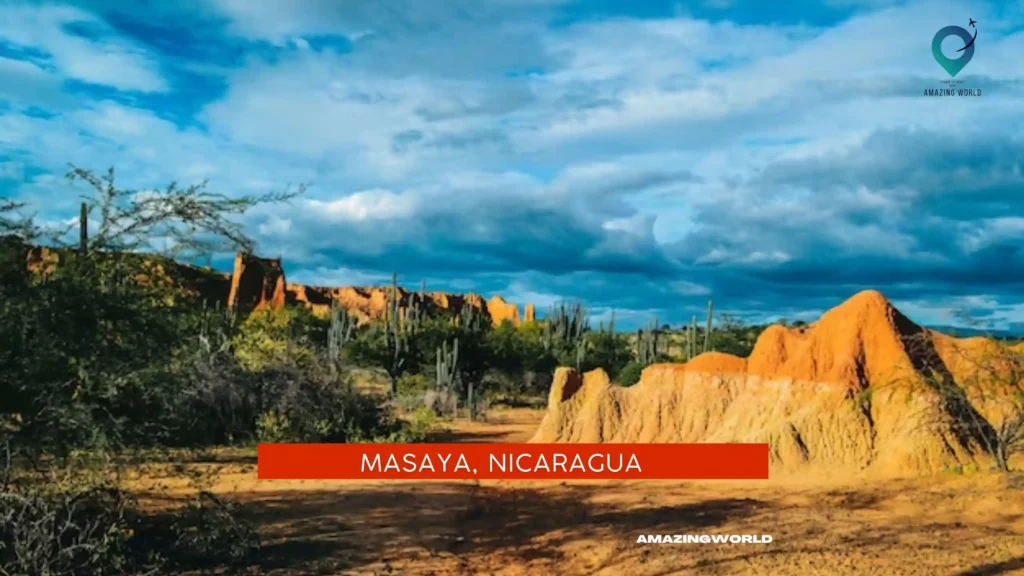
Masaya, a city in Nicaragua, is a hidden gem for travelers who want to explore the country’s cultural heritage and natural beauty. Known for its vibrant artisan market and stunning volcanic lake, Masaya offers a unique blend of history, tradition, and adventure.
Masaya is located in the western part of Nicaragua, about 14 miles southeast of the capital city of Managua. The city is situated at the foot of the Masaya Volcano National Park, which is home to two active volcanoes.
Masaya is renowned for its colorful and bustling artisan market, where visitors can find a wide variety of handcrafted goods such as pottery, textiles, and souvenirs. The city is also known for the Masaya Volcano National Park, which offers stunning views of the smoking crater and a picturesque volcanic lake.
The best mode of transportation:
The best way to explore Masaya is on foot, as many of the city’s attractions are located within walking distance of each other. Taxis are also available for those who want to travel further afield, and local buses connect Masaya to other cities and towns in Nicaragua.
Daily Budget:
Masaya is an affordable destination for travelers, with a daily budget of around $30-40 USD for basic accommodations, food, and transportation. Prices may vary depending on the season and level of comfort desired.
Masaya has a rich cultural heritage that is deeply rooted in indigenous traditions and Spanish colonial history. Visitors can experience local culture by attending traditional festivals and events, such as the Feast of San Jeronimo or the Day of the Dead celebrations.
While Masaya is not known for its nightlife, there are a few bars and restaurants where visitors can enjoy a drink or meal in the evening. Some local establishments offer live music or cultural performances on weekends.
Masaya’s cuisine is a reflection of the region’s diverse cultural influences, with a mix of Spanish, indigenous, and Afro-Caribbean flavors. Visitors can try traditional dishes such as gallo pinto (rice and beans) or vigorón (pork rinds and yucca) at local eateries and street stalls.
Safety measures:
While Masaya is generally a safe destination, travelers should take normal precautions to ensure their safety. It is recommended to avoid walking alone at night and to keep valuables secure while in public.
Attractions:
In addition to the artisan market and volcano national park, Masaya has several other attractions that are worth visiting. These include the Masaya Cathedral, the Museum of Folklore, and the La Laguna de Masaya nature reserve.
Wear comfortable shoes for walking on uneven terrain in the national park.
Bargaining is expected at the artisan market, so don’t be afraid to haggle for a good price.
Bring insect repellent to protect against mosquitoes and other bugs.
If visiting the volcano at night, dress warmly as temperatures can be cool at higher elevations.
22. Quetzaltenango, Guatemala – Mountain Views & Hot Springs.
Quetzaltenango, or “Xela” for short, is a highland city in western Guatemala that offers a unique blend of stunning mountain views, cultural immersion, and natural hot springs.
This city is the second-largest in Guatemala, but still maintains a laid-back, authentic feel that makes it a favorite among travelers seeking to escape the hustle and bustle of more touristy destinations.
Location: Quetzaltenango is located in the western highlands of Guatemala, about 120 km from Guatemala City.
Known for : Quetzaltenango is known for its stunning mountain scenery, indigenous culture, and natural hot springs. It is also a hub for Spanish language schools and volunteer opportunities.
The best mode of transportation: The best mode of transportation in Quetzaltenango is on foot or by taxi. The city is quite walkable, and taxis are plentiful and affordable.
Daily Budget : A daily budget of around $30-40 USD is sufficient to cover accommodation, food, and transportation.
Culture : Quetzaltenango has a strong indigenous culture, and many locals still wear traditional clothing.
The city is home to several indigenous communities, and visitors can experience traditional music, dance, and cuisine.
Nightlife : The nightlife in Quetzaltenango is relatively low-key, but there are still plenty of options for those looking to have a good time.
There are a few bars and clubs in the city center that are popular with locals and travelers alike.
Food : Quetzaltenango is known for its delicious street food, including tamales, chuchitos, and tortillas. There are also plenty of restaurants serving international cuisine, as well as vegetarian and vegan options.
Safety measures: Quetzaltenango is generally safe for travelers, but it’s always a good idea to take basic safety precautions, such as avoiding walking alone at night and keeping valuables out of sight.
Attractions : Some of the top attractions in Quetzaltenango include the Fuentes Georginas hot springs, the Santa Maria volcano, and the central park, which is home to the stunning Catedral del Espiritu Santo.
- Take a Spanish class: Quetzaltenango is a popular destination for learning Spanish, and there are many reputable language schools in the city.
- Bring warm clothing: Quetzaltenango is located in the highlands and can be quite chilly, especially at night.
- Visit the local markets: The markets in Quetzaltenango are a great place to experience local culture and pick up souvenirs.
23. San Cristobal de las Casas, Mexico – Indigenous Culture & Colonial Architecture.
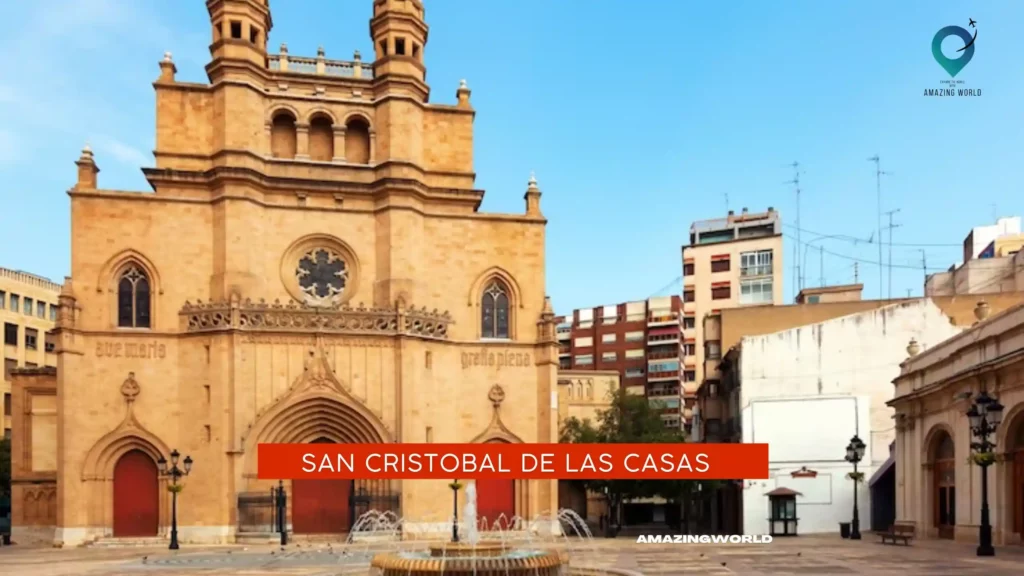
San Cristobal de las Casas is a charming colonial city located in the southern state of Chiapas, Mexico. This city is surrounded by picturesque mountains and has a rich indigenous culture.
Its cobblestone streets, colorful buildings, and colonial architecture make it a popular destination for travelers seeking cultural experiences.
Location : San Cristobal de las Casas is located in the southern state of Chiapas, Mexico, approximately 1,970 meters above sea level.
Known for: The city is known for its indigenous culture, colonial architecture, vibrant markets, and stunning natural surroundings.
The best mode of transportation: The best way to explore San Cristobal de las Casas is on foot, as many of the attractions are within walking distance of each other.
Taxis and colectivos are also available for longer distances.
Daily budget: A daily budget of $30-$50 USD is reasonable for accommodation, food, and transportation.
Culture : San Cristobal de las Casas has a rich indigenous culture that can be seen in its handicrafts, traditional clothing, and music.
The city is home to many indigenous communities, including the Tzotzil and Tzeltal peoples.
Nightlife : The nightlife in San Cristobal de las Casas is relatively low-key, with many restaurants and bars closing early.
However, there are a few options for live music and dancing.
Food : San Cristobal de las Casas has a diverse culinary scene, with a mix of traditional Mexican and international cuisine. Local specialties include tamales, chalupas, and pozole.
Safety measures: While San Cristobal de las Casas is generally safe, it is still important to take precautions such as avoiding walking alone at night and being aware of your surroundings.
Attractions : Some of the top attractions in San Cristobal de las Casas include the stunning Sumidero Canyon, the colorful and bustling Mercado de Santo Domingo, and the beautiful San Cristobal Cathedral.
Some travel tips: It is recommended to bring warm clothing, as temperatures can drop significantly at night.
Additionally, be sure to try the local coffee and chocolate, which are both delicious and widely produced in the region.
24. Manuel Antonio, Costa Rica – National Park & Wildlife.
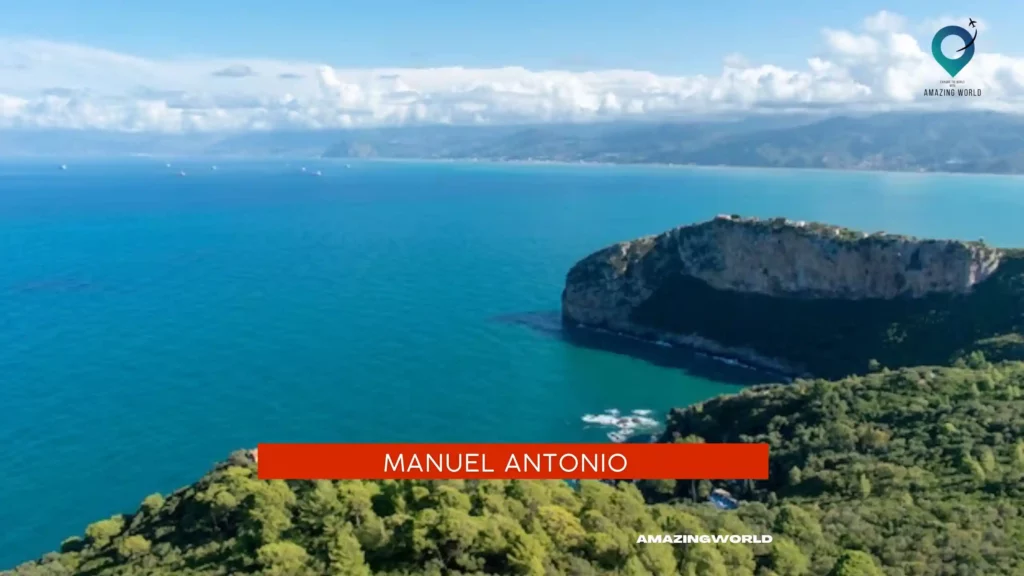
Manuel Antonio is a small yet stunning national park located on the Pacific coast of Costa Rica. This destination is known for its abundant wildlife, pristine beaches, and lush rainforests.
Whether you’re a nature lover, beach bum, or adventure seeker, Manuel Antonio has something for everyone.
Location : Manuel Antonio is situated in the province of Puntarenas on the central Pacific coast of Costa Rica.
Known for: Manuel Antonio is known for its spectacular national park, which boasts a diverse array of flora and fauna. The park is home to over 100 species of mammals and over 180 species of birds.
Visitors can also enjoy the park’s stunning beaches, which are perfect for swimming, surfing, and sunbathing.
The best mode of transportation: The most convenient way to get to Manuel Antonio is by taking a direct bus from San Jose or Quepos.
Once you’re in the town, the best mode of transportation is by walking or taking a taxi.
Daily Budget: A daily budget for Manuel Antonio can range from $50-$150 depending on your travel style.
Accommodations and food can be quite expensive, but there are budget options available as well.
Culture : The local culture in Manuel Antonio is influenced by the indigenous people who have lived in the area for centuries.
Visitors can experience the unique traditions and customs of the locals through various cultural activities and events.
Nightlife : While Manuel Antonio is not known for its nightlife, visitors can still enjoy a few bars and restaurants that offer live music and drinks.
Food : Manuel Antonio offers a range of dining options that cater to various tastes and budgets. Visitors can enjoy traditional Costa Rican cuisine, fresh seafood, and international dishes.
Safety measures: Manuel Antonio is a relatively safe destination, but visitors should still exercise caution and be aware of their surroundings.
Avoid walking alone at night, and be sure to secure your belongings.
Attractions : The main attraction in Manuel Antonio is the national park, where visitors can see an abundance of wildlife, hike through the rainforest, and relax on the beach.
Other attractions include the nearby town of Quepos, which offers various cultural and historical landmarks, as well as adventure activities like zip-lining and white-water rafting.
- Make sure to bring comfortable walking shoes, sunscreen, and insect repellent for your park visit
- Plan your visit during the dry season (December-April) for the best weather conditions
- Book accommodations and park tours in advance to avoid disappointment
- Respect the local wildlife and avoid feeding or touching the animals.
25. Suchitoto, El Salvador – Colonial Charm & Lake Views.
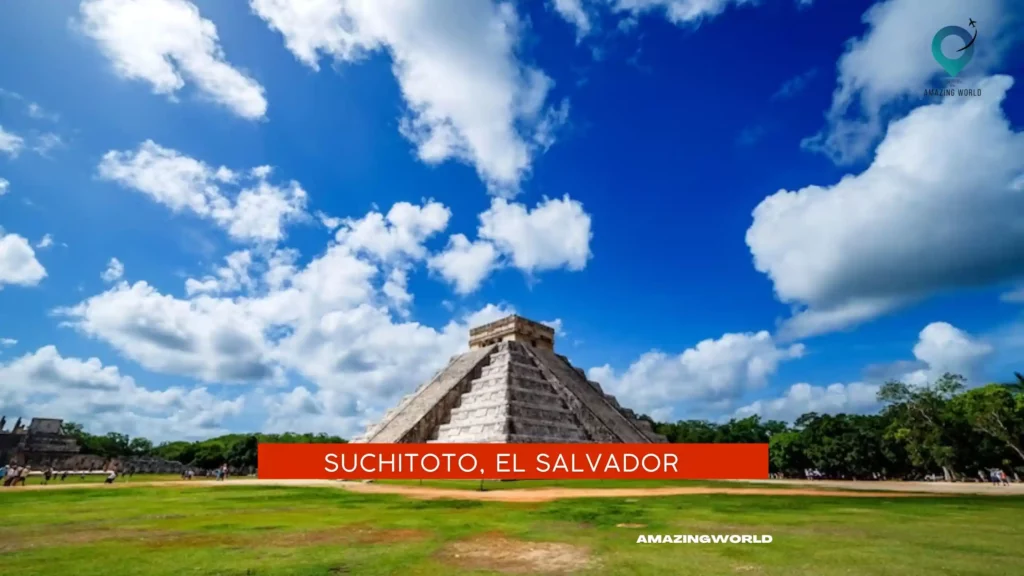
Welcome to Suchitoto, a charming colonial town located in the heart of El Salvador. Nestled on the banks of Lake Suchitlán, this town boasts stunning views of the surrounding mountains and water.
It is a perfect destination for solo travelers looking to immerse themselves in the local culture, relax by the lake, and explore the historic town.
Location : Suchitoto is located in the north-central region of El Salvador, approximately 47 kilometers northeast of the capital city of San Salvador.
Known for: Suchitoto is known for its preserved colonial architecture, cobbled streets, and vibrant art scene. The town is also famous for its proximity to the beautiful Lake Suchitlán and the Parque Nacional Los Volcanes, making it an ideal spot for outdoor enthusiasts.
The best mode of transportation: The best way to get around Suchitoto is on foot. The town is compact, and most attractions are within walking distance. Taxis and buses are also available for longer trips outside the town.
Daily Budget : Suchitoto is a budget-friendly destination, and you can expect to spend around $30-$40 per day on food, accommodation, and activities.
Culture : Suchitoto is known for its rich cultural heritage, which is reflected in the town’s architecture, art, and music.
Visitors can immerse themselves in the local culture by attending the town’s many festivals, such as the Fiesta de San Juan, which takes place in late June.
Nightlife : Suchitoto is a peaceful town, and the nightlife scene is relatively quiet. However, there are a few bars and restaurants where you can enjoy a drink or two with a view of the lake.
Food : Suchitoto offers a range of local cuisine, including pupusas, tamales, and seafood dishes.
Visitors can also find international cuisine, including Italian and Mexican, in some of the town’s restaurants.
Safety measures : Suchitoto is a safe destination for travelers, but it’s always a good idea to take general safety precautions, such as avoiding walking alone at night and keeping an eye on your belongings.
Attractions : Some of the top attractions in Suchitoto include the Santa Lucia Church, the Artisan Market, the Centro Arte para la Paz, and the San Juan de Dios Square.
Visitors can also enjoy activities such as boat tours on Lake Suchitlán and hiking in the nearby Los Volcanes National Park.
- Make sure to bring cash, as not all establishments accept credit cards.
- Visit the Artisan Market for unique souvenirs and handmade crafts.
- Take a boat tour of Lake Suchitlán for stunning views of the surrounding mountains and water.
- Wear comfortable shoes, as the town’s streets can be uneven and hilly.
26. Rio Dulce, Guatemala – Jungle River & Waterfalls.
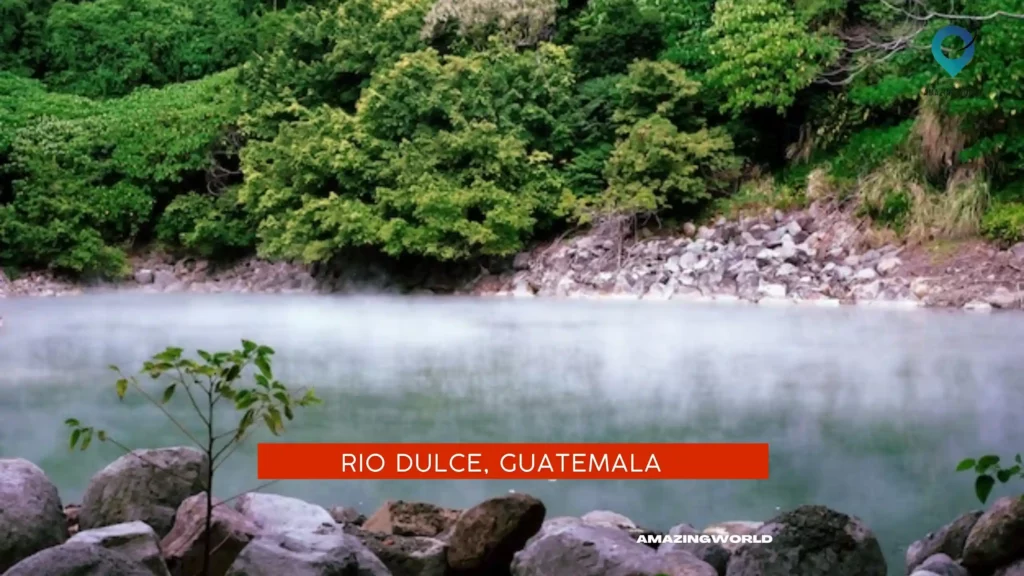
Rio Dulce, located in eastern Guatemala, is a stunning destination known for its lush jungle landscapes, meandering river, and cascading waterfalls.
The area is rich in natural beauty and diverse wildlife, making it a popular destination for nature enthusiasts and adventure seekers alike.
Location : Rio Dulce is situated in the Izabal Department of Guatemala, close to the Caribbean coast. It is located about 60 kilometers east of the city of Puerto Barrios and about 240 kilometers northeast of Guatemala City.
Known for: Rio Dulce is known for its picturesque river, which winds its way through lush rainforest, providing an idyllic backdrop for boat tours, kayaking, and fishing.
The area is also home to several impressive waterfalls, including the impressive 14-meter-high waterfall at the Rio Dulce National Park.
The best mode of transportation: The best way to explore Rio Dulce is by boat, as many of the area’s most scenic spots are only accessible by water.
Alternatively, you can rent a car or take a bus to explore the surrounding areas.
Daily Budget: The daily budget for Rio Dulce ranges from $25 to $50 USD, depending on your accommodation and food choices.
Budget accommodations and local eateries are available, as well as more upscale options for those looking for a more luxurious experience.
Culture : Rio Dulce is home to a diverse mix of cultures, including the indigenous Q’eqchi’ Maya people, Garifuna, and Ladinos.
Visitors can experience traditional music, dance, and food while learning about the area’s unique cultural heritage.
Nightlife : Rio Dulce is a relatively quiet destination, with a focus on nature and outdoor activities.
While there are some bars and restaurants in the area, the nightlife is generally limited to low-key evening entertainment.
Food :The local cuisine in Rio Dulce is a blend of indigenous and Caribbean flavors, with fresh seafood, plantains, and coconut featuring prominently in many dishes.
Traditional Guatemalan cuisine is also available, including hearty stews and soups.
Safety measures: While Rio Dulce is generally considered safe, it’s always important to take precautions when traveling in unfamiliar areas.
Avoid carrying large sums of cash, stay in well-lit areas at night, and be aware of your surroundings.
Attractions : Some of the top attractions in Rio Dulce include the Rio Dulce National Park, the waterfalls at Finca Paraiso, and the historic Castillo de San Felipe, a 17th-century fort that served as a stronghold against pirates.
- Bring plenty of bug spray and sunscreen, as the area can be quite humid and buggy.
- Book a boat tour to explore the river and see some of the area’s hidden gems.
- Consider visiting during the off-season to avoid crowds and save money on accommodations.
- If you’re interested in hiking, bring sturdy shoes and prepare for some steep climbs to reach some of the waterfalls and scenic viewpoints.
27. Placencia, Belize – Beaches & Relaxation.

Placencia, located on the southeastern coast of Belize, is a small town known for its laid-back Caribbean vibe and stunning beaches.
It is a perfect destination for those seeking relaxation, water activities, and some local charm.
Location : Placencia is located in the Stann Creek District of Belize, on a narrow 16-mile-long peninsula that separates the Caribbean Sea from the Placencia Lagoon.
Known for: Placencia is known for its pristine white sandy beaches, crystal clear waters, and coral reefs, making it an ideal destination for water activities such as snorkeling, diving, and fishing.
The town is also home to several bars and restaurants serving up delicious seafood, as well as a vibrant local arts scene.
The best mode of transportation: The best way to get around Placencia is by foot, bike, or golf cart.
The town is small and easily walkable, but renting a bike or golf cart can give you more freedom to explore the surrounding areas.
Daily Budget: A daily budget for Placencia can vary depending on your travel style, but on average, you can expect to spend around $50-100 USD per day.
This includes accommodation, food, and activities.
Culture : Placencia has a rich mix of cultures, including the Garifuna people who have their own unique language, music, and dance.
Visitors can experience the vibrant local culture through traditional drumming and dancing performances, as well as exploring the local arts and crafts scene.
Nightlife : The nightlife in Placencia is relatively low-key, with most bars and restaurants closing early.
However, there are a few places to enjoy a drink and some live music, especially on weekends.
Food : Placencia is known for its seafood, and there are plenty of restaurants serving up fresh catches of the day. Other local specialties include rice and beans, fry jacks, and garnaches.
Safety measures: Placencia is generally a safe place to visit, but it is always important to take precautions such as not leaving valuables unattended and being aware of your surroundings, especially at night.
Attractions : The main attraction in Placencia is the beach, where visitors can sunbathe, swim, and enjoy water sports.
Other popular activities include snorkeling and diving in the nearby coral reefs, visiting the local Mayan ruins, and exploring the Cockscomb Basin Wildlife Sanctuary.
- Pack light, as the weather is warm and casual attire is suitable
- Make sure to bring sunscreen and insect repellent
- Book tours and activities in advance to ensure availability
- Try the local seafood, it’s delicious!
- Take a water taxi to nearby islands for even more beach and snorkeling options.
28. Samara, Costa Rica – Surfing & Pura Vida Lifestyle.
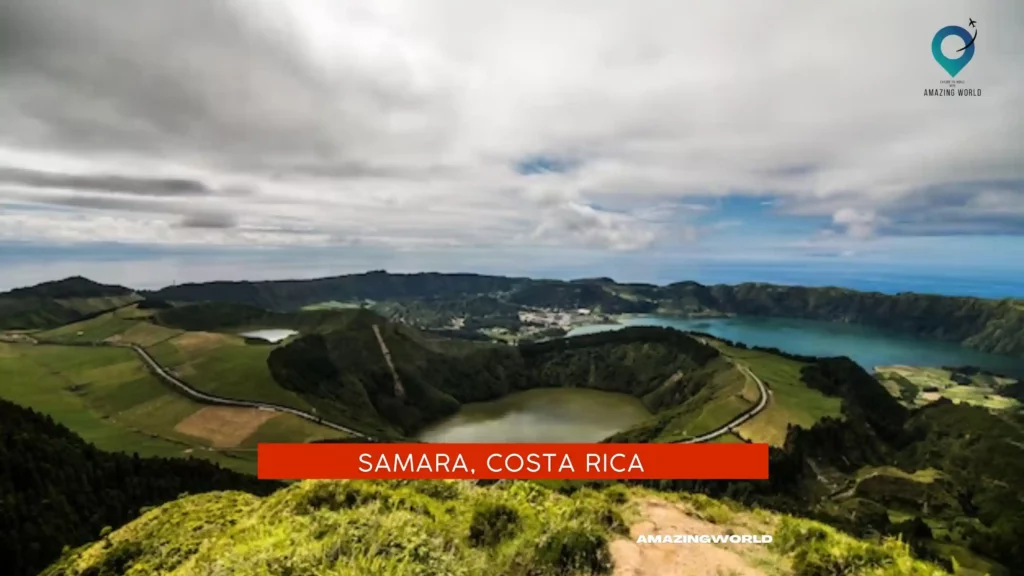
Located on the Pacific Coast of Costa Rica, Samara is a picturesque beach town known for its laid-back Pura Vida lifestyle and world-class surfing.
With its stunning beaches, excellent surfing conditions, and relaxed vibe, Samara has become a popular destination for surfers, backpackers, and travelers looking to soak up some sun and experience the local culture.
Location : Samara is located on the west coast of Costa Rica, in the province of Guanacaste, about 35 km south of Nicoya.
Known for: Samara is known for its beautiful beaches, excellent surfing conditions, and relaxed Pura Vida lifestyle.
The town is also home to a vibrant local community, with a variety of restaurants, cafes, and shops selling locally made crafts and souvenirs.
The best mode of transportation : The easiest way to get to Samara is by car, although there are also regular bus services from nearby towns and cities.
Once you’re in town, it’s easy to get around on foot or by bicycle, and there are plenty of taxis available if you need them.
Daily Budget : Samara is a relatively affordable destination, with plenty of budget-friendly accommodation options, restaurants, and activities.
Expect to spend around $30-50 per day on food and accommodation, with additional costs for activities like surfing lessons and tours.
Culture : Samara has a laid-back, beach town vibe, with a strong emphasis on the Pura Vida lifestyle.
The town is home to a mix of locals and expats, and there is a strong sense of community and hospitality here.
Nightlife : Samara is not known for its nightlife, but there are a few bars and clubs where you can enjoy a drink or two. Most of the action in Samara takes place during the day, with plenty of outdoor activities and beach parties to keep you busy.
Food : Samara is home to a wide range of restaurants and cafes serving up local and international cuisine.
Some popular dishes to try include ceviche, fresh seafood, and traditional Costa Rican rice and beans.
Safety measures : Samara is generally a safe destination for travelers, but it’s always a good idea to take basic safety precautions like locking up valuables and staying aware of your surroundings, especially after dark.
Attractions : The main attraction in Samara is the beach, which stretches for several kilometers and is perfect for swimming, sunbathing, and surfing.
Other popular activities in Samara include hiking, horseback riding, and snorkeling.
- Be sure to pack plenty of sunscreens and insect repellent, as the sun and bugs can be intense in Samara.
- If you’re planning to surf, consider taking a lesson with one of the local surf schools to get the most out of your experience.
- Take some time to explore the nearby town of Nosara, which is known for its yoga and wellness scene.
29. Rojo Lagoon, Guatemala – Hidden Gem & Hiking Trails.
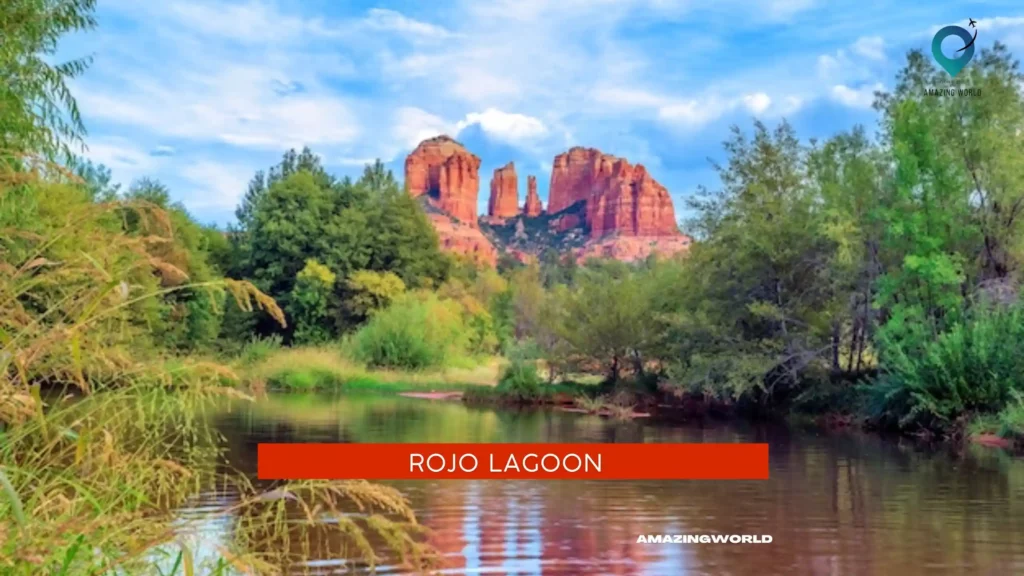
Rojo Lagoon is a hidden gem in Guatemala known for its crystal-clear waters, scenic hiking trails, and breathtaking views.
It is located in the municipality of Santa Cruz La Laguna, in the Sololá Department, and is a popular destination for nature enthusiasts.
Location : Rojo Lagoon is located in the highlands of Guatemala, approximately 3 hours by car from Guatemala City.
It is situated in the municipality of Santa Cruz La Laguna, on the shores of Lake Atitlán.
Known for: Rojo Lagoon is known for its pristine waters, which are fed by natural springs and surrounded by lush vegetation.
The lagoon is also famous for its hiking trails, which offer stunning views of Lake Atitlán and the surrounding volcanoes.
The best mode of transportation : The best way to reach Rojo Lagoon is by car or by hiring a private shuttle from Guatemala City or Antigua.
Alternatively, you can take a public bus to Panajachel and then a boat to Santa Cruz La Laguna, followed by a short hike to the lagoon.
Daily Budget: The daily budget for Rojo Lagoon will vary depending on the type of accommodation you choose and your preferred activities.
Budget options include camping, hostels, and guesthouses, while mid-range and luxury options are also available.
Culture : Rojo Lagoon is located in an indigenous community, and visitors are encouraged to respect the local culture and traditions. Traditional Mayan textiles and handicrafts are available for purchase in the nearby village.
Nightlife : Rojo Lagoon is a quiet and peaceful destination, with limited nightlife options. However, there are several bars and restaurants in the nearby village of Santa Cruz La Laguna.
Food : Traditional Guatemalan cuisine is available at the local restaurants near Rojo Lagoon, with fresh fish and seafood being a specialty. Vegetarian and vegan options are also available.
Safety measures: Visitors should be aware of the high altitude and take precautions to prevent altitude sickness.
It is also important to stay hydrated and wear sunscreen, as the sun can be intense at this altitude.
Attractions :
The main attraction at Rojo Lagoon is the crystal-clear water, which is perfect for swimming and snorkeling.
There are also several hiking trails in the area, which offer stunning views of the lake and the surrounding volcanoes.
- Bring comfortable shoes for hiking
- Pack warm clothing for the high altitude
- Respect the local culture and traditions
- Bring sunscreen and insect repellent
- Stay hydrated and be mindful of altitude sickness symptoms.
How much did you like Our detailed 25 Best Destinations in North America for Solo Travelers ? Review Also, please share these Blogs with your friends on social media.
Recommended
- Best Countries to Visit as Solo Travelers
- 25 Best Countries to Visit as Solo Travelers in 2023
- Best Places In Asia for Solo Travelers
- Best Destinations in Africa for Solo Travelers
- Best Destinations on Caribbean Island
- Best Destinations in North America
Best Destinations in Central America Locations
Best Destinations in Central America FAQ’S
What is the best time of year to visit central america.
The dry season, from December to April, is generally the best time to visit Central America.
Is Central America safe for tourists?
Central America is generally safe for tourists, but it is important to take precautions and be aware of your surroundings.
What are the must-see attractions in Central America?
Some of the must-see attractions in Central America include the Mayan ruins, beaches, volcanoes, jungles, and colonial cities.
What are the best activities to do in Central America?
Some of the best activities to do in Central America include hiking, surfing, snorkeling, scuba diving, zip-lining, and exploring the local culture and cuisine.
What is the currency used in Central America?
The currency used in Central America varies by country, but the most commonly used currencies are the US dollar and the local currency.
Do I need a visa to travel to Central America?
The visa requirements for Central America vary by country and your country of origin. It is best to check with the embassy or consulate of the country you plan to visit for specific visa requirements.
What is the official language spoken in Central America?
The official language spoken in Central America varies by country, but the most commonly spoken language is Spanish.
How do I get around Central America?
The best way to get around Central America is by bus, shuttle, or taxi. Domestic flights are also available, but they can be more expensive.
What is the cost of living in Central America?
The cost of living in Central America varies by country and region, but it is generally lower than in the United States or Europe. The cost of food, accommodations, and transportation is relatively affordable.

Meet David Hoper, a passionate travel Blog writer with 7+ years of experience in travel content. Through his exemplary storytelling and engaging narratives, he shares his experiences and brings destinations to life. With a keen eye for detail and a love for exploration, he has cultivated a diverse portfolio of travel blogs that inspire and inform readers worldwide.
In this article:

Post written by: David Hoper
The tips you shared on packing light and efficiently are gold! I always struggle with over-packing, but I feel better prepared for my next trip after reading this.
Leave a Reply
Your email address will not be published. Required fields are marked *
Save my name, email, and website in this browser for the next time I comment.

United states Incline Beach – 2024 Know Before You Go
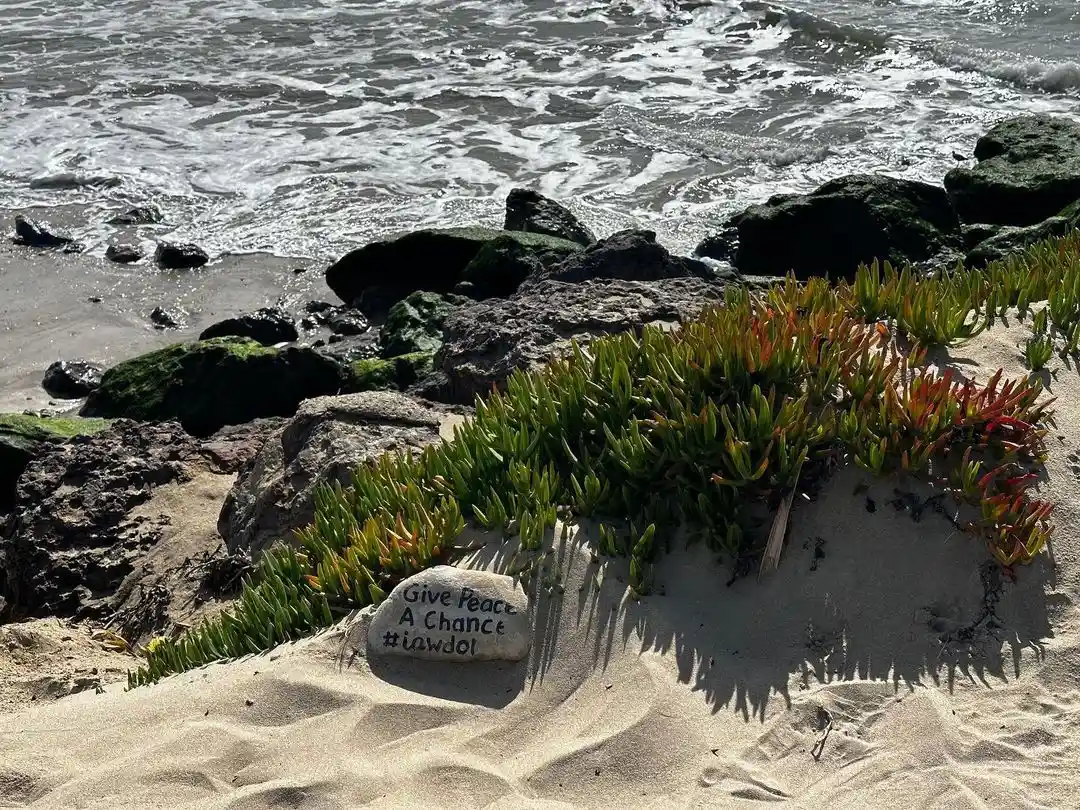
- April 19, 2023
United states Harbor Cove Beach: Best Destination for Families, Pet Lovers
Our latest instagram posts, @amazingworld.travel8.
Solo Female Travel in Central America: A Complete Guide
10/18/2022 by Emily Becker 2 Comments
This post was written by Emily Becker, a Mexico-based freelance writer for BMTM.
If I had a dollar for every time someone told me it wasn’t a good idea to travel alone in Central America… yikes! I know there are some valid concerns about certain parts of the region, but there are plenty of places that are great for solo female travel in Central America.
If the jungles of Costa Rica, the lakes of Guatemala, and the gorgeous beaches of Panama have been on your mind, this guide will give you the tools you need to start planning your solo adventure.
Table of Contents
The Best Destinations for Solo Female Travel in Central America
1. costa rica.
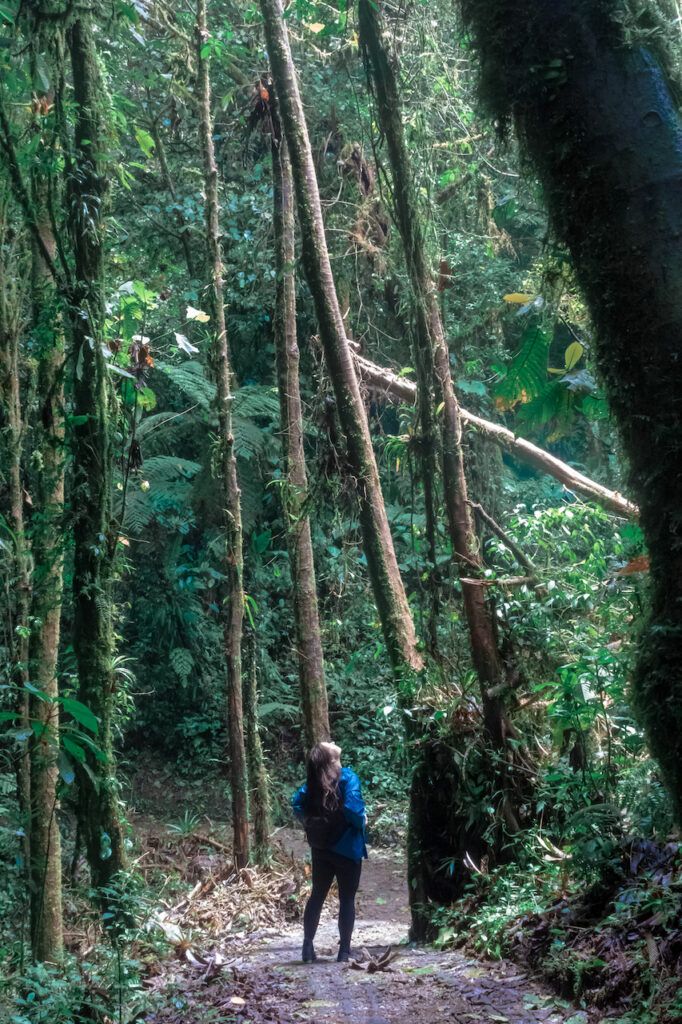
Costa Rica is one of the best destinations for solo female travelers in all of Latin America, in my opinion. The public transportation system works smoothly, making it easier to get from place to place on the bus. There’s little violent crime countrywide, and even lower rates of violent crime against foreigners (not to say it doesn’t happen). Overall, Costa Rica is my number one pick for solo female travel in Central America due to overall safety and ease.
There’s so much to do and see in Costa Rica, whether you’re visiting for a week, two weeks or a month. Whether you want to check out the waterfalls, spend the day at the beach, or climb a volcano, there’s an adventure waiting for you there.
A few places in Costa Rica that I think are particularly ideal for solo female travelers are Uvita , Monteverde , and La Fortuna .
2. Guatemala
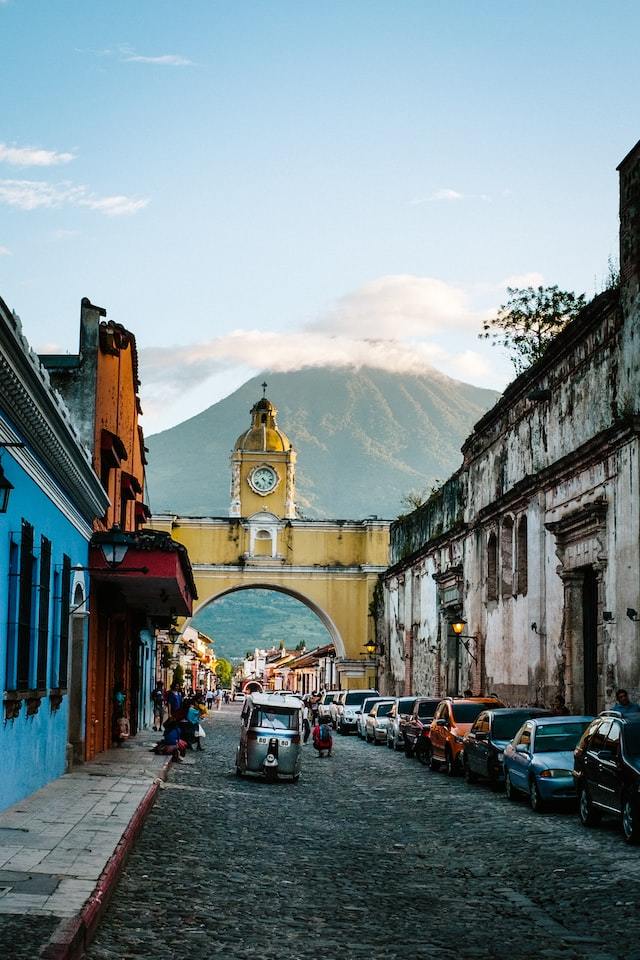
Guatemala is another destination that exceeded my expectations with its beauty and ease of travel. Granted, the public transportation system there varies from place to place, and the buses can be unpredictable at times, but I think part of the thrill of traveling through Guatemala is having the experience of riding in a tricked-out US school bus.
Unlike Costa Rica, not as many people in Guatemala speak English, so traveling solo here is much easier if you speak at least some Spanish.
The country also has a long and complex history of civil war and unrest, which impacts its overall safety today. Although there are some parts (particularly in big cities) that are a bit unstable, violent crime against foreigners is quite infrequent. (Just like any destination, there are plenty of things you can do to keep safe, some of which I’ll touch on later, so stay tuned!)
Some highlights of Guatemala are Lake Atitlán (my absolute favorite), Antigua, the Tikal ruins, Flores, and Semuc Champey (a turquoise river). Antigua is a great base, because it’s close to Lake Atitlán and the Fuentes Georginas hot springs. Another stellar base is Flores, a cute beach town that makes a great launching point for the Tikal ruins.
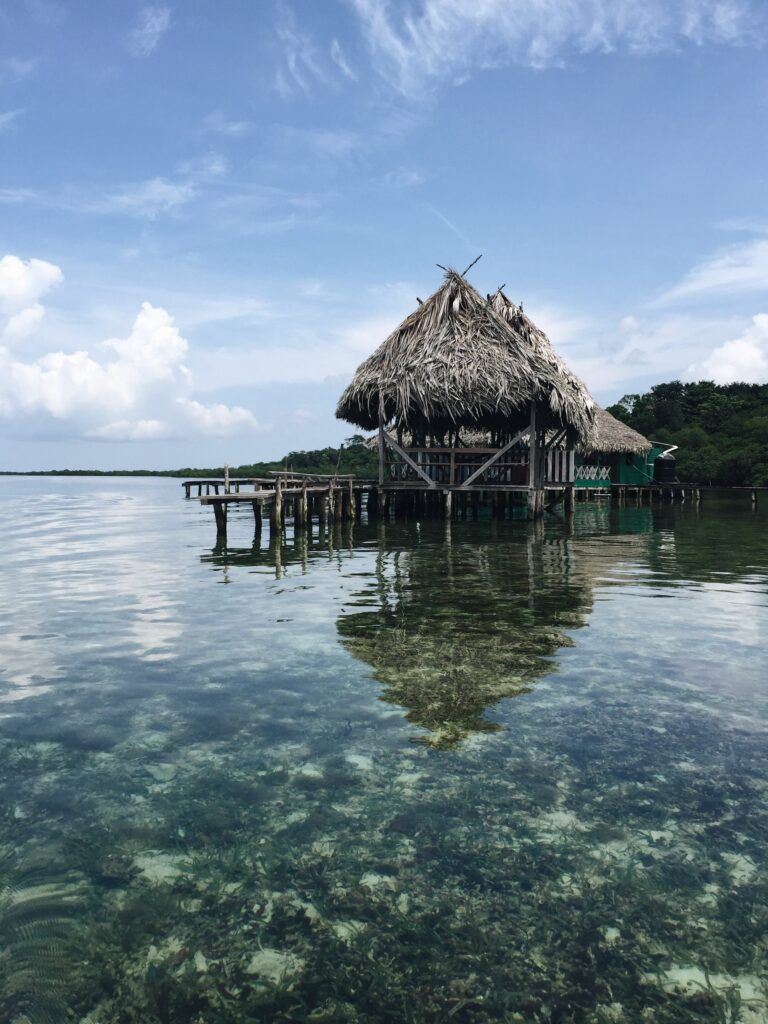
Home to stunning mountain landscapes, gushing rivers flowing into powerful waterfalls, and some of the best beaches in the region, Panama definitely deserves a spot on your Central America itinerary.
As far as safety for solo female travelers, Panama is pretty similar to Costa Rica. The level of violent crime against tourists is very low, but petty theft is common, especially in big cities. The biggest safety concern in Panama is drug trafficking, which is concentrated mostly in the Darién Province on the Caribbean coast, the Mosquito Gulf, and Colón, so avoid those areas.
Panama is a small country and easy to get around via bus, just make sure to check the fares before you pay, as bus drivers here have a reputation for ripping off tourists. You’ll definitely want to explore different parts of Panama, whether it’s by bus or rental car. Some awesome places are the San Blas Islands, Bocas del Toro, Boquete, and the Antón Valley.
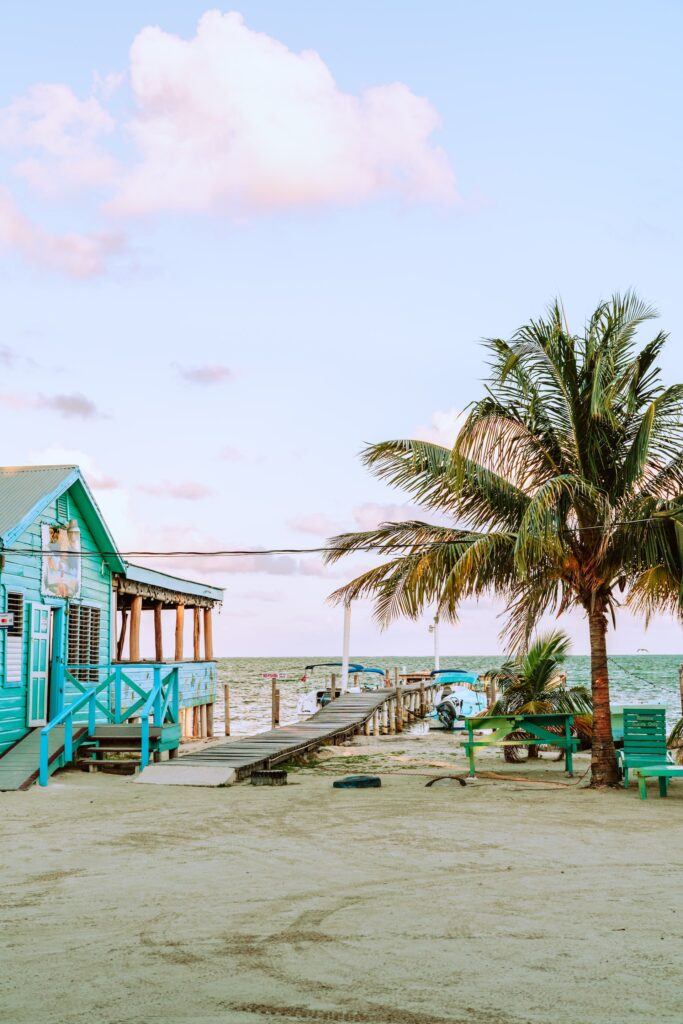
Belize is famous for its quaint islands, incredible snorkeling and diving opportunities, and laid-back Caribbean vibe. This small country is great for solo female travelers with very little time on their hands, as you can see a lot in a short amount of time here. Caye Caulker and Ambergris Caye are just a short ferry ride from Belize City — speaking of which, I don’t recommend spending any time there, as it’s a bit overwhelming due to lots of traffic and bustle and it’s the seediest part of the country.
Although like the other destinations on this list, the violent crime rate against tourists is low in Belize, solo female travelers should be prepared for intense street harassment here. I find catcalling just as annoying as the next person, so visiting Belize wasn’t as pleasant for me because of it. The harassment is mostly harmless, but solo female travelers should practice caution here and not respond to catcallers.
I still think Belize is a great place to travel, though. The beaches are gorgeous, the food is flavorful, and the cultural diversity makes it one of the most interesting destinations in Central America.
5. Nicaragua
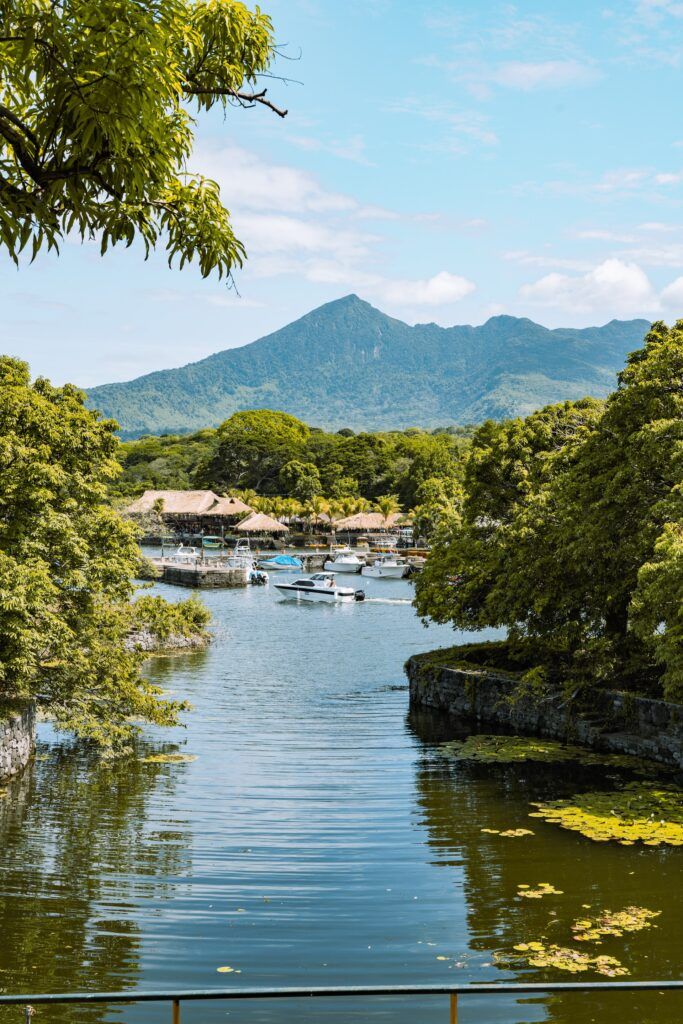
This might be the most surprising entry on this list, but Nicaragua is an incredible place to visit for its breathtaking natural wonders, friendly locals, and affordable prices. (In fact, there’s a tie between Nicaragua and Guatemala for the cheapest destination in Latin America.) Here you can go sand-boarding on a volcano in León, visit some stunning beaches like Las Peñitas and Playa Maderas, go island-hopping in the Corn Islands, and much more!
Although most of Nicaragua is safe to travel through as a solo female traveler, be aware that the country just went through a lot of civil unrest and so it can be unpredictable. Read the US Department of State advisories before traveling. In cases like this, the reality is that the political instability can have devastating consequences for locals but little to no impact on safety for tourists. It’s not a savory reality, but it’s important to keep that in mind.
How to Get Around Central America
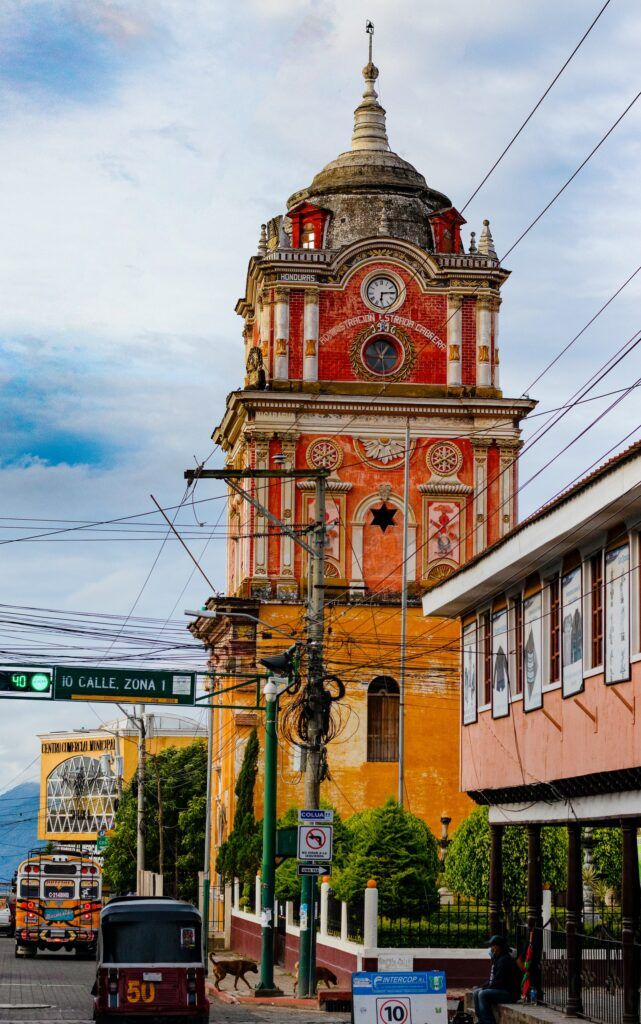
- Public transportation: This varies greatly from country to country, but overall, public transportation functions quite well in Central America and is is safe and very cheap. Costa Rica and Panama have the most efficient systems, while Belize, Guatemala, and Nicaragua are more informal, so always make sure to check with the driver to make sure you’re on the right bus.
- Budget airlines: JetBlue and Volaris are two great options for budget airlines. Copa also operates throughout the region and is fairly affordable. Flights between major cities in Central America are cheap, around $60-100 each way.
- Taxis and tuk-tuks: Always agree on a price before you get in, as taxis don’t typically use meters here. In big cities like San José in Costa Rica and Panama City, you can also use Uber, which is usually cheaper and safer. Tuk-tuks are more common in Guatemala and are fine to use — just agree to a price first.
- Renting a car: This can be quite expensive in Costa Rica and Panama but is cheaper in Guatemala, Nicaragua, and Belize. Book in person, as rental websites will often give you the price without insurance, and there’s no guarantee that you’ll get the car you paid for.
- Boats: There are many destinations in Central America that require a boat transfer, such as Tortuguero in Costa Rica . Ferries to islands in Belize, Panama, and Nicaragua are cheap, safe, and easy to use. There are tons of affordable boat tours too, like this one to Taboga Island in Panama.
How to Meet Others in Central America
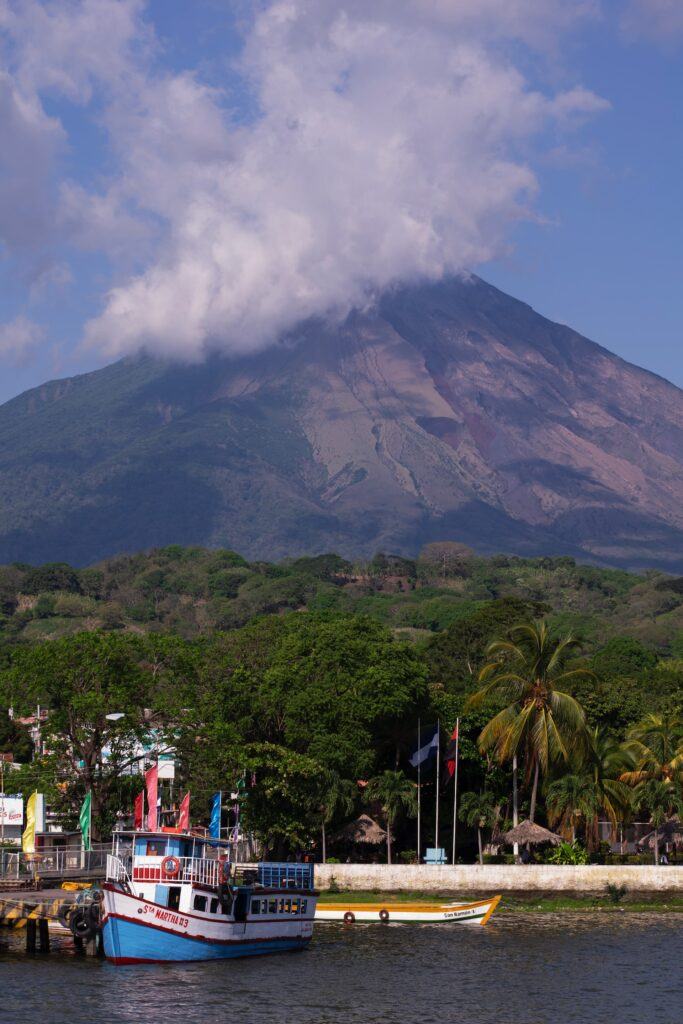
One of the reasons why Central America is so great for solo female travelers is that there are always backpackers passing through it, which makes it one of the easiest regions to meet other travelers. It can be really fun for that reason. Even traveling from the Mexican border to a remote part of Guatemala, I found other backpackers on the same route who were also excited to get off the beaten path.
Volunteering exchanges
My absolute favorite way to meet other travelers and feel more integrated into the place I’m visiting is to do a volunteer exchange. There are a couple of ways to find these; I recommend Worldpackers the most. I did a Worldpackers volunteer exchange in the Mayan jungle last year and loved every minute of my experience. It was a fun way to meet other solo female travelers and connect with locals as well. There are plenty of types of work you can do, including reception at a hostel, bartending, and mural painting.
Online forums for meeting other travelers
Another great way to meet other travelers is to poke around on Facebook to find groups that are specifically for travelers in the area. I typically will search for expat groups, for example, by searching the name of the place followed by “expats.” You can also join the Solo Female Traveler Network , which has over half a million members, and ask for advice about your destination there. Who knows, maybe another solo female traveler will want to meet up while you’re there.
Couchsurfing and homestays
I’ve never tried Couchsurfing , but it seems to be an awesome way to meet locals and save money while traveling. In Mexico, it’s hugely popular, and solo female travelers recommend it, so I assume it’s also viable in Central America.
I have, however, done homestays and think they’re an incredible way to meet people. I especially recommend homestays for any travelers looking to improve their Spanish skills, as many language schools offer them as a part of their programs. This is especially popular in Guatemala and Costa Rica, although you can find them in Panama and Nicaragua as well. Since Belize has such an eclectic mix of languages, including English and Belizean Creole, it’s harder to find these programs there.
I advise looking for language schools in your chosen destination and seeing if they offer a homestay. Even if it’s just for a week, it’s a fantastic opportunity to learn Spanish more quickly and make meaningful connections with local people.
Staying Safe While Traveling Solo in Central America
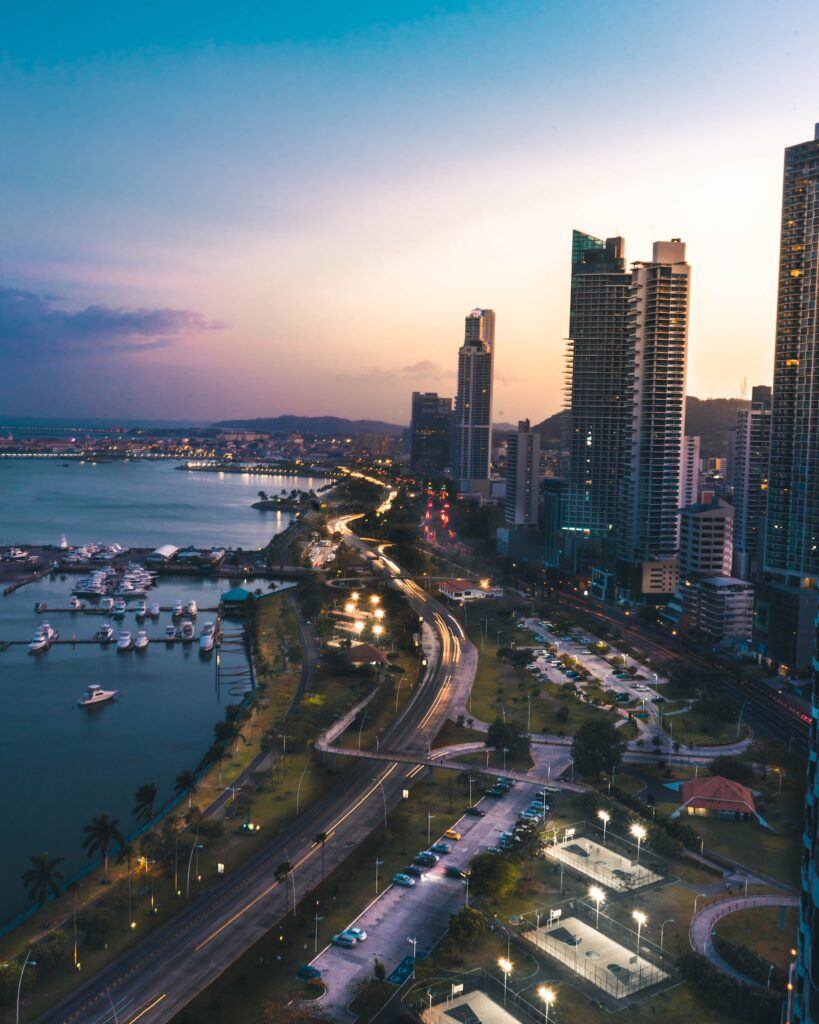
These are some of my tips for staying safe for solo female travel in Central America:
- Don’t walk alone at night or in the early hours of the morning.
- Don’t travel at night, even if by private car.
- Always carry a copy of your passport.
- Lock up your valuables in your accommodations.
- Share your live location with someone you trust, so they can keep tabs on you.
- Have an International SIM card in case you ever need to make an emergency phone call.
- When taking public transportation, always double-check with the driver that you’re on the right bus.
- Avoid big cities if you can. Crime is typically higher here.
- Don’t carry valuables when visiting crowded areas, such as markets and festivals.
- Get travel insurance! Here’s an honest review on World Nomads, SafetyWings , and Faye Travel Insurance .
Pin me for later:
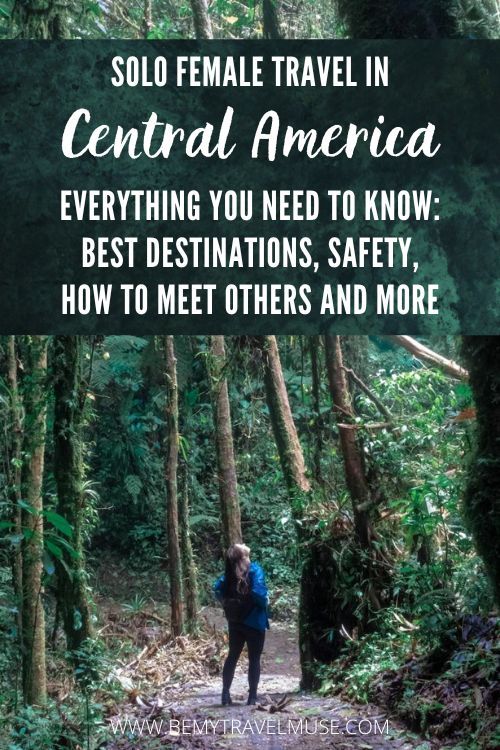
If you have been dreaming of solo female travel in Central America, go for it! The reality is that backpackers love this region of the world because of its affordability and abundance of natural beauty and warm hospitality. There’s a lot to love about each of these destinations, and they demonstrate the incredible diversity of Central America, both culturally and geographically. But as in any destination, never underestimate the power of trusting your gut.

First Name:
So where are you heading in Central America on your next solo adventure?
*Some links in this post are affiliate links for products and services we personally use and love. Any purchase you make through them supports us at no extra cost to you. Thanks so much!
About Emily Becker
Emily Becker is a digital nomad based in Costa Rica. She's been traveling on and off since 2014 and has visited 15 countries—planning to tick many more off her bucket list. In addition to writing for BMTM, she works as a copywriter and project manager.
Leave a Reply Cancel reply
Your email address will not be published. Required fields are marked *
Save my name, email, and website in this browser for the next time I comment.
subscribe to our newsletter
This site uses Akismet to reduce spam. Learn how your comment data is processed .
04/07/2023 at 8:40 am
What time of year is best?
04/12/2023 at 10:53 am
Typically, the dry season (December through April) is the best time if you want to avoid rain. However, this is also the high season which means you’ll see crowds. I still think it’s worth it to visit in the dry season for most of Central America because it never really gets too crowded, although Costa Rica is an exception. Hope this helps!

3 great countries in Central America for solo travel
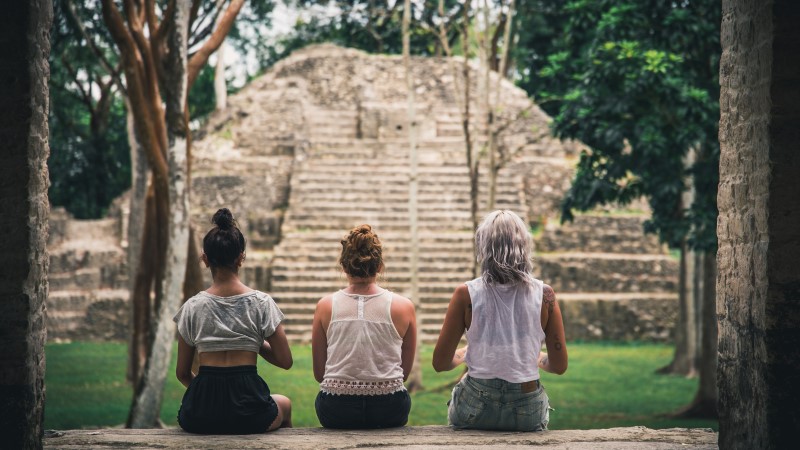
Central America is so much more than “that skinny bit” connecting two great continents – this isthmus (yes, there’s a word for that) packs a mighty punch on its own.
With seven countries under its narrow belt, it’s a stunning kaleidoscope of jungles, volcanoes, temples, beaches, delicious food and more spider monkeys than you can shake a stick at – and with a steady stream of fellow backpackers heading north to south or vice versa, it’s an amazing place to travel solo.
While I normally backpack on my own, after a health scare, I opted to jump on a 47-day Intrepid trip called Central American Explorer – and made loads of friends I’m still in touch with! But whether you’re going it alone or flying solo on a group trip, here are my top picks in Central America for solo travellers .
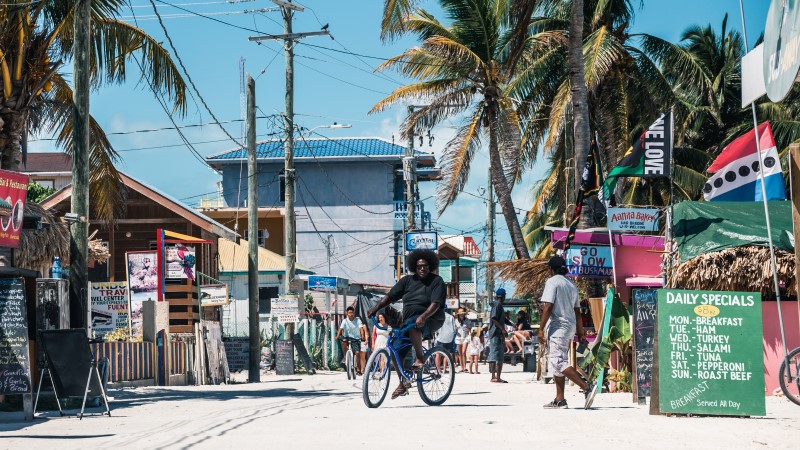
Photo captured by Nathan Landers
You better Belize it. Belize is the only English-speaking country in Central America, and with the friendly locals, relaxed vibe and ease of communication, it’s a breeze for solo travel. First up: off the coast is a tiny island paradise, Caye Caulker. The motto here is “Go slow” – it’s a car-free place where the roads are sandy, palm trees sway, rum punch flows and life moves at a chilled-out pace.
VISIT CAYE CAULKER ON THIS 8-DAY EXPLORATION OF BELIZE
Belize is home to the second-largest barrier reef in the world, so a great way to spend a day is to get out on the water. Head out on a catamaran trip to meet new friends, soak up the sun and reggae tunes, and stop at snorkel spots teeming with colourful fish and docile nurse sharks. If you’re lucky, you may even spot a manatee – I had one gentle giant whoosh by right below me in the open ocean.
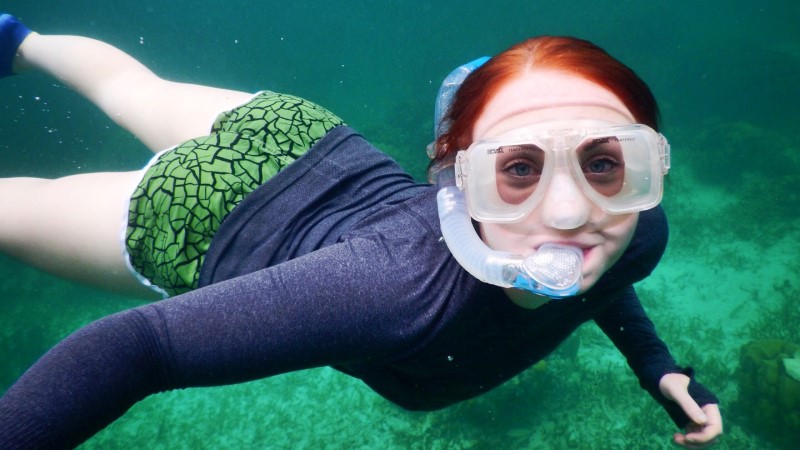
Photo captured by Vanessa Stofer
From afternoon onwards, the Split is the social place to be. Back in 1961, Hurricane Hattie ripped Caye Caulker in two – and now, the Split is where locals and visitors hang out, go for a dip and grab a drink from the beach bars. For dinner, gobble up shrimp off the grill or treat yourself to lobster for much cheaper than at home. And wash it all down with rum punch, of course.
SUBSCRIBE TO OUR NEWSLETTER FOR THE LATEST NEWS, OFFERS AND GIVEAWAYS
Back on the mainland, San Ignacio is a base for outdoor adventures. Spelunking, anyone? For a challenging Indiana Jones experience, join a guided tour to the ATM Cave (Actun Tunichil Muknal). You’ll hike, swim, explore endless chambers and marvel at archaeological wonders like ancient Mayan pottery and sparkling calcified skeletons. Or, for something lazier, opt for a cave tubing expedition – just don a fashion-forward headlamp, float and enjoy.
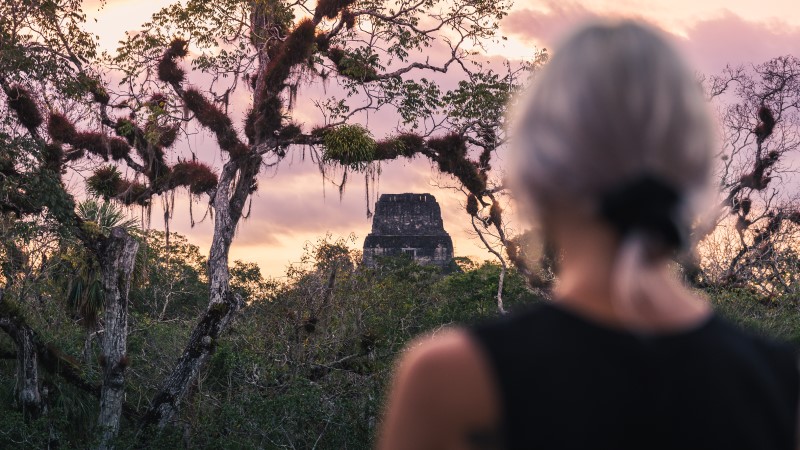
Guatemala is one of the most popular countries in the region for backpackers, so it’s great to visit solo. There’s good travel infrastructure and plenty of fellow travellers, so if you’re looking to make friends, you won’t be alone for long!
EXPERIENCE THE MAGIC OF GUATEMALA ON THIS 9-DAY ADVENTURE
In northern Guatemala, don’t miss Tikal, a heavy-hitter on any traveller’s list. This ancient, mysterious Mayan kingdom, famous for its photogenic pyramid, begs to be explored on foot. Wander through the ruined complex with spider and howler monkeys swinging overhead. Not far away is Flores, a pretty island town with colourful buildings, red corrugated roofs and flowers spilling down the slopes.
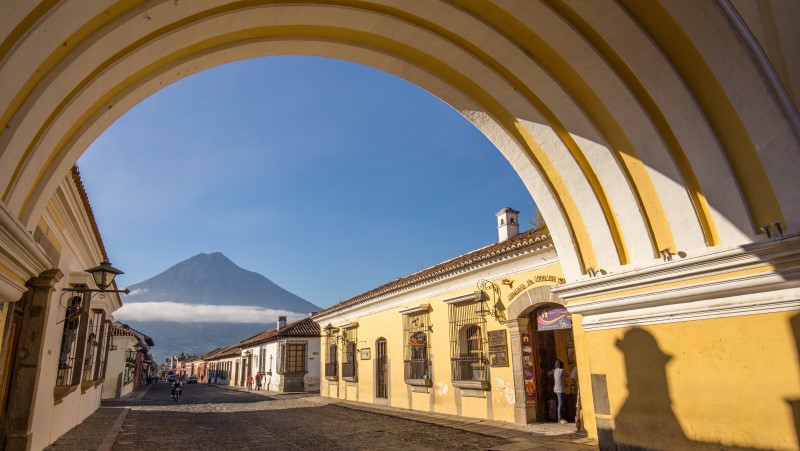
Photo captured by Damien Raggatt
Antigua, full of pastel colonial buildings and watched over by looming, cloud-ringed volcanic peaks, is a solid base for your explorations. From the city, you can trek a nearby volcano, visit local coffee plantations or stay in town to browse the markets, try traditional Mayan drinking chocolate at ChocoMuseo and dance the night away at a salsa bar.
RELATED: 5 REASONS ANTIGUA IS A HIGHLIGHT OF ANY TRIP TO GUATEMALA
Chichicastenango is one of Central America’s largest open-air markets, exploding into a riot of activity Thursday and Sunday. Bring your best haggling skills or just enjoy the atmosphere! Not far south is crystal-blue Lake Atitlan, a crater lake in the highlands ringed by volcanoes. More than a dozen villages surround it, each with their own distinct flavour. San Pedro is a hub for backpackers, while San Marcos is known as a hippie hangout.
El Salvador
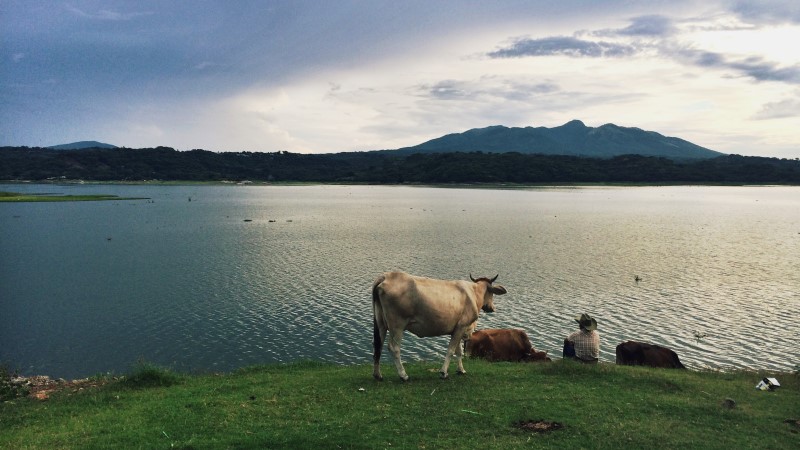
Tiny El Salvador is the smallest country in Central America, but it has a big heart – and it might just steal yours. While it sometimes gets a bad rap in the media, El Salvador is largely safe for travellers and well worth a visit . Of course, you should always follow normal travel safety ground rules, but the locals here are incredibly welcoming, prices are cheap and the water’s warm – surf’s up!
DISCOVER THE REAL EL SALVADOR ON THIS 8-DAY EXPLORATION
Quite literally – surfers (and backpackers) from all over the world flock to El Salvador’s Pacific coast for some of the best waves anywhere. For a beach break, don’t miss El Cuco or El Tunco. Grab a cheap morning surf lesson to catch your very first wave with other newbies, or you can lounge in a hammock, read a book or lounge on the beach to watch the pros.
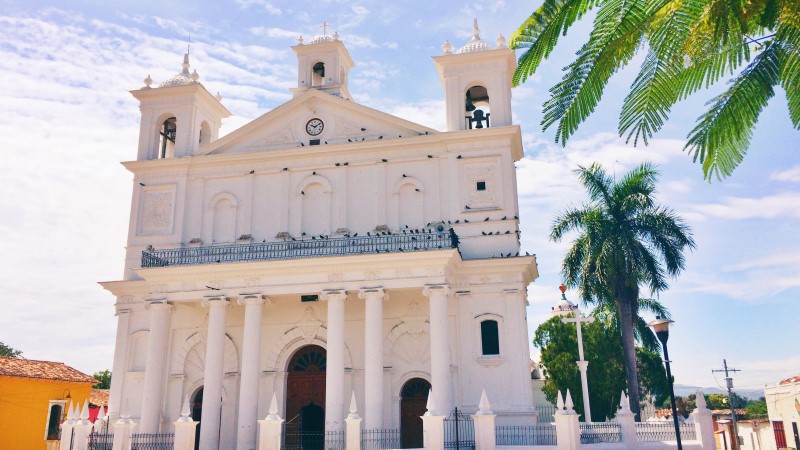
The quaint colonial town of Suchitoto, the cultural capital of El Salvador, is a beauty. From here, you can visit Cerron Grande Reservoir to see tons of migrating birds, take a guided walk through Cinquera Forest (where guerrilla fighters hid during the civil war) or catch a ride to Los Tercios waterfall, a cool rock formation of hexagonal columns like a mini Giant’s Causeway.
RELATED: HOW TO SPEND THE PERFECT DAY IN SUCHITOTO
And don’t leave the country without feasting on papusas – cornmeal flatbreads stuffed with cheese, refried beans or fried pork. One for a snack, two if you’re hungry and, well, three or four if you’re me. Yum!
There’s so much to see in Central America, we couldn’t possibly cover it all! But hopefully, this gives you a taster of this diverse continent – and lights the embers of inspiration for your next solo trip.
Ready to take on Central America solo? Intrepid Travel has 75 sustainable small group adventures for you to choose from.
Feeling inspired?
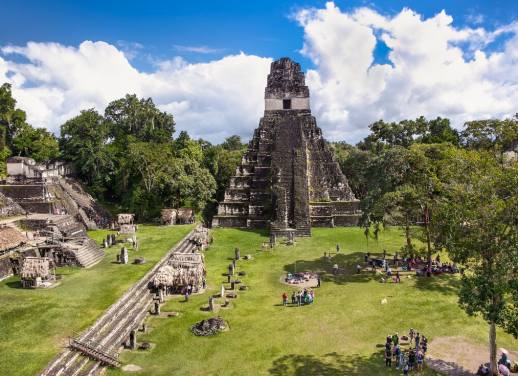
Vanessa Stofer
Vanessa Stofer is a writer and Vancouver Island expat living in London. She’s visited 57 countries and doesn’t plan to stop anytime soon. Follow her on Instagram @nessaloch
You might also like
All aboard the rail renaissance: 7 reasons to..., explore these 7 tea rituals from around the..., why travellers are choosing the galapagos off-season, tips and hacks for train travel in europe, why train travel is the one experience you..., everything you need to know about a night..., mind your manners: dining etiquette around the world, 5 places to escape the crowds in italy..., is australia safe everything you need to know, 10 fun facts you might not know about..., 12 facts you probably don’t know about guatemala.
Travelling is ultimately a tool for growth. If you want to venture further, click this banner and take the leap 😉
- Meet the Team
- Work with Us
- Czech Republic
- Netherlands
- Switzerland
- Scandinavia
- Philippines
- South Korea
- New Zealand
- South Africa
- Budget Travel
- Work & Travel
- The Broke Backpacker Manifesto
- Travel Resources
- How to Travel on $10/day
Home » Central America » Backpacking Travel Guide
Backpacking Central America • TOP TIPS, Itineraries + Costs 2024
Backpacking in Central America was the best decision of my life . My experiences here moulded me into the man I have become today, and I’m now OBSESSED with inspiring others to visit this magnificent region.
Central America is an enchanting amalgamation of jungles, surf beaches, (tequila), and volcanoes. This part of the world attracts a certain kind of vagrant and broke backpacker – so you’re sure to fit right in. 😉
After exploring for months on end here, I now kinda consider this part of the world to be my second home. You won’t have to spend long here to feel the same, trust me.
There’s something so magical about these lands and the endless array of surprises and opportunities they possess…
Part of it is the unrivalled beauty of the jungles, mountains, volcanos, desert islands and beaches. Part of it is all the relaxing and inward soul searching. But truly, it’s the kindness and open-heartedness of the people that make you fall in love.
If you travel slowly while backpacking Central America (and trust me, you should) you’ll find yourself on all sorts of weird and wild side quests. You know, the kind with people that very quickly become your new friends for life. One minute you’ve stopped for tacos and the next you’re chasing down Rodrigo’s pet chicken or singing karaoke with a Mayan grandmother.
A part of me is desperate to keep this place a secret before it turns into Southeast Asia 2.0, but I just can’t. I gotta spread the love ( pura vida style).
So, I’m here spilling the beans: insider tips, ups and downs, and essential information that I wish I had before I went backpacking in Central America.
Listo ? – Vamos!
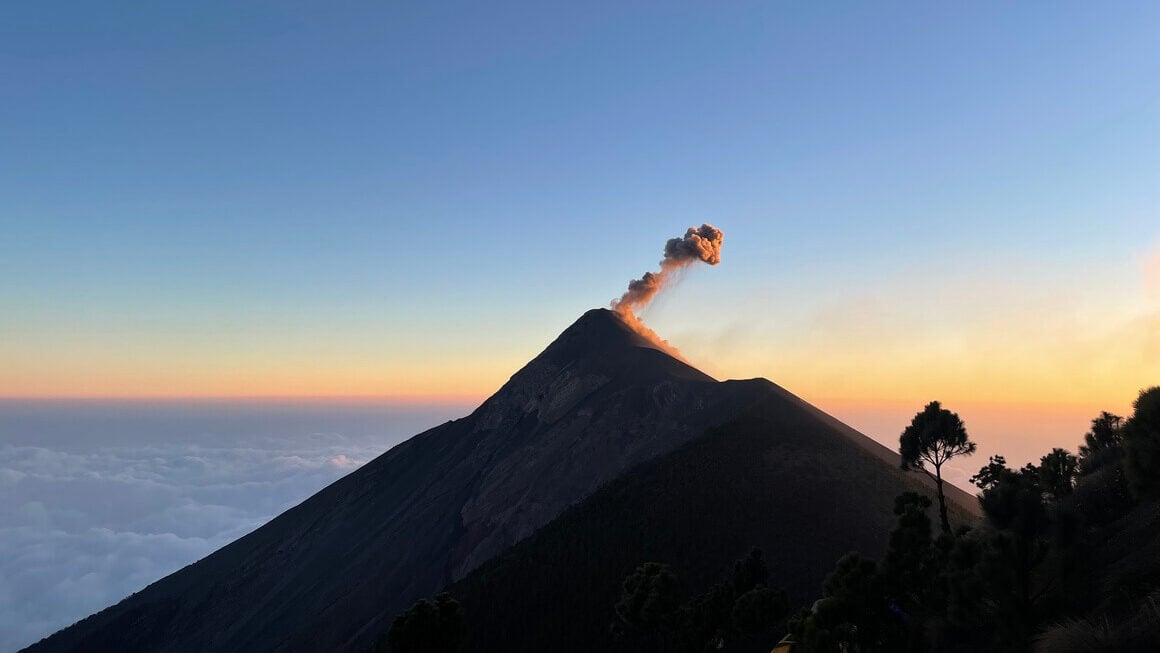
The Broke Backpacker is supported by you . Clicking through our links may earn us a small affiliate commission, and that's what allows us to keep producing free content 🙂 Learn more .
Why Go Backpacking in Central America?
Backpacking Central America is a wild romp through both chaos and a long chill-out session. It lends itself to some incredible overland journeys and rounding out your own manifesto through travel. Because if you really get into learning Spanish here, you’ll suddenly find a whole new world of locals and fellow artisan backpackers opens up to you!
There are markets full of amber, beaches to sell your jewellery at (Central America is actually a good place to have a backpacker hustle), and of course, there is so much delicious food. I’m talking fried platanos, tacos, and ceviche whenever you’re on the coast. Plus, a party is never too far away. 😉
Then there’s the fact that Central America is a pretty cheap place to travel in. Backpacking Central America is ideal for those on a grown-up gap year or another type of time-constrained trip. But for the long-term vagabond who knows how to stretch every last dollar and doesn’t mind camping on beaches – man… Central America is a dreamy place for you!
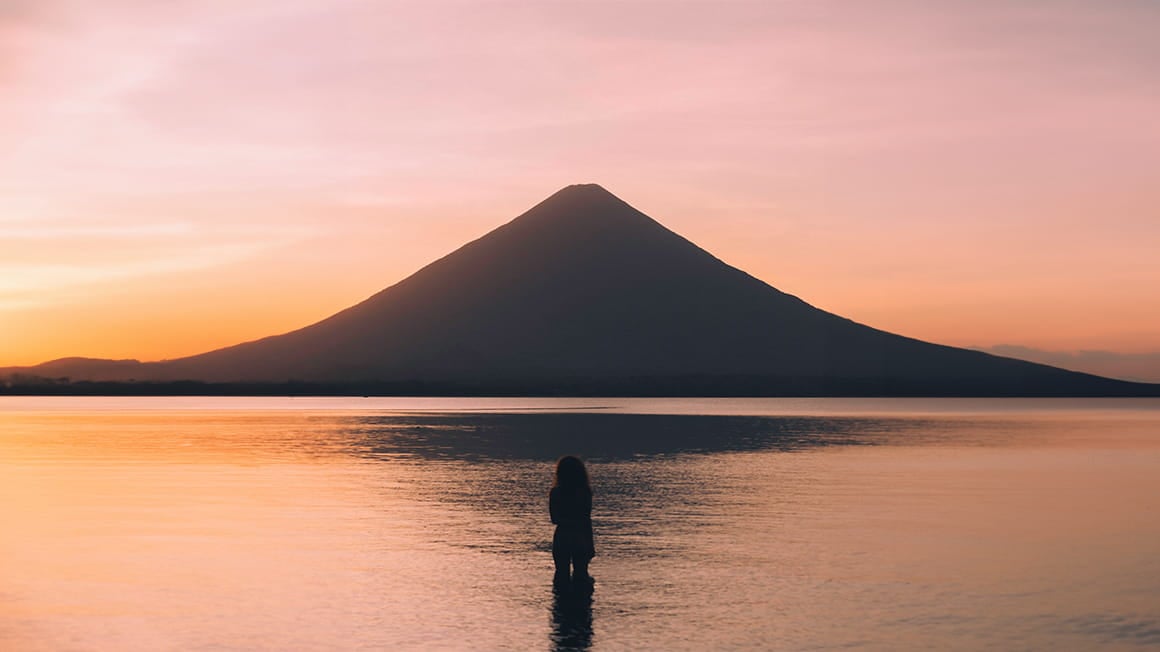
And when you do want to splurge on some once-in-a-lifetime experiences, well the region delivers them in spades! Learning to free dive or SCUBA dive are two of the more popular ones. Take epic trekking trips, sky diving, and paragliding!
Now, not everyone is ready to throw themselves off a cliff in the name of a bucket list experience … and that’s ok! Central America hears you and instead offers up peaceful yoga retreats in the mountains or lazy beach days in the sunshine. Plus, because the countries that comprise this region are small (with the exception of Mexico) you can spend less time physically travelling and more time actually exploring – or chilling!
Honestly, backpacking in Central America is the whole package: the people, the parties, the paradisiacal landscapes. Now let’s take a look at some of your options for exploring this fantastic part of the world.
Best Itineraries for Backpacking Central America
Best places to visit in central america – country breakdowns, 10 top things to do in central america, backpacker accommodation in central america, backpacking central america costs, best time to visit central america, staying safe in central america, how to get into central america, how to get around central america, working in central america, central american culture, unique experiences in central america, faqs about backpacking central america, final advice before visiting central america.
Depending on your time frame, there is a wide range of places to begin and end your backpacking trip. Choosing a general Central America backpacking route and itinerary that works for you will help in some of the basic planning on your journey.
One of the reasons I love backpacking in Central America is the ability to be spontaneous. The region thrives on a certain degree of chaos! Best of all, the distances in Central America are not as daunting as in other parts of the world, so it’s a good choice for backpackers short on time.
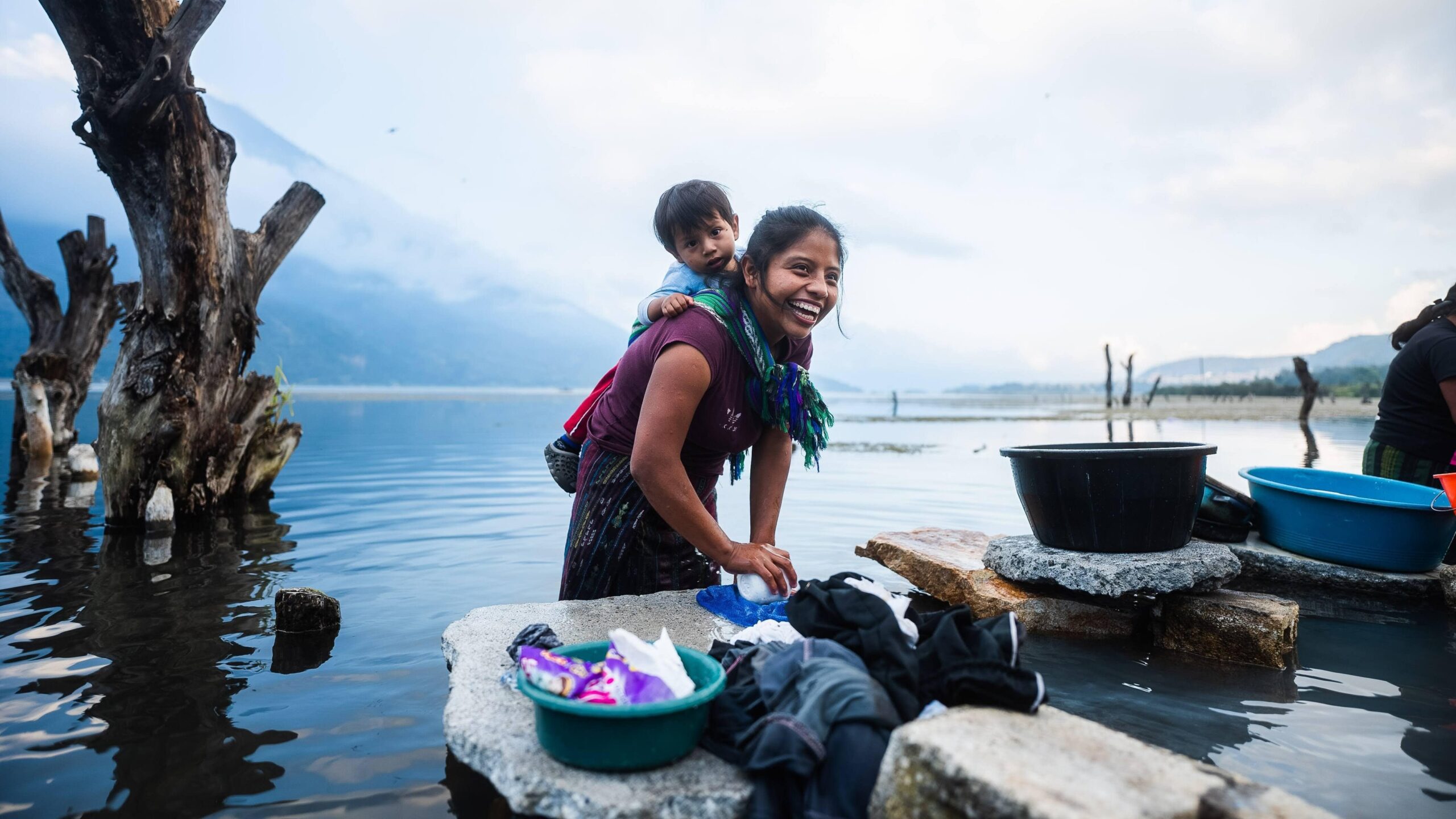
Besides, I don’t see much point in rushing around the countries. You might as well slow down your travels and enjoy the ride!
Whether you are looking for a 2-week Central America itinerary or a 2+ month travel odyssey, I’ve got you covered amigos! Let’s dive in a explore some of the tried and true Central America backpacking routes I have enjoyed.
2-week Travel Itinerary for Central America: Mexico to Guatemala
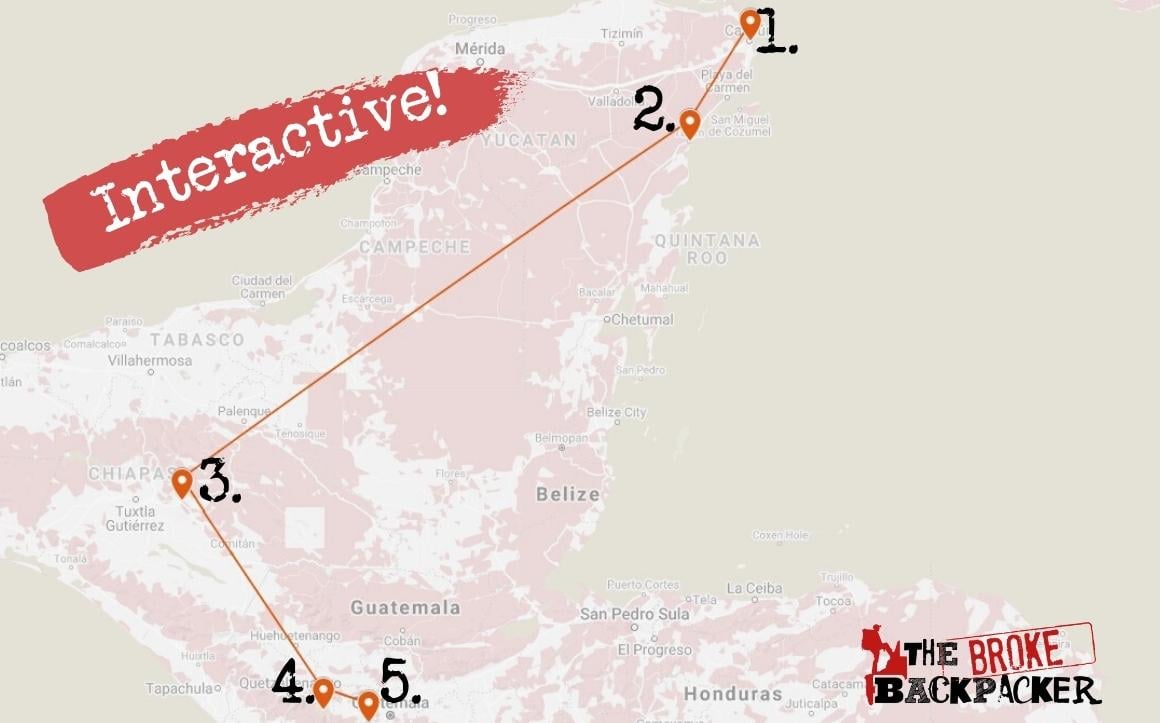
This 2-week Central America backpacking itinerary starts on the opposite end of the region. The cheapest flights into Central America usually fly into Cancún, Mexico.
Find somewhere to stay in Cancun and leave the next day – it’s no secret I STRONGLY dislike Cancun! But do spend some time exploring those insane white sand beaches and cenotes in Quintana Roo to make memories you’ll never forget.
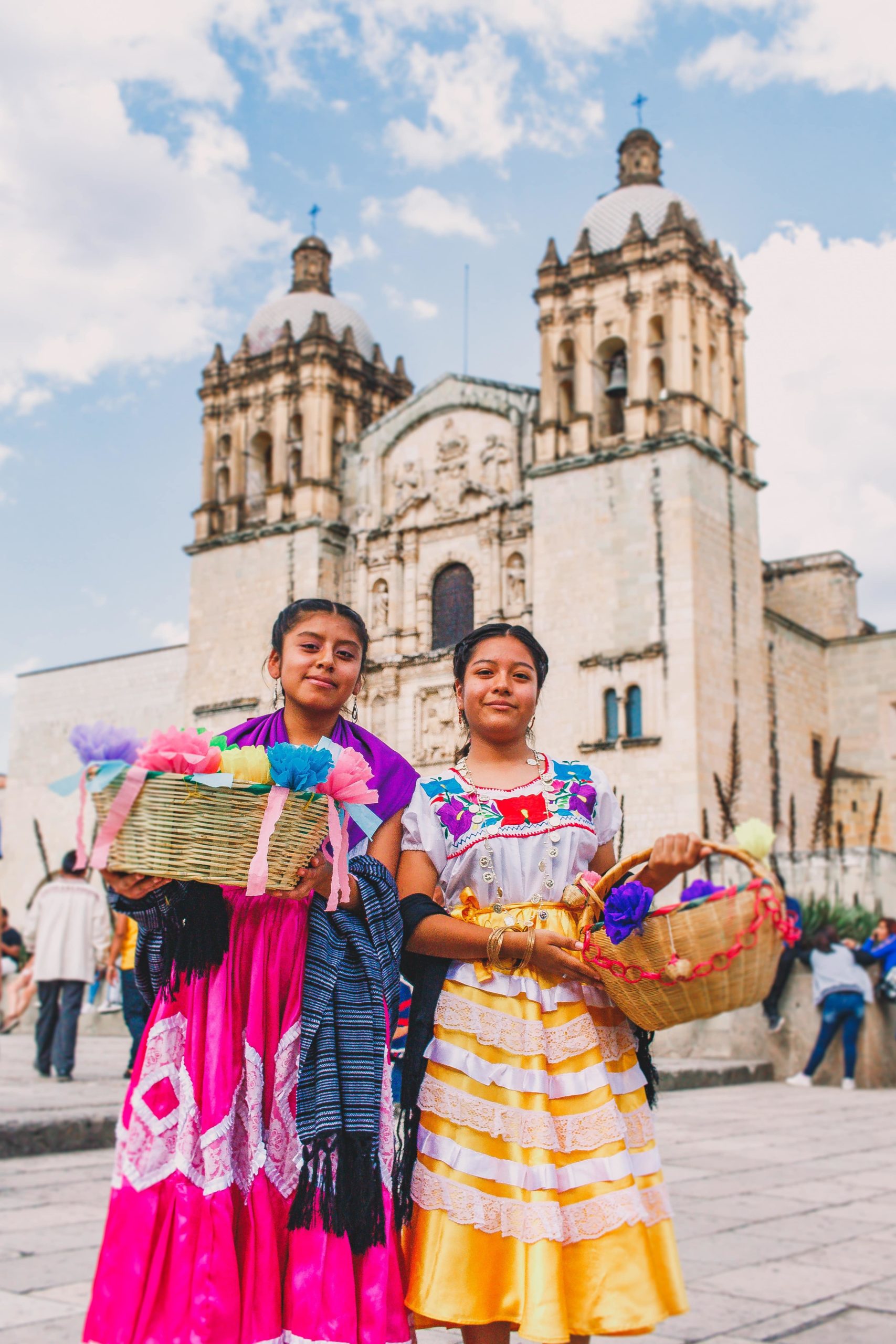
Now onwards to Chiapas ! Chiapas is one of Mexico’s most fascinating regions. The food alone makes it worth the visit, although the mix of cultures and the drop-dead gorgeous landscapes will compete for your attention, too. Explore San Crístobal de las Casas before you head to Guatemala.
Guatemala is a whole other fascinating country. Backpacking Guatemala is truly a special experience. It’s here that I accidentally spent six months falling in love with the country.
Some of the best trekking in Central America can be found in Guatemala. It also boasts steamy lush jungles with the most impressive Mayan ruins in the region. Lake Atitlan has, dare I say, spiritual energy that hasn’t been quashed by the many tourists that call it home.
And rounding out your taste for Central America you can stop in at one of the many awesome places to stay in Antigua – one of the most beautiful cities filled with the most delicious food in the world. Honestly, after two weeks in Central America, you’ll be hungry for more!
4-week Travel Itinerary for Central America: Guatemala to Costa Rica
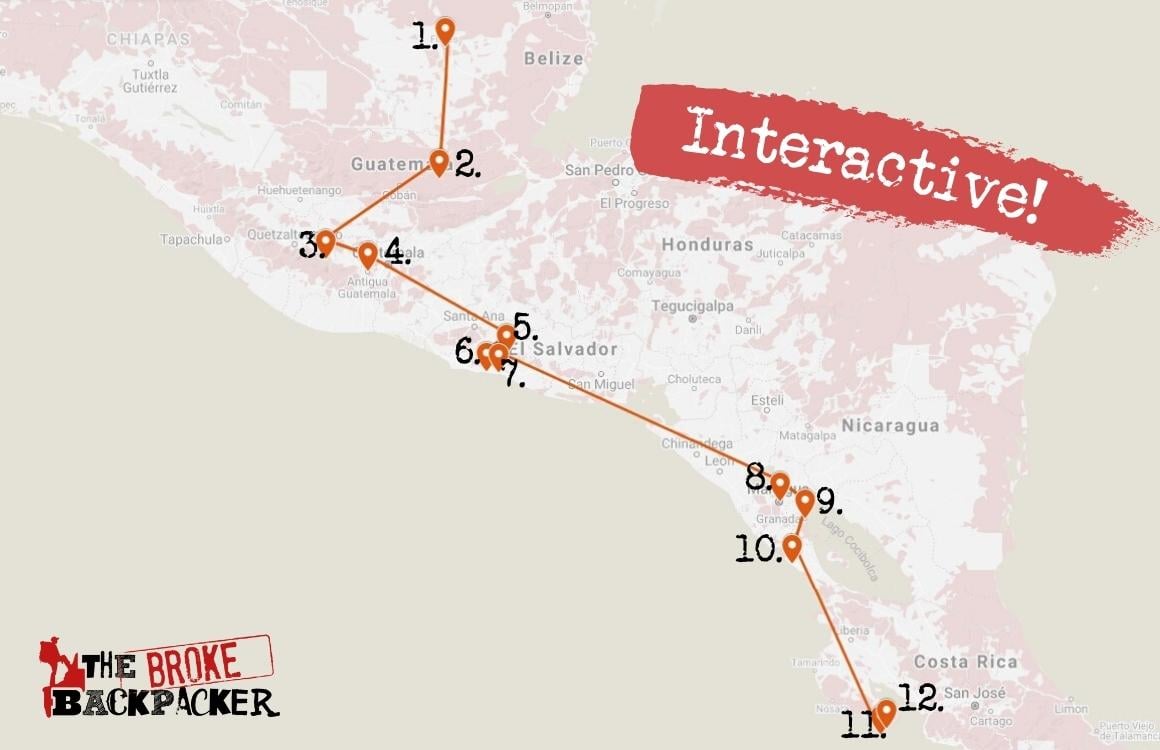
Have a month to visit Central America? Perfect.
This route has you starting off in Guatemala. Of course, you could start in Costa Rica as well. In my opinion, it is better to save it for the end!
I recommend spending at least ten days in Guatemala before heading south. Definitely go to the ruins in Tikal – and make sure to stay in Flores , the town I fell in love with!
Check out the incredible pools at Semuc Champey . Now if you bus back across to find things to do in Lake Atitlan , you can get in your yoga fix while learning deeply from the Mayan culture still strongly felt here.
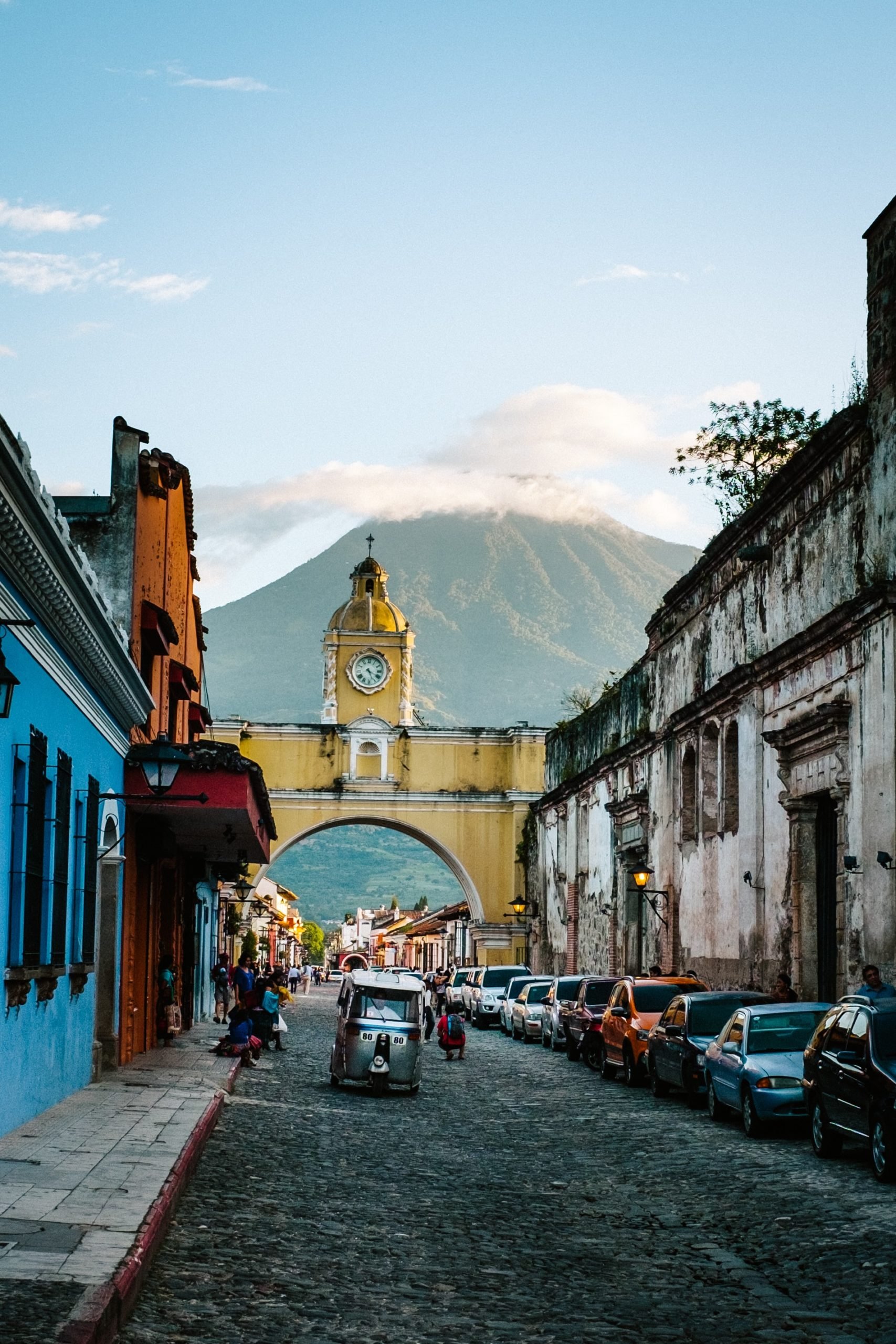
Next up, walk to the cobblestone streets of the beautiful colonial city, Antigua . This is all before you get out of Guatemala – there is truly so much to do in Guate !
El Salvador is a country that is often skipped over entirely – and what a mistake that is! While backpacking El Salvador certainly is a bit lighter on the typical tourist things, the surfing and epic street food make it a worthy stop on your Central American itinerary. You won’t run into the safety problems you might think you would – especially if you stick to the beautiful beaches.
The killer beaches do not stop when you enter Nicaragua via a Honduras detour. But if you’re somewhat limited by time – my dudes, you’ve got to hit those surf beaches in Nicaragua. Playa Popoyo has some of the most consistent surf but less popular beaches on the way down!
Then there is Costa Rica : the cherry on top of your Central American pie. A big beautiful world of adventure backpacking awaits you when you arrive in the land of Pura Vida.
The surfers will want to stick to the Pacific Coast. Mal Pais and Montezuma are classic Costa Rican surf towns that suck you in!
And the Caribbean beaches of Costa Rica are the perfect end to your Central America backpacking trip – nothing but good vibes out here.
6-week Travel Itinerary for Central America: Mexico to Panama
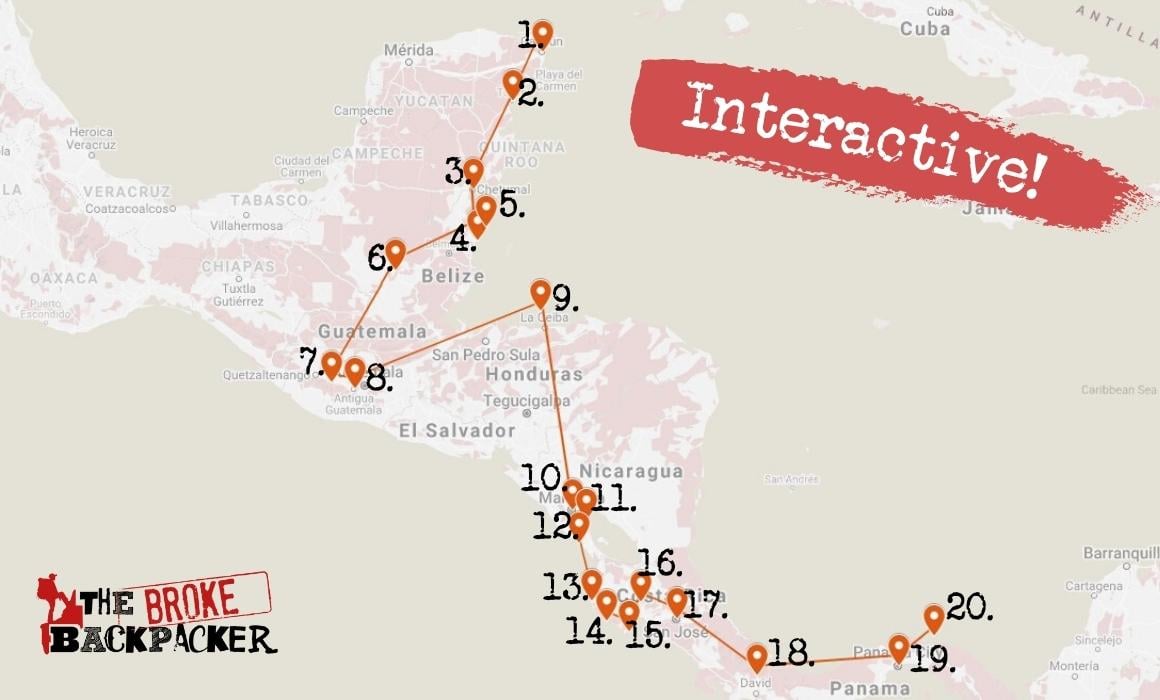
If you have 6 weeks or more then you can see the whole damn region. A trip to Honduras for some SCUBA diving is totally worth the effort.
The Bay Islands are one of the cheapest places in the world to get your PADI certification. Annddd, you could also learn to freedive aka underwater meditation!
Look, if you do a bunch of diving on top of exploring the Yucatan and the best beaches in Mexico and even doing some sightseeing in Belize and Guatemala , you’ll quickly run out of time!
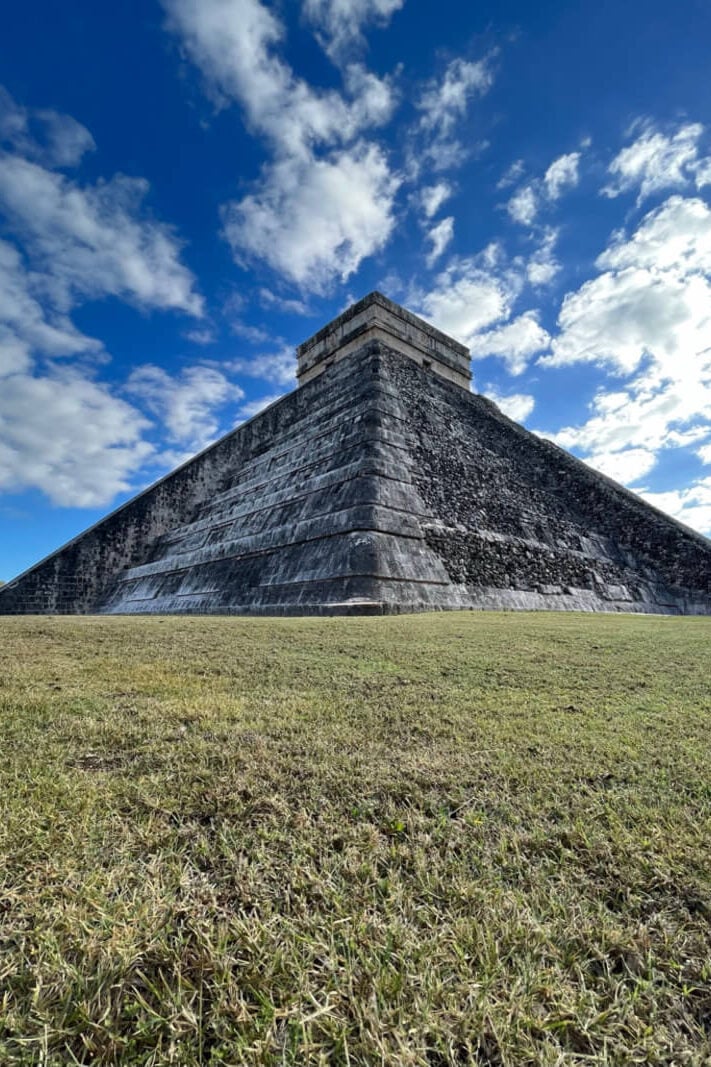
This 6-week itinerary is the whole enchilada as they say – it’d ideally be better off done with a lot more time up your sleeve. Still, if you head from Utila and the Bay of Islands through the jungle of Honduras you can have an awesome time trekking and exploring Mayan ruins such as the trails through Parque Nacional Montaña de Comayagua.
From there, you can cross to the Pacific side of Nicaragua and surf your way down the coast into Costa Rica and beyond. You have options in terms of the order of everything to see in this route, but it would work well to duck into Panama and hike in Bouquet, before returning to the Caribbean side of Costa Rica .
Settling into the Caribbean vibe, you can carry on back up the Nicaraguan coast and fit in some more snorkelling and diving!
I found a good balance between trekking, diving, visiting ruins, chilling out, and learning a travel language – Spanish. If you do too much of either of those things you can lose appreciation for how special they are. I found it best to settle into a place for at least a few days before heading out on chicken buses.
There are eight countries that make up the region of Central America; each one is worthy of exploration! Backpacking Central America offers up the opportunity to experience a vast array of landscapes, cultures, food, and activities.
Belize, Costa Rica, and parts of Mexico are more expensive than the other countries. El Salvador and Honduras are probably the least visited countries on the list – and yet have some of the best surfing and hiking in the region respectively!
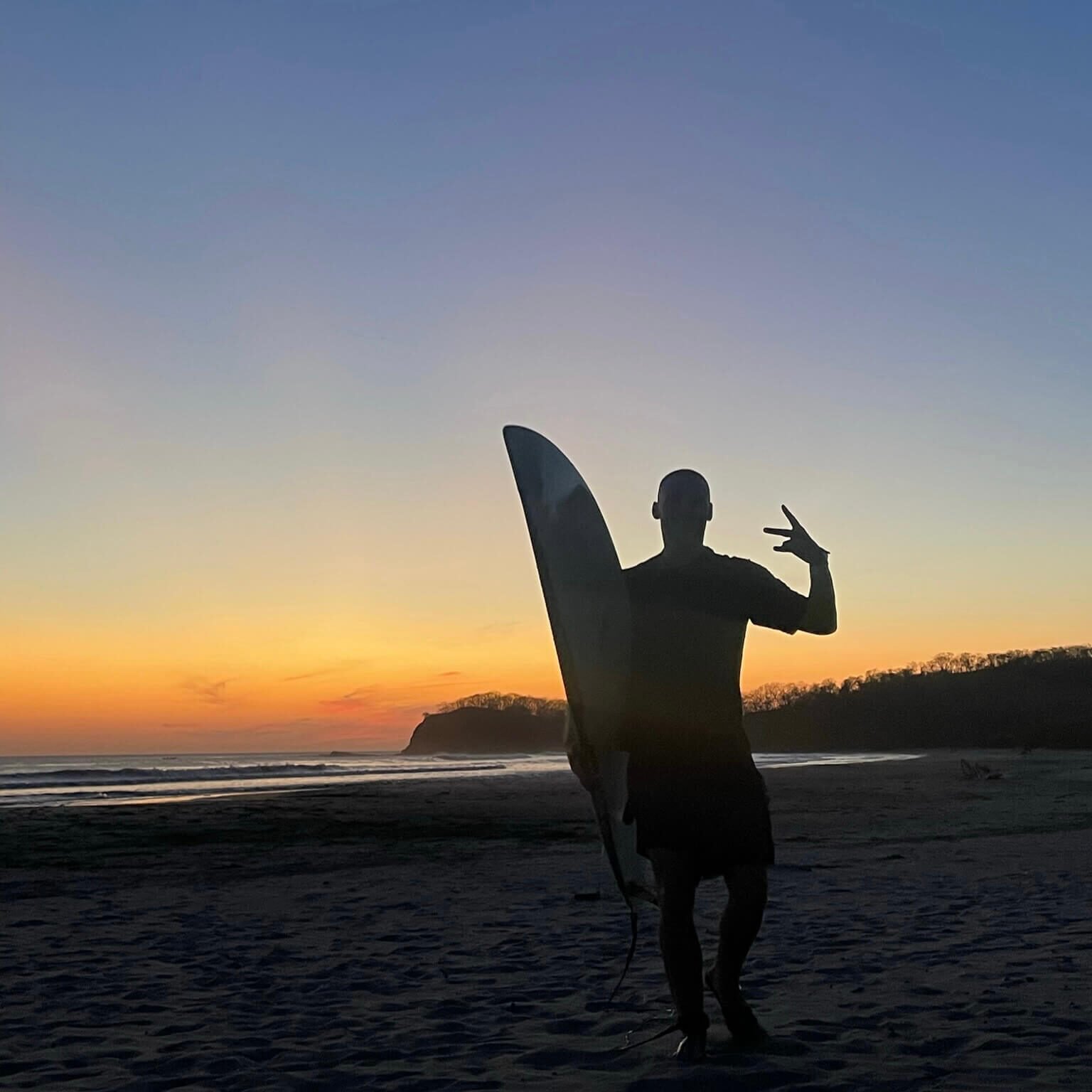
If you are looking to get off the beaten track and away from the gringo trail, it’s easy in all of the Central American countries. This is especially true in Honduras and the Caribbean side of Nicaragua, where few backpackers go. Depending on the time you have, and more importantly your interests , your options of where to go backpacking in Central America are limitless.
Backpacking Mexico
Mexico is Northern America geographically . No, North America is not just the USA and Canada…
But culturally? Central American all the way! Of course I’m including it in backpacking in Central America.
It is a huge country with incredible diversity: ice-capped mountains, steamy jungles, bustling metropolises, great beaches…
The majority of people on a Central American backpacking route tend to stick to the Yucatan Peninsula and Chiapas regions. That said, there is much, much more to Mexico than those two places.
One could spend a lifetime backpacking Mexico and not see all of it. If you’re short on time, these two regions are some of the richest in landscapes and things to do. If you have longer, you should explore Mexico more deeply!
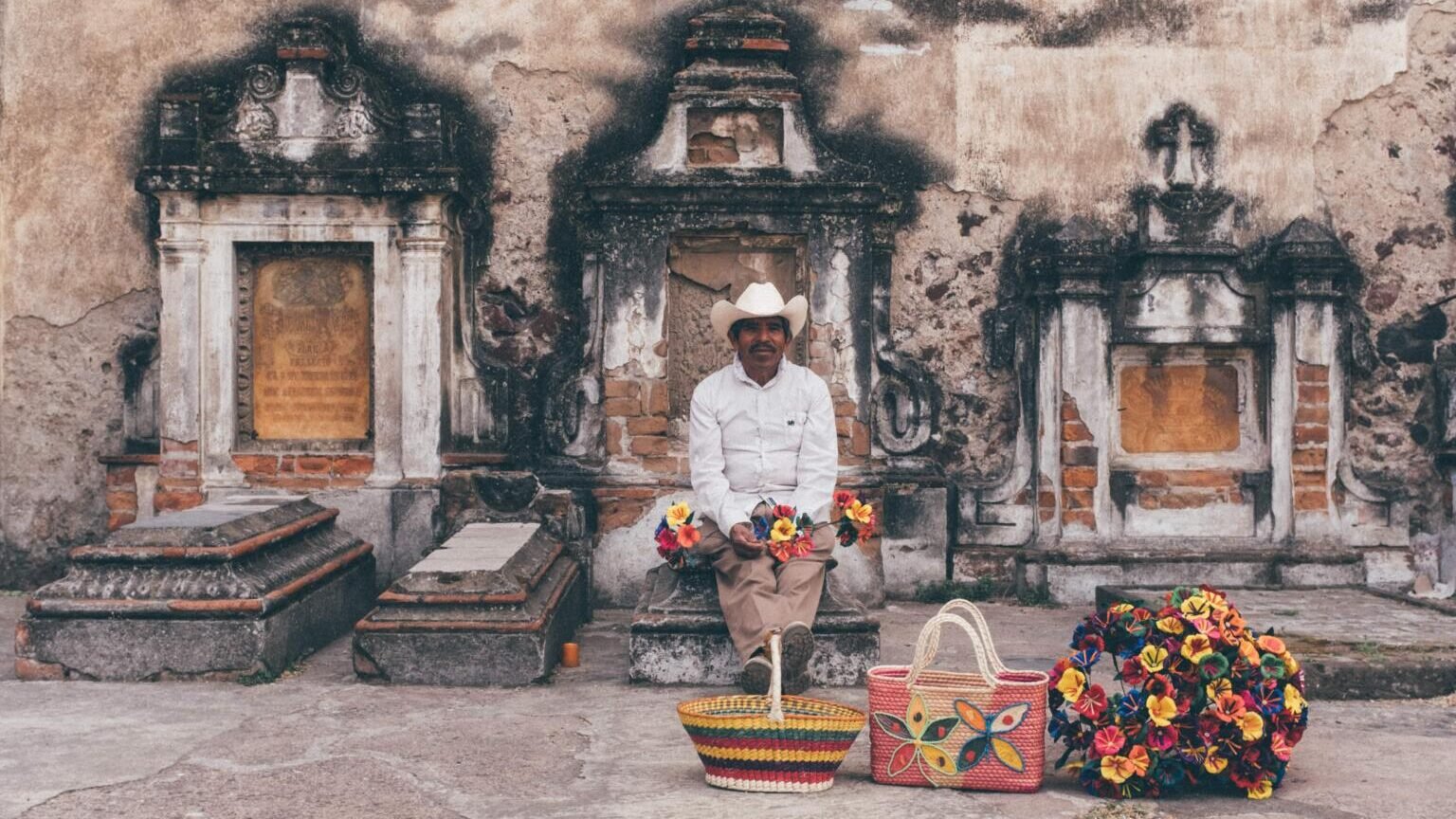
Tulum makes a good base to explore natural and historical treasures of the Yucatan. Seriously, get yourself to the mind-boggling cenotes for a swim and learn to snorkel in epic cave systems. There is some excellent SCUBA diving in Mexico too, but it’s more expensive than Honduras.
Chiapas is one of my favourite parts of Mexico. There is plenty of history, incredible people, and natural wonders to keep you busy for as long as you want. Once you’ve had your fill of epic street food, you can ply through the local markets for colourful trinkets, and top it all off hiking through the highlands. Chiapas really has it all!
An alternative to flying into Cancun is to fly to Mexico City . From there, you can easily catch long-distance buses to other parts of the country or Guatemala. Take the opportunity to explore Mexico city a bit while you’re there though.
The longer you have to spend in Mexico, the longer you should spend in Mexico. She’s a special one!
What to Know Before Visiting Mexico
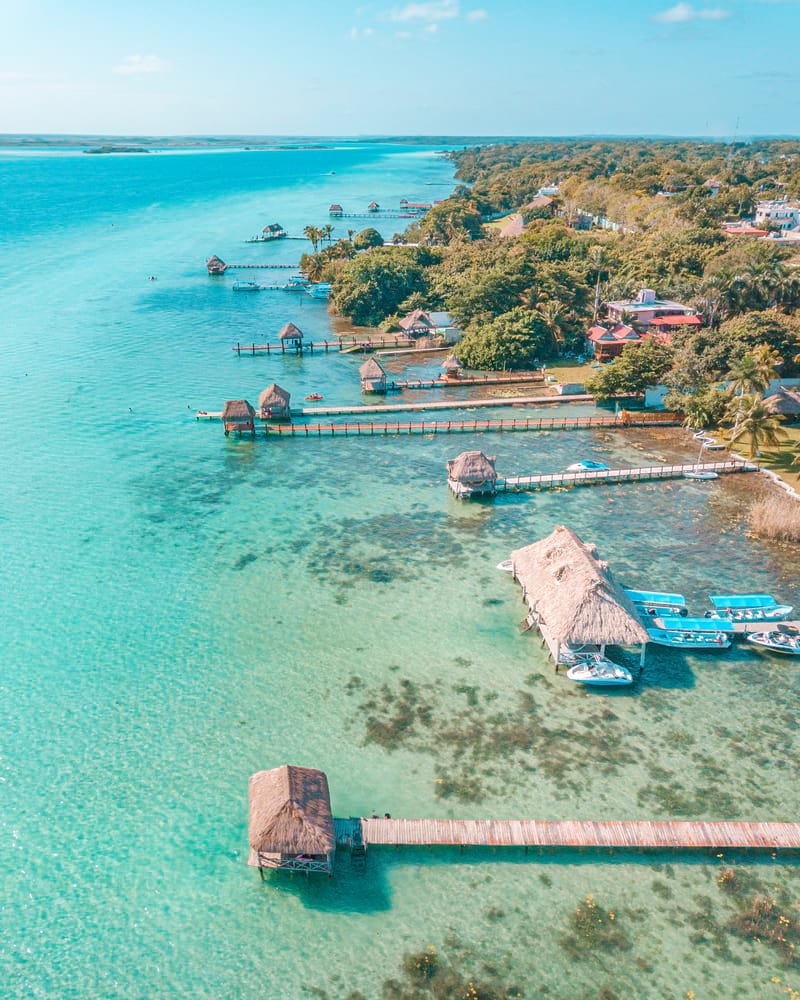
- Don’t miss out on… The Caribbean side . It’s touristy, but that’s for good reason. Go in search of hidden beaches and the best snorkelling spots.
- You know what’s overrated… all of those beach resort towns. Cancun, Playa del Carmen, Cabo San Lucas…these aren’t the real Mexico.
- The coolest hostel is… Casa Angel Hostel (Oaxaca City) – This place is pretty dope. Clean, friendly, and great atmosphere. Ticks every box when it comes to hostel life!
- The best food is found in… Oaxaca. Oaxaca is very well-known for its delicious moles and for being the birthplace of mezcal aka the original tequila.
Backpacking Belize
The paradise of Belize is a country I think of as the black sheep of Central America. For one, English is the official language.
Spanish is increasingly spoken as you get closer to the Guatemala border. Belizean Creole is commonly spoken on the coast.
In truth, a well-planned Belize itinerary is a great addition to any Central American backpacking trip. Belize is home to some of the best SCUBA diving opportunities anywhere in the North or South American continents.
The outlying reefs off of the coast are a part of the 2nd largest barrier reef in the world! Yeah eat your heart our Great Barrier Reef – these ones aren’t bleached either!
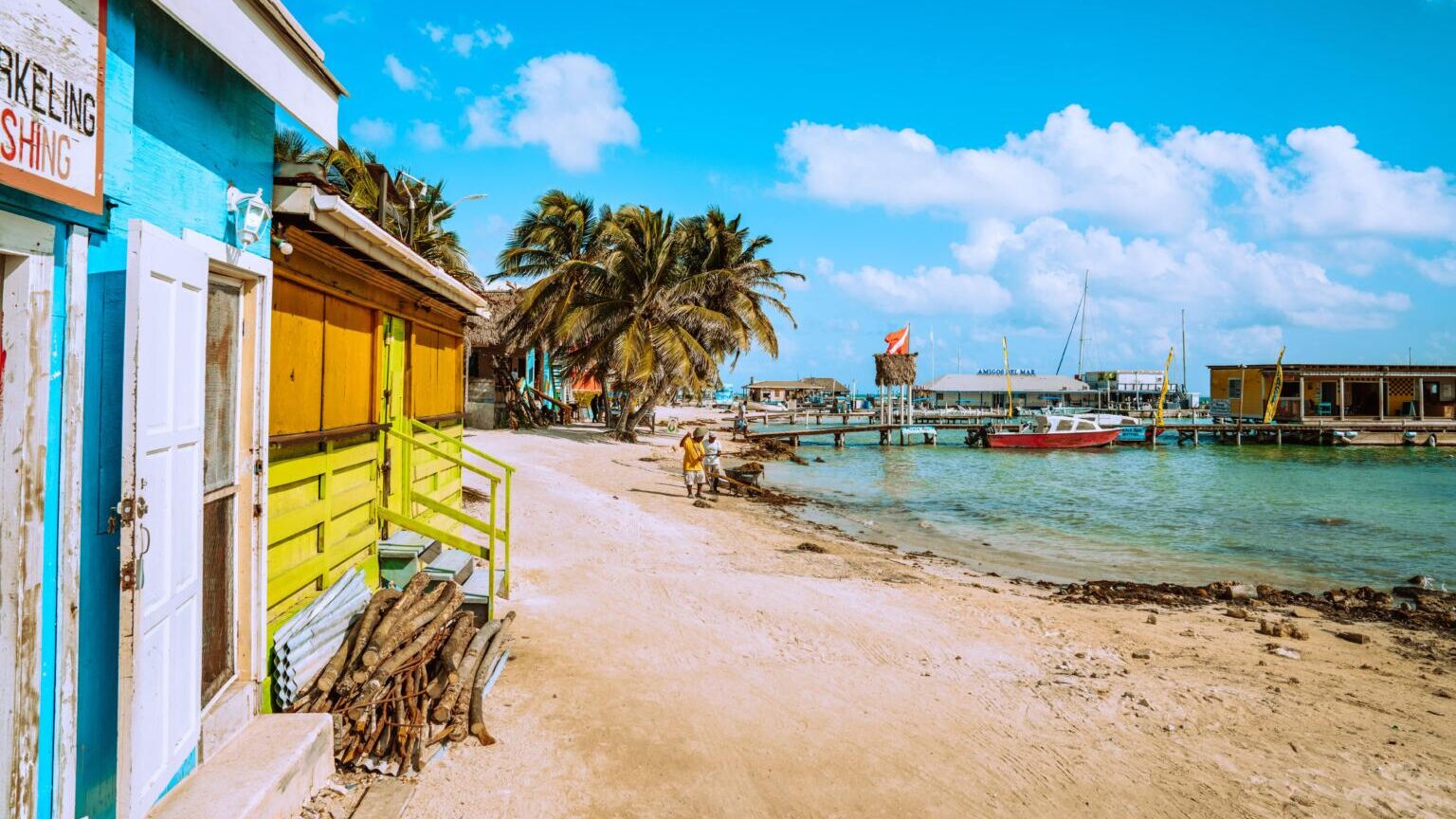
There are also some terrific Mayan sites inland from the coast. The ruins at Caracol are some of the finest in Central America.
Whilst backpacking Belize, if you are not a vegetarian – and fuck it even if you are – you absolutely must eat lobster on one of the islands. This beautiful, fresh seafood delight will have a little party on your taste buds for less than half the price of the States. Mmmmmm, you delicious little langouste – I miss you!
What to Know Before Visiting Belize
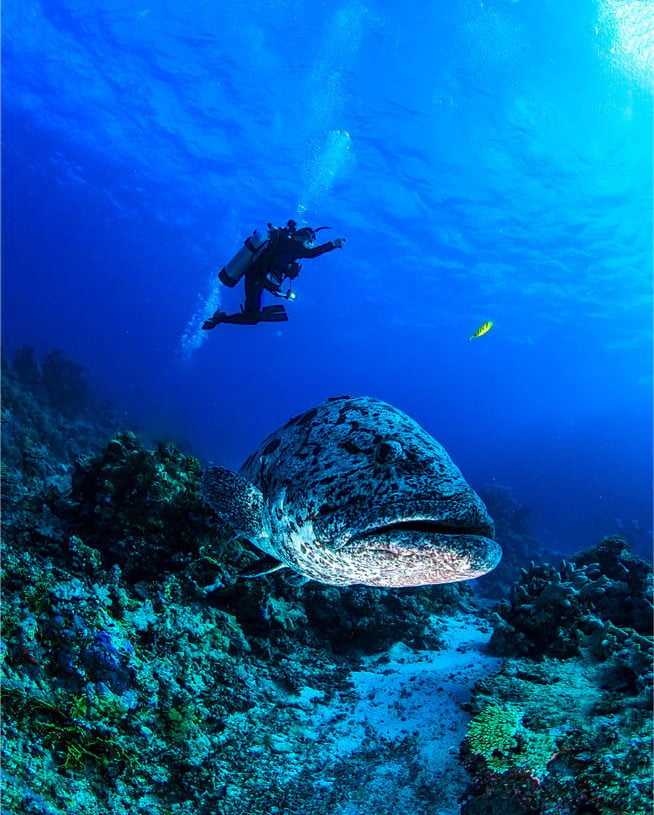
- Don’t miss out on… exploring some of the offbeat Mayan Ruin sites. For some reason, Belize is often overlooked when it comes to Mayan culture.
- You know what’s overrated… going snorkelling at The Great Blue Hole. It is costly to get out there but to really see the marine life, you need to dive . Don’t fall for the snorkelling package.
- The coolest hostel is… Yellow Belly Backpackers (San Ignacio) – A true paradise, this yellow house is the perfect base for travellers to explore natural treasures. It has a darts board, free biked and is 700m from the beach!
- The best food is found in… Caye Caulker has some of the best lobster in the world – with decent prices too!
Backpacking Guatemala
Guatemala is hands down one of the most dynamic and exciting countries I have ever backpacked. In fact, I loved it so much that I ended up living in Flores (near Tikal) for six months!
The country is so rich in amazing things to experience. You can try artisanal coffee, chow down on the world’s best tamales ( shh don’t tell Mexico!), and experience some of the best hikes in the world in their national parks of volcanoes and jungles.
Mayan cultures are still very strong here. The ruins aren’t so much a relic of a culture lost, but reminders of a culture that remains. I remember walking down my street only to find pieces of obsidian embedded in the dirt road.
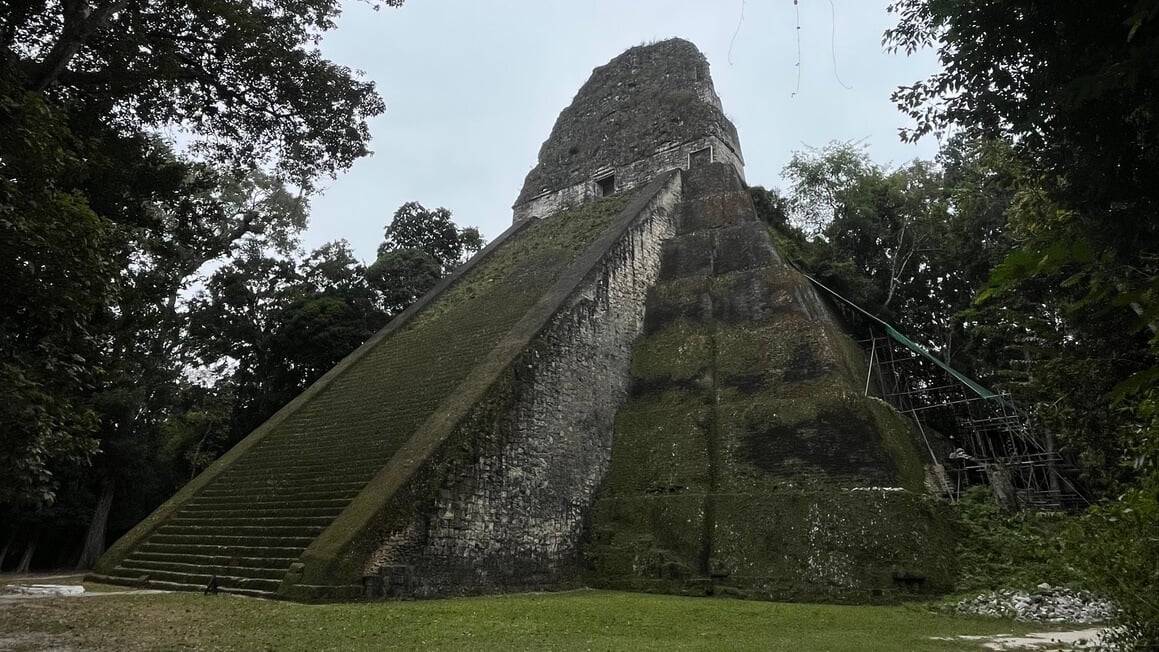
The land is very much a life with the people that have occupied here for the last 10 000 years. Tikal is particularly impressive at sunrise, but there are many other Mayan sites to check out, too – like El Mirador .
There are a number of great Spanish language schools in Guatemala if you are keen to learn some Spanish and stay with a host family . Spending a few weeks at a Spanish language school was a game-changing experience for me.
The schools in Antigua or Quetzaltenango are the best. Not only do you embed yourself with a local family and get the privilege of experiencing the town, but your Spanish skills improve at light speed! Speaking Spanish opens up a whole new world for you on your travels in Latin America.
Check out Semuc Champey and Lake Atitlan while you’re in Guate. They might be touristy but they’re still beautiful!
For a true change of pace, you could even try out the boat life by volunteering on a sailboat in the Rio Dulce . Oooh boy, the sailors are a funny bunch down there!
You will fall in love with Guatemala, it’s unavoidable. I’m most certainly counting the days until I return…
What to Know Before Visiting Guatemala
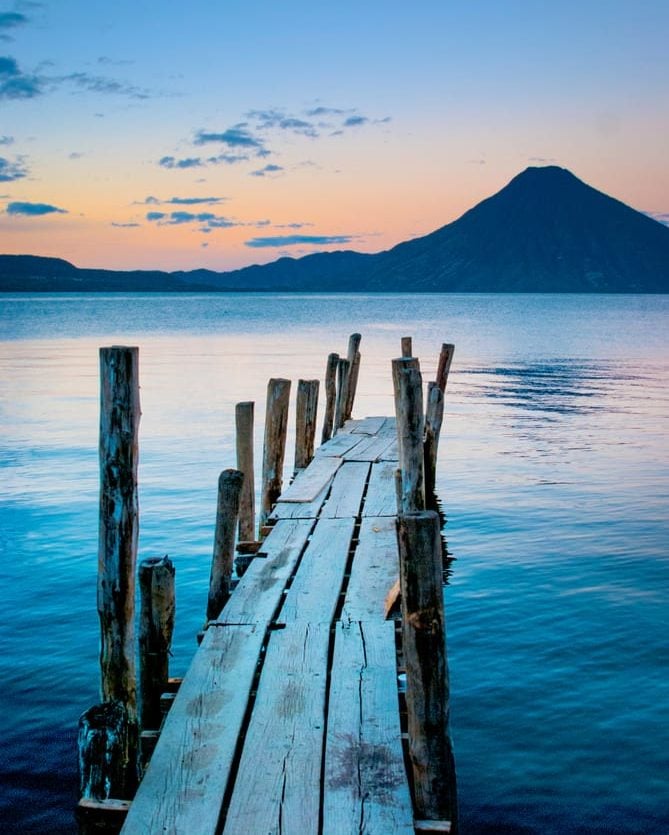
- Don’t miss out on… a 3-day trek around Lake Atitlan, ending in Xela. This one of the most beautiful places in Guatemala .
- Keep an eye out for… safety in Guatemala City. This is probably one of the most hectic places in Guatemala. Base yourself in Antigua instead.
- The coolest hostel is… Earth Lodge (Antigua) – Yoga studio? Organic kitchen? Avocado farm? I can hear the Californians stampede here already.
- The best food is found in… Antigua for western food, Xela for Guatemalan food. Avoid all of the American fast-food restaurants.
Backpacking El Salvador
Straight off the bat, El Salvador has some of Central America’s best and least frequented surf beaches. The Town of El Tunco is a fantastic backpacker hub. La Libertad is another great beach town with excellent surf.
The Montecristo Cloud Forest is a beautiful place to hike. Since El Salvador is not as popular with backpackers, there is ample opportunity to venture off the beaten path.
So bring your bloody surfboard, ok? When you need to leave it behind to go hiking for a few days, the local hostels are more than happy for you to do so.
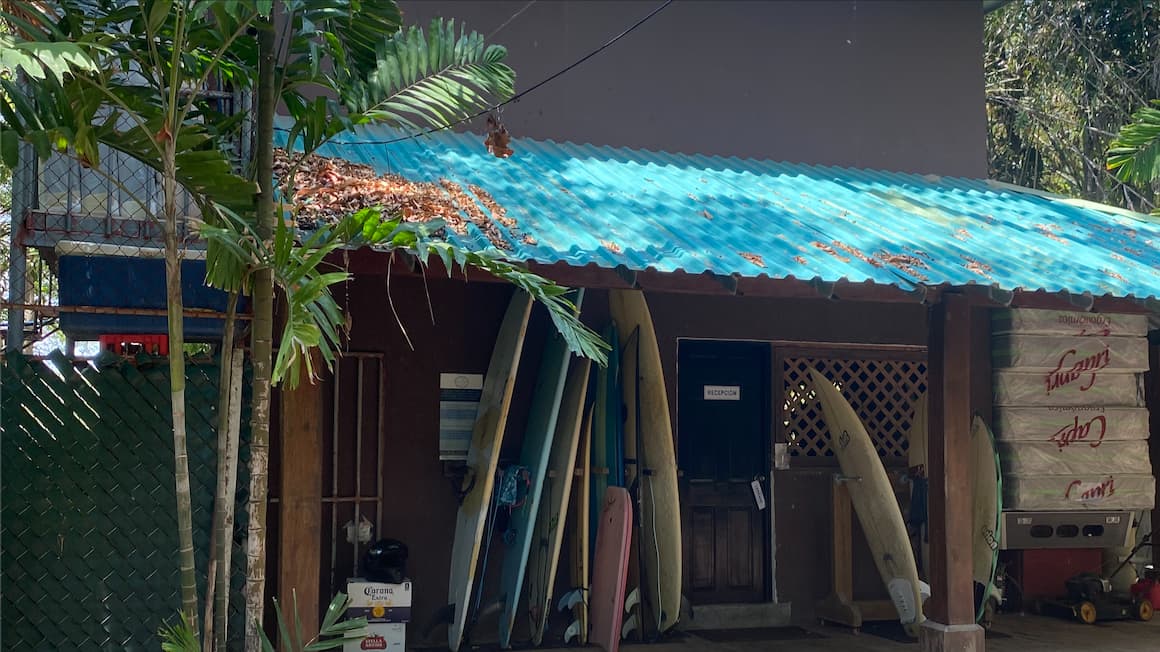
El Salvador is a country with a troubled history (even by Central American standards) and many problems in the present day. While it is true that El Salvador experiences one of the highest rates of violent crime anywhere on earth, foreigners are rarely targeted .
Basically, if you go looking for trouble, you’ll definitely find it in El Salvador. That being said, the locals look forward to the day when tourism can take off a little better because life is calmer here. They’ll go out of their way to make sure you’re safe and comfortable and enjoying this epic little country.
That said, I wouldn’t venture out into San Salvador at night. However, during the day, San Salvador is pretty dope to explore.
What to Know Before Visiting El Salvador
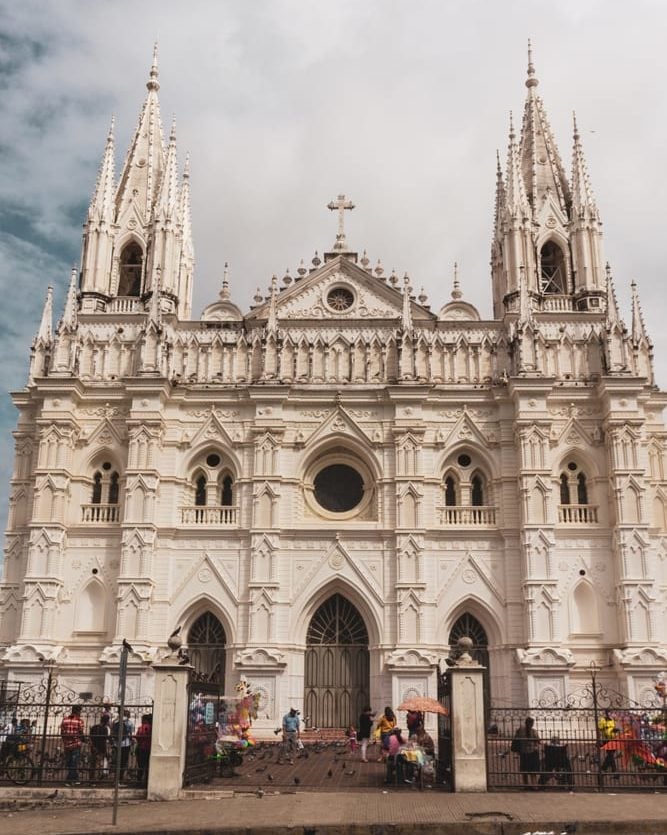
- Don’t miss out on… Visiting the surf town El Tunco. There is a fun expat vibe, plus the seafood and waves are plentiful.
- Keep an eye out for… Pickpockets and being out late at night in San Salvador. San Salvador is probably not going to be the greatest experience anyway. Get out and head to the beaches, mate!
- The coolest hostel is… Tunco Lodge – a great place to relax in between surf sessions.
- The best food is found in… small local eateries, markets, and food stalls. Generally, I found the best food in the small coastal towns in El Salvador. I mean, fresh ceviche all day, every day? Yes, please!
Backpacking Honduras
Do you want to get PADI SCUBA certified on your backpacking Central America adventure? Head to the Bay Islands , amigos! This is one of the cheapest places in the world to get certified for SCUBA diving.
The legendary island of Utila is a backpacker’s paradise. There are more than a dozen dive centres to choose from. Roatan is a bigger island that caters more to cruise ships and older tourists. It is more expensive than Utila, but the SCUBA diving is arguably better.
The ruins at Cóban are the most significant in Honduras. Pico Bonito National Park is another major highlight of the country. There is an abundance of wild camping and hiking potential in the park.
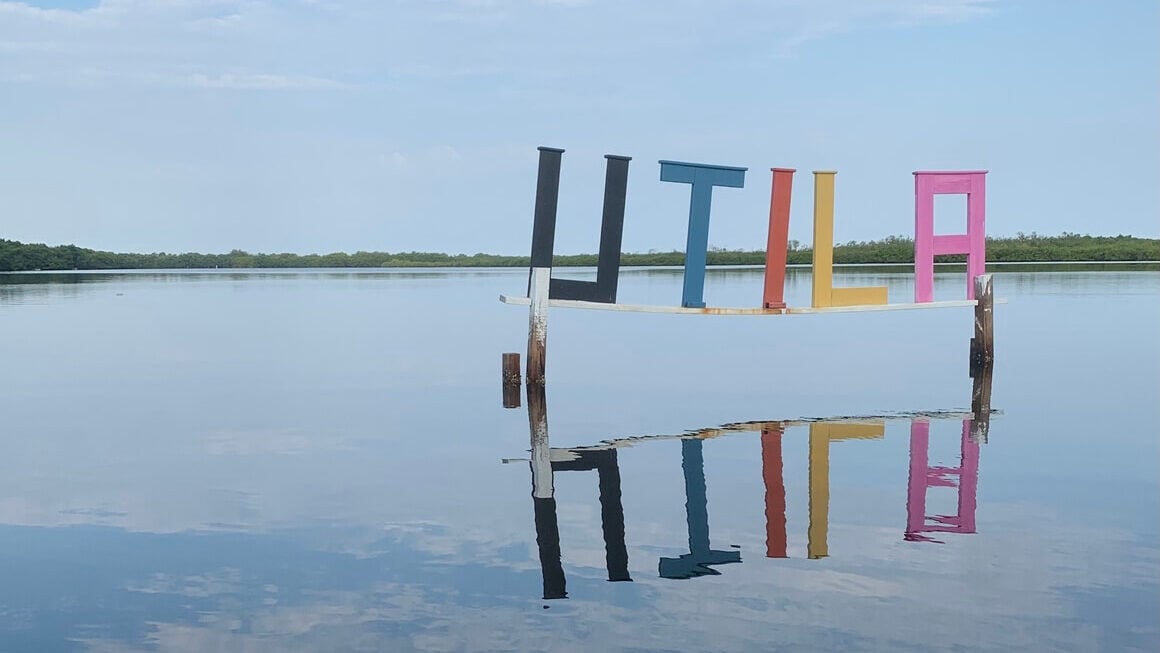
Honduras often gets skipped over by backpackers – except for Coban and Utila. No, the rest of Honduras seems to remain off the beaten path!
This is a bit of a shame considering there are some epic jungle hikes, and even a sneaky surf beach or two. It’ll definitely be less touristy so your Spanish better be up to scratch. 😉
In all seriousness, as this whole Central America backpacking thingy is very serious, if connecting with locals and seeing a more local side to a region is up your alley – Honduras is the place for you to explore.
What to Know Before Visiting Honduras
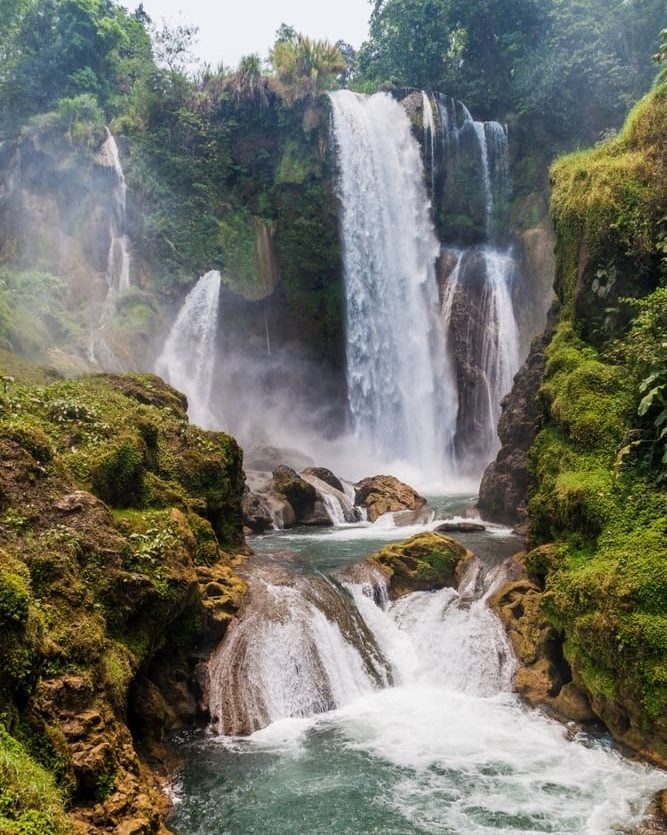
- Don’t miss out on… SCUBA diving in the Bay Islands and going to Utila in particular.
- Keep an eye out for… your general well-being in big cities. Also avoid being ripped off by taxi and shuttle drivers. Try to learn what the fair price should be before setting off.
- The coolest hostel is…. Roatan Bed and Breakfast – This super chill hostel in Roatan has been popular with travellers and lived up to expectations since it opened. A great place to make new friends.
- The best food is found in… Johnny Cake bakeries! Honestly, anything from the street stalls!
Backpacking Nicaragua
I love Nicaragua because you can get beautiful beaches similar to those in neighbouring Costa Rica, but without the steep prices. Nicaragua is becoming the backpacker capital of Central America, and fast too.
The Pacific Coast is brimming with surf beaches, funky yoga retreat centres, and ex-pats in addition to friendly locals. The colonial cities of Granada and Leon have beautiful architecture, grand plazas, and strong ties to the Sandinista movement that gripped Nicaragua in the 1980s.
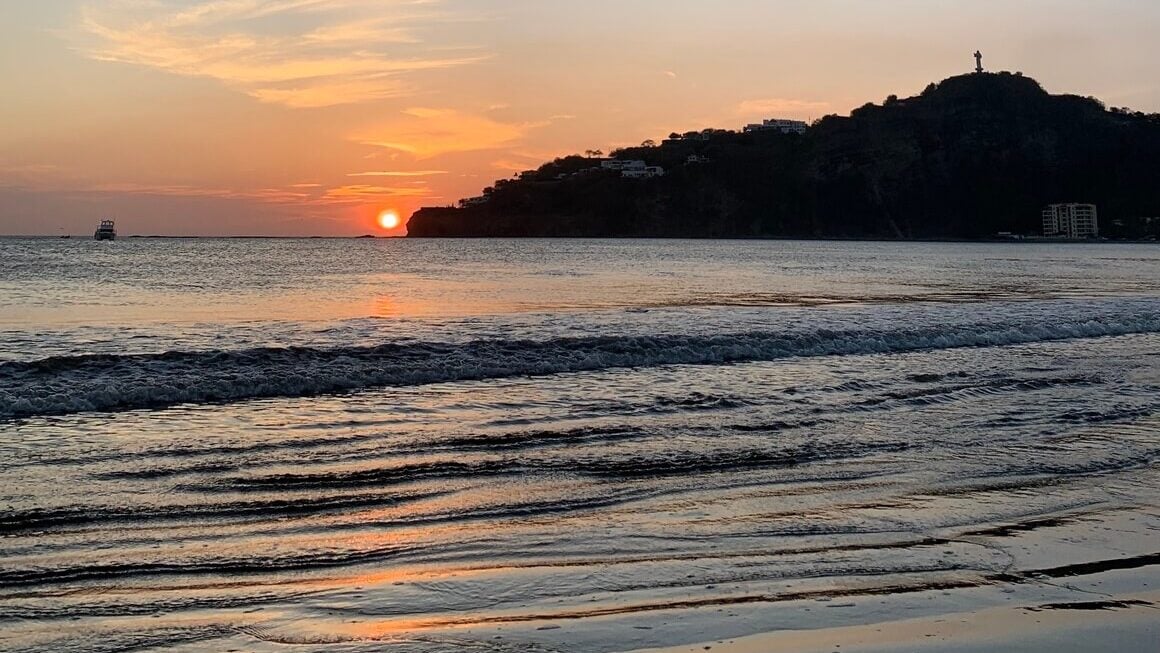
Ometepe Island is surprisingly underdeveloped in many areas. You can rent motorbikes and really explore what the island has to offer. If you like waterfalls, motorbikes, swimming, and rum, head to Ometepe for a few days.
The river and jungle areas of Nicaragua’s interior are wild and full of adventure potential. The Corn Islands off of Nicaragua’s Caribbean beaches are the most far-flung destinations in Central America.
It is no easy effort to arrive there (without flying). Once you do, you will be rewarded by the lack of backpacker hordes.
Nicaragua is the cheapest Central American country! So have a blast without breaking the bank, aye!
What to Know Before Visiting Nicaragua
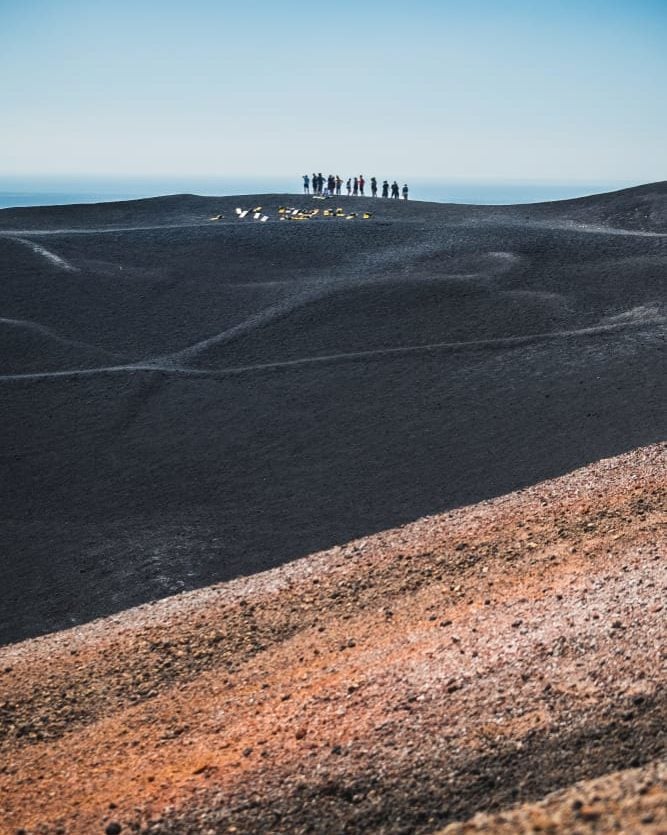
- Don’t miss out on… Laguna De Apoyo – A gorgeous freshwater lake where one can swim and chill. Also renting motorbikes on Ometepe Island.
- Keep an eye out for… Other backpackers to share the cost of pricy tours with.
- The coolest hostel is… Surfing Turtle Lodge – I personally stayed at this place and kept extending! This is one of the coolest and most unique hostels in the world. If you don’t believe me, Lonely Planet says so too. It’s remote though – cos it’s ON the beach.
- The best food is found in… Leon and Granada for authentic local food. Like with anywhere in Central America: eat from the streets! The world’s best street food is always worth the diahorrea risk. 😉
Backpacking Costa Rica
Costa Rica is the long-standing adventure capital of Central America. Backpackers have been flocking here in search of that pura vida for decades. Costa Rica offers pretty much everything you could ask for: endless wildlife, cloud forests, amazing beaches , huge parties, and an overall easygoing vibe.
The thing is, Costa Rica lives up to the hype. From the capital of San Jose to the Pacific Coast and then back through the jungle to the Caribbean Coast – Costa Rica is really a slice of paradise. Camp out on the beaches as much as possible – trust me, it’s incredible!
Explore the Costa Rican national parks . Learn how to surf. Drink coconut water every damn day.
Make new friends and have the time of your life exploring this special place! I can guarantee that you will come back to Costa Rica for more someday. I sure did.
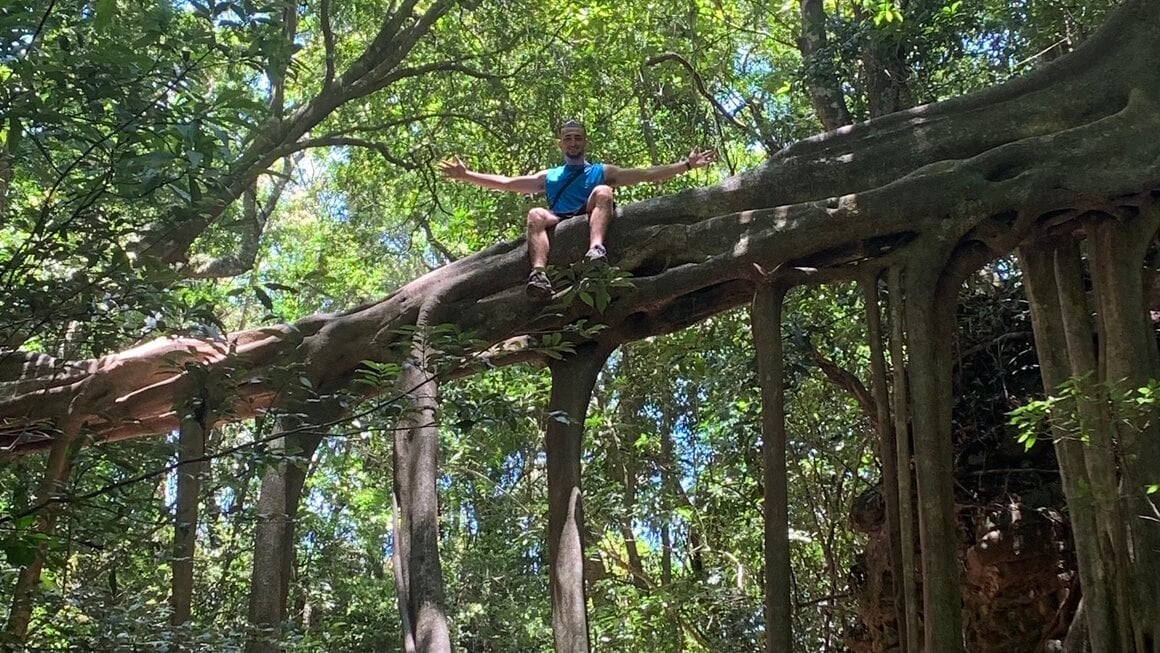
With so much natural beauty, it’s no surprise that Costa Rica is full of great hikes . The Arenal Volcano area is particularly packed with excellent trails.
Costa Rica has the reputation for being one of Central America’s most expensive countries. Unfortunately, that reputation is true.
That said, exploring this magical country is bound to be a highlight of your backpacking trip. Budget travel in Costa Rica is entirely possible. It just takes a little more effort than backpacking in one of the neighbouring countries.
What to Know Before Visiting Costa Rica
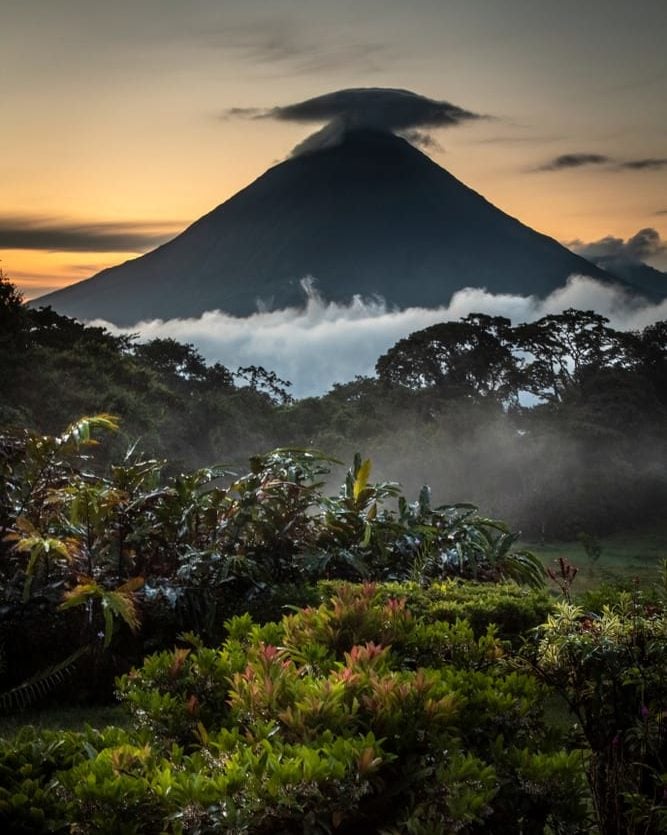
- Don’t miss out on… trekking through the cloud forests around Monteverde, taking a surf class, and staying in a jungle treehouse.
- Keep an eye out for… Staying in San Jose too long. Just a night is enough in San Jose. Keep moving on to the next place.
- The coolest hostel is… Luminosa Montezuma Hostel – Great staff and unbeatable location atop a small cliff overlooking the ocean! Natural springs nearby.
- The best food is found… along the Caribbean coast (e.g Puerto Viejo ). Food in Costa Rica is quite similar from region to region, so I really appreciated the Afro/Garifuna influence found here.
Backpacking Panama
Ok, straight off the bat: Panama is much more than just a tax haven for rich guys . There are some pretty epic volcanoes and jungles to go romping through and the Caribbean Coast is full of some pretty epic slices of paradise!
In fact, the journey from Bocas Del Toro in Panama takes only a few hours to get to from Costa Rica. If you are there in the right season (dry) there is great scuba diving and fishing.
Like Costa Rica, Panama has some fantastic wild jungles and forests once you escape the numerous banana and palm oil plantations. Baru Volcano National Park is a good place to start exploring.
The San Blas Islands are stunningly beautiful as well. Going through the San Blas Islands is a popular way that backpackers end up getting to Colombia and beginning their backpacking South America journey. Really, if you want to be exploring these low-lying islands by boat – you could try volunteering on a sailboat in the area!
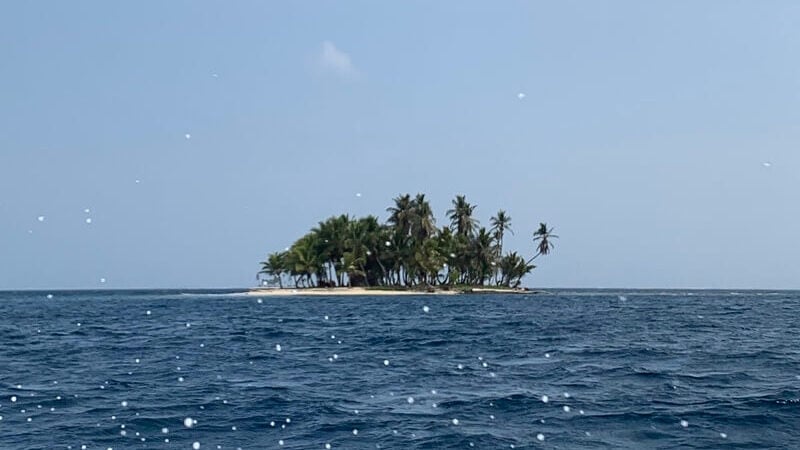
Panama City is a huge sprawling metropolis where one can find some civilization and the associated annoyances. The international airport in Panama City is the main hub for transportation for the region – including flights south to Colombia.
I found it deeply interesting to catch a bus from the outskirts of Panama city and watch as the rural landscape dotted with shanty houses slowly transformed into a city more shiny and full of skyscrapers than anything I’d known back home (bearing in mind I came from a wee Australian town!).
Still, Panama City has some great hostels and interesting sights. I’d recommend climbing the hill to get some epic views of the place.
What to Know Before Visiting Panama
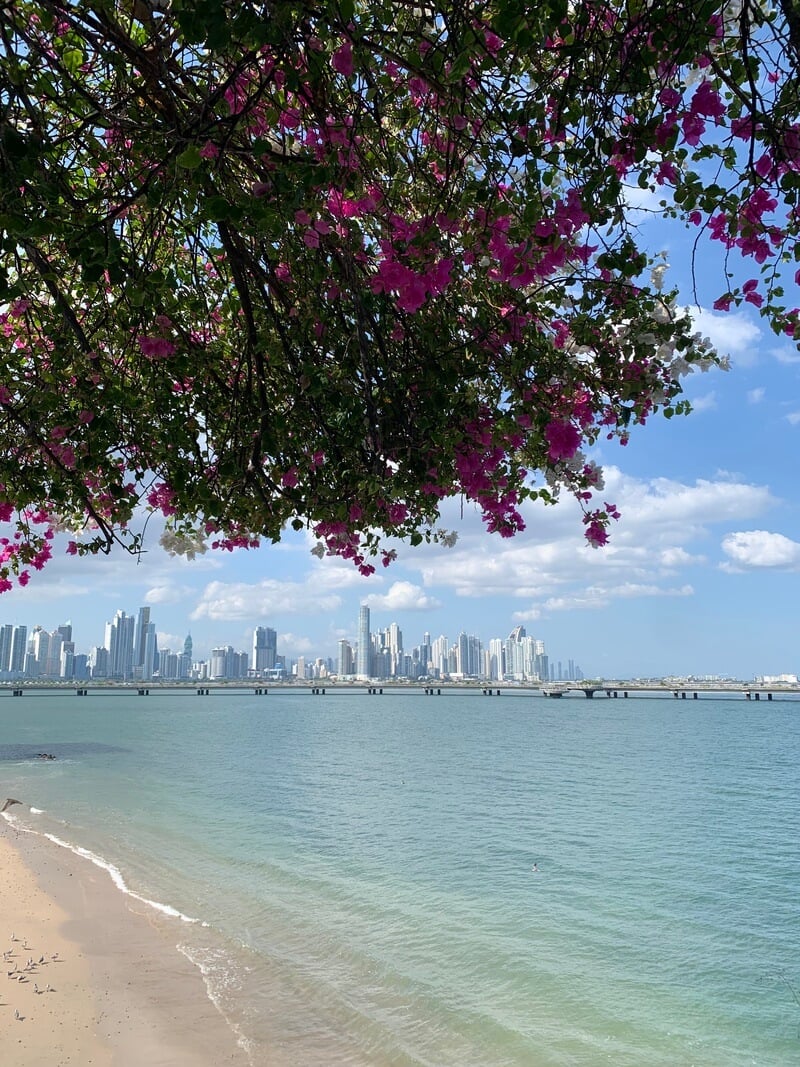
- Don’t miss out on… spending a night on Red Frog Island. If you’re a bit sick of the party hostels in Bocas del Toro , Red Frog is a great place to escape to.
- You know what’s overrated… Any organised “coffee” tour. Honestly, I’m partial to instant coffee so maybe I’m not the best judge! Apparently some of the best coffee in the world is here in Panama – but I’d just sample it yourself from local cafes!
- The coolest hostel is… Lost and Found Hostel – A legend among Panamanian hostels! Fun, interesting, eco-friendly, and amazing views.
- The best food is found …when sailing in the San Blas. Nothing beats fresh fish caught that day by the skipper.
Off the Beaten Path Adventures in Central America
The so-called gringo trail is definitely a thing here in Central America. There are certain hotspots where backpackers congregate. If you ask me, Costa Rica is the country most heavily populated by people travelling in Central America.
While there are plenty of spots on the gringo trail worth visiting, there are ample opportunities to get out and really explore. Indigenous villages, far-flung jungles, isolated beaches, remote mountains, winding rivers, and plenty of national parks provide an eternity of off-the-beaten path adventure potential.
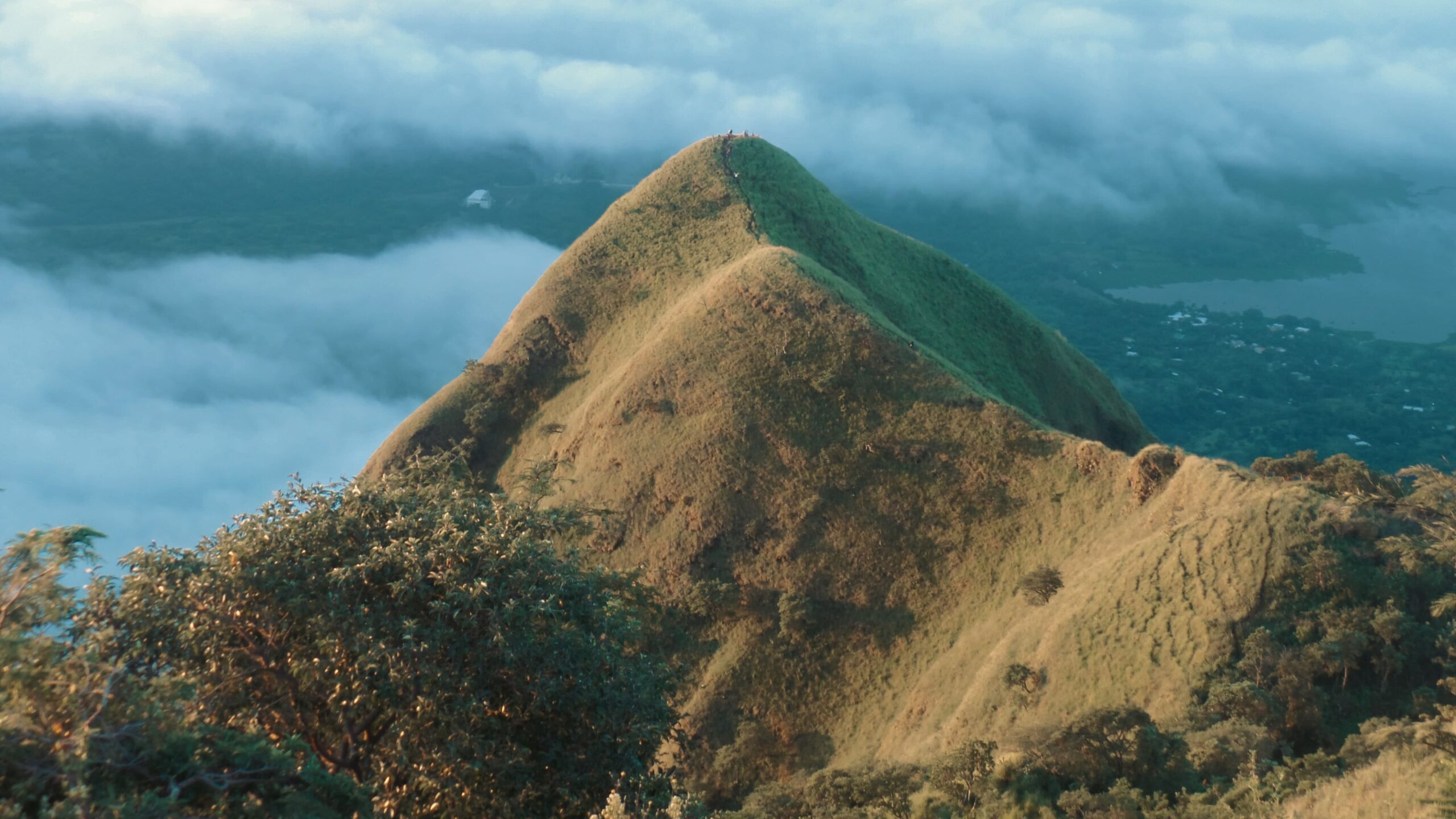
Honduras and El Salvador are two countries that get almost entirely overlooked! This to me is crazy, as I had some of my best memories surfing in El Salvador and tramping through the Honduran jungle.
Even within relatively popular countries like Nicaragua, far fewer backpackers check out the Caribbean Coast. And what a mistake! Some of the best diving, beaches, and food is here.
I think it’s about travelling slowly, authentically, and mindfully. Sure, some tourist spots will be worth your time – but many won’t. And the rewards of getting out there to explore are just so juicy!

We’ve tested countless backpacks over the years, but there’s one that has always been the best and remains the best buy for adventurers: the broke backpacker-approved Osprey Aether and Ariel series.
Want more deetz on why these packs are so damn perfect? Then read our comprehensive review for the inside scoop!
It’s not finding something to do that’s tricky in Central America – it’s picking what to do first! There are some truly spectacular adventures to be had: above, below, and on the water. Whether you end up a boat bum, sailing the Caribbean Coast of Central America or whether you simply dive from time to time, the water will reward you here!
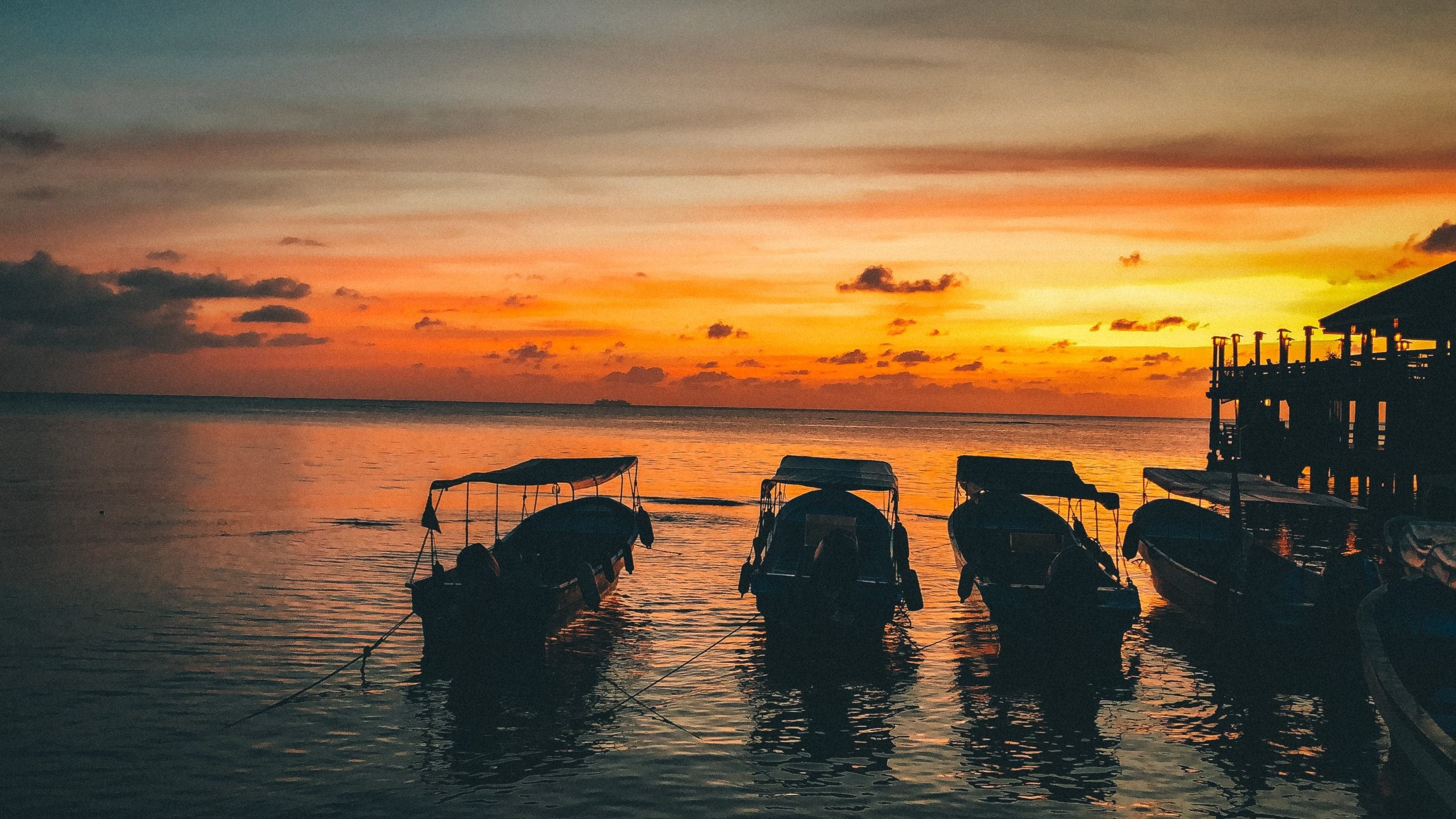
But the jungles, the Mayan culture, the street food, and the markets are also incredible. The more friends you make with artisans, the more likely you are to suddenly know how to make macrame. This is a bit of an obscure thing to do, but it is a handy backpacker job in a pinch!
Anyway, whatever you end up doing in Central America, you know it’s going to be a good time.
1. Get your open-water diving certification
You can SCUBA dive in pretty much every country in Central America and getting your certification will open up a whole new world of travel possibilities. The reef off Cozumel is pretty epic; as are the reefs off Belize. The cheapest place to get your actual certification is in Utila, Honduras.
Diving life is freaking dope! Not only do you get to make friends with the fish, but you also get to indulge in the diving lifestyle. Yeah, there’s a bit of drinking and partying involved let me tell you. 😉
2. Study Spanish
I did two stints of study on two different trips at the Mountain School outside of Xela. The experiences involved a few homestays and truly elevated my Spanish skills to the next level.
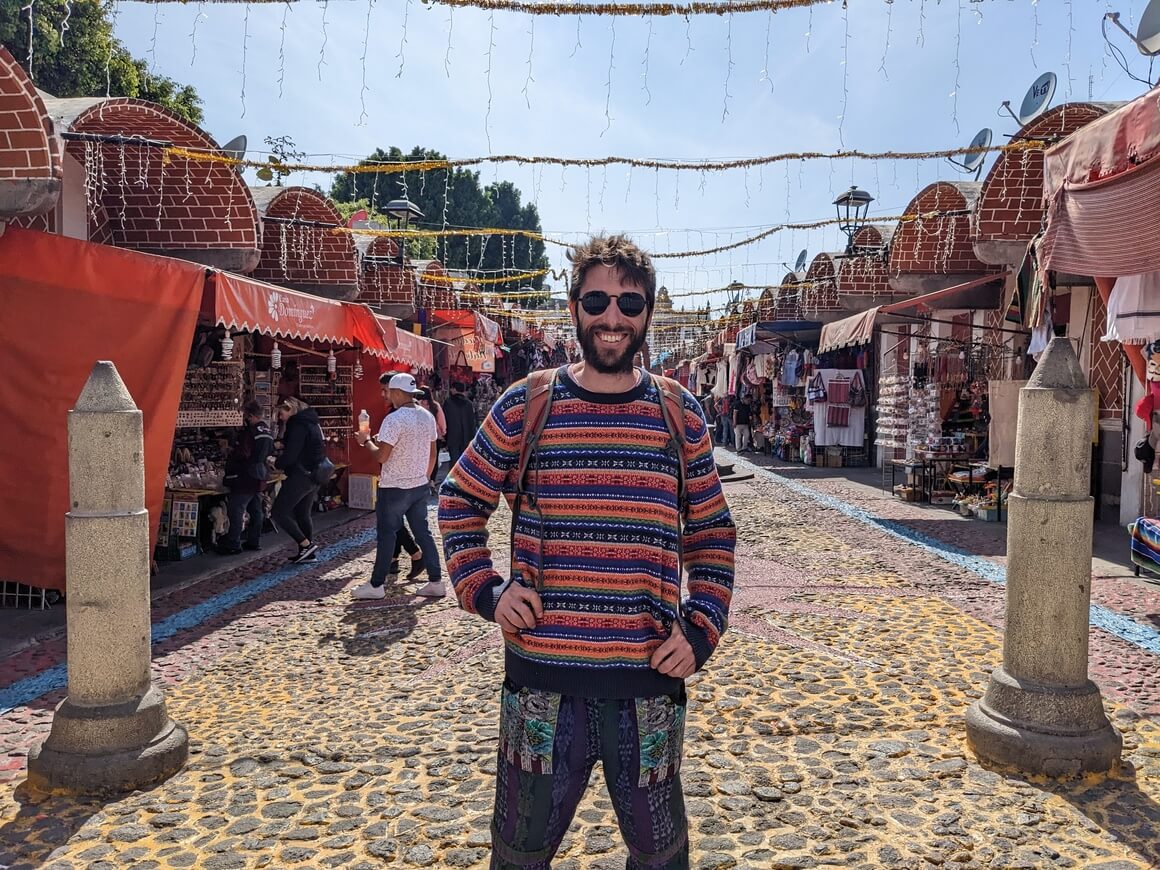
You can study Spanish almost anywhere in Central America. The more you sink into a community, the better your language skills get. The better your language skills get, the easier it is to get a richer experience in the country.
3. Stay in a treehouse in Costa Rica
One of the coolest places I have stayed EVER in 10 years of travel was atop a 35-meter treehouse in the middle of the jungle just south of Manzanillo (south Caribbean coast). Tell the owner I said hi if you stay there! The place is called the Nature Observatorio , check it out.
There are so many eco-lodges in Central America. Ok, they might not be quite as cool as a treehouse, but they are pretty damn beautiful – and doing just a little good for the planet.
- Ultimate Eco Lodges Costa Rica
- The Best Eco Lodges in Nicaragua
4. Volcano Boarding in Nicaragua
This activity speaks for itself: charge at top speed down the side of a volcano! Ok, so it’s little more than for novelty’s sake but you know what? Sometimes you’ve just got to do things and be a bit childish!
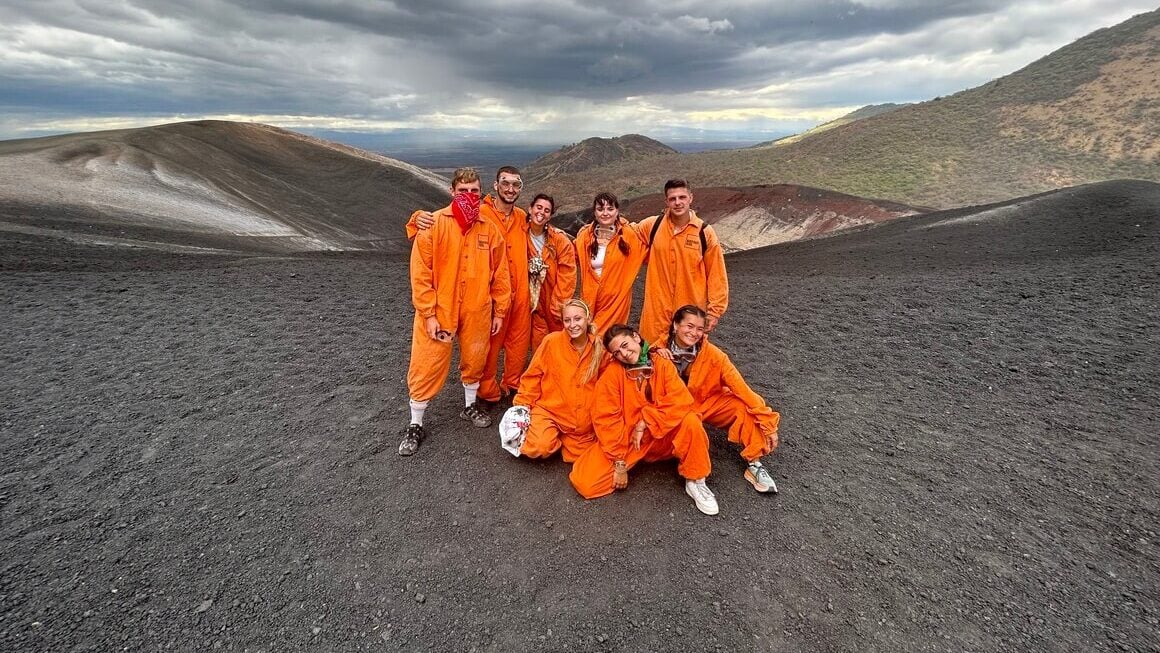
It’s a hell of a lot of fun and the scenery is really not too bad either.
5. Eat Lobster in Belize
One of the best (and cheapest) places to eat lobster anywhere in the world. No, but for reals, there is nothing better than fresh seafood.
It needs little other ingredients and is so damn good for you. As long as you check in with local regulations, you could even try your hand at spearfishing and get yourself some dinner!
Lemme suggest right now that fresh langouste goes very well seared in a lemon butter sauce. Simply, but delicious!
6. Take a Boat Down the Rio Dulce in Guatemala
It is actually possible to leave Guatemala by boat, bound for Honduras Bay Island through this jungly river system. I actually delivered sailboats from the Rio Dulce to Honduras a couple of times, but many backpackers can simply volunteer on a sailboat heading in that direction.
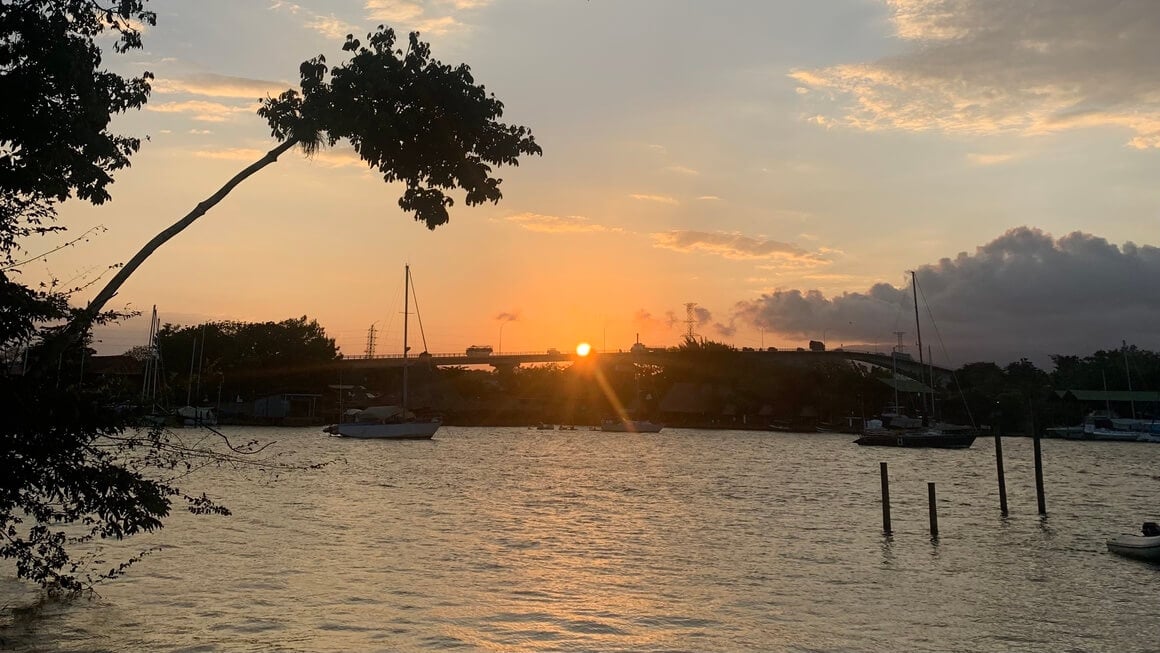
If you don’t end up on a sailboat, I’d definitely still recommend a boat ride up the Rio Dulce. Basically, you realise how puny your sailboat is as you come in surrounded by walls of the green jungle… Yeah it’s pretty freaking epic.
7. Visit the San Blas Islands in Panama
Whether you are a party animal or beach lover (or both) – a trip around the San Blas islands is one you’ll never forget (or will never remember, depending on rum consumption).
If you are sailing at your own pace, you’ll be able to get into the swing of island life and see some of the cultures there. Most people simply pass through – which is all well and good and you’ll definitely still have a dope party time! But to really understand how incredibly stunning – but also unique – San Blas is, then you’ll need to slow down and spend some time there.
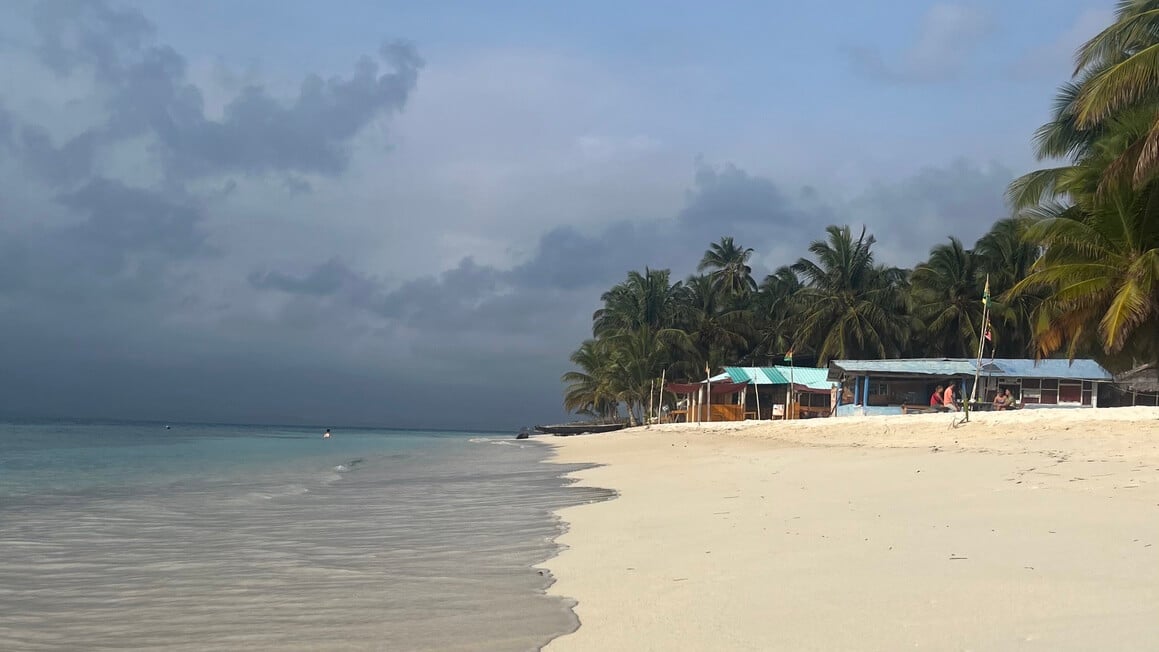
8. Ride the waves!
Nicaragua and Costa Rica in particular are world-class surf destinations and great places to learn, but the entire Pacific Coast of Central America is full of epic surf spots. El Salvador is a surfing hotspot that is overlooked – and that’s a shame!
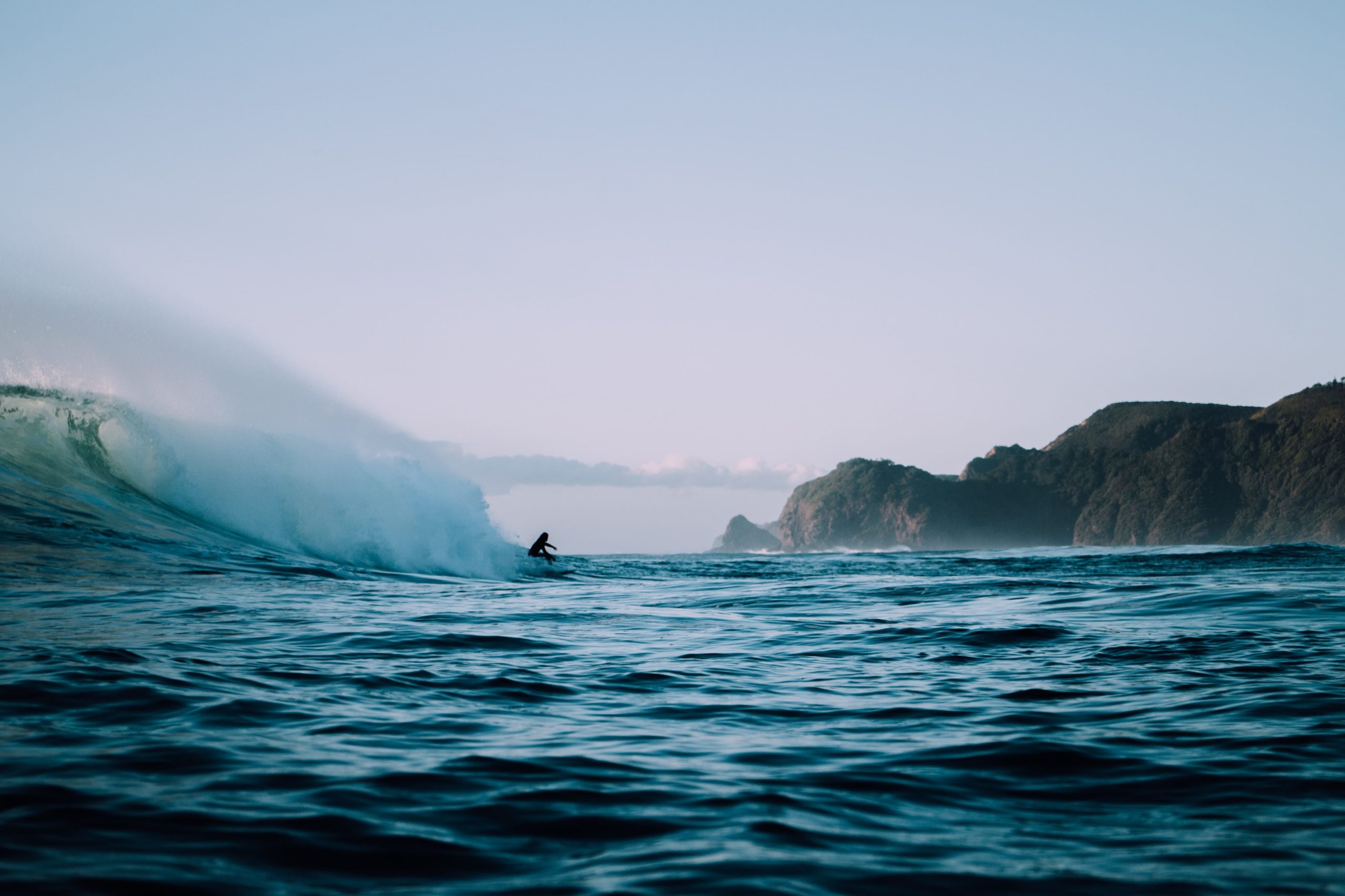
So all you surf bums need to pack your boards and get on down to Central America. A goddamn delightful trip awaits you! Plus, we all know the rules of surfing life. Dawn surf, beers for lunch, party all night.
9. Visit the Cenotes in Mexico
Cenotes are a little slice of magic. They’re these clear, blue swimming holes sunken into limestone earth. The best swimming holes on earth are found in the Yucatan Peninsula in Mexico. The Maya used to use them for water sources… or dropping dead people…
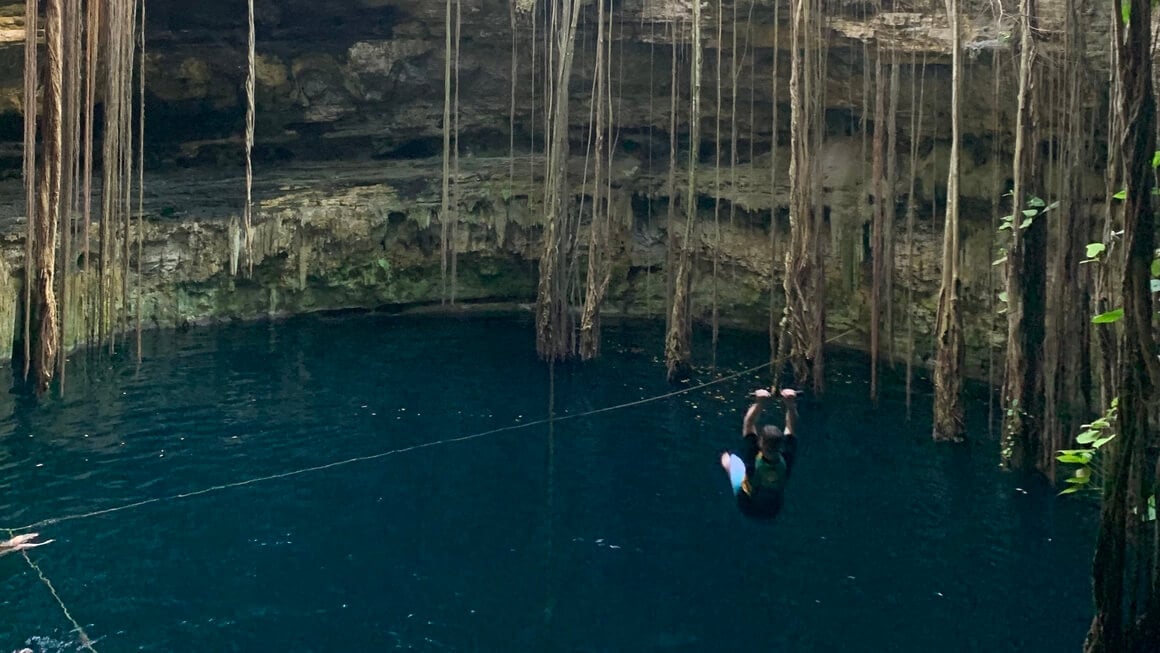
Today, there is almost something mystical to these locations. And even the popular ones are bloody awesome.
It’s really out of this world to be able to see up to 50 metres deep! Plus, the cold water is such a welcome relief when you’re sweltering through the Yucatan’s humidity.
10. Change your plans
Here’s a warning. Central America travel goes something like this: you arrive, you fall in love, you don’t want to leave. While it’s good to have a rough idea of which direction you want to go, the worst thing you could do is plan every part of your backpacking trip to a T.
Get chatting with locals and other backpackers about their favourite places. Leave some wiggle room in your itinerary so you can extend your stay in those places that make you feel at home.

Wanna know how to pack like a pro? Well for a start you need the right gear….
These are packing cubes for the globetrotters and compression sacks for the real adventurers – these babies are a traveller’s best kept secret. They organise yo’ packing and minimise volume too so you can pack MORE.
Or, y’know… you can stick to just chucking it all in your backpack…
Central America has plenty of budget accommodation options for backpackers. When you are not passing the night from the comfort of your tent or Couchsurfing, you’ll need to book a hostel.
Whether you just need a place to lay your head or a spot to meet fellow travellers, hostels are clearly where it’s at… Once you come around to hostel life , you’ll forever look back on the fond memories you made there!
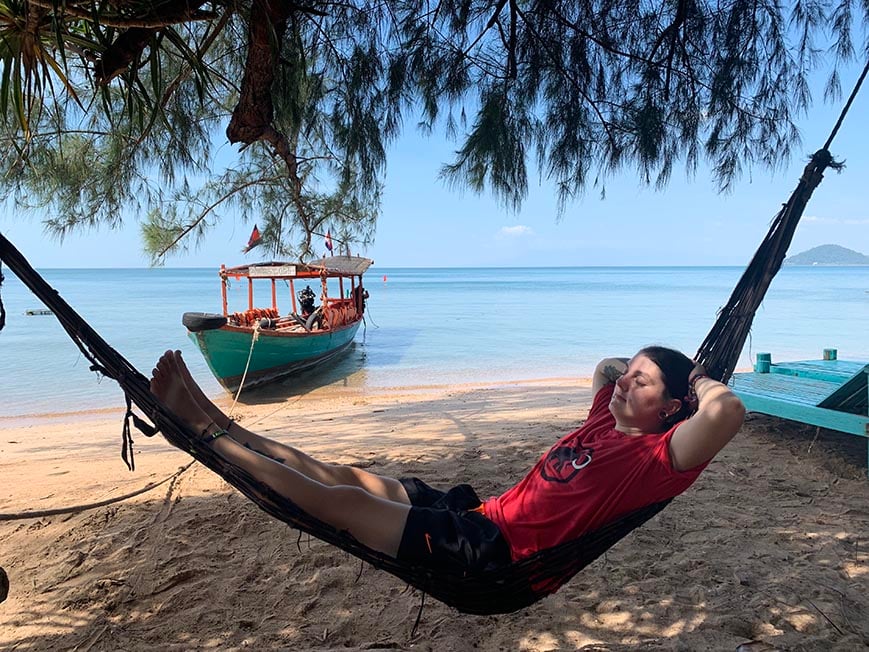
But you know what? Nothing beats a night camping under the stars or deep within in the jungle. I think one of my favourite nights in all my travels was camping at the Yaxha ruins in Guatemala. Of course, I had a good hiking tent , so my sleep was perfect.
The evening was spent chatting with the custodians of the park and playing cards. I fell asleep to the sounds of howler monkeys and woke to see the sunrise over the lake. So yes, staying in a hostel is an awesome way to connect with other travellers – but sometimes you’ve just got to go bush.
- Where to Stay Mexico
- Where to Stay Belize
- Where to Stay in Antigua Guatemala
- Where to Stay in Leon Nicaragua
- Where to Stay Costa Rica
- Where to Stay in Panama City
Each country in Central America will affect your budget in a different way. I found Nicaragua to be the cheapest country in Central America, followed closely by El Salvador, and Guatemala.
Honduras can be very cheap as well, though not super cheap in the Bay Islands. Costa Rica and Belize are far more expensive for certain things like transport and accommodation.
Travelling in Central America certainly does not need to be expensive! If you are worried about spending too much money, I recommend allotting more time for yourself to explore the cheaper countries. But honestly, if you stick to the tried and true methods of budget backpacking , your wallet will be quite alright.
A Daily Budget For Backpacking Central America
Here is a breakdown of what you can expect to pay on a daily basis whilst backpacking Central America…
Central America Budget Travel Hacks

- Camp: With plenty of gorgeous places to camp, Central America is a great place to pitch if you have a good-quality tent . Camping saves you money and can help you get off the beaten path.
- Pack a hammock: If you’re feeling really adventurous and want to save some cash, consider picking up a backpacking hammock . Central America has plenty of palm trees and hammock-ready beaches. If you want to bring something with you on your trip that you will use all the time, this beauty is your best bet.
- Cook your own food: Travel with a portable backpacking stove and cook your own food to save some serious cash whilst backpacking across Central America. If you plan to do some overnight hiking trips or to spend time at a surf camp, having a backpacking stove will be a great asset.
- Couchsurf: Central American locals are awesome. Get to know some by learning to couchsurf ! Check out Couchsurfing to make some real friendships and see a country from the perspective of locals. When using Couchsurfing, be sure to send personalized messages to your potential host. A generic copy-and-paste message is much more likely to get turned down. Make yourself stand out.
Why Should You Travel to Central America with a Water Bottle?
Plastic washes up on even the most pristine beaches… so do your part and keep the Big Blue beautiful!
You aren’t going to save the world overnight, but you might as well be part of the solution and not the problem. When you travel to some of the world’s most remote places, you come to realise the full extent of the plastic problem. I hope you become more inspired to continue being a responsible traveller .
Plus, now you won’t be buying overpriced bottles of water from the supermarkets either! Travel with a filtered water bottle instead and never waste a cent nor a turtle’s life again.

Drink water from ANYWHERE. The Grayl Geopress is the worlds leading filtered water bottle protecting you from all manner of waterborne nasties.
Single-use plastic bottles are a MASSIVE threat to marine life. Be a part of the solution and travel with a filter water bottle. Save money and the environment!
We’ve tested the Geopress rigorously from the icy heights of Pakistan to the tropical jungles of Bali, and can confirm: it’s the best water bottle you’ll ever buy!
When to go to Central America varies with the weather as each country in Central America has its own unique climate. The dry season is generally December, January, February, and March : this is certainly the time when most people visit. You can have some great weather in November and April as well.
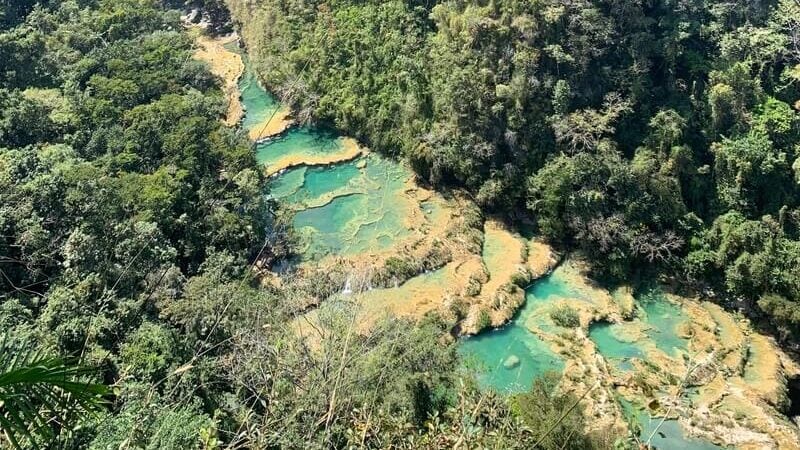
The rainy season can be a beautiful time to visit. The rain only complicates things if you want to do heaps of outdoor activities. During Christmas and the New Year, Costa Rican beaches are flat-out slammed with foreigners and locals alike.
Scuba diving is best in the winter or early spring months ( Nov-Feb ). The water has better visibility and the islands are generally more pleasant when it’s not pissing down rain. Basically, if you’re willing to put up with some rainy days and slightly less crowded beaches then do so: the jungle is certainly beautiful.
Also, the higher in altitude that you get, the more the weather changes. I can’t give a super accurate country breakdown because it truly depends where in the country you are as to what kind of weather you’ll get. Anything by the ocean is going to be more chill and have a less pronounced rainy season.
What to Pack for Central America
For such a variety of climates and range of activities to be done while backpacking Central America, you will need the ultimate packing list .
There is no need to be that person who carts around 50 kilos of luggage. But you don’t want to be without the essentials either!
So what do you really need? Here are some essentials that accompany me on every single backpacking trip.

Snoring dorm-mates can ruin your nights rest and seriously damage the hostel experience. This is why I always travel with a pack of decent ear plugs.

Hanging Laundry Bag
Trust us, this is an absolute game changer. Super compact, a hanging mesh laundry bag stops your dirty clothes from stinking, you don’t know how much you need one of these… so just get it, thank us later.

Sea To Summit Micro Towel
Hostel towels are scummy and take forever to dry. Microfibre towels dry quickly, are compact, lightweight, and can be used as a blanket or yoga mat if need be.

Monopoly Deal
Forget about Poker! Monopoly Deal is the single best travel card game that we have ever played. Works with 2-5 players and guarantees happy days.

Grayl Geopress Water Bottle
Always travel with a water bottle! They save you money and reduce your plastic footprint on our planet. The Grayl Geopress acts as a purifier AND temperature regulator. Boom!
Well, when people realise I’ve spent six months living in Central America and more travelling, they immediately ask: Well is Central America safe ? Whilst it is true that Central America suffered through decades of brutal war, gang violence, and a horrific narcotics trade, modern-day Central America is a different story (though many of these problems still exist, big time).
Don’t get me wrong, Central America still has a huge problem with gang violence and the narco trade, but it is concentrated in specific areas tourists don’t usually wander into. 99% of the trouble I ever hear about from backpackers started with them trying to buy drugs/buying drugs.

So yes, the standard safe backpacking rules apply but no, you’ll rarely be running for your life here. However, I’d still think it was dishonest if I didn’t say that Central America has a higher crime rate than other parts of the world and foreigners are more likely to get caught up in something. Certain areas (mainly cities) in Central America have the highest rates of homicide anywhere in the world (not in a war zone).
That said, foreigners are very rarely involved or targeted by violence. And the one mugging I did accidentally witness was very quickly shut down by the neighbours because of how loud the girl screamed. In fact, the would-be robber was taken aside and dealt with by the community…
Basically, should you on the off chance find yourself being robbed, be loud but don’t be a hero. Aaaand, it’s probably not going to happen to you as long as you keep your wits about you.
- Is Mexico Safe to Visit?
- Is Guatemala Safe to Visit?
- Is Belize Safe to Visit?
- Is Nicaragua Safe to Visit?
- Is Costa Rica Safe to Visit?
- Is Honduras Safe to Visit?
Sex, Drugs, and Rock n’ Roll in Central America
What can I say? The first time I backpacked across Central America – I felt like the months I spent there were almost a continuous party. The backpacker circuit is well established and – in pretty much every hostel you stay at – there are other people game for putting a few beers back.

Drugs like cocaine and weed are VERY abundant along the backpacker trail. My advice: dabbling a few times is a normal part of the backpacker experience – but be careful – 1. the drug trade is one of the most destructive forces in Central America and 2. hard drugs like coke are very addictive and overdoses do happen.
Prostitution is rampant across every country in Central America. I found that in some parts of Costa Rica, I was approached by sex workers nearly every single night. Remember that sex trafficking is also a big problem in Central America and the people working in the trade may not be doing so by choice.
In general, party and have a good time when you feel like it – but remember to take it easy too. Climbing a volcano or doing a big trek is WAY more fun when you are not hungover – take it from me. 😉
Getting Insured BEFORE Travelling to Central America
No matter what you do, travelling always involves some level of risk. So I HIGHLY recommend getting good backpacker insurance sorted before you
Before you go travelling, please consider a good travel insurance provider . Shit happens on the road (and open ocean) all the time, and when it does, it’s nice to know somebody has got your back. And what’s the one travel insurance provider The Broke Backpacker trusts for all its insurance needs…?
World Nomads!
ALWAYS sort out your backpacker insurance before your trip. There’s plenty to choose from in that department, but a good place to start is Safety Wing .
They offer month-to-month payments, no lock-in contracts, and require absolutely no itineraries: that’s the exact kind of insurance long-term travellers and digital nomads need.

SafetyWing is cheap, easy, and admin-free: just sign up lickety-split so you can get back to it!
Click the button below to learn more about SafetyWing’s setup or read our insider review for the full tasty scoop.
I started my two Central America backpacking trips from Cancun and Guatemala City respectively. If you are coming from North America or Europe, you can score some pretty sweet deals on airlines flying into Cancun.
I personally hate Cancun, but its airport gets the job done. It’s much cheaper than Belize City, for example, which really isn’t too far away. To maximize your budget, it is all about finding cheap flights to Central America!
It is also possible to find cheap flights to the other Central American capital cities. Panama City is probably the cheapest, followed by Managua, and San Jose. Check out our post on how to score cheap flights to find a bargain on flights to Central America.
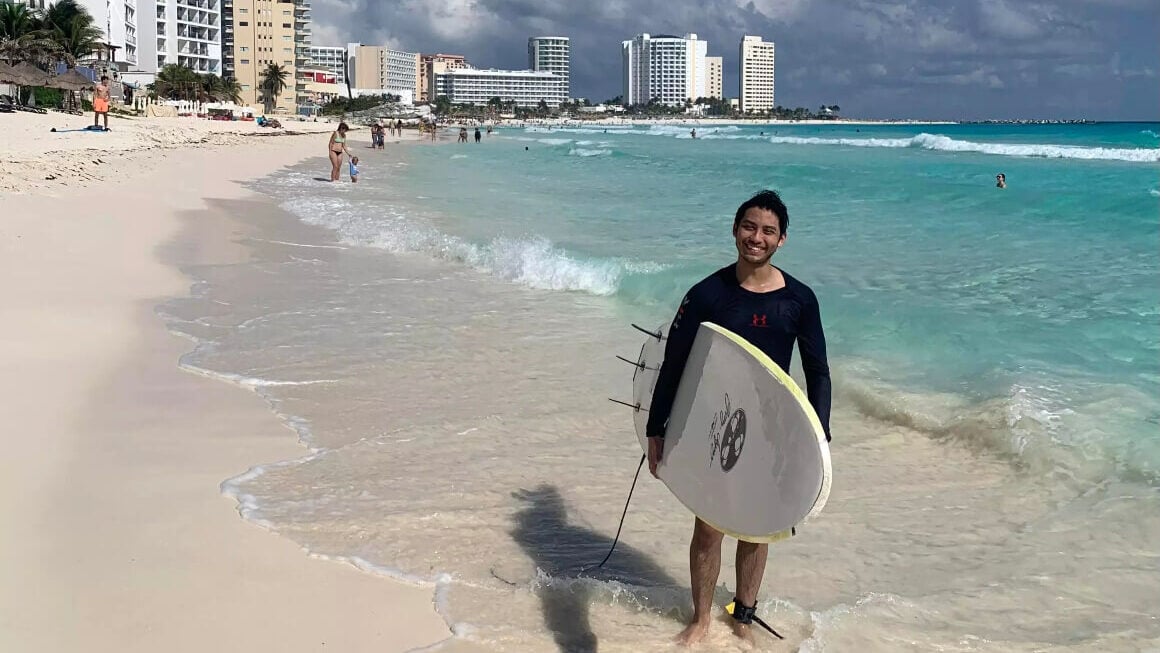
Depending on your time frame and schedule, you can make an informed decision about where to start your trip. If you’re keen on backpacking Central America in its entirety, I recommend starting in Mexico and working your way south. You might be lucky to find a cheap flight to Panama City, but really, that would be very lucky,
Conveniently, most Central American countries don’t require any sort of visa to enter either. Most Western nations, including the US, UK, EU, and Australia, can visit each country visa-free for a period of 90 days. Be aware though that some countries like to charge a small entry fee.
The easiest and cheapest option is to travel to Central America by bus. The region is famous for the chicken bus .
The Guatemalan chicken bus is a sight to behold. These old American school buses are often painted with psychedelic colours and filled to the brim with humans (and sometimes chickens).
A majority of the buses have been bought in the USA at auction and then driven down to Central America to live out a second (exhausting) life in public transportation. Instead of carrying American school children, they are flying down steep mountain roads with various local populations packed inside. I can almost smell the sweet aroma of burning breaks and delicious roadside snacks.
In Costa Rica and the Mexican Yucatan Peninsula, the buses are of better quality, but much more expensive than elsewhere in the region. In major cities, public transit systems are complicated but relatively easy to get around. Some of the larger cities – like Mexico City – have easy-to-use metros.
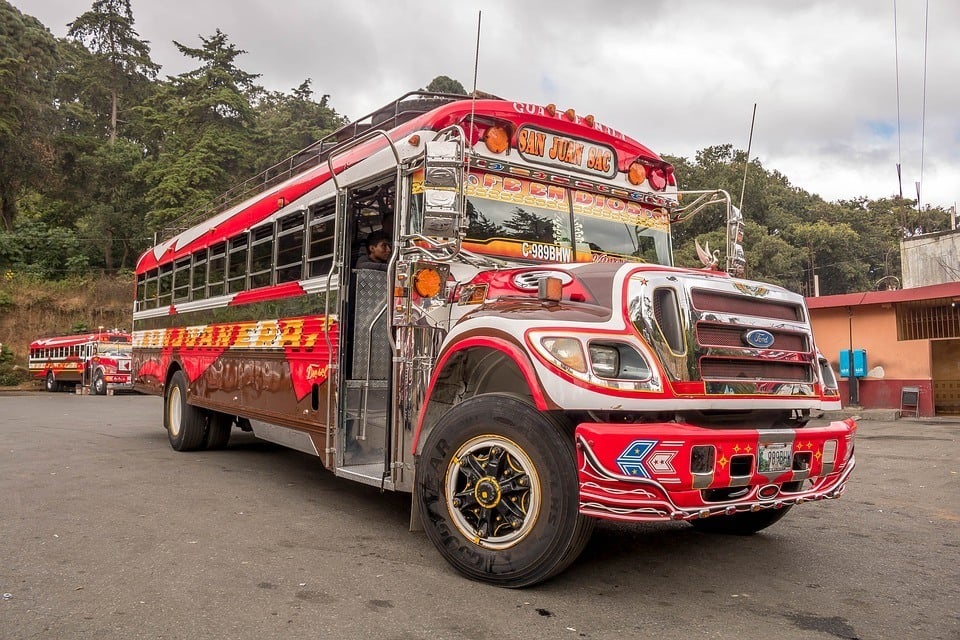
To get to the various Caribbean islands, you can catch a ferry. The ferries are more expensive than I anticipated, so budget accordingly.
You will hear the words “taxi taxi taxi” just about everywhere you go. Taxis are always more expensive than taking the bus but can be useful in certain situations. But turn your haggle game and ALWAYS set the price with the driver before getting into the cab.
Hitchhiking in Central America
Learning to hitchhike is definitely an option, buttttt it’s definitely easier when you know how to speak Spanish. If you dress the part and look like every other Latina vagabond, drivers will typically know what you’re doing. However, I always think it’s a good idea to offer to shout lunch or explain the journey that you’ve been on.
Hitchhiking edict changes from person to person, as some people picking you up, might want talkative company, and some people prefer quiet. This is where it’s much easier to speak Spanish so you can gauge the situation. Depending on the country, you’ll have differing wait times/success while hitchhiking.
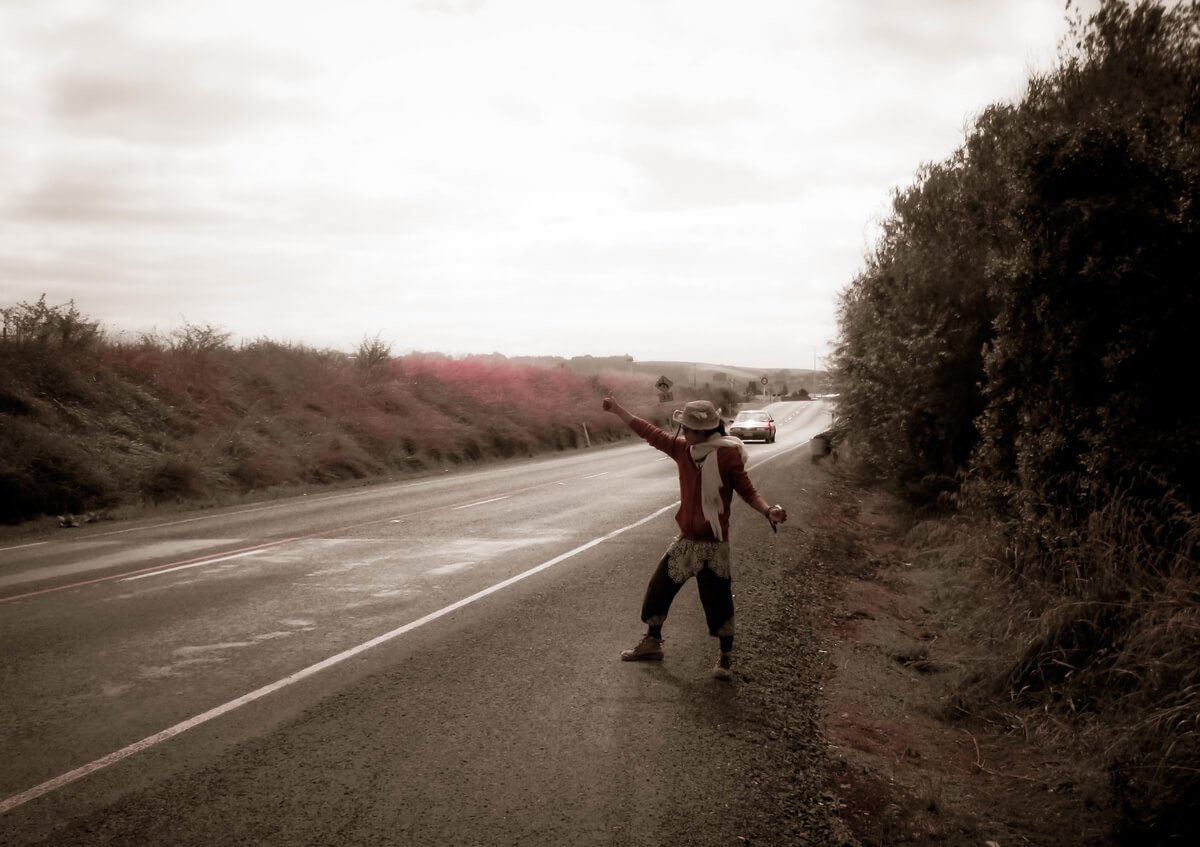
I hitchhiked in Mexico with the most luck. My chicken and I met van lifers, musicians, farmers, and other solo travellers in Central America . I feel like hitchhiking really does open up the world of travel in a much more raw way.
Onwards Travel from Central America
Looking to continue travelling south after backpacking Central America? You have a few options. You can always fly from Panama City, Mexico City, or Cancun (depending on which direction you travel the region) onto South America or Europe.
A far more rewarding alternative is to take a boat. Multiple boat companies now offer passage from Panama to Colombia via the San Blas Islands with trips ranging from three to five days. If you are keen to go on an island-hopping sailing adventure, this option is for you.
From here you can go on to backpack South America! Fuck yeah!
The third option, if you can call it that, is crossing the Darien Gap overland. Rumour has it that you can hire a guide (for quite a bit of money) and cross the Darien Gap on foot. In the past, this was impossible due to narco-terrorist/guerrilla activity and is still considered a very dangerous place to cross . May the backpacker gods be with you if you attempt the journey on your own without a guide.
Taking a boat from Panama to Colombia sounds like the most fun for sure. You’ll have a chance to sleep on totally isolated islands and swim in crystal clear waters whilst drinking some ice-cold beers on your boat… It’s an epic trip.
- Backpacking Colombia
- Backpacking Ecuador
- Backpacking Peru
- Backpacking Brazil
Central America has been an ex-pat destination for decades. The whole spectrum of humanity comes down here for various reasons: retirement, to escape the desk, for the digital nomad lifestyle , to surf endlessly, to party forever, or to simply enjoy a cheaper cost of living away from the rat race.
Central America is one of the leading candidates for backpackers and digital nomads looking for a place to settle long-term (according to recent digital nomad trends ). Certainly, some countries cost more to live in than others, but generally speaking, life just costs less in Central America and one can enjoy a very pleasant lifestyle with about half the cost of living in Europe or the USA.

A new country, a new contract, a new piece of plastic – booooring. Instead, buy an eSIM!
An eSIM works just like an app: you buy it, you download it, and BOOM! You’re connected the minute you land. It’s that easy.
Is your phone eSIM ready? Read about how e-Sims work or click below to see one of the top eSIM providers on the market and ditch the plastic .
Volunteering in Central America
Volunteering abroad is an amazing way to experience a culture whilst giving something back. There are loads of different volunteer projects in Central America ranging from teaching to animal care to agriculture to pretty much everything!
Programs run through reputable work exchange programs like Worldpackers and Workaway are generally well-managed and highly reputable. However, they aren’t without their flaws too. whenever you are volunteering, stay vigilant, especially when working with animals or children.
Central America is home to dozens of distinct ethnic groups – each with its own set of traditions, food styles, dress, and in some cases, language. The ethnically Mayan peoples of the Guatemalan highlands I found to have the richest and most distinct cultural practices and traditions that have largely survived the modernization (and bloody civil war) of Guatemala.
One really feels the vibe of ancient traditions when you spend a few nights in a Mayan village. Similarly, I found the Garifuna communities in Belize and Honduras to be full of life – especially when it came to music and food.
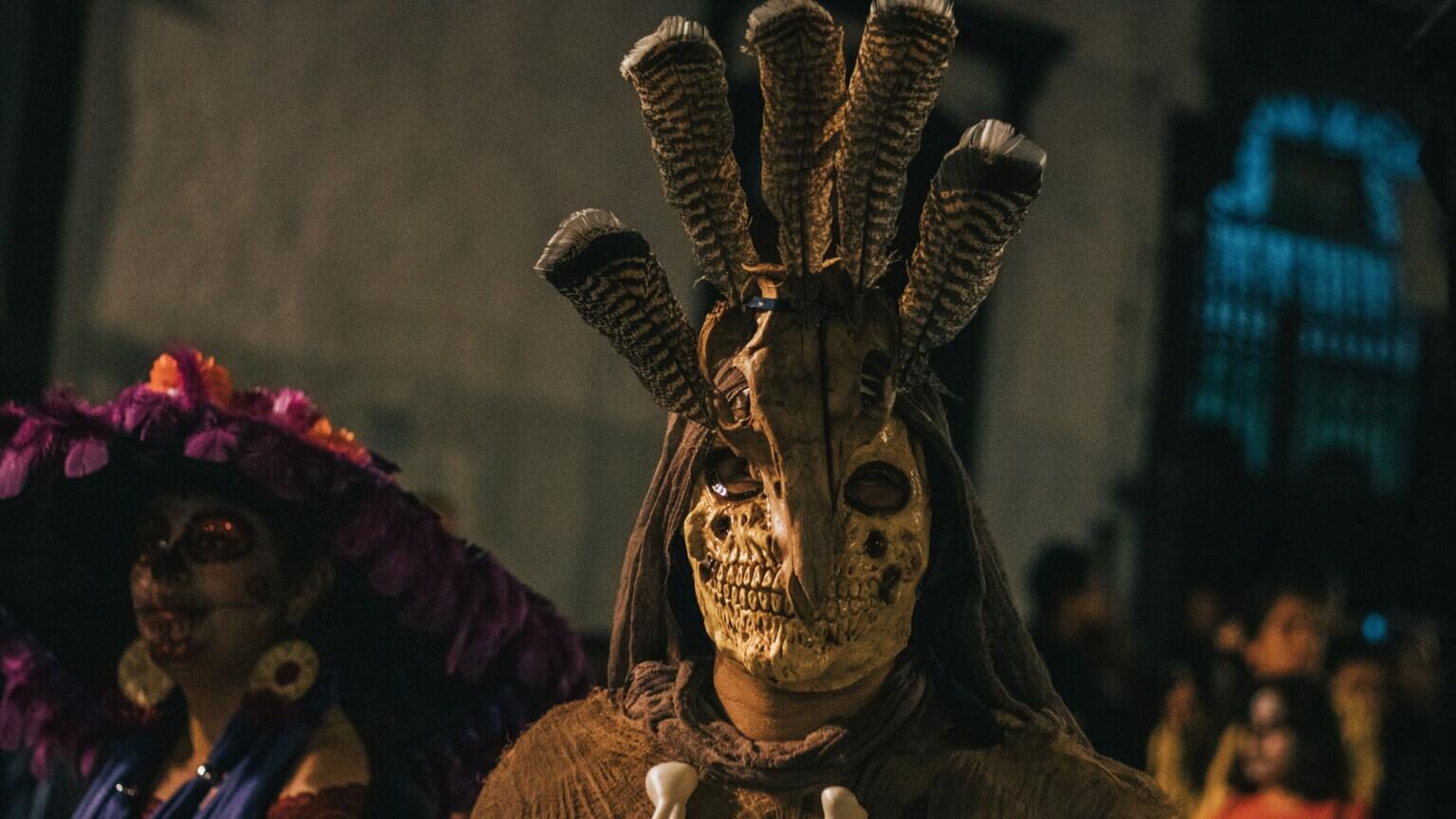
A major thread that connects all of the Central American countries is religion. This is a very Catholic region almost without exception with local saints and patrons to be found in every village it seemed.
In general, I found the people in every country I visited in Central America to be kind, generous, and welcoming – and just as often very keen on sharing a strong drink and a chat with you, time permitting.
What to Eat in Central America
The food in Central America can be as diverse as its human inhabitants…
Though, I’ll start by saying that I have been much more wowed by the food in Asia and the Middle East than by the backpacker staples of rice and beans in Central America. That said, you can find some really tasty stuff to try!
Must-Try Dishes in Central America
- Tamales (Everywhere) – A kinda of staple puree with a filling, cooked and served in a leaf. Every town and every person has their own style. They’re cheap and delicious – so always take at least one wherever you see them.
- Pupusas (El Salvador) – Originating in El Salvador, Pupusas are all over Guatemala. Thick corn tortillas stuffed with fillings – usually refried beans, cheese and/or pork – Nothing like that crunchy fried texture with the squishy inside.
- Ceviche (Everywhere) – Fresh fish doesn’t come any fresher than ceviche. Not cooked, but marinaned in lime. Feels weird, tastes incredible.
- Tacos (Mexico and Guatemala) – If you’re hungry, tacos. If you’re not, tacos. If you don’t eat meat, often no tacos: we have to go hungry in some places.
- Mole (Mexico) – This soul sauce is made up of the ingredients directly from the heart of the women who spend hours on end concocting it. It dates prehispanic and Puebla and Oaxaca have the best ones.
- Gallo Pinto (Costa Rica): The national dish of Costa Rica! Rice and beans (yes, again) stir-fried together to create a speckled appearance. It is usually served for breakfast along with eggs and sour cream or cheese. There is no avoiding it.
- Olla de Carne (Costa Rica): A hearty stew of beef, cassava (a starchy tuber used in Tico cooking), and whatever else gets thrown into the pot.
- Johnny Cakes and Fry Jacks (Belize) : Both the jacks and Johnny cakes are made from flour: the jacks are flattened and fried, the Johnny cakes are round fluffy savory biscuits. Like everything, it’s best with butter or cheese.
- Lobster (Belize): Self-explanatory and f***** delicious.
While you’re out here travelling, vagabonding, and being a broke backpacker, I’d encourage you to have a little pot of funds to try some unique experiences. Because there are some truly special activities to try out when you’re in Central America.
Yes, you can go paragliding or bungee jumping. You can volcano board, or trek through jungles.
But there are two activities that Central America can really claim as its own: SCUBA diving and surfing . The fun in the sun never stops along this coastline!

Things go wrong on the road ALL THE TIME. Be prepared for what life throws at you.
Buy an AMK Travel Medical Kit before you head out on your next adventure – don’t be daft!

SCUBA Diving in Central America
You should know by now that Central America has some excellent scuba diving venues. It is possible to go diving in all of the countries as they all have access to the coast. Mexico, Belize, and Honduras are the clear winners.
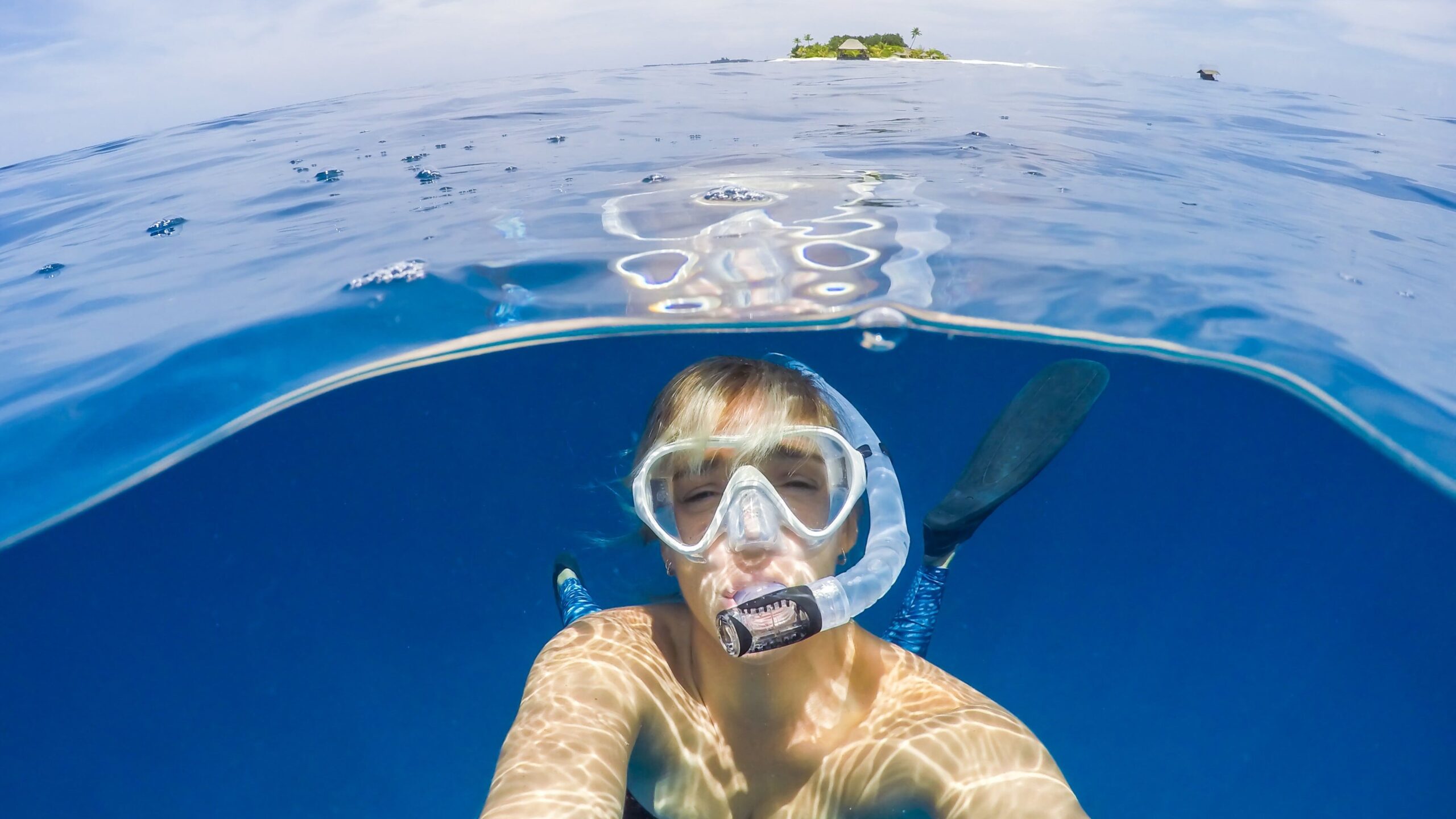
Diving in Belize is more expensive than in Honduras, although undoubtedly still epic. The great blue hole is an awesome diving experience but so are the multitude of shallow reefs around the place too.
Mexico might have the most famous areas – like Cozumel and the cenotes – but I’d argue they more than live up to the hype. You can swim with manta rays, whale sharks, turtles, and innumerable tropical fish!
If you’re going a little further afield, backpacking Cuba can offer up some truly mind-blowing dive sites. Plus, although the Cayman Islands are technically British, they’re just south of Cuba and are basically one whole island full of dive sites.
However, The Bay Islands in Honduras are the go-to spot for getting your PADI certification. The backpacker scene on Utila makes up part of the draw as well.
During my time in Utila, I met many people in the Bay Islands who had moved there for the majority of the year to work in the diving industry. I must admit I was pretty envious of them. If you are looking to live somewhere beautiful long-term, becoming a diving instructor is one sweet way to make that happen.
Surfing in Central America
Surfing reigns supreme on much of Central America’s southern Pacific coast starting in El Salvador and winding down all the way to Costa Rica and Panama. Some of the best surf beaches in the Northern Hemisphere are found here.
New to surfing? There are plenty of surf schools to help you get the start you need in order to catch a few waves.
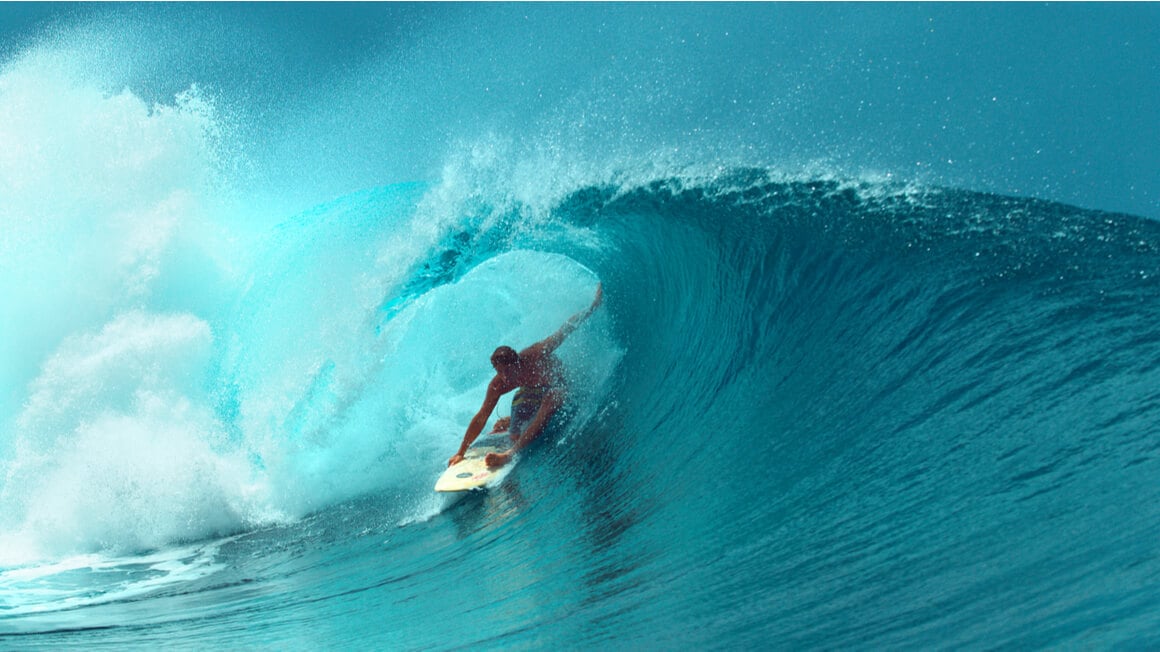
A stint at a Nicaragua or Costa Rica surf camp is a good way to fully immerse yourself in the world of surfing. Meeting people who have a higher level than you always helps one to improve.
A surf camp is basically a surfing hostel with (dorms) or without rooms (camping) where communities of surfers base themselves. Life at a surf camp is rough. Surfing, eating, making friends, and partying make up the main activities. Sound like fun? Time to get packing my friends.
Is Central America safe for backpackers?
Yes, most of Central America is perfectly safe to visit – including Honduras and El Salvador. But there are some parts of all the big cities in the region that you should avoid walking in at night, as well as always following your standard safety procedure.
How long do you need to backpack Central America?
I’d recommend a minimum of 6 weeks in Central America but even that will feel rushed. If you travel slowly and volunteer along the way, you could easily spend 3 – 6 months backpacking in Central America.
Where can I go backpacking in Central America?
All the countries in Central America offer something a little different, so it depends on what you’re after! You could go surfing, hiking, diving, or on a food tour. Guatemala might be your best bet for hiking, whereas El Salvador or Nicaragua would be better for surfing.
Is Central America safe for solo female travellers?
Generally, yes. I don’t think Central America is less safe for women than other travellers. You still need to keep your wits about you, listen to your gut, and then you will likely have a very safe experience.
Why did the chicken cross Central America?
Because Indigo needed a friend. No, it’s not a joke: that really is Indigo’s friend.

Our GREATEST Travel Secrets…
Pop your email here & get the original Broke Backpacker Bible for FREE.
Be good to Central America.
Central America is a region that has not had it easy over the years, and yet they’ve bounced back. It’s a beautiful region full of people that are genuinely excited to show off their home to you. So with that, my last bit of advice would just be to travel in a way that leaves the place better – not worse.
The surfing, the diving, the hiking, the partying… It’s all supremely good here.
You get the best of the backpacker world and the local’s world once you pick up a little Spanish and leave the gringo trail. You’ll meet friends for life and get swept up in adventures that sound unreal when you retell them back home.
But that’s just Latin America for you! It’s kind to the vagrants and the artisans with the next free camping spot just up the road. The markets are full of colour and the streets are full of delectable food.
So off you go, book that ticket, and get to exploring! I found a second home here and I’m almost certain that you will too! Hopefully, I’ll see you on the road sometime.
- Backpacking Southeast Asia
- How to Find Cheap Flights
- Best Party Cities in the World
- The Best Travel Cameras
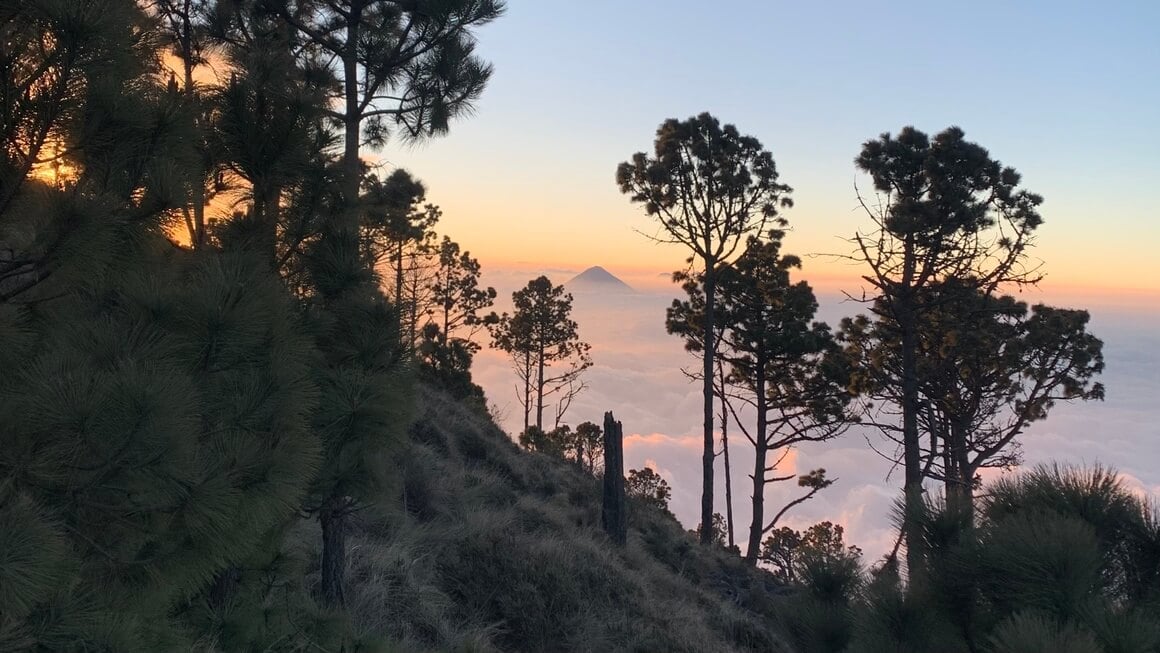
Updated February 2023 by Laura Hall .

Joe Middlehurst
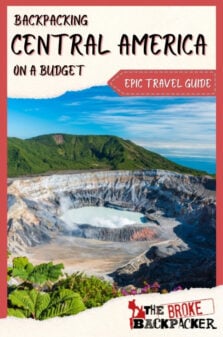
Share or save this post

26 Comments
We are hoping to do Central America from Mid April to Mid May… we thought we’d start in Panama or Costa Rica and head north to try and catch the best of the weather, but every suggested itinerary I’ve seen online suggests travelling in the opposite direction. Can anyone offer any guidance on what the best option is and why? Especially travelling at the end of the dry season/beginning of the rainy season? Any guidance much appreciated.
Very good guide, it helped me a lot during my trip through Central America. I look forward to a post-pandemic update.
Awesome to hear, Isla!
Amazing blog Keep posting such content
Hi Chris, My friends and I are really keen to #3 Backpacking Central America Itinerary 4 weeks: Guatemala to Costa Rica, but there’s not a lot of detail listed. How many days would you recommend at each stop? Best wishes,
travelling is love
I meant Chris, not Will. I’m so sorry!
Thank you so much for the amazing information, Will! I plan on backpacking Central America starting this December through every in Central America. I know some countries require a negative Covid test 72 hours prior to entering. How would this be achieved when crossing borders from country to country throughout my trip? Would I need to get a Covid test in each country? If so, how would I go about doing that? I am currently vaccinated for Covid, could I just show them my vaccination card? Thank you so much for your time, I just want to make sure I’ll be able to complete my journey!
Hi Jonathan, Its great you have been vaccinated. Make sure you have proof of your vaccination with you, make sure you have a digital back up copy too. Regarding the Covid tests for travel, you will need to follow the exact instructions given by each country prior to border crossing. I imagine most countries will have this listed on their website, including how, when and where to get the test done. Unfortunately, even if you have the vaccine you may still need to follow the testing protocol. Have a great time.
Thanks for sharing this wonderful article. It’s really helpful and valuable tips.It’s really good and thanks for sharing this good article.
Glad you enjoyed it! Safe travels.
Your blog is by far the best backpacking one out there. I spent 6 weeks travelling Central America this past summer using many suggestions from your site, and am planning my SE Asia trip in May again using your blog as a guide and starting point. Thank you!!
Thanks Brianna, have a great time in SEA!
Your photos are awesome! They really add a lot to your article. Do you use a high end camera or a smartphone to get such great shots?
My boyfriend and I are currently planning a trip to CA and this blog post SERIOUSLY had EVERYTHING we were looking for! Thank you!!
Hi! Did you need a proof of the onward journey (pr return ticket) when entering countries of CA?
Oh my god, it’s a gamble. As of 2 years ago, most times you’re not asked. When you are, you can usually get by if you tell them something really specific, like “I’m going to take a bus to Costa Rica next month for a jungle trek.” Make sure that whatever it is you say, it’s actually far enough out, because in some countries they’ll limit your visa only for as long as you need it. Hope this helps!
Honestly man. I never really leave any comments on blogs but this is one of the most helpful, detailed and honest blogs I have ever stumbled upon. Thank you for being realistic about safety concerns in central America, talk about realistic prices and your detailed itineraries are incredible. Keep it going!!
Thanks for the love Lars! We hope you make it to Central America and love it!
Hey, I totally get wanting to eliminate plastic waste but in Mexico & Central/South America, we are unable to drink water that comes out of taps or fountains. So where to refill the reusable bottles??? I hope I’m not missing an article about this, I clicked on your links and didn’t see any explanation….. GREAT GUIDES, MIL GRACIAS!
I carry a Grayl Geopress 🙂
when did you visit central America? is it safe for a male and female to take buses from cancun to Honduras and maybe further at this time? Even with all the travel warnings? I loved the blog post, I will certainly use it to plan more of my trip.
I wouldn’t take public transport in Honduras but private buses with decent bus lines should be OK
Amazing guide, thank you! I’m planning to solo-backpack through Central America this spring. Can you tell me, where will I meet other backpackers and make friends? Where is a good and safe place to start my backpacking-journey? Thank you! 🙂
I recommend starting in Guetamala – Antigua is chill 🙂 You’ll meet people in hostels – just choose some sociable ones 🙂
Thumbs up for the security belt with a hidden pocket you suggested. I make my husband wear it anytime we’re traveling 🙂
Leave a Reply Cancel reply
Your email address will not be published. Required fields are marked *
Save my name, email, and website in this browser for the next time I comment.
Notify me of followup comments via e-mail.
- Destinations
- Central and South America
Solo Travelers Shouldn't Miss These Stunning, Highly-Rated Destinations In Central America
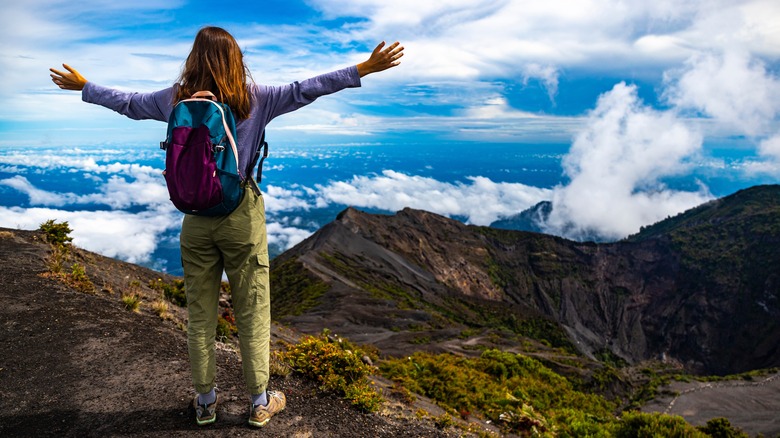
A region of seven English- and Spanish-speaking countries that, logically enough, sit between North America and South America, Central America is a realm of great geographic and cultural variety. A curving band of land between the Caribbean Sea and the Pacific Ocean, it's where to find ancient ruins, faded colonial monuments, teeming indigenous markets, and the second-longest coral reef on the planet.
Travelers could easily spend months exploring the region, kick back on a beach, climb a volcano, or practice their language skills, and many of the countries here are well set up for tourists. For solo travelers, some destinations are more dependable — and some are certainly safer than others. Based on blogs, tourism websites, and our personal knowledge accumulated through trips in Central America, we've put together a list of striking places that single travelers should place on the top of their list for their next trip to this captivating part of the Americas.
Antigua, Guatemala
In this town that is only about 24 miles from La Aurora International Airport in Guatemala City (there are frequent shuttles between the two that cost less than $20), the old colonial architecture is unforgettable. It's such a beautiful town for solo travelers, from its setting — it's ringed by towering volcanoes — to the colorful buildings in various pastel shades. Single travelers will note that finding hostels and inexpensive accommodation is a breeze.
Plenty of expats have moved here, and it gives the town, which is small, a cosmopolitan feel, from the people you'll see to the variety of places to eat. For anyone wanting to learn Spanish, there are numerous schools, and prices are budget-friendly, with one-on-one lessons available for as low as $16 per hour. Solo travelers to this UNESCO World Heritage Site will find striking, standing Spanish-era churches, as well as some that fell following an earthquake in the 1700s, tree-lined cobblestone streets, and weather that always feels like spring.
Bajo Boquete, Panama
In western Panama, not far from the border with Costa Rica, Bajo Boquete has excellent opportunities for hiking and a calm, welcoming atmosphere. The region of Boquete sits in a valley of deep forest, and mountains rise on either side. For outdoor enthusiasts traveling alone, it's a wonderland with trails that lead to hidden waterfalls, volcanic walls for rock climbing, and hot mineral springs to ease your aching muscles.
The weather is also dreamy — think cool nights and warm days, never sweltering and uncomfortable. The town is dissected by the Caldera River, making it a pretty destination and one that is easy to get around on foot. Tourists looking for something a little unique can visit coffee plantations in the area and experience farm-to-table meals since the land here produces many crops, vegetables, and fruits.
Bocas del Toro, Panama
In the northern part of Panama and part of an archipelago of Caribbean islands with the same name, this town is set at the bottom of Isla Colón. It has an easy charm to it, reached by flight from Panama City in less than an hour, and solo travelers will find a good selection of accommodations and no shortage of places to grab a drink by day or spots at night where the dancing bleeds into the wee hours.
The real joy of visiting Bocas is the culture and the outdoors, from natural park reserves to indigenous tribes that you can visit (like the Ngäbe-Buglé) to the ubiquitous sounds of the local Creole language of guari-guari. Single travelers can learn to surf, with great waves on Isla Carenero, and Bocas Surf School offers a three-day camp for just $140. Beach bums will find the sand and sea sublime.
Caye Caulker, Belize
On a trip to the islands of Belize, visitors might look to Ambergris Caye, a long skinny isle that's carved out a name as a destination offering sun, sand, sea, and serious partying. But it's the most touristy place in the country. More relaxed and friendlier than Ambergris, Caye Caulker is a sunny idyll where you'll start to feel at home quickly, even as a solo traveler. The pace of life is slower on Caye Caulker than on Ambergris, and since the island is more compact, it's easier to explore.
Prices for accommodations tend to be affordable on Caulker, and you'll occasionally find dive operators offering trips to the famous Blue Hole. Solo travelers often head to the Split. A channel that separates north and south Caye Caulker, it's a great place to snorkel, sunbathe, and grab a drink or something to eat at the restaurants and bars that attract many a traveler.
Copán, Honduras
The Mayan ruins of Copán had stood for hundreds of years before being discovered in the 1500s, but it took a few more centuries before they were really presentable. For the Mayan people, this is one of the key centers and a place where people first lived more than 3,000 years ago. These ruins, a UNESCO World Heritage site, are not to be missed, and for solo travelers, being alone lets you enjoy them at your leisure, with no nagging friends or family complaining about boredom.
There is much to pore over, moving from the larger, central section of ruins to the surrounding satellite buildings. Travelers can see a former stadium and nearby altars, grand staircases with carvings on them (including those of jaguars), and a series of pyramids and temples. Spend a couple of days here — there are plenty of reasonably priced places to overnight in Copán Ruinas.
Corn Islands, Nicaragua
Much has been made of the surfing scene along Nicaragua's Pacific Coast, but on the Caribbean side of this country with large swathes of greenery, there is a solo-traveler island destination that's pure beach-bum bliss. The Corn Islands, or Islas del Maíz, are two blips that sit far off the east coast of Nicaragua. They are most conveniently reached by plane — the ferry takes many bumpy hours, while the flight is a little over 60 minutes — and on arrival, a tourist will find strands of silky beach and beautiful, calm, turquoise seas.
There are two islands, Big Corn and Little Corn, and while solo travelers can choose either (both are safe), the latter has a more compact core, with a clutch of bars and eateries where single sojourners tend to hang out. The sea is the focus here, from lazing in the shallows to taking snorkeling and diving excursions. The sunsets are also to die for. Pro tip: Bring a flashlight to Little Corn, as the island gets dark at night.
El Tunco, El Salvador
For a solo traveler, this small coastal town has it all. One of the great draws to El Tunco is its Lilliputian size, so a traveler on their own will feel settled and grounded in a heartbeat. The surfing is great, with lessons readily available or board rentals easy to source for more seasoned surfers. For the rest of the time, soloists will want to explore the handful of streets that make up this town, a place that has its share of bars, restaurants, and small boutiques, all easy to access from the many lodging options here.
The scenery is spectacular, with caves by the water, and in the valleys just outside town, solo travelers will find excellent hiking opportunities, where trails that wind through jungles and forests lead to pretty waterfalls. Around the town, you'll find striking murals and a lively night scene, which kicks off after the stunning sunsets over the Pacific.
Granada, Nicaragua
It only takes about an hour to get from the airport of Nicaragua's capital, Managua, to this town with an inviting setting on a lake. A taxi — the easiest way to transfer between the two — costs under $30, and once here, solo visitors will find a sense of serenity. While Managua is a sprawl, Granada has a sense of intimacy and charm, a manageable town that slowly seduces single travelers with its laconic rhythms and gorgeous colonial architecture.
The anchor of Granada is its main square, the Parque Central de Granada, with its artfully landscaped trees, round gazebo, and stalls that cater to inquisitive tourists. Along one side is the Catedral Inmaculada Concepción de María, a confection in buttery yellow that is especially striking when lit by the sun, seeming to almost glow with life. From here, it's a five-minute drive to the lakefront malecón, a walkway that skirts the water.
Manuel Antonio, Costa Rica
One of the most alluring aspects of Costa Rica is the country's sensitivity and celebration of the outdoors, with vast tracts of protected parks dotted around the nation. For an unforgettable Costa Rican vacation , Manuel Antonio is one of the best spots in Central America, a fabulous destination for solo travelers thanks to its safety, affordable lodging, and friendly locals. The panoramas here are mind-blowing, with rainforests and jungles rolling all the way down to the Pacific Ocean and sunsets that are worthy of any scrapbook — or an Instagram post.
Look forward to excellent hiking in Manuel Antonio National Park, just outside the village of Manuel Antonio, and some heart-melting beaches; in the town itself, be sure to stop by Playa Espadilla, a long, curling sweep of sand bookended by forested headlands. For some adrenaline-pumping thrills, hit the zip line or a gondola-style cable contraption at Zip Coaster.
Panama City, Panama
A dizzying melange of old and new awaits solo travelers who visit the capital city of Panama, a place that's the hub of COPA Airlines, which services cities all across North, Central, and South America. Wandering around the city, tourists will take in a modern skyline, with fearless buildings like the F&F Tower, a striking skyscraper that looks like a drill bit or inverted tornado.
The old part of the city, Casco Viejo, is a UNESCO World Heritage site and feels like its own island, with brick streets and fine colonial shapes and forms. Walking around the lanes and alleys feels like stepping back in time, and solo travelers will not only find a wide range of lodging options, from reasonable hostels to pricey boutique properties, but also a selection of museums, like the Panama Canal Museum . On that point, visitors can easily arrange a day trip to the canal from Panama City, and they should.
San Blas Islands, Panama
The sea and sand at the San Blas Islands, which can be reached from Panama City in a few hours, are incredible — clear turquoise water lapping at soft beaches where the grains crumble underfoot. But what heightens the experience is that the islands are part of a region called Guna Yala that is administered by the Guna, an indigenous people. Solo travelers will gush over the scenic vistas, outrageously attractive seascapes, and cultural magnetism.
The Guna are known for their artisanal wizardry, especially in textiles, and their brightly colored woven pieces called Molas, with patterns and symbolism informed by their traditional beliefs, are magical. A stay here is a break from the wired world — you'll find no internet, no banks, no heated water, and lodging is usually in simple thatched huts. What you will relish is a portal into a proud culture and snorkeling in some of the finest seas in Central America.
San José, Costa Rica
Connections from U.S. cities to the Costa Rican capital are excellent, so San José can easily be visited as a destination in itself. This city has much to entertain visitors within city limits, from excellent museums to fine performing arts. Rich history is evident in the colonial buildings, and the pretty parks peppered around the metropolis lend the cityscape slashes of nature. That said, nature is hardly lacking — San José sits in a valley and has volcanoes around it.
For solo travelers, the lodging options seem never-ending, and finding a dorm room under $10 isn't hard. Public buses are frequent and cheap, and getting lost on one is an adventure waiting to happen. Costa Rica is the safest country in Central America, according to Statistica , which makes it a popular destination for single travelers. And when the outdoors beckons, there are incredible day trips close to the city, from volcano hikes to tours of coffee plantations.
San Juan del Sur, Nicaragua
This town on the Pacific Coast is a sound base for surfers or newbies in search of some inexpensive lessons. Even non-surfers can enjoy the water, either on the town's curling beach or at fine strands of sand just beyond. San Juan del Sur is a small, sleepy town with lodging and places to eat tucked into a few compact sections. There are hostels, apartments, and traditional hotels, all within a few blocks of San Juan del Sur Beach.
Solo travelers will easily get in the swing of things as the light wanes since San Juan del Sur has some lively nightlife — especially at the drinking spots along the waterfront. A fun excursion to do — and photograph — is a walk to the Cristo de la Misericordia (Christ of Mercy) statue rising from a hill on the edge of town; the views of the coast from it are spellbinding.
San Pedro La Laguna, Guatemala
At this town on Lake Atitlán, solo travelers will encounter a boho-chic vibe, like that found at another popular, larger, more commercial Guatemalan lakefront destination, Panajachel. San Pedro La Laguna has incredible views of the lake, but it's more backpacker-friendly than Pana, with plenty of single travelers, and has a lively party scene, great for solo sojourners who want to mingle and let off some steam.
It's an easy place to take Spanish lessons or wander around the alleys to find a bite to eat. Solo travelers can exercise their body and mind with a yoga retreat or tone their biceps with a kayaking trip on the lake. Nearby, volcano hikes will test the calf muscles. While swimming in the lake is an option, some hostels and hotels also have pools with lake views, giving you plenty of opportunities to take a dip.
Santa Teresa, Costa Rica
It won't take long for you to become a surf rat at this understated Pacific coast town on the Nicoya Peninsula because Santa Teresa has some great waves. The underrated town is the antithesis of a glam beach resort — instead of luxurious commercial properties, you'll see low-rise buildings with red tile and thatch roofs flanking the main paved road. Solo travelers will find a range of accommodation choices, from simple retreats to slickly designed minimalist hotels to comfortable rental apartments, all close to the waterfront.
Many visitors come here just for the consistent surf, with boards for rent and operators offering lessons, while away from the swells, ATV exploration of the countryside is a big draw. A cool hangout spot for solo travelers is Eat Street , a container-style foodie joint that has many vendors and communal seating — you'll quickly strike up a conversation with a fellow diner.
Tamarindo, Costa Rica
In Guanacaste Province, Tamarindo is a beach town with a reliable draw for young solo travelers in search of a lively, fun Pacific Coast idyll. It's eminently walkable, with most lodging within 15 minutes of the beach and plenty of hostels and vacation rentals in addition to traditional resorts. The beach is the focus, with clear turquoise water ceding to deeper blues and gently rolling waves pushing onto sand the color of brown sugar.
The beach vibe pulses through the town, from the brightly colored shacks lining the streets to the restaurants, cafes, and bars sitting right on the sand. Sunsets pull many visitors onto the beach at night, and afterward, following dinner at an Asian restaurant or taco joint, Tamarindo starts to thrum, with live and DJ music fueling raucous revelers. For daytime excitement, book a zip-line adventure in the hills around town.
Utila, Honduras
The island of Roatán boasts some gorgeous water, but the Honduran island is firmly in the crosshairs of mass tourism — it has two cruise ports, and thousands of passengers regularly engorge the waterfront. Cheaper and smaller than Roatán, its sister Bay Island of Utila has great beaches and diving, and solo travelers will prize the lively après-snorkel scene. The island has only a few thousand residents year-round and houses a range of affordable hotels and hostels for solo travelers to check out, many located along the main road.
The diving and snorkeling are exceptional, which won't come as any surprise to visitors once they look eyes on the crystal-clear water that rings Utila. There are staggering beaches dotted around the island, and a visit for any solo traveler here is likely to include time on them and in the water. Nights are never dull, with plenty of haunts to meet fellow singletons.
Uvita, Costa Rica
Perhaps the most striking natural feature of this South Pacific Coast town is its coastline, with sweeps of sand meeting before pushing out to a peninsula, or point, that looks exactly like the tail of a whale — no wonder, then, that this part of the country is known as Bahia Ballena, or Whale Bay. That said, there is dolphin and whale-watching here, just one of the distractions likely to enthrall solo travelers.
This is a realm of jungles, mountains, and beaches, the trifecta of terrain that makes Costa Rica such a dizzyingly desirable destination. Long strolls on the beach allow solo travelers to take in all that natural majesty, while inland hikes will bring them to numerous waterfalls that drop into pretty swimming pools, among them El Pavon and Nauyaca. For snorkeling excursions where turtles and sharks are frequently spotted, single travelers can book a trip to Caño Island Biological Reserve.
Our methodology
Central America is never short of things to do and see — for couples, for families, and for people traveling alone. To put together the list of places featured in this story, we first mined the knowledge gleaned from solo trips that we have taken in Central America and then added layers by poring over travel blogs from solo travelers, tourism board information, and studied data on destinations that are dangerous for all travelers, especially those taking a trip alone, to discount them from the final choices.
Recommended
- PR & Marketing
- Privacy Policy
Girl about the Globe
Making solo travel easier.

Category Archives: Central America
If you’re looking for inspiration and empowerment to solo travel in Central America, follow my adventures as I solo travel Central America, exploring the continent.

Panama Canal Visit
If you are planning on a Panama Canal visit during your stay in Panama, I go into what to expect from this famous canal and day tours you can take Did you know that it’s been more than 100 years since the opening of the Panama Canal? On a trip to Panama City, I visited Miraflores… Continue Reading…

Green World Adventures
Types of Girl about the Globe (GatG) – Adventurous GatG, Beach GatG, Cultural GatG, Nature GatG, Wildlife GatG If you are planning on visiting Costa Rica and searching for some Costa Rica adventures, Green World Adventures offers sustainable tours to Costa Rica for every kind of solo. Costa Rica is the greenest country in the… Continue Reading…

Isla Tortuga, Costa Rica
If you’re planning a trip to Isla Tortuga, Costa Rica, I share what to do on Isla Tortuga as well as my personal experience of this fab little island! Types of Girl about the Globe – Island GatG, Ocean GatG My time in Costa Rica was limited. Having only been stamped for 10 days entry… Continue Reading…

Bocas Del Toro
If you’re planning to visit Bocas del Toro, discover things to do, how to get around and where to stay on these Panama islands If you’ve been to Utila in Honduras, then a trip to Bocas del Toro in Panama may remind you of this crazy Central American island. Not because it is full of… Continue Reading…

Teaching English in Costa Rica
Teaching English in Costa Rica Whether you are looking for teaching jobs in private language schools or just want experience teaching abroad for the first time, Costa Rica is a good option and you can travel to the rest of Latin America after your placement too. Below is Shelly’s story of her personal account of… Continue Reading…

A Huge Lesson in Little Corn
* This post contains some graphic content. Little Corn Island My instinct told me not to go but wanting to visit an old friend (or more of an old holiday romance), I chose to ignore my gut feeling and found myself paying for the flight from Managua to Big Corn Island. The Corn Islands are… Continue Reading…

My Experience of Masaya Nicaragua
There are some places you arrive at and immediately think “why did I come here?” Not because the place is dangerous but because it really wasn’t what you expected. Leaving Lake Ometepe, I travelled onwards to Masaya. After flicking through an outdated Nicaraguan guide book in the hostel in Liberia, I had landed on the… Continue Reading…

My Top 5 Things to Do in Leon
Deciding to bypass Managua meant that I had more time to spend in Nicaragua’s second largest city – Leon. Leon was founded in the early 16th century and is one of the oldest cities in the country. As much as I love Granada, Leon comes a very close second on my Nicaraguan travels. With a… Continue Reading…

Volcano Boarding in Nicaragua
If you’ve ever wanted to try volcano boarding in Nicaragua, stay in Leon for a few days and book a Cerro Negro volcano boarding tour. This half-day experience is an adventure that should definitely be on your solo bucket list! Volcano Boarding in Nicaragua I arrived in Leon with one mission – I wanted… Continue Reading…

The Peace Project Nicaragua
The Peace Project is more than just a hostel nestled in the treetops of Laguna de Apoyo. All the proceeds help fund this amazing project and staying 2 nights here, I simply had to find out more about what my money was funding. Education, environment and community are key here with education being at the… Continue Reading…
Contact Us...
Search the site...
The small print....
Girl about the Globe Copyright © 2012-2024
Web by Eldo Web Design Ltd

The Ultimate Guide to Backpacking Central America
By: Author Lora Pope
Posted on Published: August 3, 2020 - Last updated: October 11, 2023
This post may contain affiliate links. By clicking and making a purchase through the links, I earn a small commission at no extra cost to you. See my disclaimer for more information. This and display ads allow me to keep the site up to date and give back .
Backpacking Central America is an amazing experience. From diving into the blue hole in Belize to camping by active volcanoes in Guatemala, this region of the world is home to some amazing bucket-list experiences.
Central America was the region of the world that reignited my love for backpacking. I say reignited because it wasn’t the first trip.
I went on my first backpacking trip in Europe like a cliche, then got sucked into the working world and forgot how magical it was until a trip to Costa Rica reminded me of my passion.
I’m obsessed with Central America. While I was working full-time in Canada, I would take short trips there every time I had a moment off work. It’s not that far to travel for a week, and flights are affordable.
When I decided to go backpacking for a year, I started my journey in Guatemala after falling in love while briefly visiting it on another trip. I’ve spent months of my life traveling Central America, so I created this post to share all my favorite places with you.
This Central America travel guide will tell you everything you need to know about backpacking Central America, including the best places to visit, costs, tips on getting around, solo female travel, safety, and more.
Countries to visit in Central America
Mexico is actually part of North America, but as its neighbors with Guatemala and Belize, many backpackers add it to their Central America itinerary.
Flights are pretty cheap to Cancun, Mexico from North America, so oftentimes I would fly here from Toronto, even if I was planning a trip to Belize or Guatemala. It may seem crazy to travel to a country two away from the one you want to go to but hear me out.
From Cancun, you can either take an overnight bus (directly from the airport) to Belize City or you can take the ferry from Chetumal to San Pedro, Belize. Chetumal is very close to Bacalar, which is a beautiful chill place to visit on Mexico’s Yucatan Peninsula.
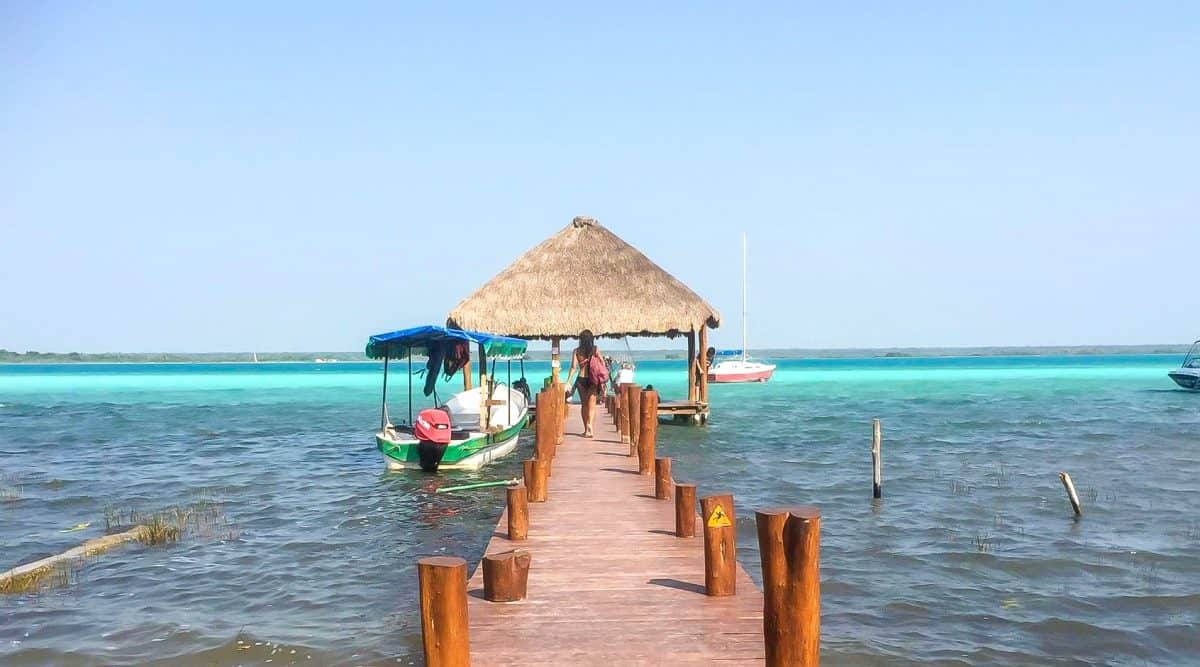
Cancun itself is very touristy, I’m not a big fan of it. It’s a good place if you want to party, but Playa Del Carmen is even better, and it’s just an hour away. It’s easy to get from Cancun to Playa Del Carmen or Tulum via bus!
If you want to chill out, Tulum is an amazing place to visit and just two hours away from Cancun. It’s got beautiful turquoise water, beaches, and Mayan ruins. There are also some wonderful Cenotes nearby you can swim in!
While the east coast of Mexico is beautiful, the rest of the country is worth exploring.
Puerto Vallarta is where I live now. I love it so much that I made an entire website about Puerto Vallarta where you can find all the information you need to plan a trip there!
Beyond that, check out Oaxaca for culture , Guanajuato State for ecotourism , and any of these party cities for a good time.
Belize is such a tropical island paradise , and makes for the perfect place to start your adventure backpacking Central America – especially if you are coming from Mexico! You can either take the bus from Southern Mexico to Belize City or take the ferry from Chetumal to San Pedro in Ambergris Caye, which is a gorgeous island in Belize.
Home to the second-largest barrier reef in the world, Belize is an amazing place to go scuba diving and snorkeling. It was snorkeling here that inspired me to get my diving certification! It’s also home to some impressive Mayan ruins.
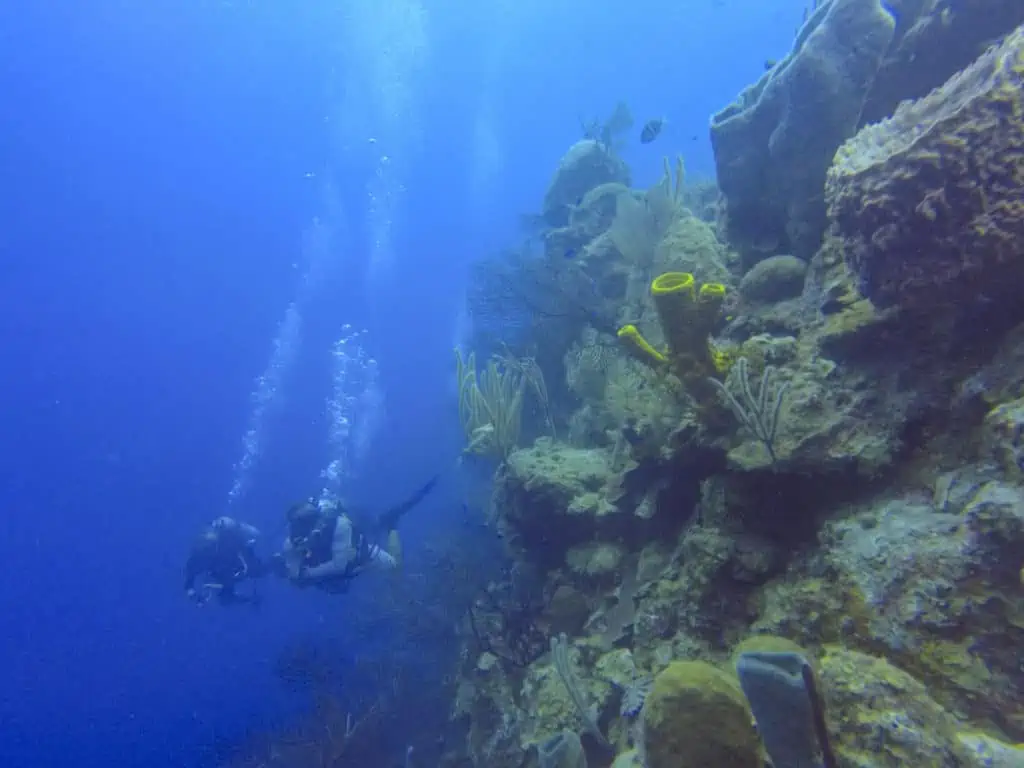
The atmosphere of Belize is different than the rest of Central America due to its Caribbean influence. The flavors of the cuisine here are wonderful, it was my favorite food outside of Mexico.
It’s a relatively easy place to travel as the tourism industry is well established, and the official language is English. On the flip side of that, it’s one of the most expensive countries to travel in Central America.
Best Places to Visit in Belize
There are many beautiful places to add to your Belize Itinerary, but here are some of my favorites:
Caye Caulker & Ambergris Caye – Two gorgeous islands that you can visit via boat from Belize City (there is also a boat from Chetumal Mexico to San Pedro).
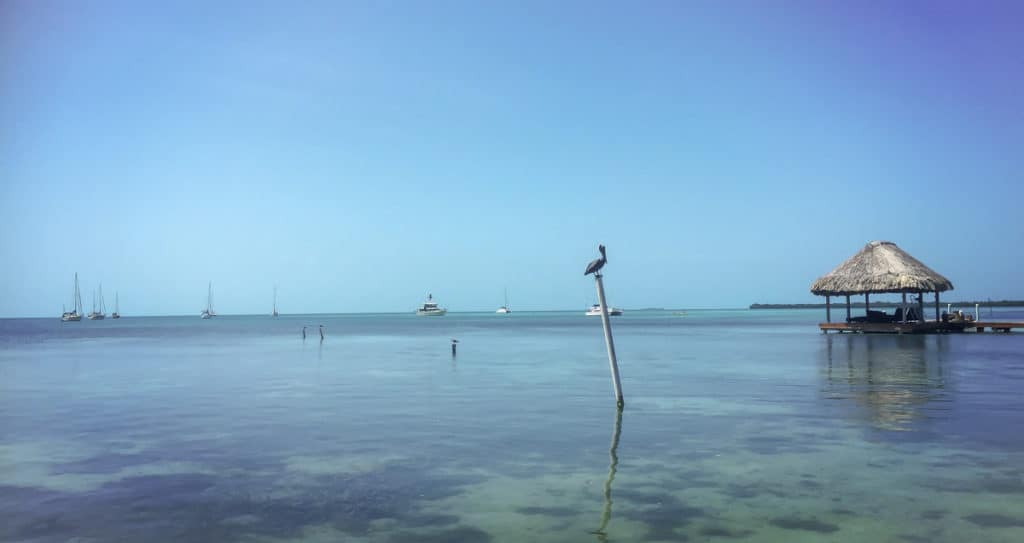
Both islands have a variety of accommodation options, but Ambergris Caye has higher-end resorts. I prefer Caye Caulker, as it’s slightly cheaper and is oriented towards backpackers. The two islands offer similar day tour options for snorkeling and diving. This is where you can go diving in the blue hole!
Placencia – Amazing place to go diving, especially for whale sharks. The best way to get here is via the Raggamuffin Sailing Tour , which leaves from Caye Caulker and ends in Dangriga (just an hour away from Placencia or Hopkins, another town you can visit).
Cayo District (San Ignacio) – Great place in Belize for adventure and history. It’s home to Mayan ruins, caves, wildlife, and rivers for tubing.
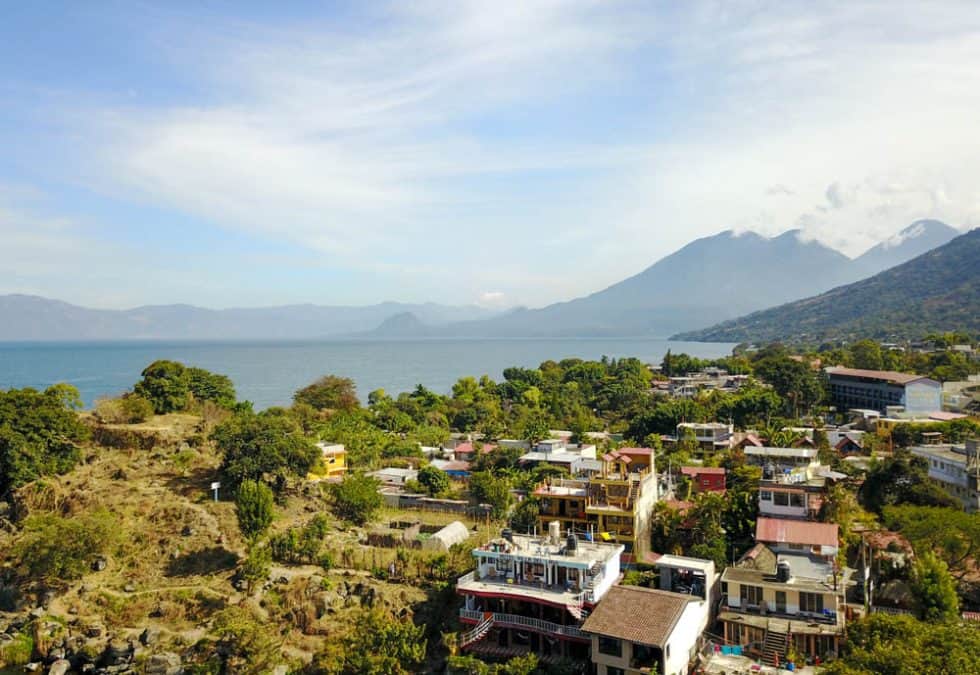
Guatemala is one of my favorite countries in Central America. It’s the perfect place for active adventures, with 37 volcanoes, including several you can go hiking on. It’s also a wonderful place to experience culture in Central America.
Guatemala is also one of the cheapest countries in this region, you can get by on $30 USD per day. It’s also a great place to learn Spanish, with affordable lessons and an easy-to-understand accent.
Knowing some Spanish will make your time backpacking Central America much easier, so this can be a great thing to do at the start of your trip!
Places to Visit in Guatemala
Flores (Tikal) – If you’re coming from Belize to Guatemala, this is a great first stop on your Guatemala Itinerary. The Tikal ruins are some of the most impressive in all of Central America. Go at sunrise for an unforgettable experience; just don’t stay up the whole night before like I did.
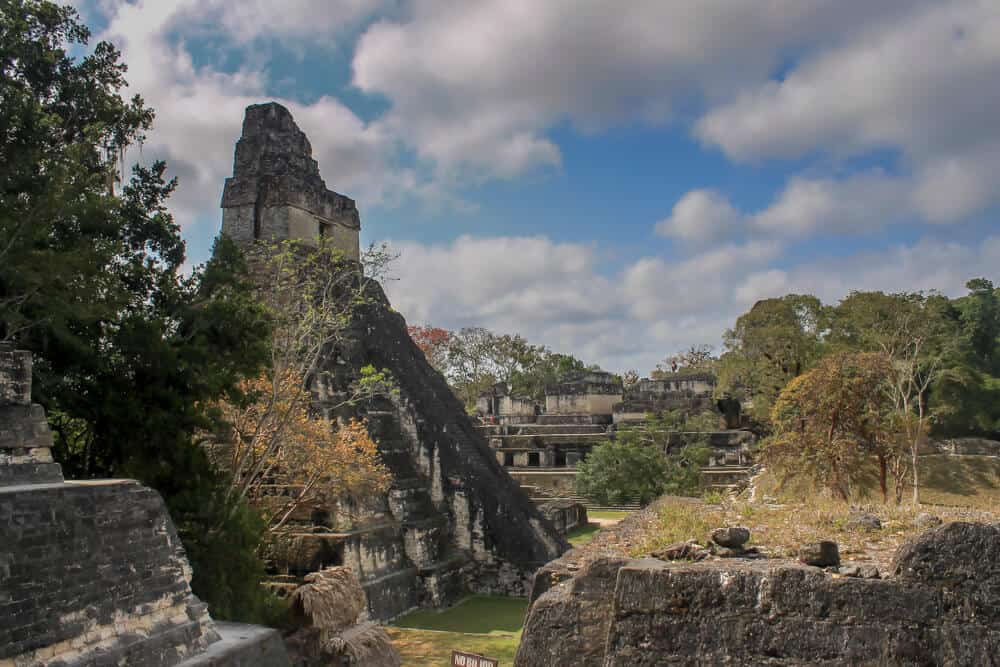
Semuc Champey – A not-so-hidden oasis in the middle of the jungle. No matter where you’re coming from, it’s going to be a long ass journey to get here, but yes, it is worth it.
Antigua – One of the most charming colonial cities in Guatemala. This is a great place to start your itinerary in Guatemala if you’re flying into Guatemala city, as it’s only an hour away.
It’s also home to the Acatenango Volcano hike , which is one of the best adventures in Central America.
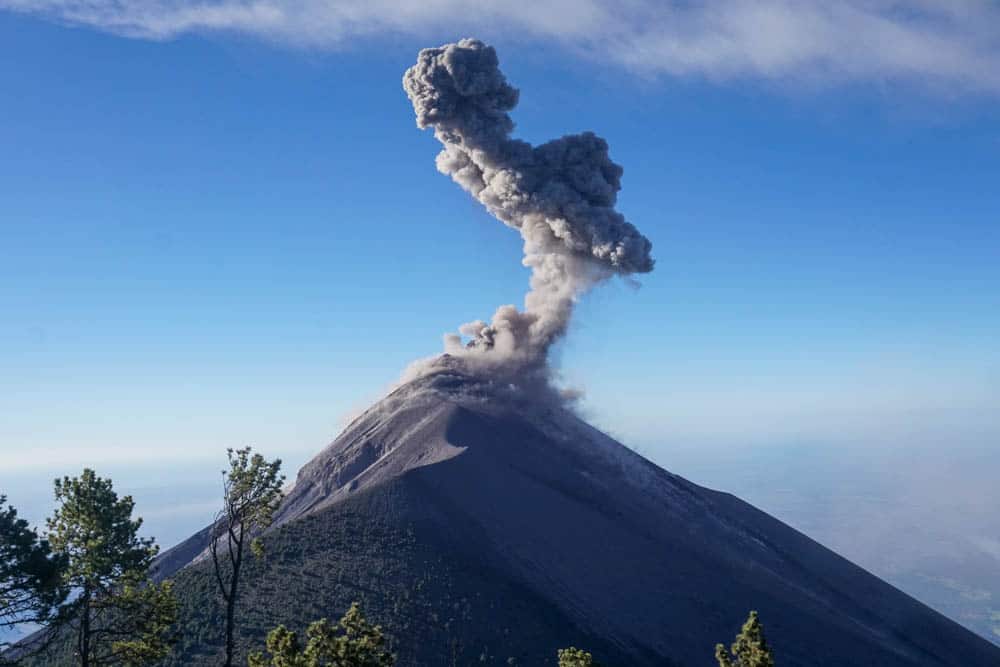
Lake Atitlan – Lake Atitlan is one of the most beautiful places in Guatemala for nature lovers. It’s the perfect place to relax, but if you’re craving more adventure, you can go diving at altitude, hike more volcanoes, or kayak in the volcanic crater.
Xela – a true Guatemalan city with access to Central America’s highest peak. It’s also home to some incredible hot springs to relax in after all that hiking.
Rio Dulce – This is more of an off-the-beaten-path destination but a perfect place for wildlife lovers to come and relax in nature. Plus, it has a hot spring waterfall!
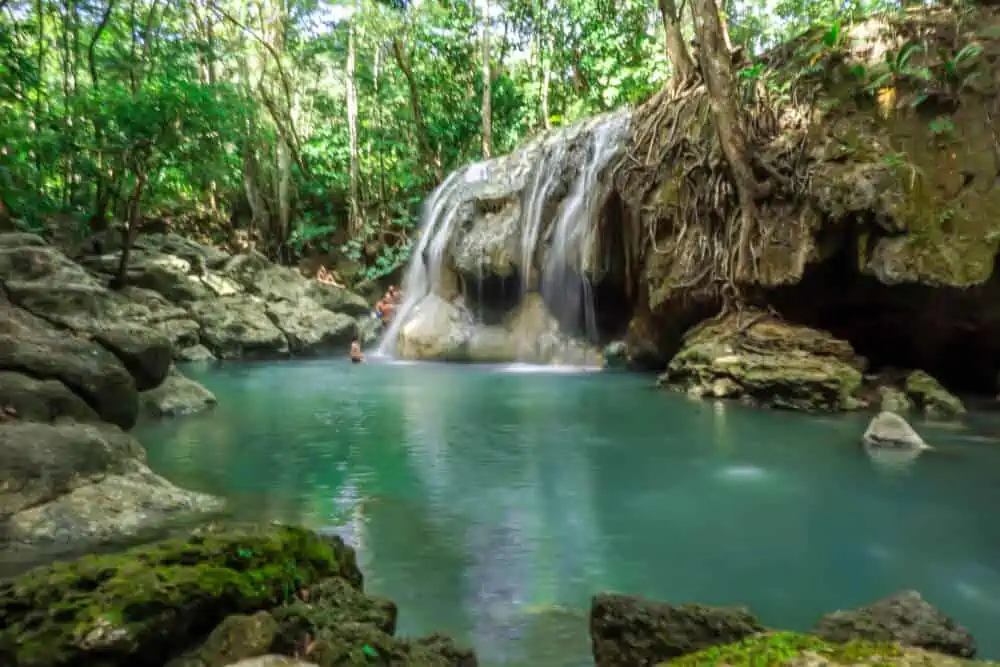
For more inspiration on planning your trip through Guatemala, check out my Guatemala backpacking guide.
If you’re backpacking overland through Central America, you have a choice between El Salvador and Honduras after leaving Guatemala.
Both have a reputation for being dangerous, but there are safe places to visit in either country. I chose Honduras and went straight from Rio Dulce to Utila via a boat from La Ceiba.
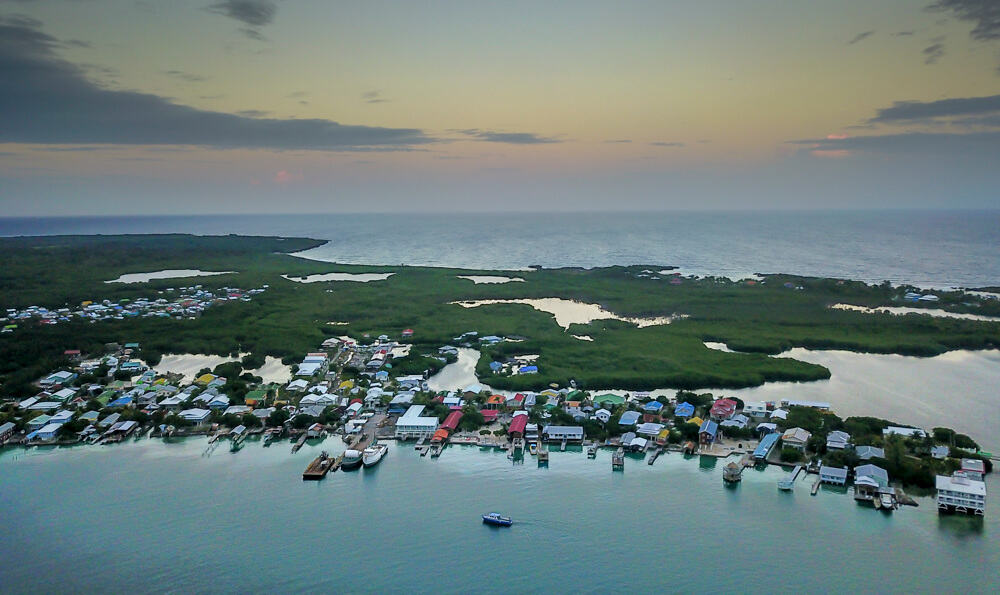
Places to visit in Honduras
Bay Islands – One of the safest and most beautiful places to visit in Honduras are the bay islands – Utila and Roatan. I spent a week learning to dive in Utila , which was a highlight of my time in Central America.
Utila is definitely a backpacker island, locals will say there are two things to do here: dive and party. If you’re looking for more luxury and family-friendly options, Roatan may be a better option. To get to either island, you can catch a ferry from La Ceiba.
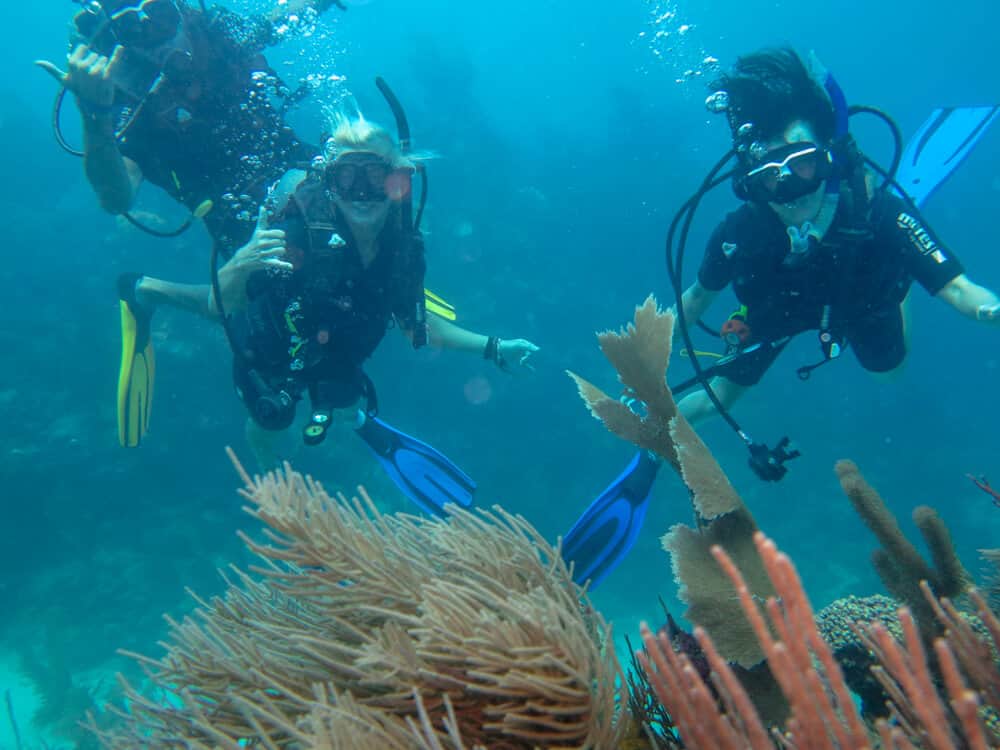
Another great place to add to your backpacking route in Honduras is Copan, which is home to incredible ancient Mayan ruins.
El Salvador
El Salvador is the only country I haven’t had a chance to visit in Central America, so I’ve asked Lara from Both Feet on The Road to share her first-hand experience about backpacking in El Salvador.
The smallest country in Central America is also the least visited one by tourists, El Salvador. When talking about the National Stereotypes of Central America , the standard people say to El Salvadorans is “Where is that?” or “Aah Mexico ”.
Which is a shame, because El Salvador is not the same as Mexico and this tiny country actually has a lot to offer!
An ultimate El Salvador itinerary would take at least 2 weeks (preferably longer) and stops at El Tunco, Ruta de las Flores, Suchitoto, and Santa Ana. Getting around El Salvador can easily be done by public transport (taking the chicken buses).
In fact, traveling around by those local buses is part of the experience that makes El Salvador such a great country to visit.
Best Places to Visit in El Salvador
El Tunco is a small beach village famous for its surfing, relaxed atmosphere and of course a little bit of a party. Though El Salvador is not really renowned for the parties. If you’re looking for a quieter beach town you can check out El Zonte or El Palmarcito or head further down the coast to El Cuco.
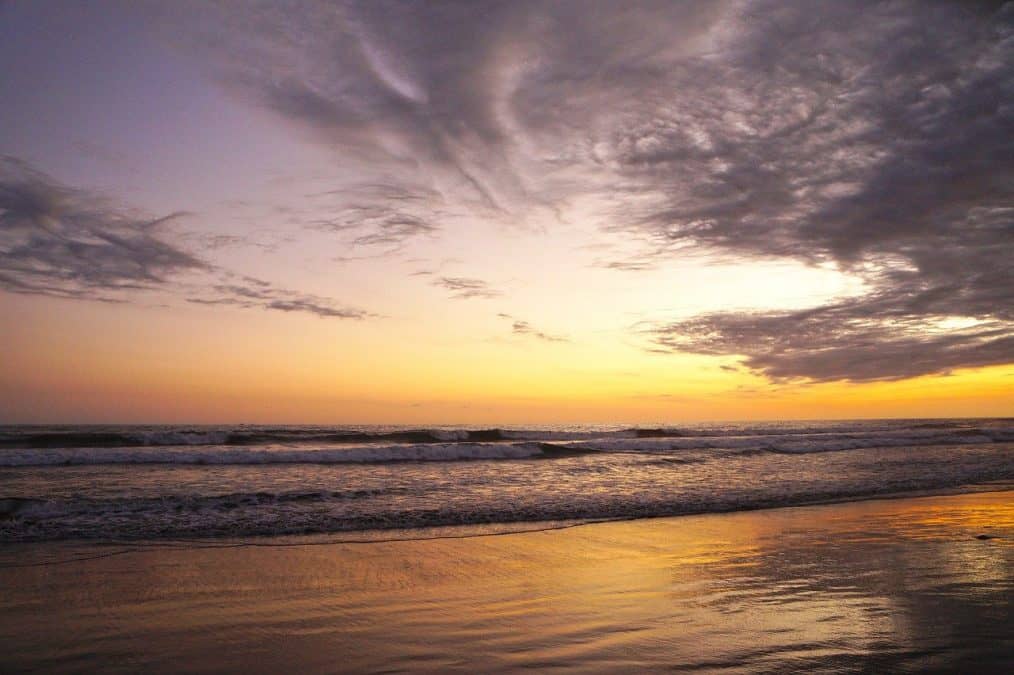
Besides stunning beaches, El Salvador is also a great destination for nature and culture lovers, and the Ruta de las Flores is perfect for people who are interested in both.
Ruta de las Flores is a route of several small villages connected by a road that passes beautiful landscapes of hillsides filled with coffee plantations, green lush, and colorful flowers in bloom. That is if you visit in the right season which is generally from late November to February.
Though even if you do not find the colorful flowers in bloom, the scenery of Ruta de las Flores and the small lively villages are still worth a visit. Check out the beautiful murals, local markets, weekly food festivals, stunning waterfalls, or coffee plantation to fill your days at the Ruta de las Flores. Some of the popular villages are Juayua, Sonsonate, Nahuizalco, Ataco, and Apaneca,.
After the small villages, it is time to head to El Salvador’s second-biggest city, Santa Ana. It’s a nice city to check out the colonial architecture, visit the Cerro Verde National Park with the Santa Ana Volcano.
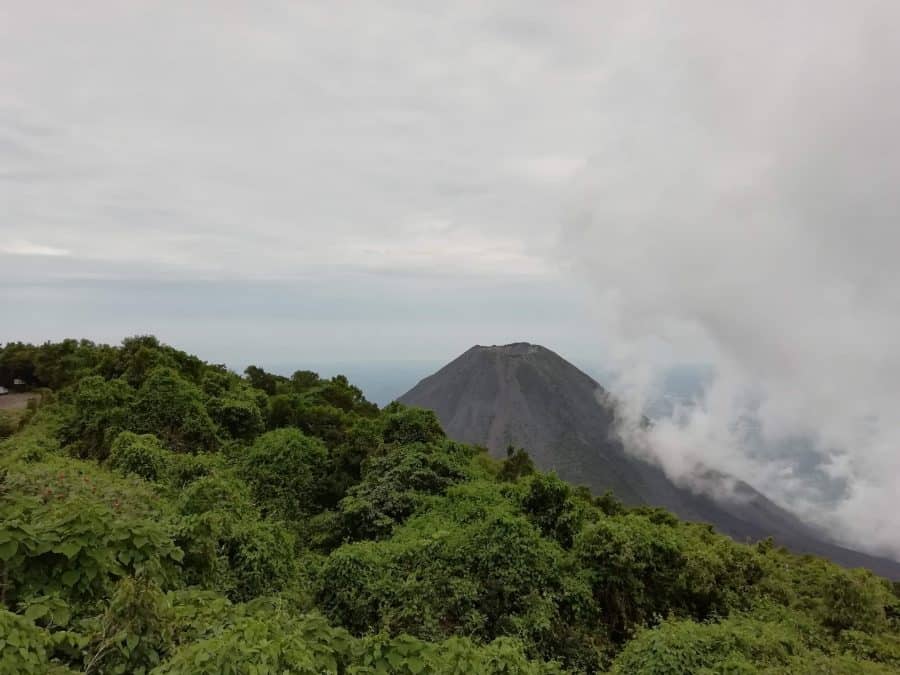
A smaller and lesser-visited town to enjoy the beautiful colonial architecture in El Salvador is Suchitoto. And for those interested in visiting world heritage, a visit to the archaeological site of Joya de Cerén has to be included, as this is the only site in El Salvador listed by UNESCO.
Costs of Traveling El Salvador: Expect to pay around 25-30 USD per day for traveling in El Salvador.
Safety in El Salvador: El Salvador has unfairly gained a reputation for being an unsafe country for travelers. And though I won’t deny that incidents have happened with tourists getting robbed, if you use your common sense, make sure you are well-informed about which areas to visit with a guide or police escort, you will be just as safe (or unsafe) in El Salvador as you would in other Central American countries.
Everyone always says Nicaragua is their favorite country in Central, and while I enjoyed it, it wasn’t mine. That said, Nicaragua is one of the cheaper countries to visit in Central America and has beautiful beaches, volcanoes, islands, and epic parties.
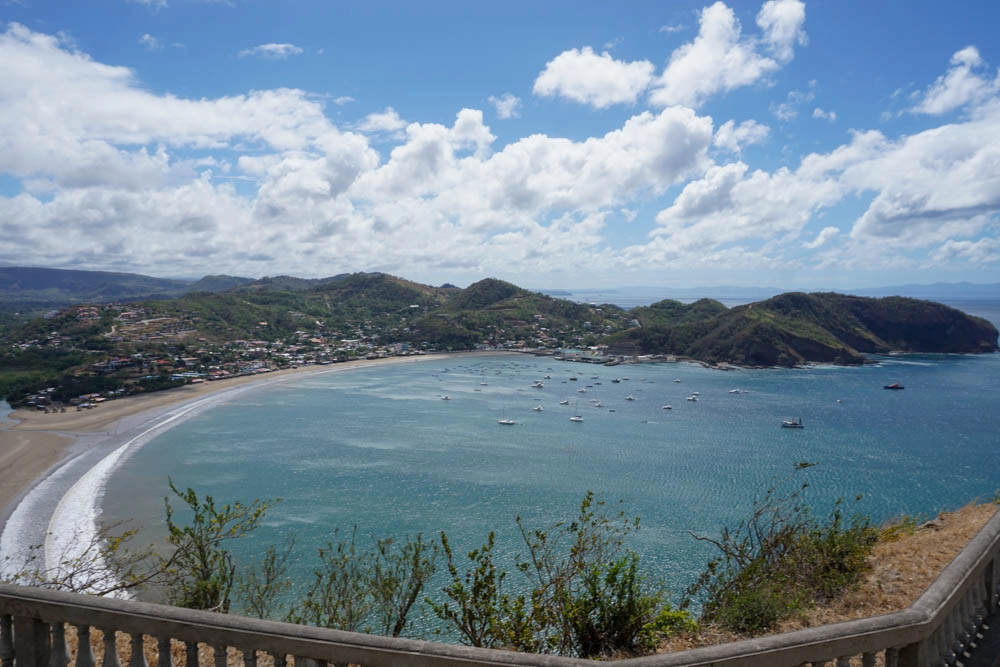
Places to visit in Nicaragua
Leon – If you’re coming from El Salvador or Honduras, Leon will likely be your first stop on your Nicaragua itinerary. It’s a colonial town that can appear rough on the surface but has its own charm. Leon is home to the volcano boarding, which is the only place in the world you can do this.
Grenada – Another gorgeous colonial town in Nicaragua
Corn Island – two remote islands on the Caribbean coast of Nicaragua, that are a dream for diving. I didn’t make it here and regret not going. They are out of the way, and most people fly here.
Ometepe Island – My favorite place in Nicaragua is Ometepe Island. This beautiful tropical island is home to two volcanoes which you can go trekking on (go with a guide, as it is not safe on your own). There is also a beautiful waterfall you can visit here, farm animals everywhere, and amazing sunsets.
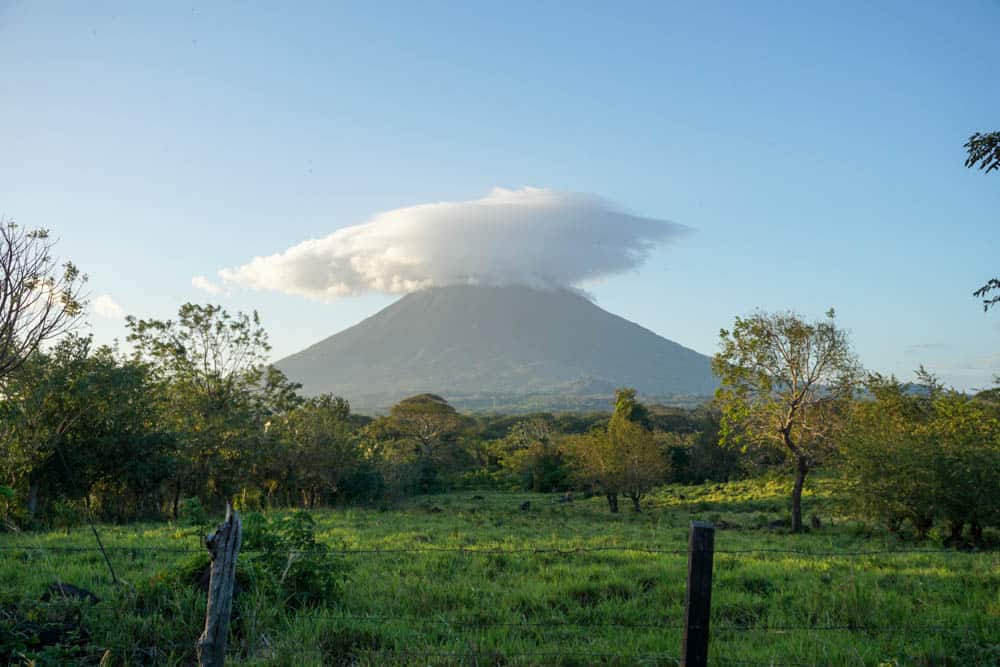
San Juan Del Sur – A surf town that’s home to Sunday Funday , Central America’s biggest pool party.
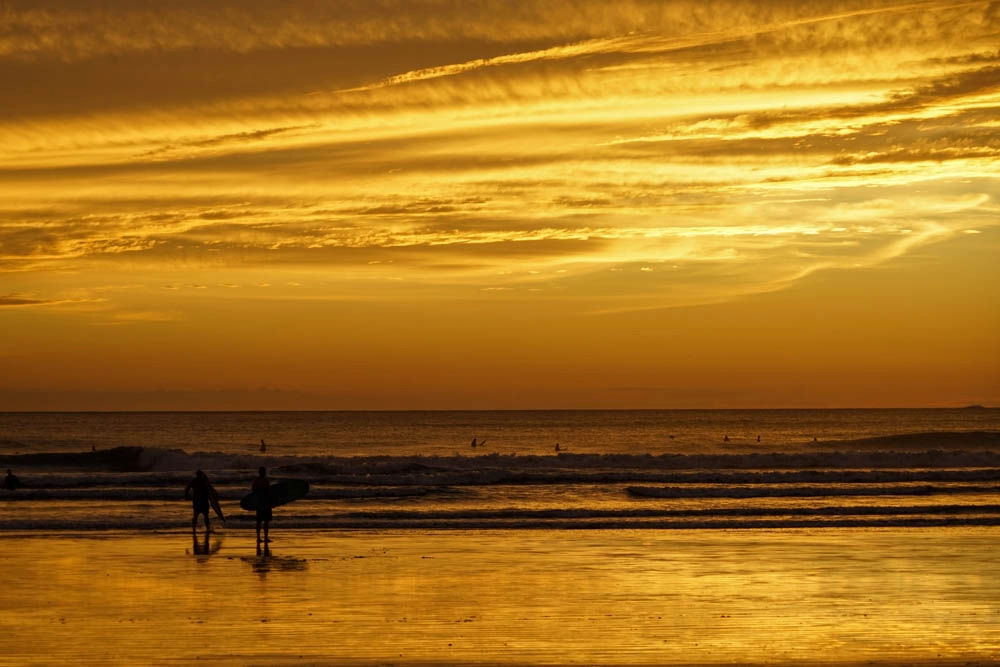
While pricier than its neighboring countries, Costa Rica is still one of my favorite countries to visit in Central America. I’ve come back four times, and I always discover new amazing places.
It’s an ideal destination if you love wildlife, as over 25% of the country is protected land. There are so many amazing national parks here! It’s also a hub for adventure travel, with plenty of zip lines, hiking trails, diving sites, rafting, and more.
Places to visit in Costa Rica
Coming from Nicaragua, you’ll be close to Liberia, where there is also an international airport. There isn’t that much to do in Liberia, so I would continue on to the Pacific Coast for beaches or head up to La Fortuna/Monteverde for adventure.
Likewise, if you’re flying into the capital city San Jose, I would continue on as there are much nicer places to be.
Tamarindo isn’t the nicest beach on Costa Rica’s Pacific Coast , but it’s a popular spot for backpackers given its lively nightlife and proximity to the airport. It’s also home to several music festivals with the recent addition of the BPM music festival .
Nosara – Very chill beach town further down the Pacific Coast (although not particularly easy to get to given the horrible road conditions). It’s a great place for Surf/Yoga.
Santa Teresa – a very chill beach town on the Nicoya Peninsula
Manuel Antonio – Home to the countries most popular national park, Manuel Antonio National Park. It’s probably one of the most touristy places in Costa Rica, but it is worth visiting.
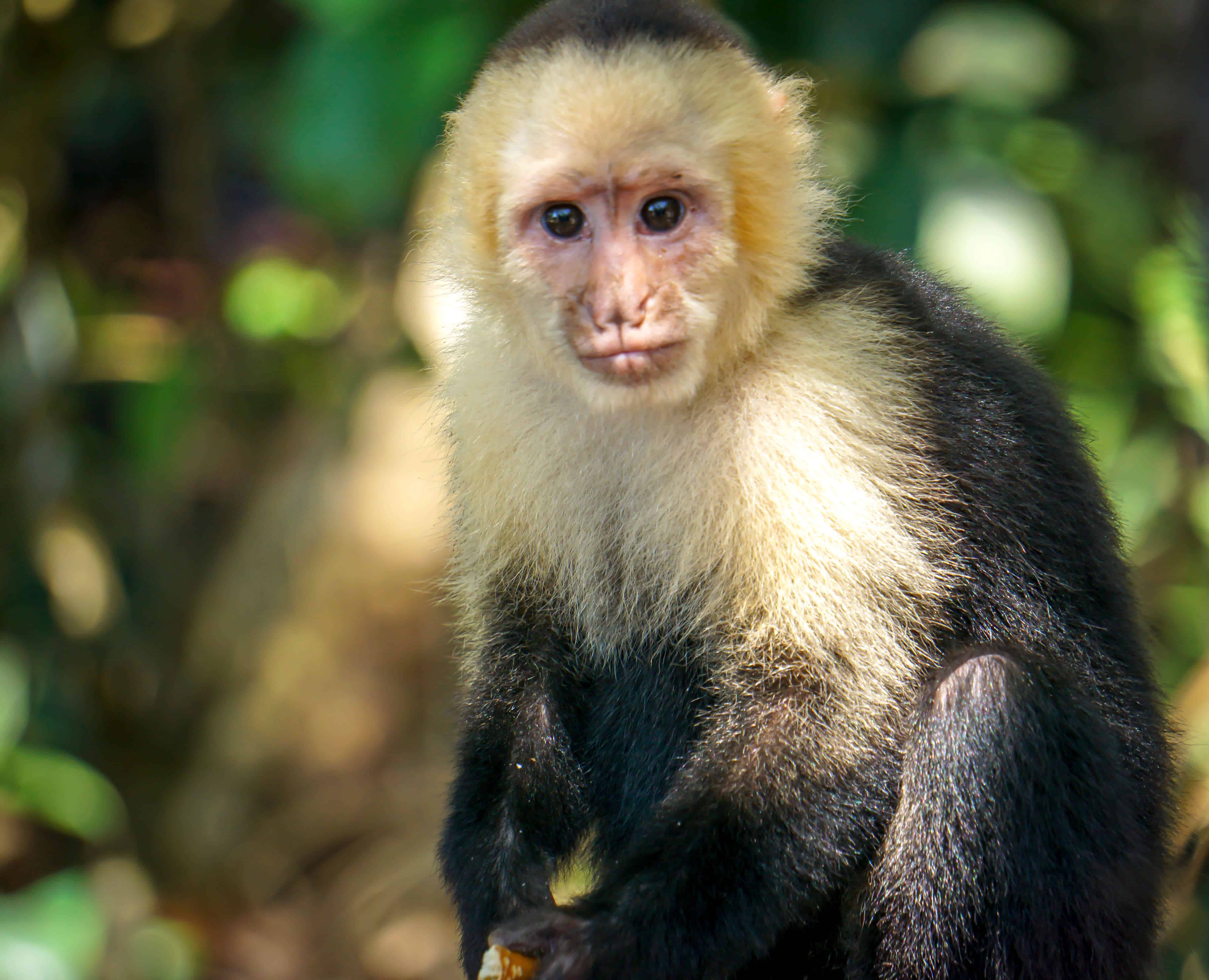
Uvita – My new favorite place in Costa Rica. Amazing opportunities for wildlife here, including whale watching and the best diving in Costa Rica at Cano Island .
La Fortuna – Great place for adventure in Costa Rica. You can go hiking on volcanoes, zip-lining, waterfall canyoning, and relax in hot springs to soothe your muscles afterward. It’s also nearby to Rio Celeste, which is one of the most beautiful waterfalls in Costa Rica.
Monteverde – A beautiful Cloud forest reserve set in the mountains of Costa Rica. Perfect place for hiking, horseback riding, and bird watching. Bring a sweater here, it gets chilly at night!
Puerto Viejo – The Caribbean Coast is a completely different side of Costa Rica.
For more inspiration on backpacking Costa Rica, check out my ultimate guide.
Panama is a wonderful country to end your time in Central America. It’s got beautiful beaches for surfing, amazing remote islands to visit, lush jungles and cloud forests to go hiking, and a vibrant capital city for all your shopping needs.
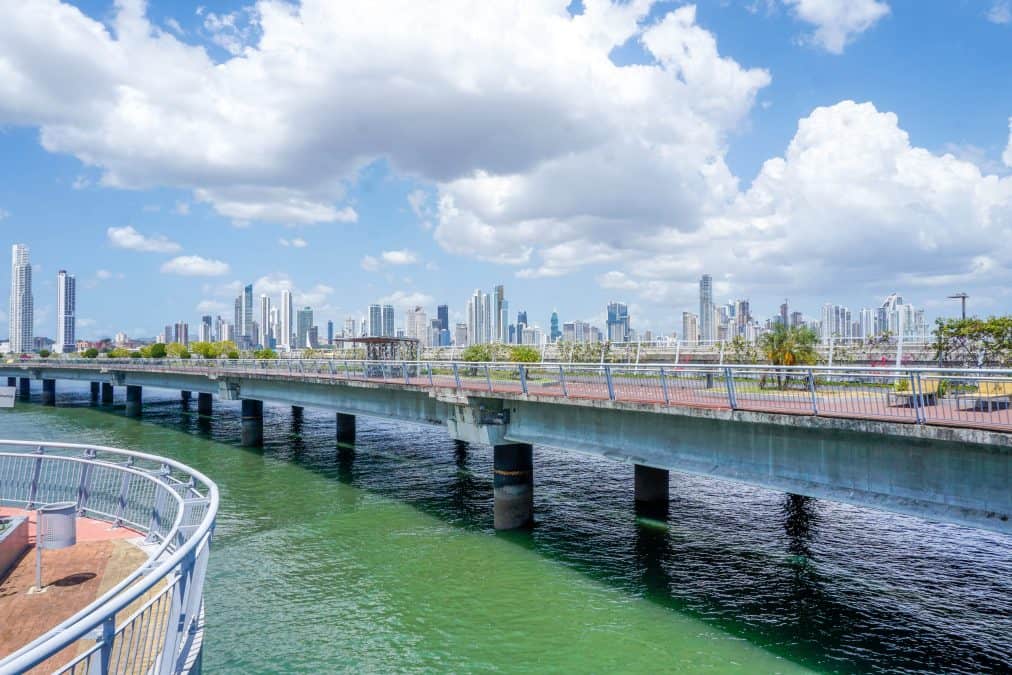
Places to visit in Panama
Bocas Del Toro – After crossing the Panama-Costa Rica Border, Bocas Del Toro is a logical next stop. It’s a gorgeous island where you can go surfing, snorkeling, ATVing through the jungle, and much more.
Boquete – a beautiful town set in the highlands of Panama, where delicious coffee is made. You can stay in a super cool castle hostel and hike to lost waterfalls.
Panama City – Unlike most Central American country capitals, Panama City is one actually worth spending some time in. It’s got so many fun things to do, from visiting the famous Panama Canal, nightlife, shopping, or just admiring the city’s skyscrapers.
San Blas Islands – incredible islands you can visit between Panama and Colombia in the middle of the Caribbean Sea. There are over 365 islands, few inhabited. It’s the best way to travel between Central and South America, but you can also do a return trip from Panama City if you’re not going to Colombia.
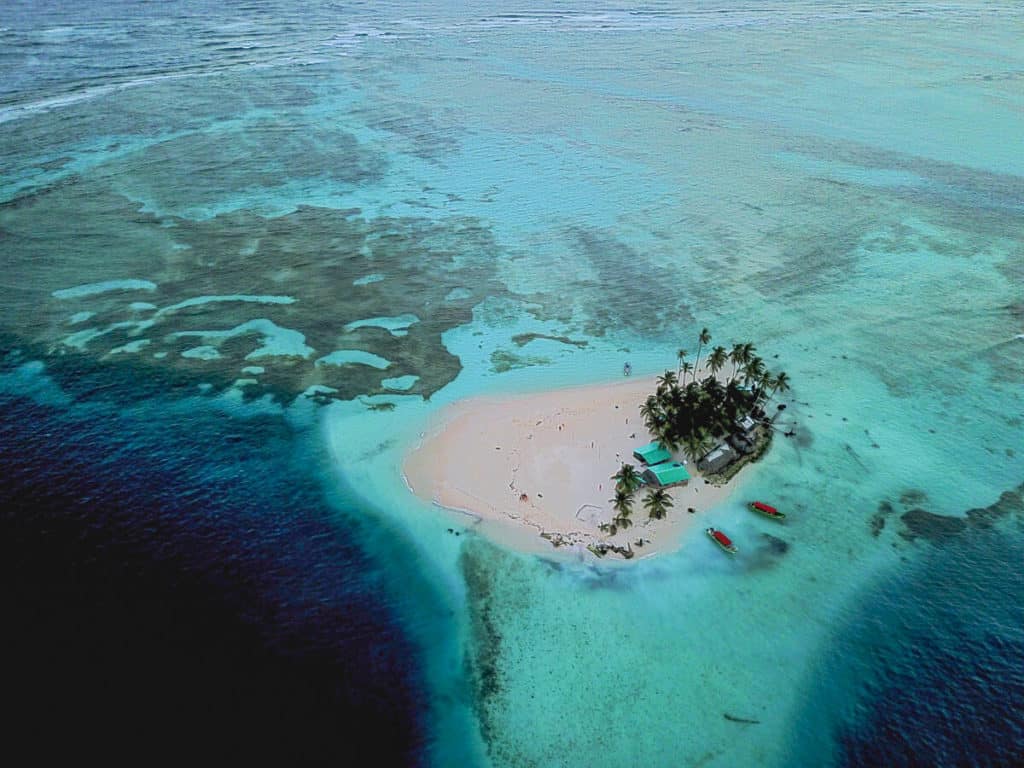
How long should you spend in Central America?
To see all of Central America, you’re going to want to have at least two months . And that would be rushing it.
If you’re volunteering or sticking around to learn Spanish in one place, you could easily extend your trip for months or even a year. I met backpackers who had been living in Guatemala for months just studying Spanish!
The amount of time to spend traveling to Central America depends on the pace you want to go. I’m a fast traveler and would still want at least two months if I was going to backpack Central America for the first time.
On one trip I did in Central America, I backpacked from Antigua, Guatemala to Colombia in six weeks but I had already been to Belize, Panama, and Costa Rica previously, so I didn’t mind skipping over some places.
Central America Backpacking Routes / Central America Itineraries
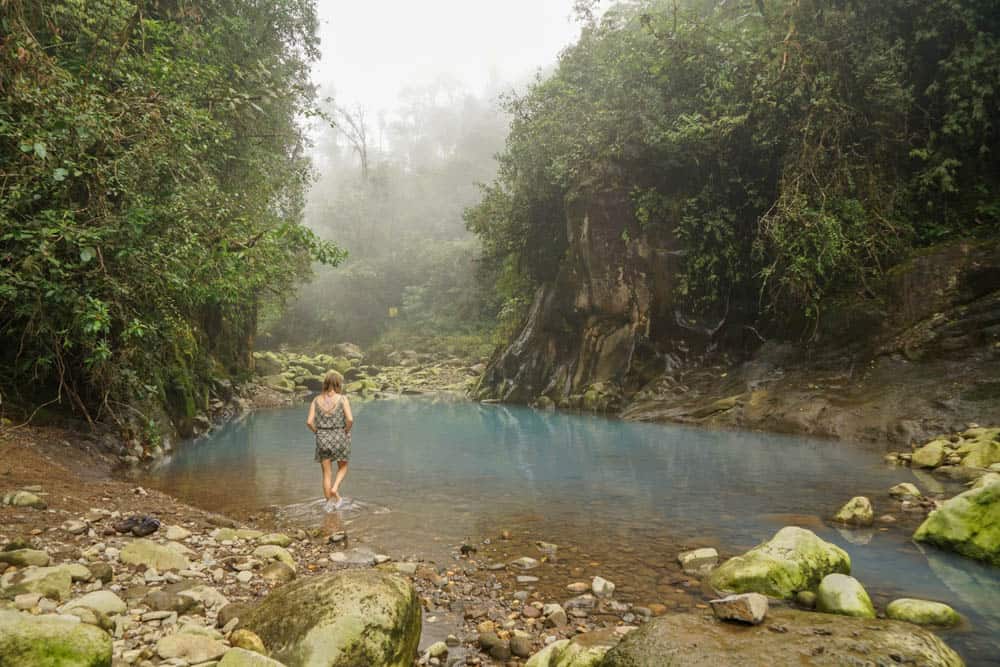
There’s a pretty established backpacking route through Central America. The big decision you’ll have to make is whether you are going to be traveling North or South. If you plan to go to South America, it makes sense to start at the top in Mexico or Belize and then make your way down.
When I backpacked across Central to South America, I started in Antigua, Guatemala, spent two weeks backpacking Guatemala , then crossed the border to Honduras near Rio Dulce.
I spent a week learning to dive in Utila, then met my friend in Leon, Nicaragua, where we went backpacking Nicaragua for one week.
From San Juan Del Sur, I crossed the border into Liberia, Costa Rica and spent another two weeks backpacking Costa Rica with two Swedish girls I met in Honduras.
crossed the border on the Caribbean Coast of Costa Rica into Panama, spent a week backpacking Panama , and then went to Colombia via the San Blas Islands.
The way Central America is shaped makes it a pretty straightforward itinerary. The only time you’ll have to choose between countries is when leaving Guatemala, as you can go via El Salvador or Honduras. I went through Honduras, which is why I haven’t gotten the chance to experience El Salvador yet.
You don’t need to book everything in advance for your trip, nor do I recommend it. You’re going to meet people, and your plans are going to change.
For my big backpacking trip through Central America, I only booked my first two nights in the hostel in Antigua and had no trouble booking everything else as I traveled.
Getting around Central America
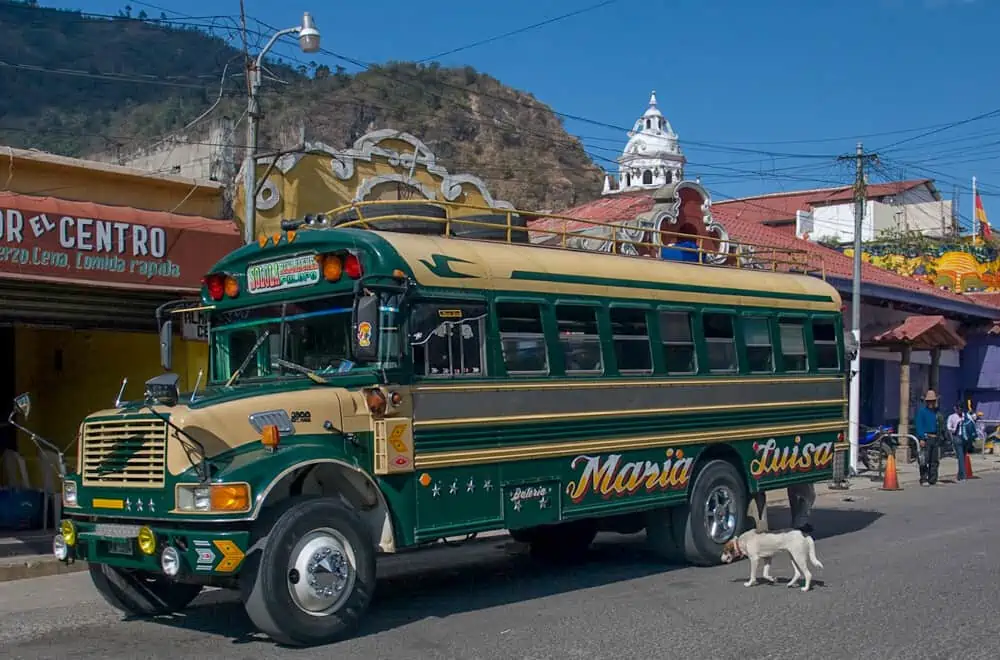
The backpacker trail is well established in Central America, and you won’t have any trouble getting around via busses.
If you’re on a shoestring budget, the best bet is chicken busses, which are retrofitted school busses used to transport locals and goods. They usually only cost a couple of dollars for hours of travel but can be hot and crowded.
I took a few chicken busses while traveling in Central America but mostly used tourist shuttles. These are still relatively affordable, with the exception of Costa Rica, where I found them to be quite costly. I actually think renting a car (especially if you have friends to split it with) is the best way to get around Costa Rica.
You can always fly between cities in Central America, but I believe overland travel is the best way to get around this region. It’s a relatively small section of the world, so none of the distances you will be traveling are that far apart, making for short bus journeys. Many places are also only accessible by bus.
Crossing the borders between Central American countries is relatively easy. I’ve crossed between every country in Central America and have never run into any issues. Expect to spend an hour or two crossing the border. Many countries have an exit or entrance fee, but it’s not more than $5-10 USD.
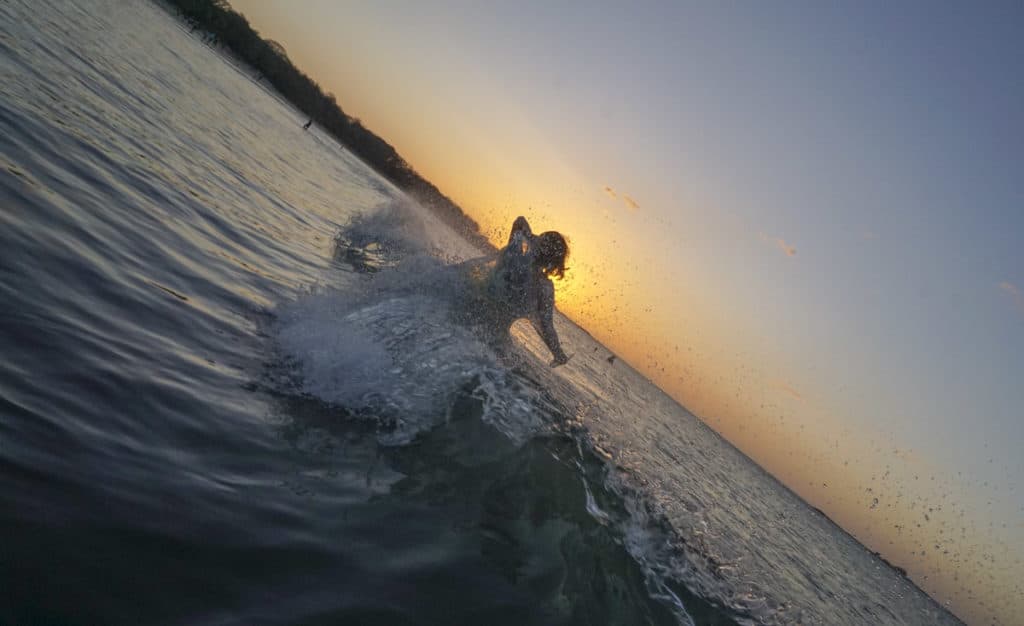
Visas for Central America
For many nationalities, including Canadians, Americans, and Europeans, Visas are not required for stays up to 90 days.
Guatemala, El Salvador, Honduras, and Nicaragua have an agreement in place that allows you to travel freely between the four countries for 90 days.
Belize, Panama, and Costa are separate from this but also allow visitors from those nationalities to stay for 90 days without a visa. This makes it very easy to stay backpacking Central America for months without worrying about needing a visa.
Costs of Backpacking Central America
Central America is a relatively cheap region of the world to go backpacking in, but the costs do vary between countries. Costa Rica, Panama, and Belize are the most expensive, while the rest are very affordable. You can get by on 30 USD per day in Guatemala, Nicaragua, El Salvador, and Honduras but for Costa Rica, Panama, and Belize I’d budget at least 50 USD/per day.
A good way to make your money stretch in Central America is to volunteer or work somewhere for a while. You can check on Worldpackers for opportunities. You may also just come across opportunities while traveling. I’ve been offered jobs in hostels here in exchange for room and board.
Best Time to Visit Central America
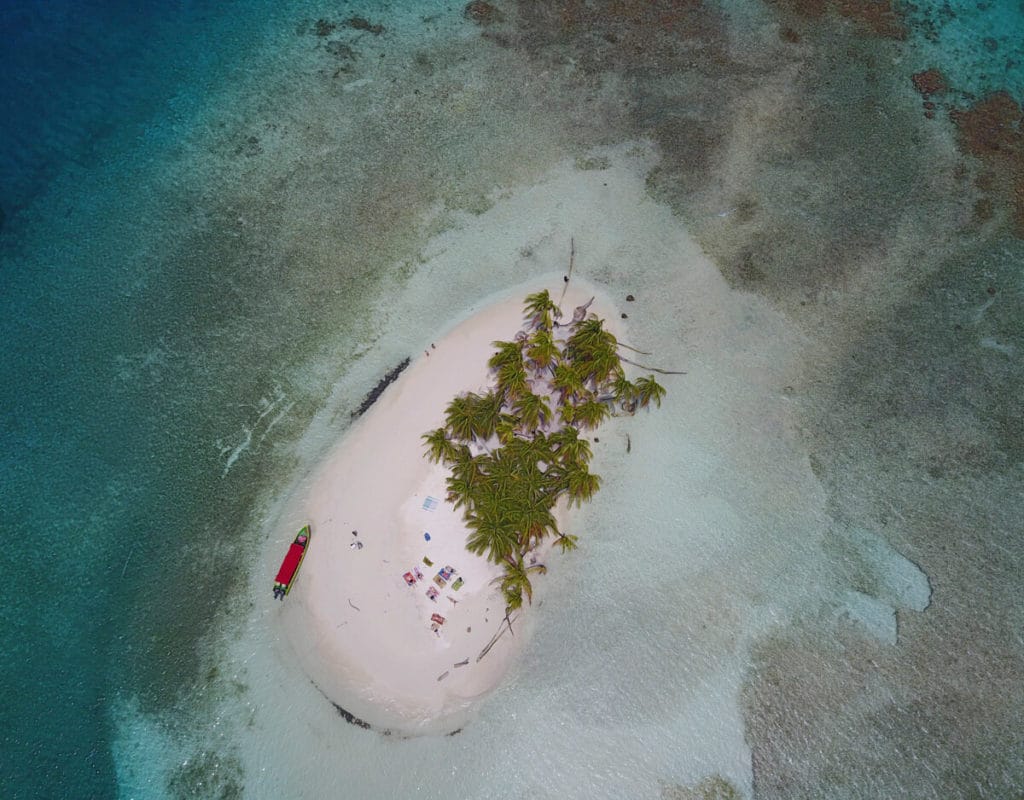
As a whole, the best time to visit Central America is during the dry season from November to April. That said, the country is open year-round, and if you don’t mind a bit of rain, you’ll be rewarded with cheaper prices and fewer crowds.
I visited in May, and in my experience, it usually just pours for an hour in the morning, and then it’s sunny all day. If you’re a surfer, the best time to visit El Salvador is during the wet season, as this is when the waves are at their best!
Safety & Solo Travel in Central America
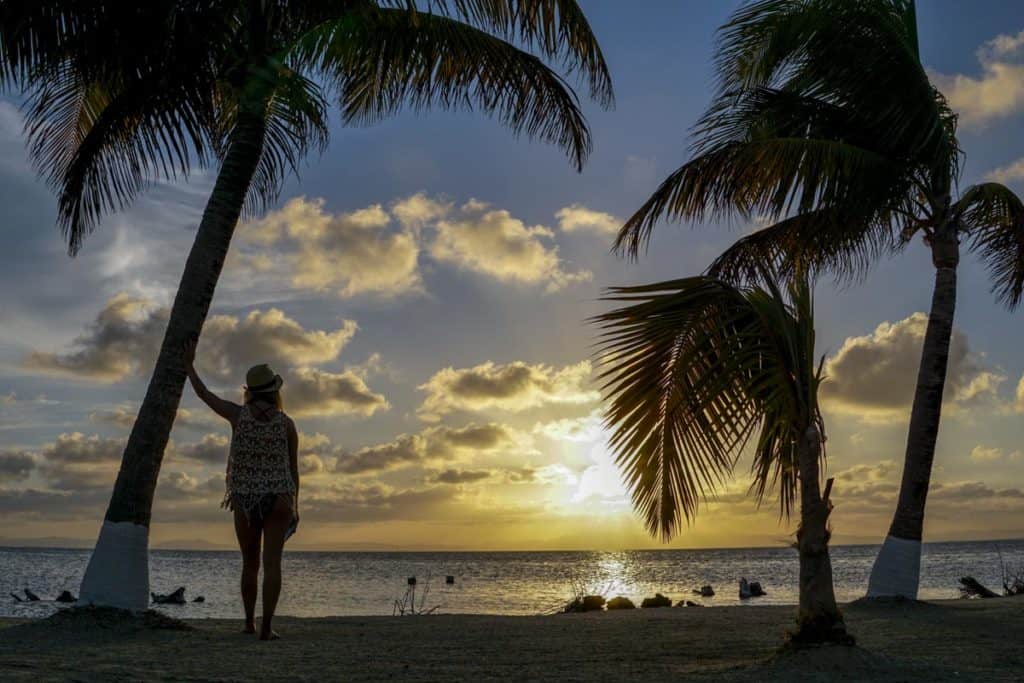
Is Central America Safe? Even as a solo female traveler, I still felt safe backpacking through Central America. Most crime happens at night, so avoid going out by yourself during the night (I never did).
The crime also tends to be concentrated in the capital cities, which is why I never spent much time in any of them aside from Panama City.
Most of the popular backpacker spots are small towns, and the locals tend to be quite friendly as tourism plays an important role in their economies. During all the months I spent backpacking Central America, I never had anything bad happen to me, nor did I meet anyone who did.
The most common form of crime here is petty theft, such as bag snatching and pickpockets. A great way to avoid this from happening is by using pickpocket-proof garments, which ensure thieves don’t know you’re carrying valuables.
I love Clever travel companion for this. They make pick-pocket proof gear for both men and women – everything from underwear to dresses!
Another way to stay safe is to lock up your belongings when you get to your hostel or hotel. I do bring my camera out with me when I’m walking around during the day, as I need to take photos.
I strongly recommend getting travel insurance for both yourself and your belongings if you are going to be backpacking Central America. I use and love SafetyWing travel insurance.
Do you want to travel Central America yet? I hope this post could give you some inspiration! It really is an amazing region of the world, and so affordable to visit if you’re coming from North America.
Enjoyed this post? Pin it for later!

Lora is a full-time digital nomad on a quest to visit every country in the world and pet as many dogs as she can along the way. Over the last 15 years, she has traveled to 70+ countries and six continents solo. She currently calls Puerto Vallarta, Mexico home and enjoys ending each day with sunset and tacos on the beach.
Leave a comment Cancel reply
Your email address will not be published. Required fields are marked *
Hi Lora, Thank you for the great read! Myself and a friend are planning a backpacking trip for Dec. this year. Greg will be going for three months, myself for six. I am from Ingersoll, Ont. and Greg is from Stratford, Ont. Both in our mid 50’s. This will not be my first backpacking adventure as I spent a year in Europe many, many years ago before marriage, kids and far too many hours working. Starting in Cancun, three months will take us to Costa Rica/Panama where Greg will head back to Canada. I will go on to South America. I am thinking of west first through Peru, Equator, Bolivia, northern Chile, then crossing over to Argentina. My gut tells me to skip Venezuela, but not sure how to get around it. Walt
Hi Walt! I haven’t been to Venezuela myself and have heard that it can be quite dangerous with the current situation so if you do go I would recommend looking into getting a reputable guide. You don’t need to go through Venezuela to visit all those other countries – I went from Argentina to Chile, Bolivia, Peru, Colombia and then to Equator all by land.

Is Central America Safe to Visit?
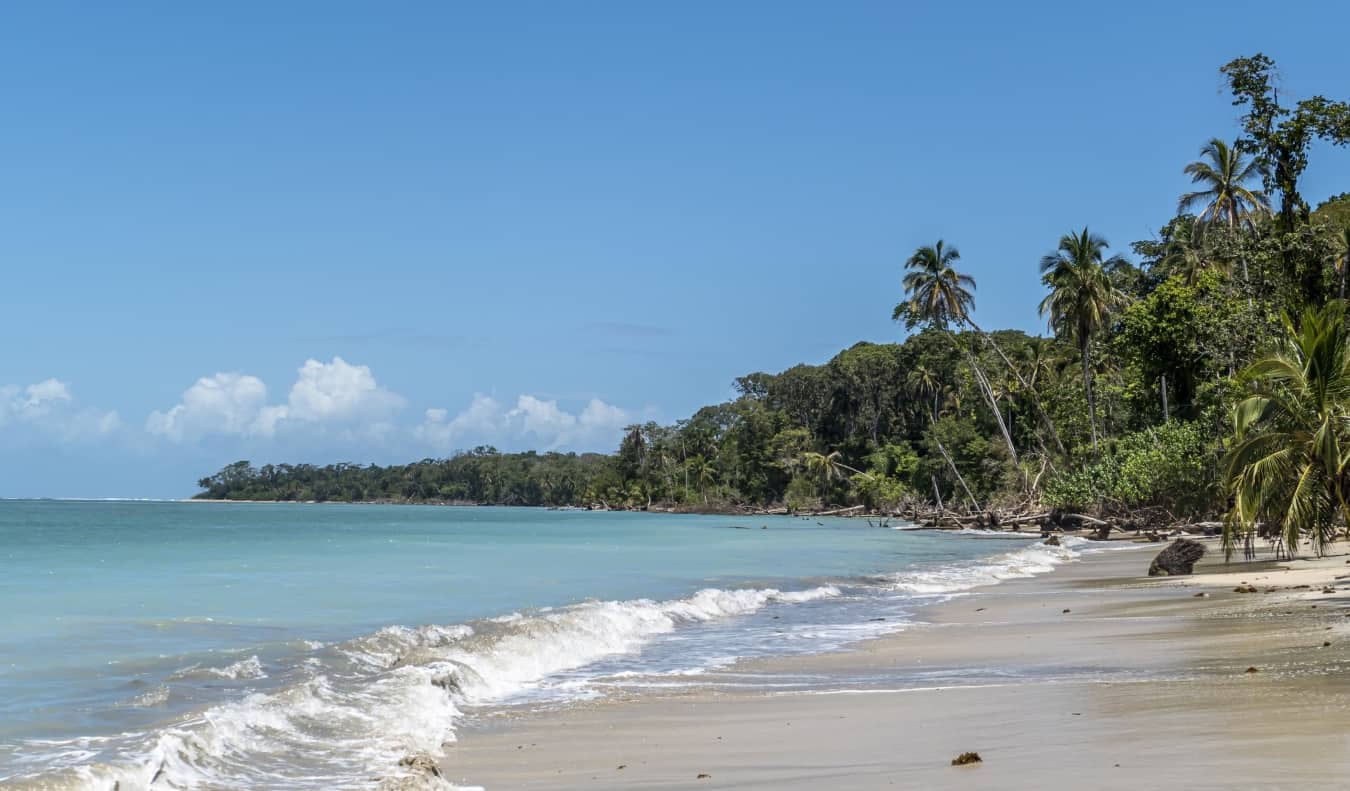
Central America is where I started my nomadic life. To this day, it remains one of my favorite regions for backpacking. Flanked by the Pacific and Atlantic Oceans, Central America connects Mexico to South America and is made up of seven countries.
It can be challenging to get around , but the region offers incredible beauty, abundant nature, picturesque beaches, and affordable prices.
And while political upheaval and civil unrest have kept tourists at bay for a long time, these days the area has developed into something of a hotspot for travelers, surfers, and retirees.
Because Central America has something for everyone yet is still incredibly affordable to travel in .
But is it safe?
In this post, I’ll go over everything you need to know to stay safe and have an amazing trip in this incredibly diverse region!
Table of Contents
What Countries are in Central America?
10 important safety tips for central america, what is the northern triangle is it safe, what is the safest country in central america, is central america safe for solo travelers, is central america safe for solo female travelers, are taxis safe in central america, can you eat the street food in central america, can you drink the tap water in central america, is it safe to road trip through central america.
There are seven countries in Central America:
- El Salvador
Click on the map for country guides:
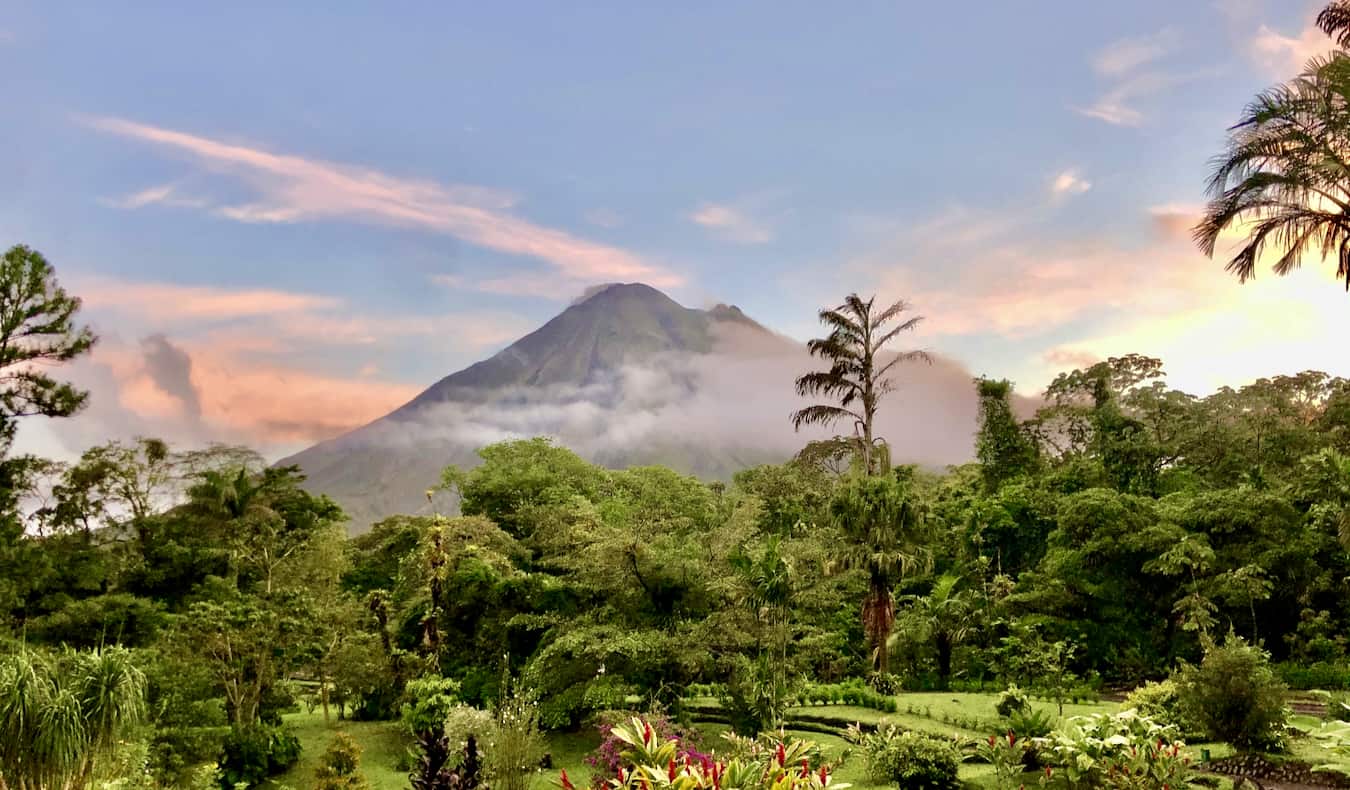
5. Download the Prey app to your phone and laptop – If either device gets stolen, you’ll be able to track it and remotely turn on your camera to photograph the thief (you can also wipe the data and message the thief too). It costs just $1.10/month.
9. Stay away from animals – Stray dogs are common throughout the region, and they (as well as monkeys) often carry diseases, such as rabies (which can be fatal). To avoid getting bitten, don’t pet stray dogs or touch any wild animals.
I recommend SafetyWing for travelers under 70, while Insure My Trip is the best choice for travelers over 70.
You can check out this widget to get a quote for SafetyWing:
For more information on travel insurance, check out these posts:
- What Does Travel Insurance ACTUALLY Cover?
- The Best Travel Insurance Companies
- How to Buy the Best Travel Insurance
The Northern Triangle comprises Guatemala , El Salvador , and Honduras . It’s the region of Central America that traditionally (and currently) has the most crime and violence . This is usually concentrated in the larger cities, and particularly in specific neighborhoods. If you’re going to be in the capital cities of any of these three countries, you’ll want to talk to your hostel or hotel staff for the most up-to-date safety advice.
That said, if you’re visiting tourist areas or going on nature excursions you likely won’t have any issues here as long as you follow the safety advice above.
Costa Rica , which provides safety and stability alongside incredible natural beauty. Of course, prices are also much higher and reflect the country’s status as “the Switzerland of Central America.” (There are still ways to travel through the country on a budget though!)
If you’re new to backpacking and want to start off somewhere that offers a good mix of adventure and safety, visit Costa Rica. It was the first country I ever backpacked and I absolutely loved it!
In terms of safety, the next best place is Panama . It’s home to a growing community of expats and retirees, which is giving the country an economic boost and making it a bit more gringo friendly. That means you’ll be able to get lots of great tips and suggestions (including specific local safety tips) from the community while still having yourself an adventure.
Coming in strong behind Panama is Belize . It does a great job of balancing safety with plenty of things to see and do. It’s also quite affordable.
Central America is quite safe for solo travelers. As long as you avoid isolated areas and don’t travel alone at night, you’ll be able to avoid the most common issues tourists face, such as petty crime.
If you’re worried that you won’t feel safe, try to join a group of other travelers (here are the best tours companies in Costa Rica ) or invite people from your hostel to join you when you go out. That way, you’ll be able to feel safe while also getting to connect with other people.
As a solo traveler, be sure to scan your passport and other important documents and email them to yourself in case you do happen to run into trouble.
Additionally, be sure to download offline maps and offline language apps so you can look up directions if you get lost or communicate with the locals in an emergency. If you can, try to learn some Spanish before you go too. Even a few key phrases can go a long way!
Solo female travelers will need to be more on guard during their time in Central America. Costa Rica, Panama, and Belize are the safest countries in the region. If you’re a new solo female traveler, stick to these countries.
Outside of those three countries, I’d suggest new solo female travelers stick to group travel or tours, just to be safe. However, experienced solo female travelers should be able to navigate the region without too much additional concern.
Women should be extra careful in large cities, though, especially at night. Beyond that, as long as you follow the usual precautions, you’ll be able to have an amazing time!
The taxis in Central America are safe and reliable, though you’ll always want to make sure you’re getting in a marked taxi. Never get in an unmarked car.
During the day, you can hail a taxi from the street safely, but you’ll want to be aware of the local custom, as some countries’ taxis use meters and others require you to negotiate a price in advance.
If taking a taxi at night, have your accommodation call it for you. Never hail a random taxi at night.
You bet you can! You’ll find all sorts of amazing street food stands and local restaurants in Central America, and you’d be missing out if you didn’t try them! Just make sure to stick to places where there are a lot of locals gathered. That’s how you know the food is not only safe but delicious too.
For the most part, you’ll encounter places that sell various kinds of chicken. As long as it is fully cooked (not pink on the inside) and hasn’t been in the sun all day, dive in and give it a try! A lot of food here will also be deep-fried, which will almost always be safe (just not healthy).
Don’t hesitate to ask your hotel or hostel staff for street food or restaurant suggestions. They’ll no doubt have some delicious — and perfectly safe — ones for you.
As a general rule, you’ll want to avoid the tap water in Central America, although it’s generally fine in most parts of Costa Rica and Panama.
The best way to make sure your drinking water is safe is to bring a Lifestraw . It’s a reusable bottle with a built-in filter. It allows you to purify the tap water so you don’t get sick while avoiding single-use plastic bottles in the process.
While it’s safer than it’s ever been to road trip through Central America, not many people do. For one, renting a car is comparatively much more expensive than other transport options for getting around the region .
Second, there still is a very strong perception of the risks and dangers associated with driving here — and not all of it is unfounded. If you plan to road trip in Central America, you do need to take some precautions. Don’t drive after dark, and never leave valuables unattended in your vehicle (even if it’s locked, as thieves can easily break in).
Lastly, roads in the region are not always well-maintained so you should be an experienced driver comfortable with non-optimal road conditions if you plan to drive here.
Personally, I would skip driving and take one of the other plentiful and affordable transportation options. Plus, riding the chicken buses are an essential part of the Central American experience!
If you are going to drive, use Discover Cars to find the best rates on your rental.
With so many affordable accommodations and transportation options , stunning landscapes, plentiful outdoor adventures, and beautiful beaches, it should come as no surprise that Central America is one of the most backpacked regions of the world.
Sure, it might get a bad rap due to its violent history and economic struggles, but that doesn’t mean it’s categorically unsafe. By following the tips above, you’ll be able to stay safe and healthy as you explore this incredible and diverse region.
Book Your Trip to Central America: Logistical Tips and Tricks
Book Your Flight Use Skyscanner to find a cheap flight. They are my favorite search engine because they search websites and airlines around the globe so you always know no stone is left unturned!
Book Your Accommodation You can book your hostel with Hostelworld as they have the biggest inventory and best deals. If you want to stay somewhere other than a hostel, use Booking.com as they consistently return the cheapest rates for guesthouses and cheap hotels. My favorite places to stay are:
- Sophie’s Guest Rooms (Caye Caulker, Belize)
- Rocking J’s (Puerto Viejo, Costa Rica)
- Hola Ola Hostel (San Juan del Sur, Nicaragua)
Don’t Forget Travel Insurance Travel insurance will protect you against illness, injury, theft, and cancellations. It’s comprehensive protection in case anything goes wrong. I never go on a trip without it as I’ve had to use it many times in the past. My favorite companies that offer the best service and value are:
- Safety Wing (best for everyone)
- Insure My Trip (for those over 70)
- Medjet (for additional evacuation coverage)
Looking for the Best Companies to Save Money With? Check out my resource page for the best companies to use when you travel. I list all the ones I use to save money when I’m on the road. They will save you money when you travel too.
Want More Information on Central America? Be sure to visit our robust destination guide on Central America for even more planning tips!
Got a comment on this article? Join the conversation on Facebook , Instagram , or Twitter and share your thoughts!
Disclosure: Please note that some of the links above may be affiliate links, and at no additional cost to you, I earn a commission if you make a purchase. I recommend only products and companies I use and the income goes to keeping the site community supported and ad free.
Related Posts
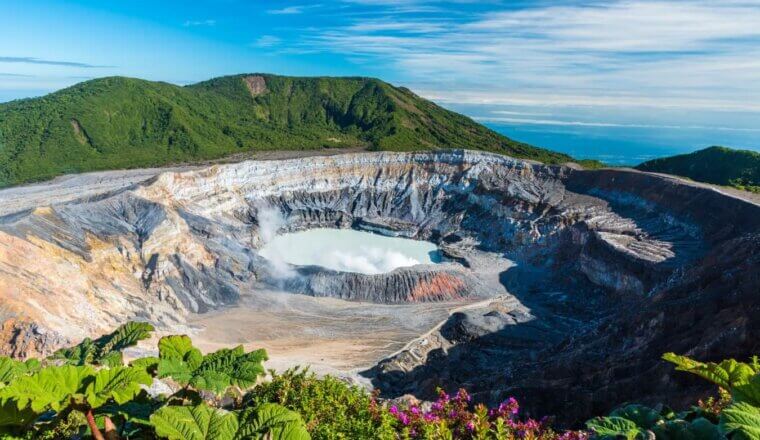
GET YOUR FREE TRAVEL STARTER KIT
Enter your email and get planning cheatsheets including a step by step checklist, packing list, tips cheat sheet, and more so you can plan like a pro!

Solo Female Travel in Central America — Is it Safe?
Adventurous Kate contains affiliate links. If you make a purchase through these links, I will earn a commission at no extra cost to you. Thanks!
Is it safe for a woman to travel alone in Central America? Absolutely. With the right research and preparation, almost every destination in the world can be traveled safely by women on their own.
Central America has so much to offer — and it’s so much safer than many people think.
The closest I’ve ever been to having an “Eat, Pray, Love” trip was when I went to Central America for several months. I had been struggling through one of the worst times in my life and what got me through it was telling myself, “You’re going to survive, you’re going to get out, and then you’re going to spend the winter backpacking through Central America alone.”
I always thought I was more of an Asia and Europe person, but Central America changed that. I loved that music blasted out from every direction. I loved how easy it was to get to know locals, and how warm and friendly they were. I swam in the turquoise Caribbean waters surrounding Caye Caulker and Little Corn Island. I hiked up a volcano in Nicaragua and slid all the way down it in an orange jumpsuit. I made so many more friends than I dared to hope for.
Central America was great for me as a solo traveler. I want it to be great for you, too.
Table of Contents
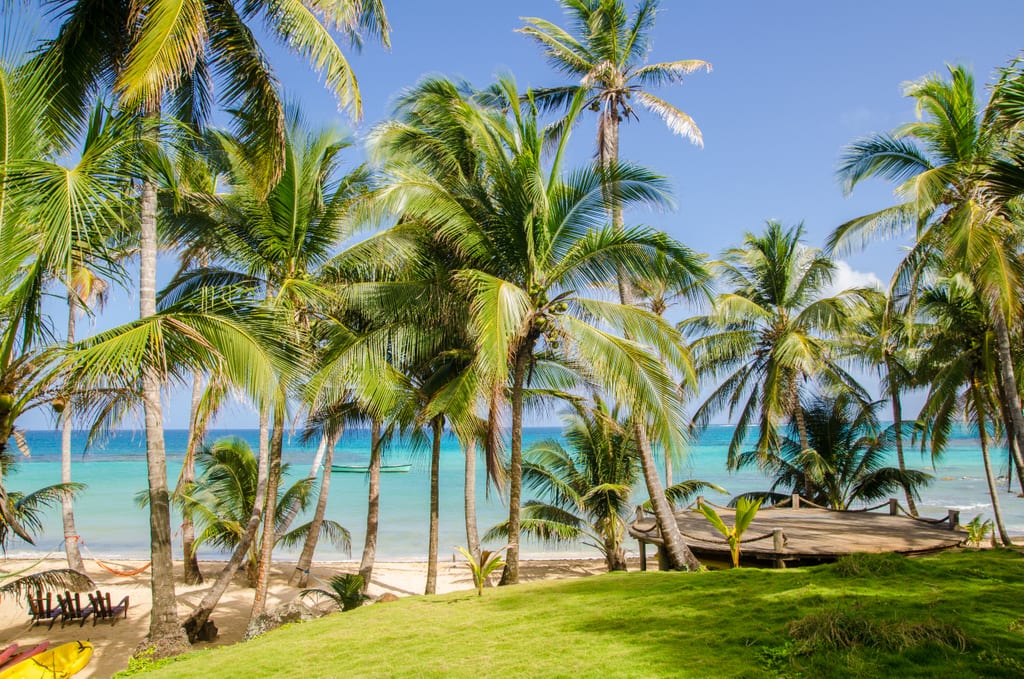
Why Travel Solo to Central America?
Central America is a fantastic destination for different kinds of travelers. But what makes it particularly good for solo travelers?
Central America has a great backpacker scene. If you want to meet people while on your travels, you will meet SO many people in Central America. To this day I’ve kept up friendships with people I met while watching the sunset on a dock in Ometepe, Nicaragua; while hanging out in the hostel pool in El Tunco, El Salvador; while sailing down the coast of Belize for three days; and while drinking at a bar in San Pedro, Guatemala!
Central America is great for being active and learning new skills. If you’re looking to become a certified scuba diver, Utila and Roatán in Honduras are home to gorgeous coral reefs and excellent diving schools. If you’re looking to learn to surf, the Pacific coast is full of surf camps, especially in Costa Rica and Nicaragua. If your tastes tend more toward dance, you can take salsa lessons in cities all over the region. And if you’re interested in trekking, Central America is filled with volcanoes to climb, rainforests to explore, and tour companies that will take you there.
Central America is ideal for learning Spanish. The best way to learn Spanish is through immersion while living with a family — and traveling solo can relieve you of the temptation to speak English with a companion. Some of the best immersion programs are in Quetzaltenango (also known as Xela) in Guatemala. If that’s too intense, you can take more relaxed classes and stay at your own accommodation, too.
Central America has gorgeous souvenirs. You could bring home a suitcase full of Mayan or Kuna textiles alone. If you’re looking for leather products, jewelry, or artwork, Central America has so much to offer.
Central America is cheap. Belize and Costa Rica tend to be the most expensive countries while Guatemala and Nicaragua tend to be the cheapest. As always, cities, beaches, islands, and tourism hotspots tend to be much more expensive than small towns and rural areas.
And if you’re flying from the US or Canada, it can be cheap to get there, too. Unlike the cheap countries of Southeast Asia, if you’re visiting from the United States, you can get a very cheap flight. Very often the cheapest (though often inconveniently timed) flights are on Spirit Airlines.
Central America is filled with constant delights. From the brightly painted chicken buses to the pulsating salsa clubs, from the deliciousness of pupasas to the thrill of sandboarding down a volcano, from the beauty of Mayan textiles to the shimmers of a sparkling Belizean cave, Central America will delight you again and again.

Is Central America Good for First-Time Solo Female Travelers?
I believe one Central American country is ideal for first-time solo female travelers: Costa Rica. Costa Rica has the most developed tourism scene of all the Central American countries. Costa Rica caters to first-time backpackers as well as resort travelers who just want to lie on the beach.
In Costa Rica you can find five-star hotels and hostels, surf camps and eco-lodges. It has everything and they are very used to dealing with newbie tourists.
Another option is Belize. Belize is easy to navigate, has high-end resorts, and English is the language, so in some aspects it makes an easy choice. However, the street harassment in Belize is incessant, particularly on the islands.
I wouldn’t send a first-time solo female traveler to Belize unless she was already experienced in fending off street harassment (i.e. someone who lives in a big city would do much better than someone who has only lived in small towns).
As for the other countries of Central America, I don’t think they’re ideal for first-time solo female travelers. I might make an exception for someone who speaks Spanish and already has extensive experience traveling in Latin America with other people.
Central American Tours for Solo Travelers
If you want to travel to Central America and you’ve never traveled solo before, I suggest you look into a group tour, anywhere you’d like, or a group retreat, fitness-oriented or not.
G Adventures , a tour company I recommend, offers several group tours to Central America. Here are a few of their tours:
- Costa Rica Adventure — 16 days all over Costa Rica.
- Classic Belize and Tikal — 9 days in Belize and Guatemala.
- Backroads of Central America — 18 days in Guatemala, Honduras, El Salvador and Costa Rica.
- Panama Experience — 14 days in Panama and Costa Rica.
- See all their Central America tours here.
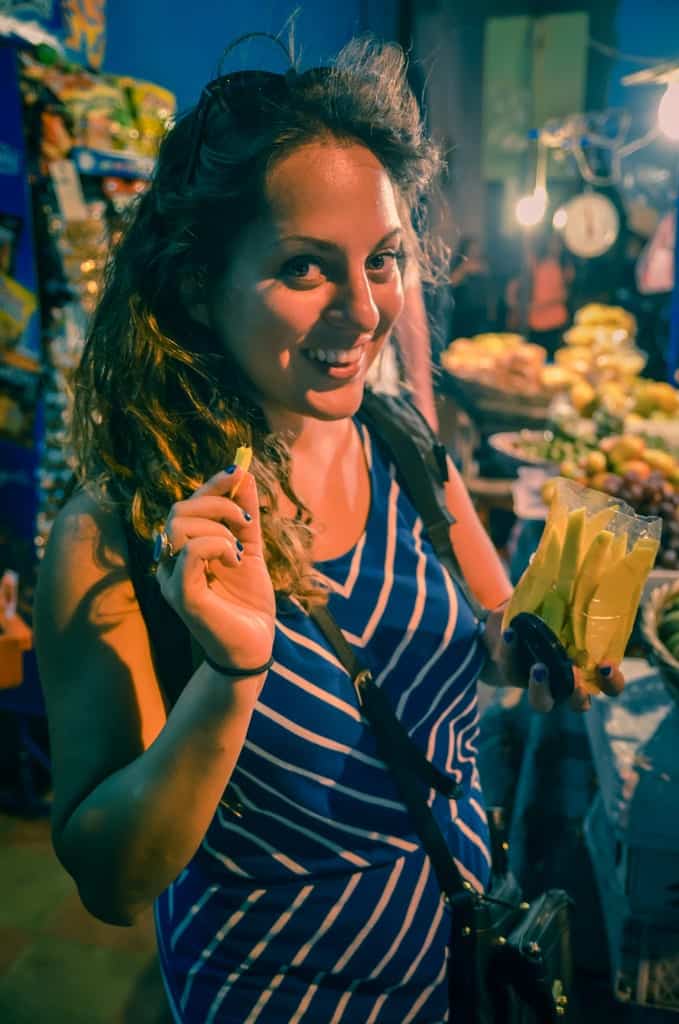
Is Central America Good for Experienced Solo Female Travelers?
Absolutely! Central America is a fantastic destination for experienced solo female travelers. I was 30 years old and had traveled to 50+ countries before arriving in Central America and I found it beautifully calibrated to my travel expertise.
When you’re an experienced solo traveler, your senses are more finely attuned to what’s going on around you. This is especially helpful in a region were petty crime isn’t uncommon. If you’re experienced, you’re (hopefully) not going to leave your passport under your pillow or walk around a city with a wide-open purse.
One thing I relished was that the backpacking scene was so different from Southeast Asia. People traveling in Central America tend to be older (late twenties and up), more experienced, and North Americans are far more prevalent. For this reason, I was grateful that I had spent my twenties backpacking Southeast Asia and Europe and had held off on Central America until I was in my thirties.
And if you’re sick of the backpacking trail, you can easily get off it. Some emerging destinations include the Rio Dulce region in Guatemala, the Miskito Keys in Nicaragua, and the Caribbean coast of Honduras.
Backpacking Southeast Asia vs. Central America
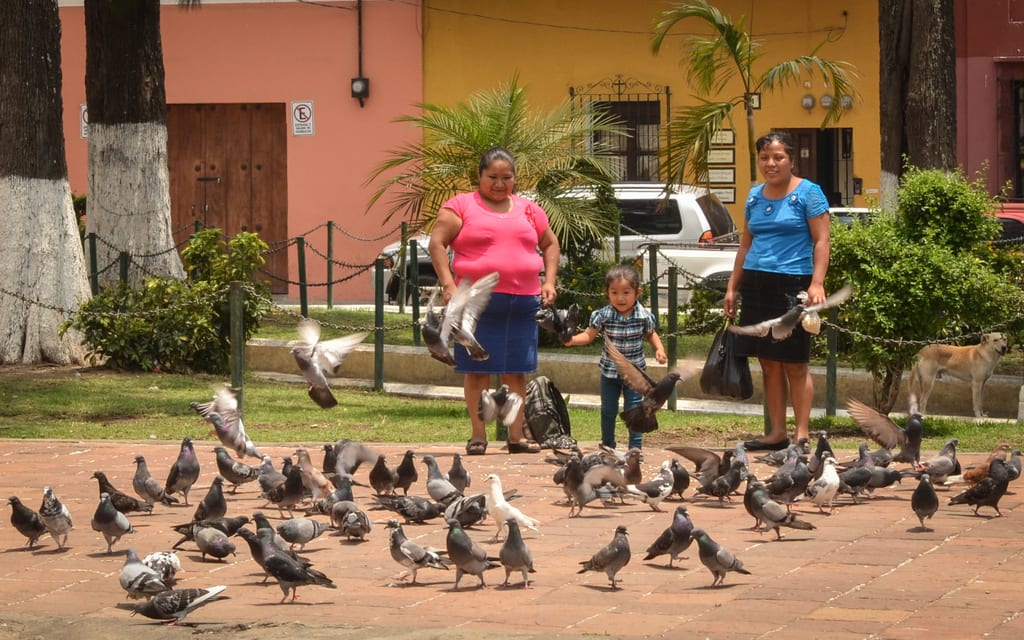
Is Central America Safe?
Central America doesn’t have the best reputation when it comes to crime. There is some truth to this. There are parts of Central America that are rife with violence — but the experience of a traveler is very different from a local who grew up in an impoverished neighborhood under gang control.
Many people who travel to Central America are concerned by gun violence, especially in cities like San Pedro Sula, Honduras, and San Salvador, El Salvador. The same truth holds anywhere in the world: most gun violence is gang-oriented and concentrated in areas where no sane tourist would ever go. Tourists are not the target.
To be honest, Central America’s major cities are not what make the region special. A lot of travelers dig the vibe of smaller, more tourism-driven cities like Antigua, Guatemala, and León, Nicaragua, but most steer clear of the major cities like Tegucigalpa, Belize City, and Managua. There is one exception: Panama City is major city that is safe, fun, and has a beautiful old town and lots of attractions for tourists.
While gun violence is rare, a far more realistic risk for travelers in Central America is petty crime. Robbery is common, whether on the road or in your accommodation, and you should be more conscientious than you would be in your home country.
To guard against petty crime, I recommend locking up your valuables in a portable safe in your accommodation, use a camera bag or day bag that locks , and keep your valuables on you in transit. See the Travel and Safety Tips for more details on how to stay safe.
The other major consideration for women traveling in Central America is the prevalence of street harassment. See the Street Harassment section for more information on how to deal with it.
Please keep in mind that the vast majority of travelers to Central America travel safely and without incident. Additionally, the vast majority of Central Americans are warm, welcoming, and will bend over backwards to help you.
Even so, I’ve known very experienced travelers who have been robbed in Central America. The most important thing is to get travel insurance ( I use and recommend World Nomads for trips to Central America ), as they will help you out in your time of need.
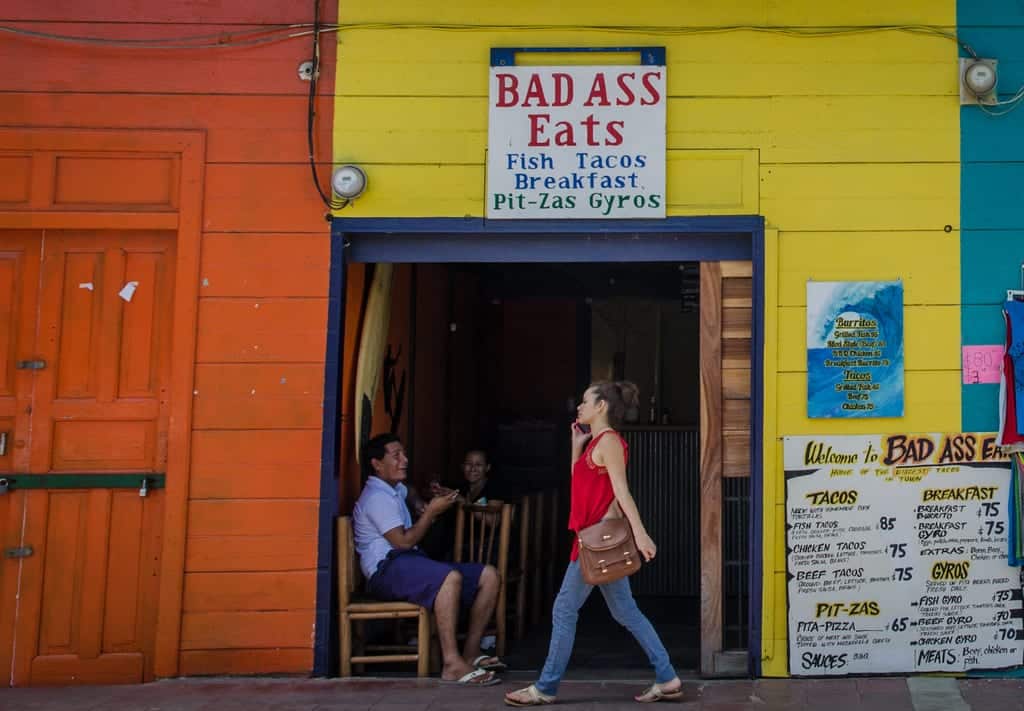
Street Harassment in Central America
Street harassment is part of life. If you’re a woman, you know that already. Street harassment happens all over the world, but it’s particularly prevalent and incessant in Latin America, where machismo reigns.
In my travels throughout Central America, I found street harassment to be most common in cities. Personally, I found street harassment to be the absolute worst in Nicaragua, specifically in the cities of Granada and León, and not quite as bad but still a major annoyance in San Juan del Sur. It was also significant in Antigua, Guatemala, especially at night.
It’s so ingrained in the culture. Here’s an example: in Granada, a group of little boys around seven years old were playing soccer and lost their ball. I grabbed the ball and gave it back to them. Immediately, the boys started chanting, “Beautiful! Beautiful! Beautiful!” in English. That’s what they’ve learned from watching men. If you see a woman, treat her as a sex object first.
In Belize, particularly on Caye Caulker, the street harassment was a bit different, but nonetheless incessant — the men would often start a normal conversation, then get into, “Have you ever been with a black man before?” and laugh at however you reacted.
To avoid the worst of the street harassment, I wouldn’t walk alone at night — ever — in cities like León, Granada, and Antigua. Many times in Granada I would take a taxi on a four-block ride rather than walk home alone. Does that seem excessively cautious? Yes. And I did not regret it once.
Dressing like a local woman made a huge difference. In Central America and much of Latin America, women tend to wear long pants, even when it’s boiling hot outside, though they don’t cover up as much on top. Most casually dressed women tend to wear jeans, a tank top, and flip-flops. When I wore jeans or a long dress, I wouldn’t get nearly as much harassment as when I wore a knee-length dress.
In some cities, I chose guesthouses that had a restaurant so I would not have to go out at night. This was especially helpful in León because literally the moment I stepped outside my guesthouse at night, men on the street would be yelling at me. (This did not happen during the day.)
This was on a relatively touristy street home to several guesthouses and hostels. Having a restaurant on-site gave me the option of avoiding that harassment.
However, there is one place in Central America where street harassment is almost nonexistent: Lake Atitlán in Guatemala. This is because the population living around Lake Atitlán is Mayan. It’s forbidden for Mayans to have relationships with non-Mayans, and they take this very seriously, so you don’t see any kind of sexual harassment on the streets.
Beyond that, I found that there was significantly less street harassment in smaller, more rural destinations. (“Significantly less” does not mean “nonexistent” — street harassment can happen anywhere.)
I experienced no street harassment on the rural island of Ometepe, Nicaragua, or in the small town of Monteverde, Costa Rica, or even in the beach community of El Tunco, El Salvador.

Travel and Safety Tips for Central America
Most of staying safe in Central America comes down to using common sense. Don’t get blackout drunk, keep an eye on your belongings, be careful who you trust.
Double-check your passport stamps when you enter the country, especially if you’ve been in Central America for awhile. Sometimes immigration will give you fewer days in the country than you are allotted. This happened to me in Guatemala: I was allotted 13 days rather than the standard 90 and I didn’t realize until I was on my way out. They had written a “13” on the stamp; I still don’t know why this happened. I had to pay a fine of about $1.30 per day, which wasn’t severe, but it was a hassle to deal with.
Get a day bag that locks. Before I went to Central America, this was my biggest priority as I was concerned about petty crime. I ended up buying a Pacsafe bag and some padlocks; Pacsafe makes an excellent selection of bags that lock.
Be prepared for transportation scams. Once my friends and I booked a direct shuttle from San Pedro to Lanquín in Guatemala and the driver insisted on stopping in Antigua, which would add hours to an already long journey. The driver refused to go direct unless we paid him more, so we coughed up the cash.
Dress like the local women — and for all kinds of weather. Latin American women tend to cover their legs but be more liberal on top; I found that jeans and a tank top was a common uniform for local women. If you dress this way, you will be harassed less. If you’re in a resort town full of tourists, you can get away with more skimpy dressing.
Be sure to pack some warm clothing, too! I always bundle up before taking public transportation in Central America because buses LOVE to jack up the AC. Additionally, Central America is warm year-round, but there are some cooler regions.
At 5,000 feet (1,500 meters), Lake Atitlán in Guatemala is at a high altitude, and it can get quite chilly, especially at night. You’ll spot travelers clad in colorful Mayan hoodies, pants, and hats because they didn’t think to bring anything warm.
Don’t flash your valuables or wear expensive jewelry. If you’re out taking photos with an expensive-looking camera, be extra cautious. Only take out your camera and phone when you need them — don’t walk around absentmindedly with them in your hand.
Pickpocketing happens in Central American destinations, especially on public transportation. Keep an eye on your belongings at all times.
If you carry a purse, hold it close to you. I recommend a crossbody purse, made out of a tough material like leather or fake leather, that zips shut. I recommend many purses in this post. Never let it hang behind you — always keep it in a place where you can see it, and keep your hand on it if you’re in a crowd.
If you carry a wallet without a purse, don’t keep it in your back pocket. This is obvious to thieves and they will grab it and run.
If you use a small backpack, lock it. I use a Pacsafe backpack where you can lock the compartments shut.
Keep your valuables locked up in your accommodation and only take with you what you need that day. I do this with my Pacsafe Travelsafe and I consider it the most important thing I pack . Keep an extra debit card and at least $100 hidden in obscure parts of your luggage.
Get an extra debit card. You should have two debit cards to two different bank accounts. If you only have one, I recommend you get a debit card from Transferwise . Keep a few hundred dollars in your account, hide the card deep in your luggage, and use it if your primary debit card is stolen.
Never leave your bags anywhere unattended. Even if you’re used to asking someone to watch your things while you use the bathroom in a coffeeshop at home, don’t do that in Central America. Take your belongings with you. If you’re keeping your bag under the table or otherwise out of sight, keep it between your feet or hook the strap around one of the chair legs.
Don’t carry tons of cash around with you. You can use credit cards in cities in Central America, and carrying lots of cash leaves you vulnerable to theft. Don’t be the traveler who loses her wallet and the $500 in it.
Only use ATMs at banks during the day, indoors. Don’t use standalone ATMs in convenience stores. Not only do they leave you susceptible to robbery, if your card gets eaten, it’s a lot easier to retrieve it from a real bank’s ATM. If you can’t find a bank, use an ATM in a shopping mall.
If someone robs you, GIVE THEM WHAT THEY WANT. Nothing is worth your life.
Haggling is the way to purchase at markets. Never accept the first price — people are expecting you to lowball them. Have fun with it, but don’t get so caught up in it that you’re arguing for five minutes over the value of 25 cents.
Protect yourself from the sun. Being in the sun so much leaves you vulnerable to skin damage. Be sure to cover up and use sunscreen as often as possible. If you’re snorkeling, you may want to wear a rash guard or shirt to keep your back from burning.
Use reef-safe sunscreen when snorkeling, diving, or swimming near coral reefs. In fact, there’s no reason not to use reef-safe sunscreen everywhere.
Hydrate — but be cautious about the water. The water is not safe to drink in most places in Central America. While most travelers rely on bottled water, it creates a major waste issue. For this reason, I recommend you bring a reusable bottle and invest in a SteriPen water purifier (much better and faster than tablets). Alternatively, you can bring a LifeStraw , a bottle that purifies water as you drink it through its straw.
See a travel doctor beforehand and be prepared on what to do if you get sick. On the Central America tours that I led in 2015, I was shocked that roughly half of my attendees got sick. Your doctor may advise you to take antibiotics that are easily available at pharmacies throughout Central America. That’s a conversation that you and your doctor should have.
Malaria is present in parts of Central America. This is the Central America malaria map from the Center for Disease Control in the US. Some travelers choose to take malaria pills and some choose not to. I’m not going to tell you what to do because that’s a conversation you and a medical professional should have. I recommend seeing a travel doctor.
The zika virus is also present in Central America. Here is a map. Zika should be a concern of pregnant women, partners of pregnant women, and women who intend to become pregnant soon, but if you’re none of those things, you don’t need to worry. Again, this is a conversation to have with your doctor.
Bring motion sickness medication. You will probably be driving through some mountainous areas. I recommend meclizine (the generic version of non-drowsy Dramamine).
Be careful about your drinking. Drink less than you ordinarily would at home — two drinks is a good limit. Only take drinks from bartenders, never take a drink from a stranger, and always keep it with you and keep an eye on it. Be especially cautious in places like El Tunco where ladies basically drink for free during the week.
Spend extra money on staying safe. If it costs you money to take a taxi rather than walk, or to stay in a guesthouse in a nicer neighborhood, do it. It’s worth the peace of mind. Don’t pinch pennies on your safety.
Don’t flush your toilet paper. The plumbing in Central America can’t handle it. There is a wastebasket next to the toilet for this purpose. And absolutely DO NOT flush tampons or sanitary products!! (You should be using a reusable DivaCup or menstrual cup anyway.)
Get a digital guidebook and keep it on your phone. Even today, I always keep a guidebook PDF on my phone — it’s great for calculating approximate time of journeys, knowing what days places are closed, and it lists medical centers you should go to in case of emergency.
I’m a big fan of Lonely Planet guidebooks — get the digital version of Lonely Planet Central America on a Shoestring . You can buy individual country chapters if you’d like, or you can buy whole guidebooks for Costa Rica , Belize , Guatemala , Nicaragua , or Panama .
Most importantly, you have no obligation to be nice to anyone. Women often feel the need to be nice and please people at all costs. You don’t have to anywhere — especially so in Central America. If anyone is making you feel uncomfortable, just leave. Trust me — you won’t be the rudest person they meet that day. And so what if you were? You’re never going to see them again.
Top 10 Travel Safety Tips for Women

How to Get Around Central America
Central America is easy to travel in some ways and harder in others. Here are the top ways to travel:
Flying internationally within Central America tends to be very expensive, especially considering the short distances. If you’re looking to hop from Panama to Honduras to Belize quickly, it will cost you a lot more than it would to go from Germany to Spain to Italy.
Some domestic flight routes, however, are logical and decently priced — like from Managua to Big Corn Island in Nicaragua, or from Guatemala City to Flores.
If you’re looking to travel in the cheapest way possible, take the bus. “Chicken buses” are popular throughout the region — they’re named because these buses could be transporting anything from sacks of grain to cages filled with live chickens. People are squished into any space possible. While it’s the cheapest option and a hell of an experience, it can be uncomfortable on long journeys.
Tourist shuttles are a pricier, more comfortable option than the bus. You buy these tickets from travel agencies in town; they will openly advertise them. These shuttles, often minivans, give you far more space than the chicken buses and usually have air conditioning. An added bonus is they take you direct from tourist spot to tourist spot.
Tourist shuttles are especially helpful when going to more random spots that are not transportation hubs. When I traveled from Lanquín to Flores in Guatemala, it was a direct eight-hour ride in a modern, air-conditioned minivan. I met some Swedes traveling on a budget who took four different cramped chicken buses for the same journey.
Taxis are a good option for both short and long distances. Sometimes it’s a short distance within a city; sometimes you can hire a taxi driver to take you on long distance rides for a set fee (I did this from Managua Airport to León). Before getting in a long-distance taxi, I recommend faking a call to a friend where you clearly read out the license plate number, letting the driver see you.
Traveling by boat is an option. The quality of boats varies enormously — you could be taking sleek passenger boats from Belize City to Caye Caulker, or a rickety wooden boat across Lake Nicaragua, or a simple “lancha” between the towns on Lake Atitlán in Guatemala. There’s also a famous sailing trip from Panama to Cartagena, Colombia, via the San Blas Islands. I personally enjoyed the hell out of a catamaran sailing trip in Belize .
But Central America is the developing world, and I urge you to take extra precautions when traveling by boat. First off, learn to swim. Yes, it might be awkward to take lessons as an adult, but it could save your life.
Second, if the choice is between a larger ferry and a smaller boat, choose the larger ferry (this was a good decision when crossing from Rivas to Ometepe in Nicaragua).
Third, grab a life jacket and hold onto it or sit on it, even if you don’t need it.
Finally, don’t travel by boat at night, ever. You’re safest when you travel by day.
The vast majority of boat journeys in Central America are safe, but occasionally there will be an accident that makes international headlines. You should be prepared.
Adventurous Kate Gets Shipwrecked in Indonesia
Renting a car is an option. Depending on where you want to go, it might make more sense for you to rent a car — like visiting the villages of the Ruta de las Flores in El Salvador, or beach hopping in Costa Rica with your surfboard in tow.
Trains barely exist in Central America. There is a passenger train line from Panama City to Colón, and that’s it. Other trains exist only for cargo, not passengers.
How did I travel? I did a little bit of everything. For longer distances, I mostly did tourist shuttles, including some very long distances like from León, Nicaragua, to El Tunco, El Salvador. I took local buses and chicken buses sometimes, like in Costa Rica and Nicaragua. I took some boats, like from Belize City to Caye Caulker and from Rivas to Ometepe in Nicaragua. I flew from Managua to Big Corn Island and back. I took taxis in cities at night and once from Managua Airport to León.
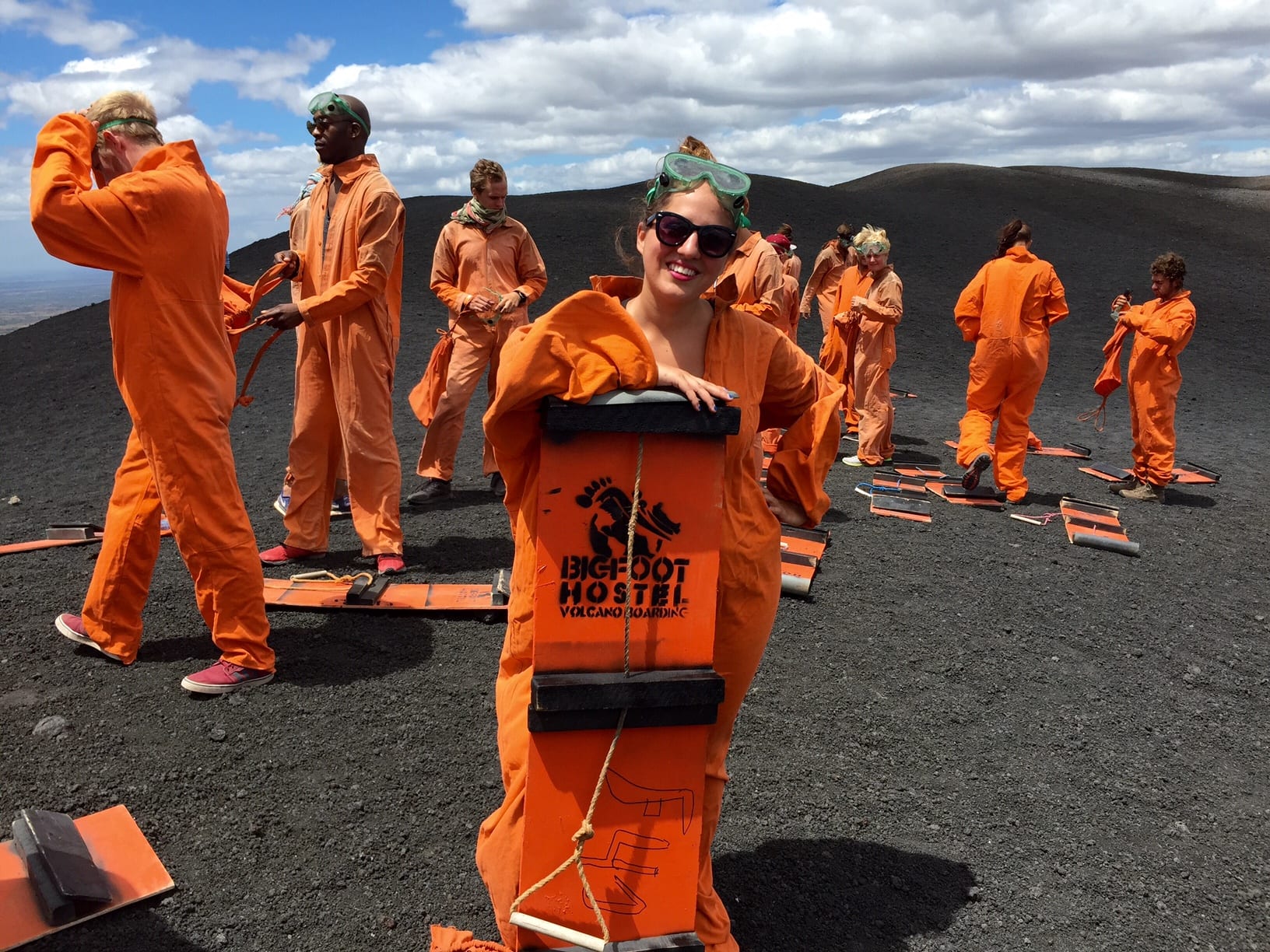
Best Experiences for a Central America Solo Trip
Go out dancing with locals. One of the best things about Latin America is that it’s easy to get to know locals. Head out to a club, enjoy the music, and soon everyone will be asking you to dance! If you really want to up your game, you can take some salsa classes while you’re at it.
Go sailing on the endless blue sea. Whether you choose a day trip or multi-day trip, a journey along the Pacific Ocean or Caribbean Sea, there’s no feeling like being out on the ocean. I loved sailing Belize for three days; another epic trip takes you from Panama through the San Blas Islands all the way to Colombia.
Do Central American activities you can’t find anywhere else in the world. Two major ones stand out: volcano boarding, where you slide down a volcano outside León, Nicaragua; and the ATM caves outside San Ignacio, Belize, which are filled with the remains of human sacrifices and everything has calcified into sparkles.
Learn Spanish. You can survive in Central America with very little Spanish — it’s far easier than, say, Colombia — but learning Spanish will add a deeper richness to your trip. Spanish schools are everywhere (except English-speaking Belize), but many people choose Guatemala for cheap immersion programs.
Hike a volcano…or just enjoy the view. Central America is covered with volcanoes, and some of them are within short distances of cities. Masaya is a short drive from Granada; Pacaya is a stone’s throw from Antigua; the two volcanoes of Ometepe formed the whole island! You can do a day trek, overnight trek, or just drive up and take a look.
Have an epic party night out. The biggest backpacker party in Central America is Sunday Funday, a pool party crawl in San Juan del Sur, Nicaragua. You’ll see Sunday Funday shirts on backpackers throughout Central America. If not there, two other party places are San Pedro on Lake Atitlán in Guatemala and Bocas del Toro in Panama.
How to Travel Solo to a Party Destination
Learn to surf. If you’ve never surfed before, Central America is a great place to learn. Most of the great surf destinations are dotted along the west coast — Santa Catalina in Panama, Tamarindo and Jaco in Costa Rica, Las Peñitas and the beaches surrounding San Juan del Sur in Nicaragua, El Tunco in El Salvador.
Find a relaxed place and chill all day long with no agenda. Drink if you want — or don’t. Make new friends — or stay solo. Some of my favorite spots for chilling out? The Split in Caye Caulker, Belize; Laguna de Apoyo near Granada in Nicaragua; and the pool at Club Ven Aca in Jaibalito, Guatemala.
Zip-line through the canopy. If you’ve ever dreamed of flying through the trees like a bird — or maybe a monkey — Central America is the place to do it! Every country has at least one zip line, and in Costa Rica, there are several dozen if not hundreds.
Eat pupusas. These Salvadoran stuffed tortillas are perhaps my favorite food I’ve discovered on my travels. They are everywhere in El Salvador and cost about $1 each — I love them with cheese, beans, and pork. If you’re not going to El Salvador, you may be able to find them in Guatemala.
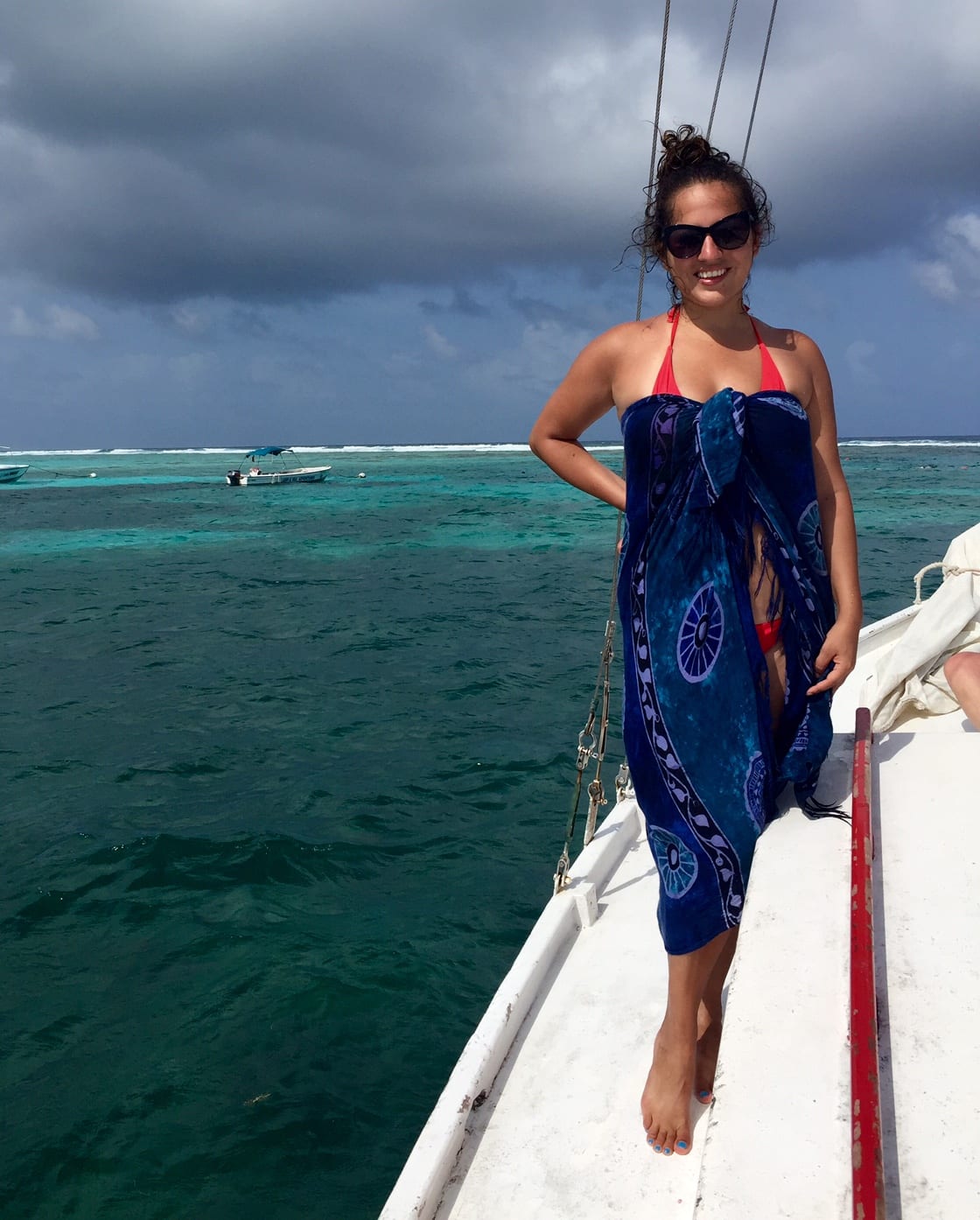
Solo Female Travel in Belize
Belize was never a place I had dreamed of visiting, but it ended up being one of the highlights of Central America for me. Belize is so different from the rest of the region — English is the primary language, it’s much more developed, it has a ton of high-end resorts, and it’s far more expensive than you’d expect a Central American country to be.
It’s the price factor that keeps many budget travelers away from Belize — but that’s a shame. Belize has so much to offer.
Most travelers to Belize come for the beaches and islands. Caye Caulker is the small, calm, backpacker-oriented island, while Ambergris Caye is more upmarket and caters to a more luxurious clientele. Other beach towns like Hopkins and Placencia fall somewhere in the middle.
One of the best things I’ve done in my travels was the sailing trip from Caye Caulker to Placencia . That three-day trip on a catamaran was a total blast from start to finish, and I’ve sent more than 20 readers on that trip.
Another popular town is San Ignacio, which gives you easy access to Mayan ruins, jungle trekking, and one of the most spellbinding sights in Central America: the ATM caves, filled with human skeletons, all covered with sparkles. It’s a place unlike anywhere else in the world. You can also day trip to Tikal and Flores in Guatemala from San Ignacio.
Check out the full Solo Female Travel in Belize guide here.
READ MORE ABOUT BELIZE:
Caye Caulker: A Good Place to Go Slow
Sailing Down the Coast of Belize
Snorkeling with Sharks in Belize

Solo Female Travel in Guatemala
I love Guatemala — it packs so much beauty and diversity into a relatively small country. Guatemala may not always be in the news for positive reasons (violence and volcano eruptions tend to take precedence), but the real country is so different from what you see in headlines.
In terms of ease of travel, Guatemala is a bit of a mix — there is a well-established tourist trail throughout the country that goes from Antigua to Lake Atitlán and Quetzaltenango (Xela) in one direction and Semuc Champey, Flores, and Tikal in the other. If you are traveling this route, you’ll have an easy time getting from place to place, especially if you rely on tourist shuttles rather than public transportation.
Step off that tourist trail, though, and you’ll find Guatemala more challenging. A bonus: Guatemala is one of the cheapest countries to travel. You can spend twice as long here as you could in Belize or Costa Rica, which is why many travelers take a Spanish immersion course here before traveling elsewhere.
Most travelers skip Guatemala City and head straight to Antigua, filled with colonial architecture and terrific restaurants. In my opinion, Guatemala’s greatest gem is Lake Atitlán, which is filled with so many interesting Mayan towns that you’re best off spending several days on the lake and exploring as much of it as you can. Semuc Champey is filled with bright green waterfalls, rivers, and caves, while Flores is a lakeside town and gateway to Tikal, perhaps the best ruins in all of Central America.
Some other emerging destinations in Guatemala are the Rio Dulce region, home to beautiful nature and waterfalls, and Monterrico, a Pacific coast beach where you can see sea turtles hatch.
One major tip for solo women travelers — I found Antigua to be lovely during the day but horrific at night because the street harassment was so vile. Even the guesthouse security wouldn’t let me walk outside, saying it was poquito peligroso . I urge you not to walk alone at night, or even walk with a group of women. Take a taxi instead.
READ MORE ABOUT GUATEMALA:
The Towns of Lake Atitlan, Guatemala
I Still Don’t Know How I Feel About Antigua
Semuc Champey: My Favorite Day in Central America
Visiting Tikal at Sunset
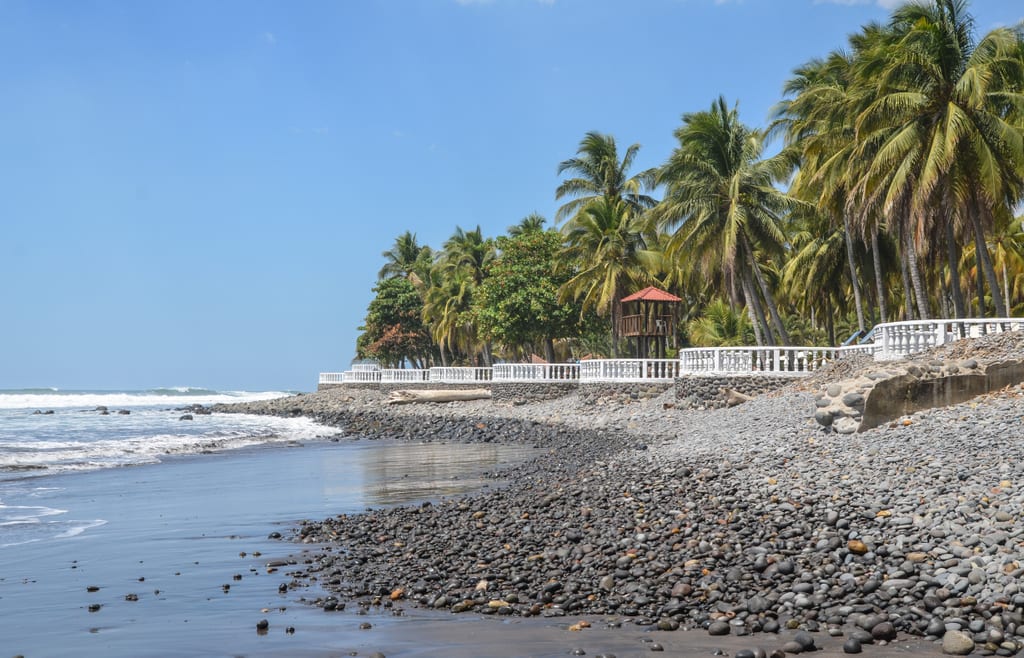
Solo Female Travel in El Salvador
El Salvador conjures up images of war and poverty — but there is so much more to this country. Look beyond that and you’ll find a country filled with warmth, color, and volcanoes.
El Salvador is also home to perhaps my favorite food I have ever discovered on my travels: pupasas. They’re tortillas stuffed with cheese, beans, pork, vegetables, or any combination thereof — and they are so delicious. Best of all, they cost about $1 each.
Some travelers choose to check out the capital of San Salvador, but most give it a pass and head down to the beach. La Libertad is the main beach town along the coast, but backpackers mostly congregate in Playa El Tunco and the calmer, sleepier Playa El Cuco. A popular road trip is the Ruta de las Flores, taking in several colorful small towns with blooming flowers. Suchitoto is another popular city. And if you love scenery, check out El Salvador’s volcanoes and turquoise lakes at Cerro Verde National Park.
El Salvador is one of the lesser developed countries in Central America, which makes it tougher to travel. Unless you’re popping into El Tunco and leaving, you’ll have to navigate public transportation and towns that don’t cater to tourists directly. If you’re up for an adventure, it’s a great option. Be prepared to constantly email your parents that you’re safe.
READ MORE ABOUT EL SALVADOR:
A Perfect Day in Playa El Tunco, El Salvador
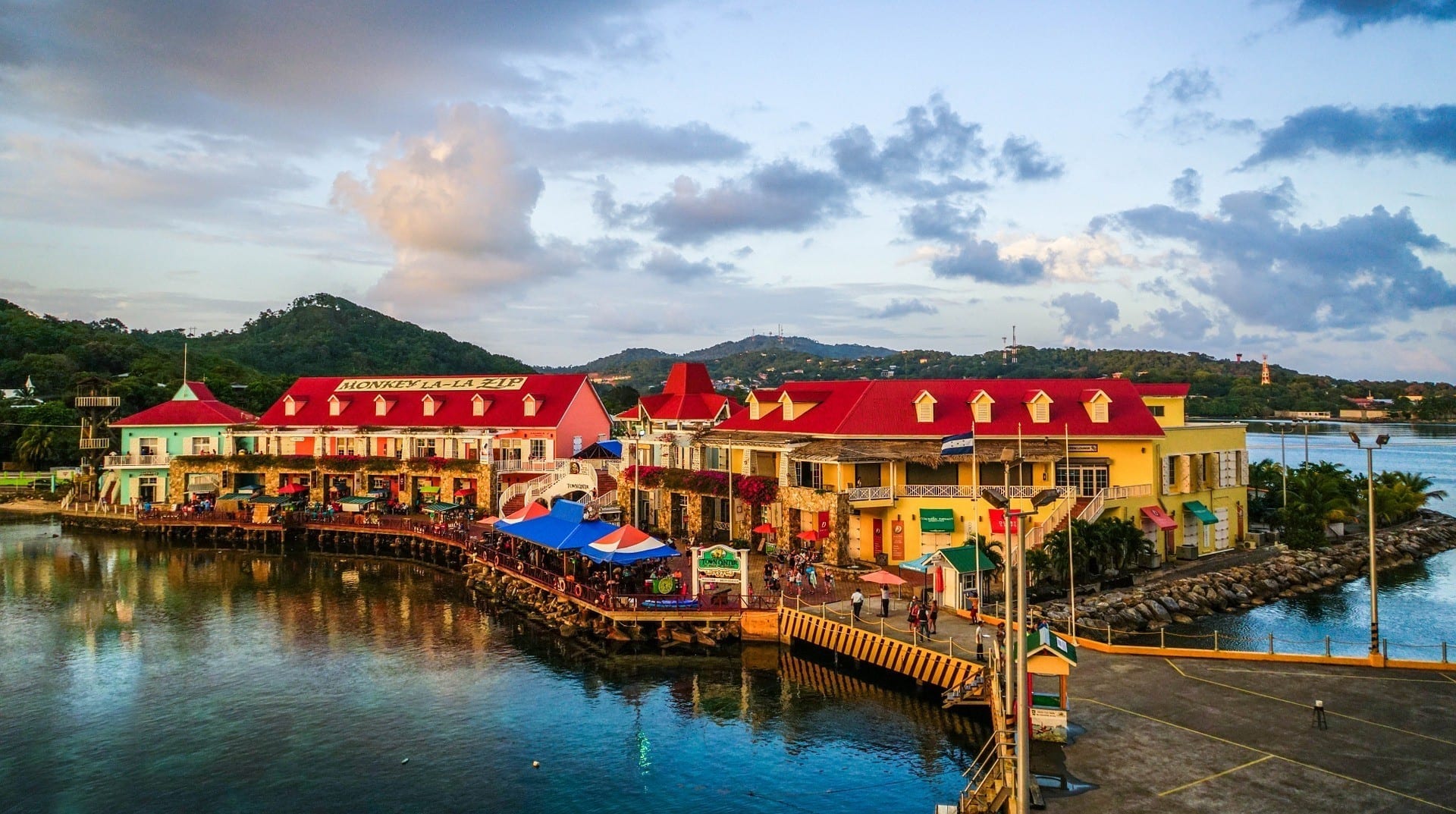
Solo Female Travel in Honduras
Most solo female travelers who travel to Honduras have one thing in mind: diving. The islands of Roatán and Utila are home to gorgeous coral reefs along with dozens of excellent dive schools. Roatán is larger, more upscale, has better beaches, and hosts cruise ships, while Utila is a smaller, sleepier, cheaper island perfect for divers and backpackers.
Other spots to visit in Honduras include Copán Ruinas, the best archaeological site in the country; Lake Yojoa, a volcanic lake home to lots of adventurous activities; and the Rio Platano Biosphere Reserve, home to some to the best wildlife in the country. Most travelers skip the two major cities, Tegucigalpa and San Pedro Sula.
Outside the two main islands, Honduras isn’t nearly as developed. That said, there are backpacker routes, an increasing number of interesting places to stay, and lots of new spots that will be “discovered” by the masses. If Nicaragua is being heralded as the next Costa Rica, Honduras is the next Nicaragua. I fully anticipate that Honduras will be upping its ecotourism game, especially on the mainland, in the next decade or so.
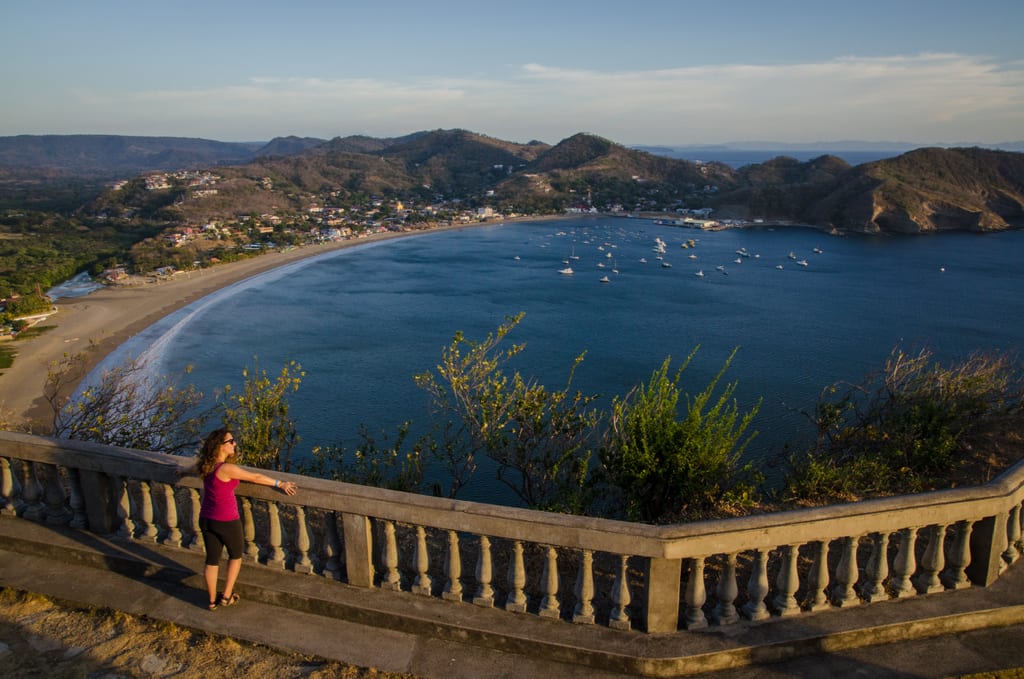
Solo Female Travel in Nicaragua
Nicaragua is my favorite country in Central America. I spent a full month of the country and explored a variety of destinations, from cities to islands to small towns.
Nicaragua is colorful and welcoming but rough around the edges, making it more of a challenge to travel than Costa Rica, Panama, or Belize. An added bonus is that Nicaragua is one of the cheapest countries in Central America, especially in the rural areas.
Most travelers start in the colonial town of Granada, close to Managua then proceed to either the island of Ometepe or the youthful, rebellious city of León (and volcano boarding nearby). If you’re coming from Costa Rica, your first stop will likely be San Juan del Sur or one of the surrounding surf towns. There are lots of other surfing beaches along the Pacific coast. But my favorite spot of all is Little Corn Island, located far off the mainland in the Caribbean Sea. This island is gorgeous, magical, and perfectly low-key.
My only problem with Nicaragua is that the street harassment is so incessant, especially in Granada, León, and San Juan del Sur. Even so, Nicaragua is still at the top of my list, which tells you how great it is.
However — and this is a BIG however — Nicaragua has been facing civil unrest since April 2018. I have not traveled to Nicaragua since the unrest erupted. Many tour companies, including G Adventures and Intrepid Travel, have suspended trips to Nicaragua at this time.
Since the conflict began, six friends of mine have chosen to travel to Nicaragua. Their experiences were mixed. Two who traveled during the earlier days of the conflict didn’t feel safe, were the only tourists in León, were trapped by roadblocks, and chose to leave the country early. More recently, another traveler went to a surf lodge and was the only guest, but felt safe the whole time. Also recently, another traveler visited much-quieter-than-usual Little Corn Island and enjoyed it.
That said, things appear to be changing lately (late 2019). I would feel comfortable traveling to Nicaragua at this time, but still wouldn’t recommend it to travel newbies.
The choice to travel to Nicaragua is yours — I can’t make it for you. The situation can change instantly, so I urge you to constantly check the current situation. If you choose to travel to Nicaragua, double-check that your travel insurance will still cover you.
READ MORE ABOUT NICARAGUA:
Rocking Out on Little Corn Island
Ometepe, Nicaragua’s Volcanic Island
The Colorful City of San Juan del Sur
The Best Things to Do in San Juan Del Sur
Escaping to Laguna de Apoyo
León, Nicaragua, the City of Revolution
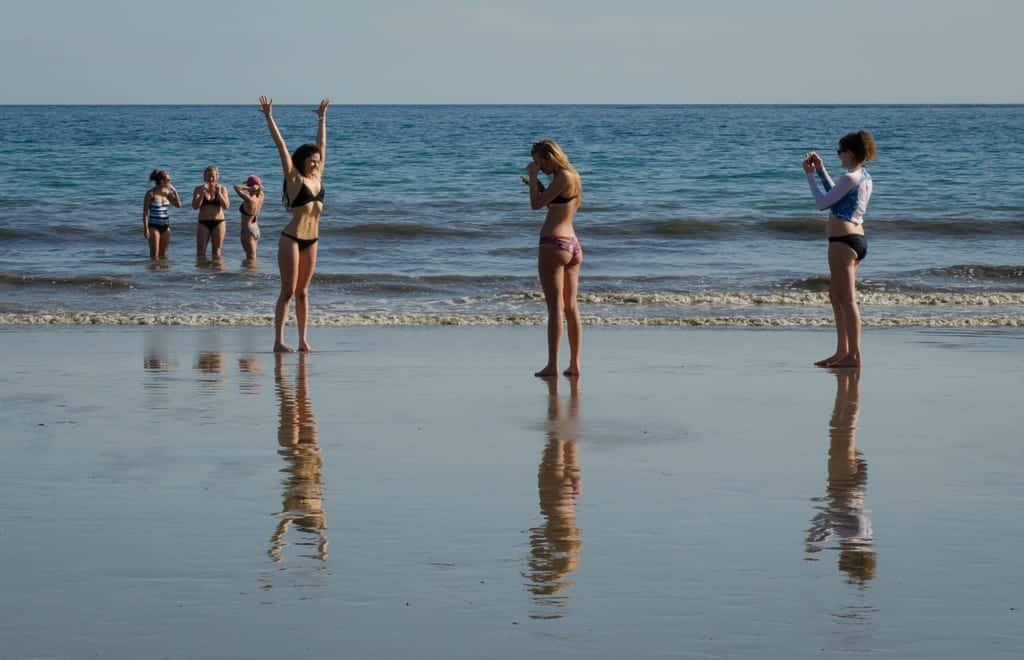
Solo Female Travel in Costa Rica
Costa Rica is the ideal choice for first-timers in Central America, including first-time solo female travelers. Costa Rica is the easiest landing pad. You’ll find accommodation at every tier here, from backpacker hostels to five-star resorts, and you’ll find an incredible variety of things to do.
Many travelers choose to focus on the Arenal-Monteverde-Manuel Antonio route. Arenal is great for Lake Fortuna, a volcano, hot springs resorts, and jungle; Monteverde is great for exploring the cloud forest, ziplining, and trekking; and Manual Antonio has gorgeous beaches pushed up against the jungle. This volcano/cloud forest/beach combination packs a lot in!
The Nicoya peninsula is home to tons of beach towns, many of them prime surfing destinations. Puerto Viejo on the Caribbean side is a major backpacker party town; Tamarindo on the Pacific coast is a much more developed touristy town. Corcovado National Park is home to some of the best wildlife in the country. And while the capital San Jose isn’t often on Costa Rica itineraries, it has some nice museums.
Fun fact — I suggested Costa Rica to my best friend and her husband for their honeymoon since they wanted a relaxing vacation but didn’t want to be out in the sun all day, every day. They went and loved it!
Check out the full Solo Female Travel in Costa Rica guide.
READ MORE ABOUT COSTA RICA:
The Perfect Beach Town of Sámara, Costa Rica
Best Time to Visit Costa Rica
Into the Cloud Forest of Monteverde
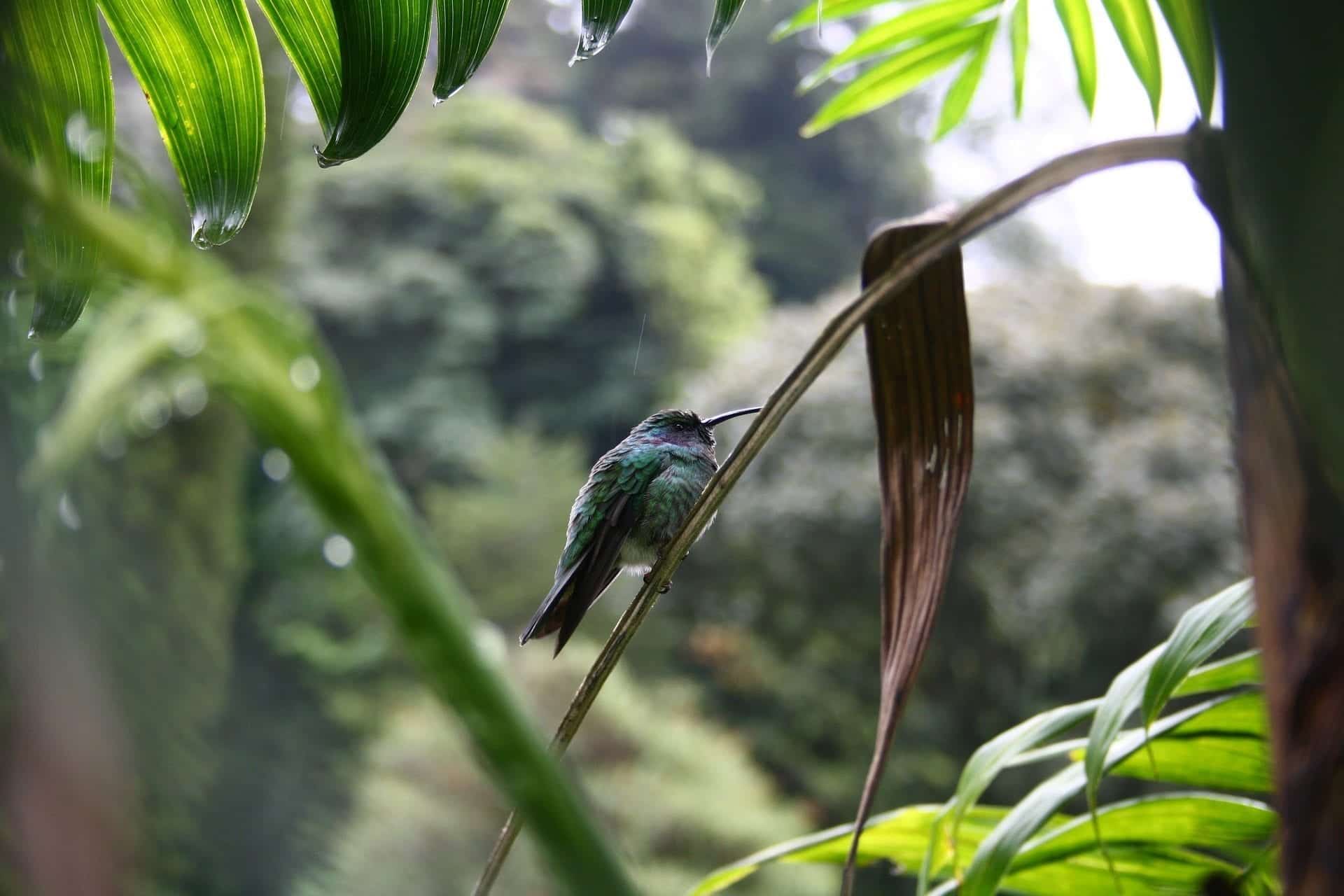
Solo Female Travel in Panama
Like Costa Rica, Panama is another easier choice for Central America. While not quite as developed and tourism-driven as neighboring Costa Rica, Panama is fairly easy to navigate and has accommodation at a variety of price points.
Panama City is the only major city in Central America that comes highly recommended for travelers. The San Blas islands are worth visiting for their beauty and experiencing indigenous Kuna culture.
The archipelago of Bocas del Toro, just over the border from Costa Rica, is one of the biggest backpacker party towns in Central America. The colonial town of Boquete is a beautiful launching pad for trekking and enjoying the mountains.
Panama’s Pacific coast is full of prime surfing destinations, like Santa Catalina. And Coiba Island off the Pacific coast is home to some of the best diving and underwater life in Central America.
And if you’re very adventurous — and have a trusted guide (not optional) — you can venture a bit into the Darién Gap, though please go back before you arrive in Colombia.
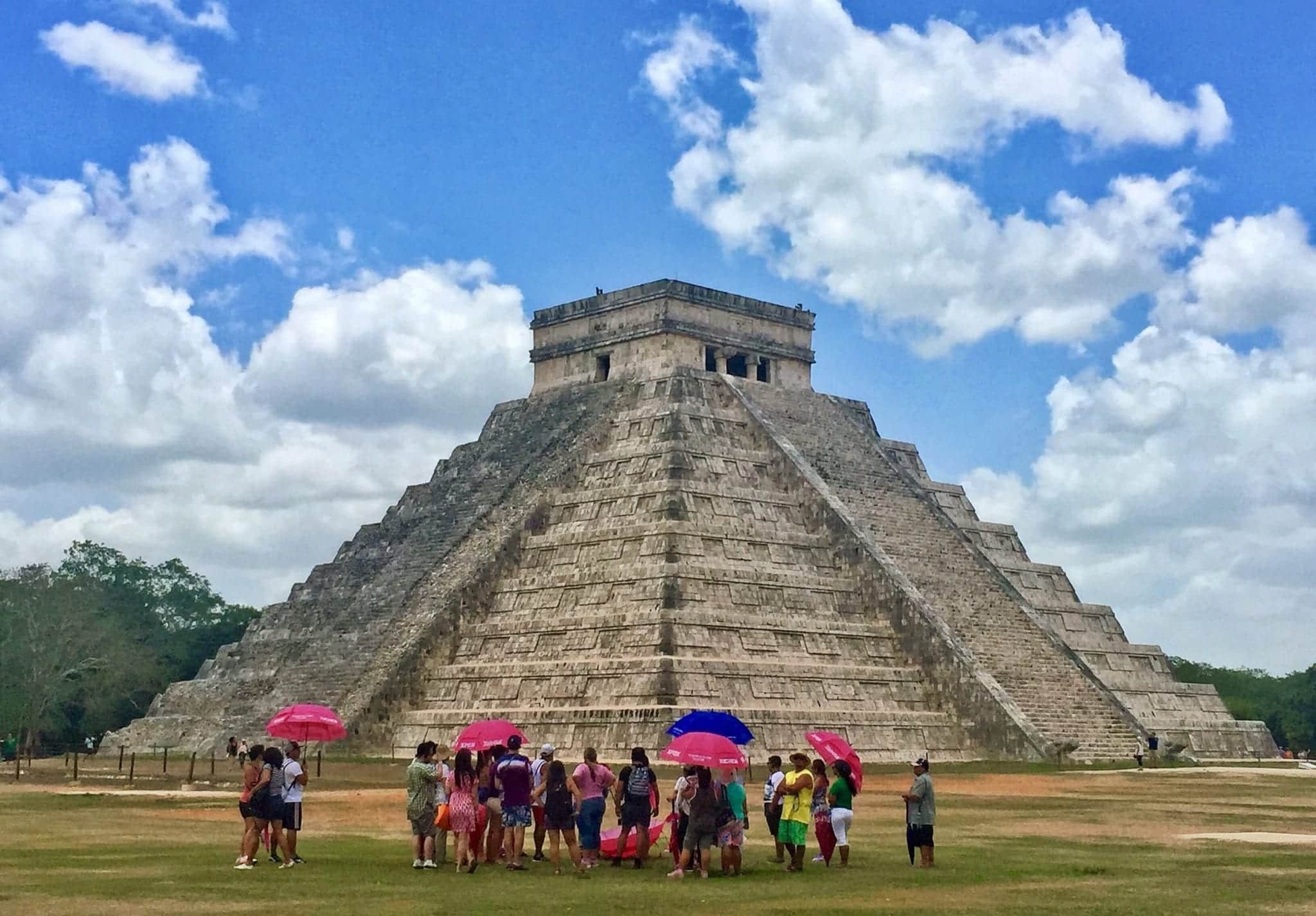
What about Mexico?
I didn’t include Mexico in this guide because it’s technically not part of Central America and I already wrote an extensive guide to solo female travel in Mexico . However, lots of travelers to Central America include Mexico in part of their plans, as it’s often easier or cheaper to fly to Mexican hubs and travel overland to Central America from there.
One popular route is to fly into Cancún and explore the Yucatán region before heading south to Belize and traveling onward to the islands or San Ignacio. (If you plan on visiting this part of Mexico, I happen to love the island of Holbox .) I took the boat from Caye Caulker to Belize City, then the bus to the border at Chetumal and another bus onward to Tulum in Mexico. Bacalar is the closest hotspot to Belize.
Another popular route is to travel between Guatemala and San Cristóbal de las Casas in the Chiapas region of Mexico. There are lots of tourist shuttles that connect San Cristóbal to Guatemalan destinations like Quetzaltenango (Xela) and the towns of Lake Atitlán.
Culturally, Mexico is very similar to Central America, and it has enormous variety. Some places are incredibly easy for newbie travelers and first-time solo female travelers, and other places are better for more skilled solo female travelers. Some places are incredibly cheap and others are quite expensive. You’ve got cities and beaches, jungles and ruins.
One big difference is that Central American food is a bit bland and repetitive but Mexico’s food scene is exciting, diverse, and filled with endless new dishes to try. It’s one of the best food cultures on the planet.
Simply put, Mexico rocks. You should go.
Solo Female Travel in Mexico: Is it Safe?
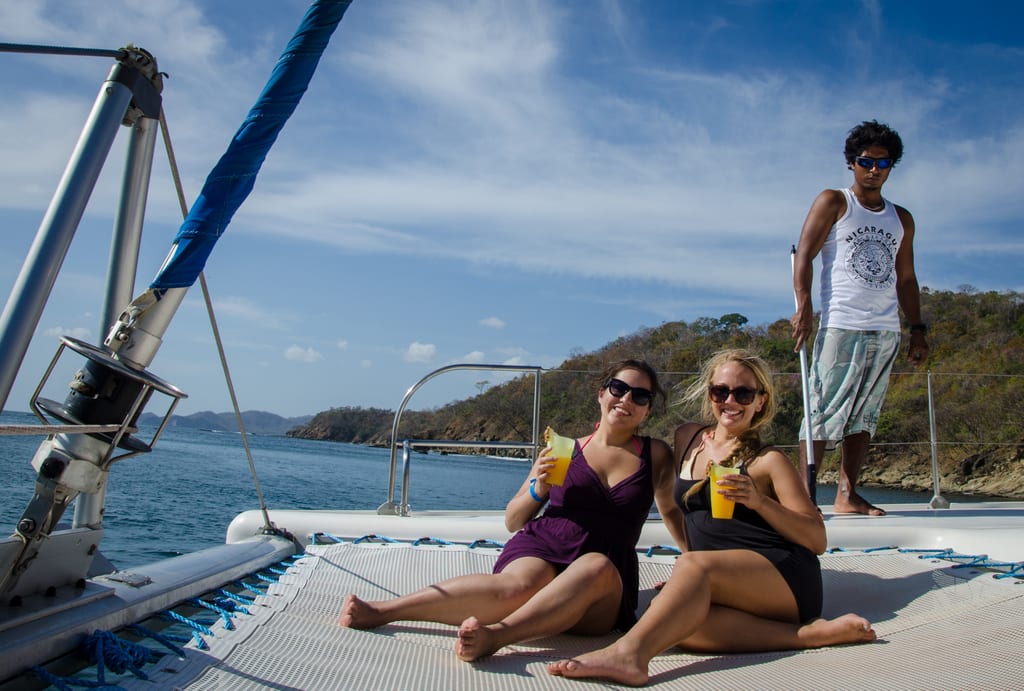
Travel Insurance for Central America
One last note — it’s absolutely vital to have travel insurance before traveling to Central America. If you get sick or injured on your trip, if you get robbed, or even if you have to be flown home, travel insurance will protect you from financial ruin. I use and recommend World Nomads for trips to Central America.
I had one instance where I almost had to use my travel insurance in Central America — my flight to Costa Rica was scheduled on a day when a major snowstorm was about to hit New York City. JetBlue offered me the chance to move my flight a day early before the storm hit, but most airlines won’t do that. If I hadn’t, I would have been stuck paying for a new, more expensive flight booked at the last minute — and travel insurance would have covered the difference.
Note: Nicaragua is currently experiencing civil unrest and some travel insurance policies will not cover you in countries with civil unrest. If you plan to visit Nicaragua, I recommend calling your potential travel insurance policy and see if they are currently covering Nicaragua. This can change on a dime so I recommend calling before you book and before your trip begins.

Central America is waiting for you!
When I look back at my happiest moments of travel, so many of them took place when I was traveling solo in Central America. It was a trip that I dreamed about in my darkest hours, and perhaps that’s why my long-term Central America trip became one of the best trips of my life.
I want the same for you. Start planning your trip to Central America. Hell, start planning your first two trips to Central America! Then come back and tell me all about it.
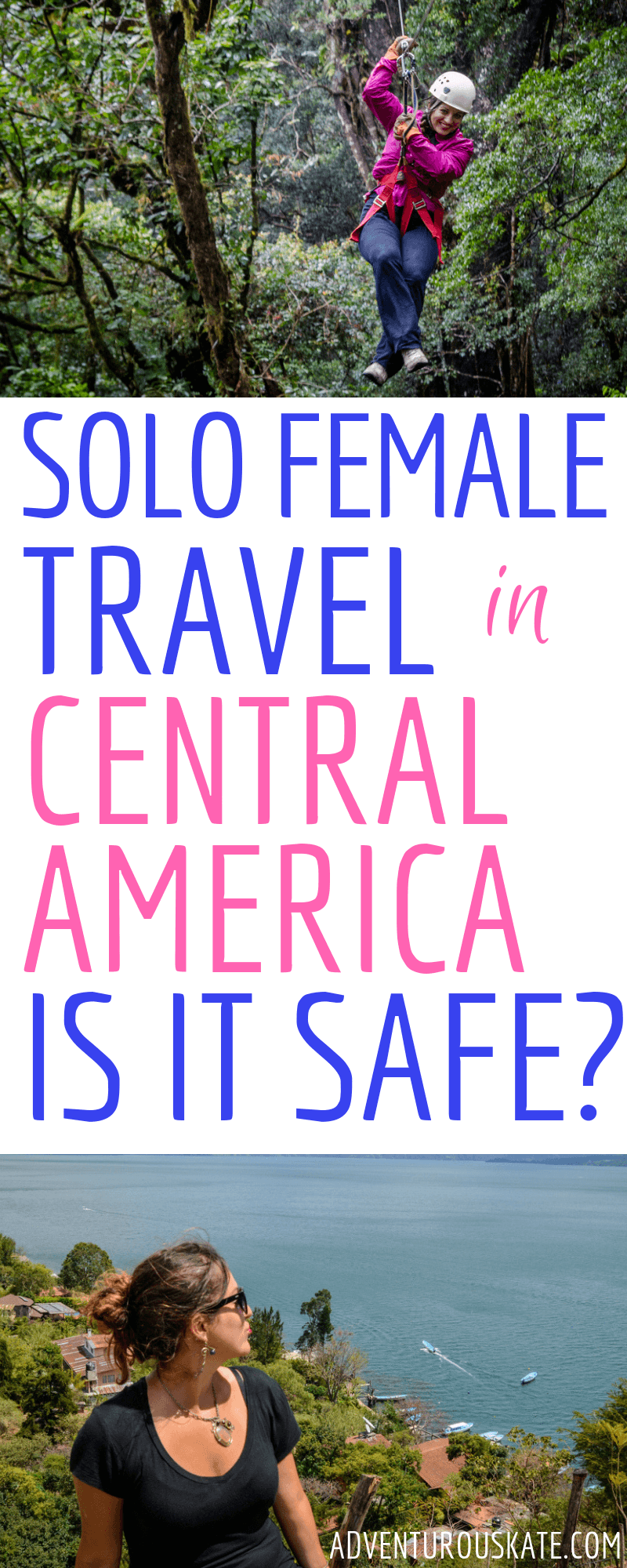
Have you traveled solo in Central America? Share your tips!
This City Is Considered A Top Destination For Solo Travelers In Central America
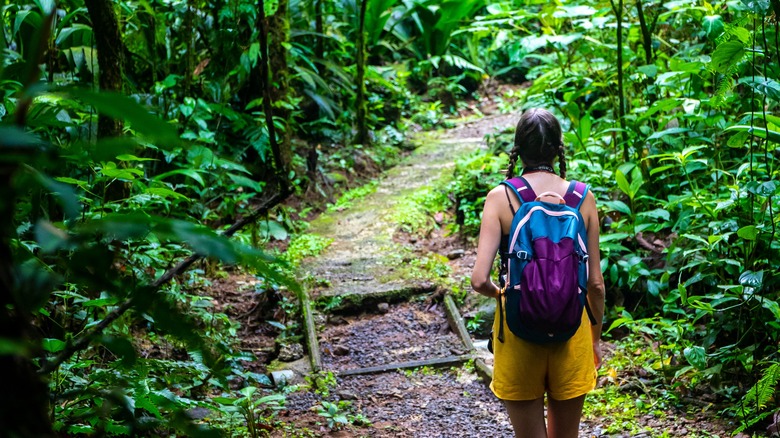
Central America is a bucket list destination for solo travelers and backpackers worldwide, and there is no better place to start than San Jose, Costa Rica. Home to a bustling international airport, the city can be reached in under a five-hour flight from many cities in the United States. Numerous direct flights are offered daily, making it easy for most tourists to get there. The capital city of the vibrant country makes an excellent launch pad into the world of solo travel. It offers unparalleled opportunities to experience rich culture, natural beauty, and unforgettable experiences for travel newbies and experienced travelers alike.
Costa Rica is a tiny country known for its lush rainforests, breathtaking beaches, epic volcanoes, national parks , sustainability, and beautiful culture. Costa Ricans are incredibly friendly to tourists, and much of the country's revenue relies on the tourism industry. The country's unofficial national motto is pura vida, which translates to pure life in English. Hardly a day will pass where you won't hear it murmured in greeting accompanied by a friendly wave. Plus, it's the safest country in Central America, according to the 2023 Global Peace Index.
Visitors can expect big city amenities within San Jose and plenty of opportunities to experience local art, attractions, tours, and cuisine. With a variety of accommodations designed especially for solo travelers, you won't have any trouble meeting new friends to explore all of the city's exciting activities.
Visiting San Jose, Costa Rica as a solo traveler
For decades, Costa Rica has been a popular destination for adventurers, nature lovers, and solo travelers. The country's national park system was established in 1970, and soon after, tourists arrived in droves. In 2022, Costa Rica welcomed more than 2 million visitors, many passing through San Jose, home to the international airport.
Solo travelers will find the thriving modern city an exciting destination all on its own. You'll find over 20 hostels throughout the city, which offer a variety of accommodations from dorms to private rooms, with prices starting at around $9 per night.
Excellent high-speed internet is available throughout the city, making it an ideal destination for digital nomads hoping to work remotely during their stay. Costa Rica has an excellent and affordable public transportation system, and you can easily take a bus to the most popular tourist destinations around San Jose. This makes it easy to explore the many museums, restaurants, art galleries, and markets around the city.
The city is relatively safe, although there are certain areas you'll want to avoid, like Santa Rita de Alajuela, otherwise known as El Infiernillo (Little Hell). Solo travelers should avoid walking around alone at night and keep an eye on personal belongings. Exploring the city alone during daylight hours is relatively low-risk. Most crimes committed involve theft. Still, there is some risk of violent crime.
Adventure awaits
Costa Rica is a small country, about the size of West Virginia in the United States, and San Jose has an ideal location in the Central Valley, right in the heart of the country. Due to its compact nature, many of the most popular tourist attractions can be easily visited as a day trip from San Jose.
Coffee fanatics will adore the Britt Coffee Tour , just 45 minutes from the city. Costa Rica is famous for its delicious coffee, and this tour allows you to experience every step, from planting the seeds to roasting the beans to sipping on a warm, flavorful cup.
Two epic volcanoes can be reached in under two hours from San Jose. Irazú Volcano National Park, home to Costa Rica's tallest volcano, where you can take in the brightly colored volcanic crater pool and hike along the trails through the lava fields. Poás Volcano National Park offers the opportunity to get up close and personal with an active volcano and enjoy views of one of the largest volcanic craters on Earth.
If you're hoping to chase some waterfalls, travel just north of San Jose to visit La Paz Waterfall Gardens , which features five beautiful waterfalls along well-maintained walking paths. The property is a wildlife refuge, so it's a great place to spot some of Costa Rica's native plants and animals, like scarlet macaws, monkeys, sloths, and snakes without straying too far from the city.
Matador Original Series
Finding myself on an adventurous (and solo) wyoming road trip.
W hen facing tough life decisions, sometimes, having time alone for introspection can be just what you need. And what better way to do that than to hit the road in an inspiring location, with a good playlist, a tank full of gas, and a blank journal? (And limited cell service, in my case.)
When I set out on my solo Wyoming road trip through the picturesque Bighorn Mountains in Wyoming, I was apprehensive, as it was my first road trip alone. However, I was eager for some time away from my usually busy schedule to focus on discovering what’s most important to me at this point in my life. Many of us – myself included – spend much of our time just going through life, getting wrapped up in our day-to-day activities without making time to reflect and plot intentional paths forward toward our goals.
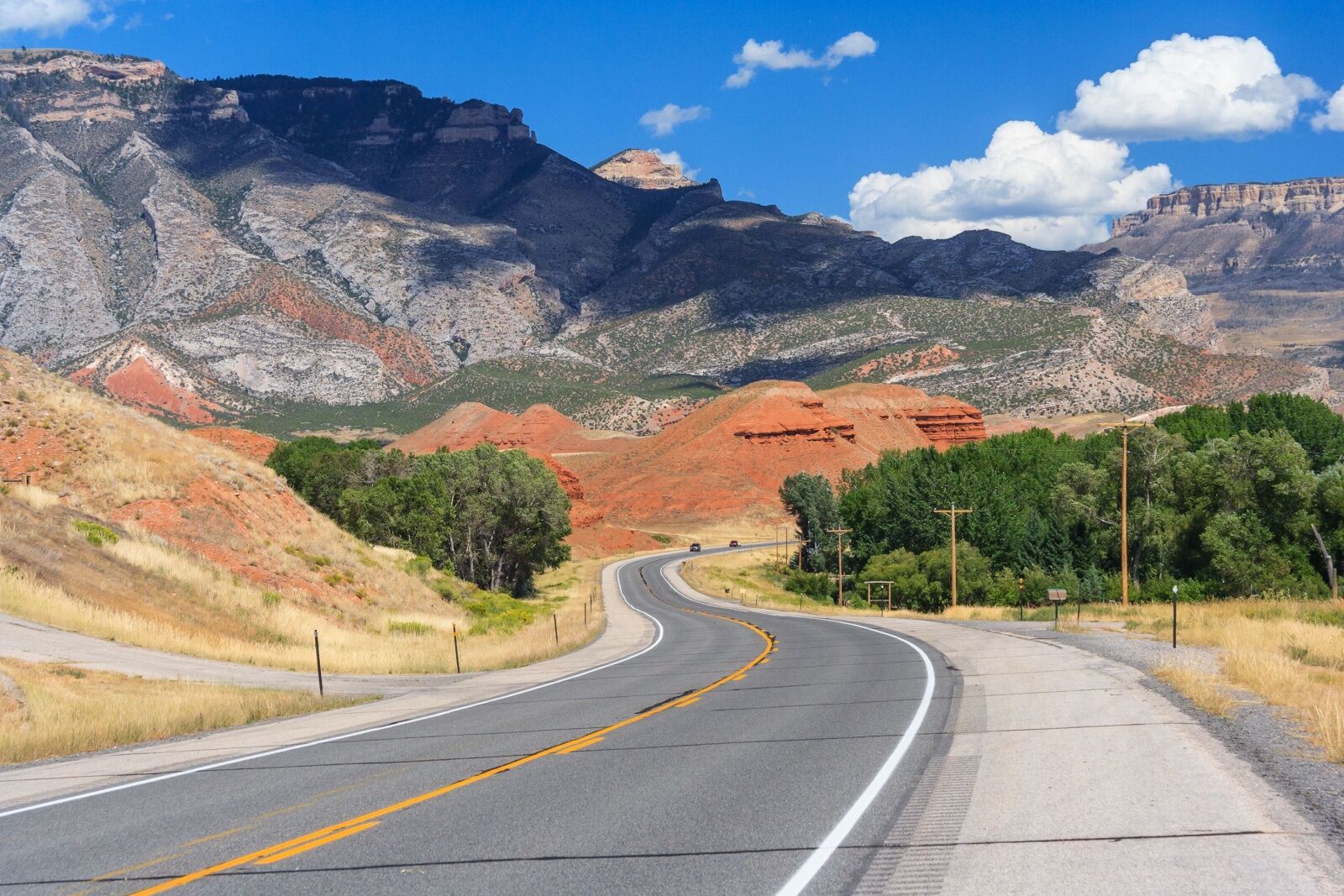
Photo: amadeustx /Shutterstock
When I found myself with few free days to travel, I decided to make space for daydreaming, reminiscing, and setting future goals. And a Wyoming road trip seemed like it would provide plenty of wide-open spaces to support my wandering and wondering.
The Bighorn Mountains of Wyoming have an ever-changing landscape, dotted with roaming wildlife, charming small towns, and friendly residents. It turned out to be an ideal location, away from the crowds of Yellowstone and Jackson Hole, and with just enough activities to challenge me, but not enough to create a schedule of endless distractions.
My Wyoming road trip route
- Total driving distance: +/- 501 miles
- Total driving time: +/- 9 hours
Day one: Cody to Buffalo
- Driving distance: 220 miles
- Total drive time: 4 hours
I started by flying into the Yellowstone Regional Airport in Cody, Wyoming (not to be confused with Yellowstone Airport in West Yellowstone, Montana). In Cody, I picked up a rental car and headed east to beautiful Shell Falls for my first stop in the Bighorn Mountains.
It sits along the Bighorn Scenic Byway and the drive there passes through the 1.1 million-acre Bighorn National Forest. It’s a sprawling landscape of vast open plains, steep canyon walls, dense forests, streams and creeks, green meadows, and stunning red cliffs. To stretch my legs and appreciate the beauty, I stopped at the Shell Falls National Recreational Trail, an easy trail with several lookout points. After breathing the fresh mountain air, listening to the rush of the falls, and taking in the splendor of the scenery, I found a bench facing the 120-foot-tall falls and pulled out my journal to start plotting my dream life. Off to a good start.
Next, I started driving to Tensleep Canyon, where I’d booked my first official activity of the trip: guided rock climbing. On the way, I stopped in the sleepy town of Greybull (population 1,700) for lunch at Lisa’s Western Cuisine & Spirits . Like many of the small towns in the region, the main street is lined with historic brick buildings housing restaurants, motels, and shops. With timber walls, rodeo artwork, and a menu featuring Southwestern and Tex-Mex cuisine, I filled up on pasta primavera and a spinach salad. Reaching Tensleep was a lot of driving, but it gave me the time to alternate between listening to a motivational audio book, and having quiet time to contemplate and appreciate the scenery.

Photo: Kris Wiktor /Shutterstock
At Tensleep Canyon, I met up with Wyoming Mountain Guides owner Zach Lentsch, who belayed me on a challenging (well, challenging for me, at least) 50-foot-tall climbing route across a limestone face. Lentsch grew up climbing in Wyoming and is eager to make climbing accessible to everyone, while educating the next generation on the importance of sustainability. Witnessing him living a life of such passion made me grateful for taking time to ensure the utmost contentment in my own life.
After a successful climb, we ducked behind some overgrown trees and scrambled around towering boulders to a point overlooking a 100-foot-tall face – and the dramatic terrain below. From there, I could see the rugged gray-and-painted-red rocks against the lush green valley, divided by rushing Tensleep Creek. Despite some trepidation, I managed to make it to the top of the much taller route, and came away from the afternoon feeling confident and proud. From the front seat of my car, with the door open, I listened to the soothing sounds of the creek while jotting down some poignant thoughts in my journal.

Photo: Cheri Alguire /Shutterstock
My last drive for the day took me to Buffalo, Wyoming, along the Cloud Peak Skyway Scenic Byway. Feeling good after climbing, I sang out loud to my favorite ’80s tunes playing on the local radio station as I passed ponderosa pines, Douglas fir, cottonwoods, and aspen trees.
By the time I reached Buffalo, I was hungry and tired, and happy to check into The Historic Occidental Hotel . The Victorian hotel dates to 1808 and is a museum as well as a hotel, housing artifacts and antiques from the Old West era, when it hosted guests like “Buffalo” Bill Cody and Butch Cassidy.
While sinking my teeth into a tasty black bean burger (no bison burgers for this vegetarian) at on-site Saloon restaurant, I was treated to vocals by a talented local duo singing “You are My Sunshine,” loud and proud. I called it a night, climbing listlessly into my bed with a brass headboard, cozy quilt, and framed artwork of the Wyoming landscape hanging above.
Day two: Buffalo to Sheridan
- Driving distance: 87 miles
- Total drive time: 1.5 hours
With a belly full of cinnamon roll French toast from Buffalo’s Busy Bee Cafe, I started day two of my Wyoming road trip bound for the town of Sheridan. But on the way, I planned to stop for a long hike in the stunning Tongue River Canyon, about an hour from Buffalo.
Driving down the dirt road to the trailhead, I was in awe of the jagged cliffs towering above me. The sky was a brilliant blue shining above the dark green forest. Donning my hydration backpack and bear bell — though I wished I’d brought bear spray — I grabbed my hiking poles and set off on my first solo hike in the remote wilderness.
The trail paralleled the Tongue River, providing a calming soundtrack for my hike. My mind flip-flopped between focusing on the sense of grandeur the landscape provoked, and a tinge of fear. “What the hell would I do if I encountered a bear? Or some weirdo hiding in the woods?” I wondered. “There’s no one out here to save me.” I reminded myself to breathe, and even with my “fight-or-flight” reflexes in a constant battle, the beauty of nature inspired me to trot on, finishing the four-mile hike with a sense of accomplishment – and only a tinge of disappointment that I had no one to share it with.
Before I left, I sat at a picnic table overlooking the river and scribbled in my journal some ideas about how to live more mindfully.

Downtown Sheridan, Wyoming. Photo: Sandra Foyt /Shutterstock
After hiking, I drove on to Sheridan, where I’d booked a fly-fishing class. Wyoming is the least populated state in the US, but Sheridan is used to seeing its fair share of tourists as it’s the midpoint between Mount Rushmore and Yellowstone National Park. After a quick lunch, I headed to the Fly Shop of the Bighorns to meet my fishing guide from Rock Creek Anglers, who outfitted me with waders, a pole and some synthetic flies.
We headed to nearby Piney Creek, where I learned how to find the perfect fly-fishing spot: not too deep or too shallow, with water that isn’t running too fast or slow. As a first-time fly fisher, the intricacies of the flies impressed me. My guide’s tackle box overflowed with colorful creatures mimicking bugs the fish would normally eat.
After learning the basics and watching my guide (and sixth-grade teacher) Scott Schroder whip the line, I waded in and tried the same thing. No luck. Schroder kept urging me, suggesting “Use your elbow, not your wrist.” Though I didn’t catch “the big one” (or even a little one, for that matter), I did enjoy the beauty of the area, getting to chat with Schroder, and learning the subtleties of fly fishing. We even saw a mink in the wild.
My bed for that night was at the Historic Sheridan Inn , a registered National Historic Landmark with the National Park Service, founded in 1893 to service those traveling west by train. My room was named after Queen Victoria, a known fan of Buffalo Bill’s “Wild West Show.”
Day three: Sheridan to Lovell
- Driving distance: 148 miles
- Total drive time: 3 hours
On day three, I headed to what ended up being my favorite part of my Wyoming road trip: the Medicine Wheel Passage Scenic Byway . This steep, two-lane road is one of the steepest in the country , passing through the Bighorn National Forest in the Bighorn Mountains, and moose and pronghorns moseyed across the road in front of me several times. The highest point (9,430 feet in elevation) was still covered in snow in early June, and overlooked the stunning Big Horn Basin below, like a painting with muted hues of green, red, yellow, blue and gray.
My next stop was Pryor Mountain Wild Mustang Center in Lovell to search for wild mustangs in the Bighorn Canyon National Recreation Area. I went out with the center’s Executive Director Nancy Cerroni, putting her Jeep to the test on the red, rugged, and rocky road through the Martianesque landscape of the wild horse range. Thanks to Ceronni’s knowledge, we encountered more than a dozen of the nearly 200 majestic mustangs who live in the area. Along the way, I learned about the history, markings, coloring, behaviors, plight, and politics around the horses.
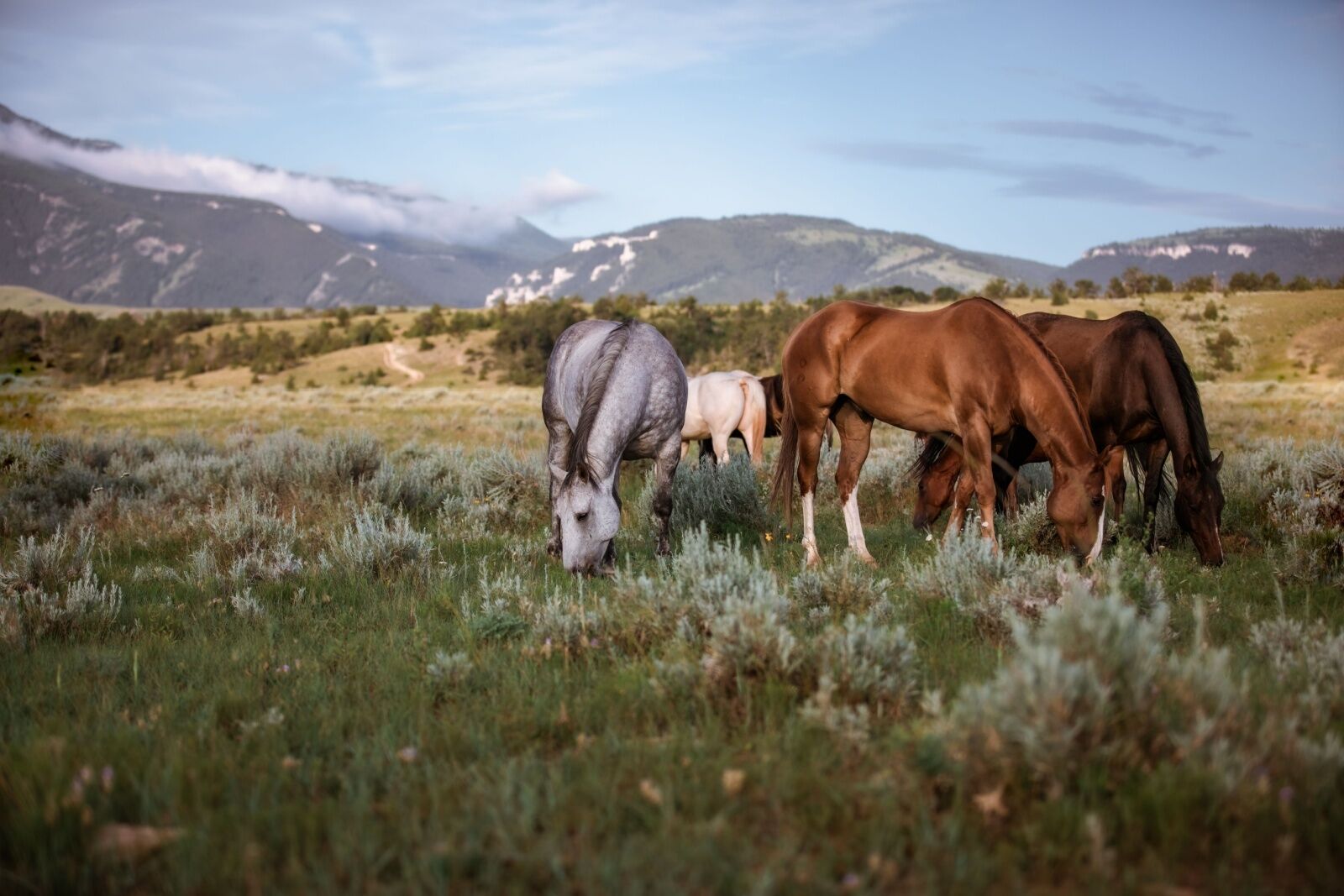
Photo: Christy berry /Shutterstock
With a population of about 2,405, Lovell does not have many options for dining or accommodations. But there are plenty of outdoor recreation opportunities in the area, including lots of hiking trails in Bighorn Canyon. I spent the afternoon searching for trailheads off Highway 37 – the Sykes Mountain Trail is one of the more popular — but I struggled on my own to find the trailheads. Instead, I drove to Devil Canyon Overlook in Montana, which blew me away.
From the top of the 1,000-foot-tall cliffs, I peered down into the horseshoe bend of the canyon where the Bighorn River flowed silently below. I took my time meandering quietly on the short loop trail, taking in the sights, sounds, and smells of the landscape, which I had all to myself. It was the perfect place to pull up a seat on a bench and jot some thoughts in my journal.

Photo: Alberto Loyo /Shutterstock
After hiking, I returned to Lovell and checked into my last stay of my Wyoming road trip, at the boutique Horseshoe Bend Motel . Owner Bobbi McJunkin took over the hotel from her father and gave it a modern facelift.
As a solo female traveler, I was a bit unnerved to notice the group of men staying in the room next to me hanging out and drinking beers in the parking lot. In my room, I hurriedly pulled the blinds closed and locked the door. But around 9 PM, I was startled by a knock on my door from McJunkin. It turns out I had left my key on the outside of my door, and the guys next door had kindly asked McJunkin to let me know.
Day four: Lovell to Cody
- Driving distance: 46 miles
- Total drive time: 50 minutes
After a few days of solitude, surrounded by the beauty of nature and wildlife, I started the journey back to Cody to head home and stopped at the Buffalo Bill Center of the West. I was out of time, but if I’d been able to squeeze in another hike, I would have hired a hiking guide to show me some of the local trails around Cody. They’re a good option for solo travelers who don’t want to hike alone.
On the drive back, I reminisced about the stunning scenery and interesting people I met along the way. The trip gave me insight into a cowboy-focused, outdoor culture I hadn’t experienced, and let me peek into what small town life is like – quite different from my home in LA. The experience made me realize that many people pass through these small towns on the way to do or see something else, but don’t realize that the towns, and the history and experiences in them, are worth stopping in their own right.
While initially hesitant to take the Wyoming road trip alone, it gave me the time and bandwidth not only for self-reflection, but for seeing the state on my own terms. I stopped when and where I wanted, and got to have one-on-one conversations with guides and small-business owners. It gave me a few days to focus just on myself – and the courage to hit the open road solo again next time.
What to pack for a solo road trip
If you’re planning on setting off on a solo, contemplative journey in an off-the-beaten-path location, you’ll want to do some pre-planning. Here’s what I found came in handy while spending long hours on the road in remote locations.
- An inspirational audio book
- A sing-along playlist (downloaded)
- A journal and pen; maybe even colored pencils for sketching
- Lots of water and snacks
- Map and printed directions
- First-aid kit
- Charged portable power bank
- Health insurance card
- Sunglasses, sunscreen, hat
More like this
Trending now, 14 amazing airbnbs for your jackson hole bachelorette party, discover matador, adventure travel, train travel, national parks, beaches and islands, ski and snow.
We use cookies for analytics tracking and advertising from our partners.
For more information read our privacy policy .
Matador's Newsletter
Subscribe for exclusive city guides, travel videos, trip giveaways and more!
You've been signed up!
Follow us on social media.

Passing Thru Travel
Solo Adventure: 17 Thrilling Destinations in South America 2024
Posted: March 6, 2024 | Last updated: March 6, 2024

Embarking on a solo journey through South America can be a transformative experience, offering a blend of rich cultures, breathtaking landscapes, and vibrant cities. This guide will help you navigate the continent safely and enjoyably, providing essential tips for solo travelers seeking to explore South America’s diverse offerings.

1. Machu Picchu, Peru
Machu Picchu, the ancient Incan city set high in the Andes, is a must-visit for any solo traveler in South America. The journey to Machu Picchu, whether by train or through a multi-day trek like the Inca Trail, is as remarkable as the destination.
The site offers an extraordinary insight into Incan history and stunning panoramic views. For solo travelers, it’s a chance to join group tours where you can meet like-minded adventurers.
Insider’s Tip: Book your Inca Trail trek well in advance, as permits are limited and sell out quickly.
When to Travel: The dry season from May to October is the best time to visit, with clearer skies and less rain.
How to Get There: Fly into Cusco from Lima, then take a train or join a trekking group to Machu Picchu.
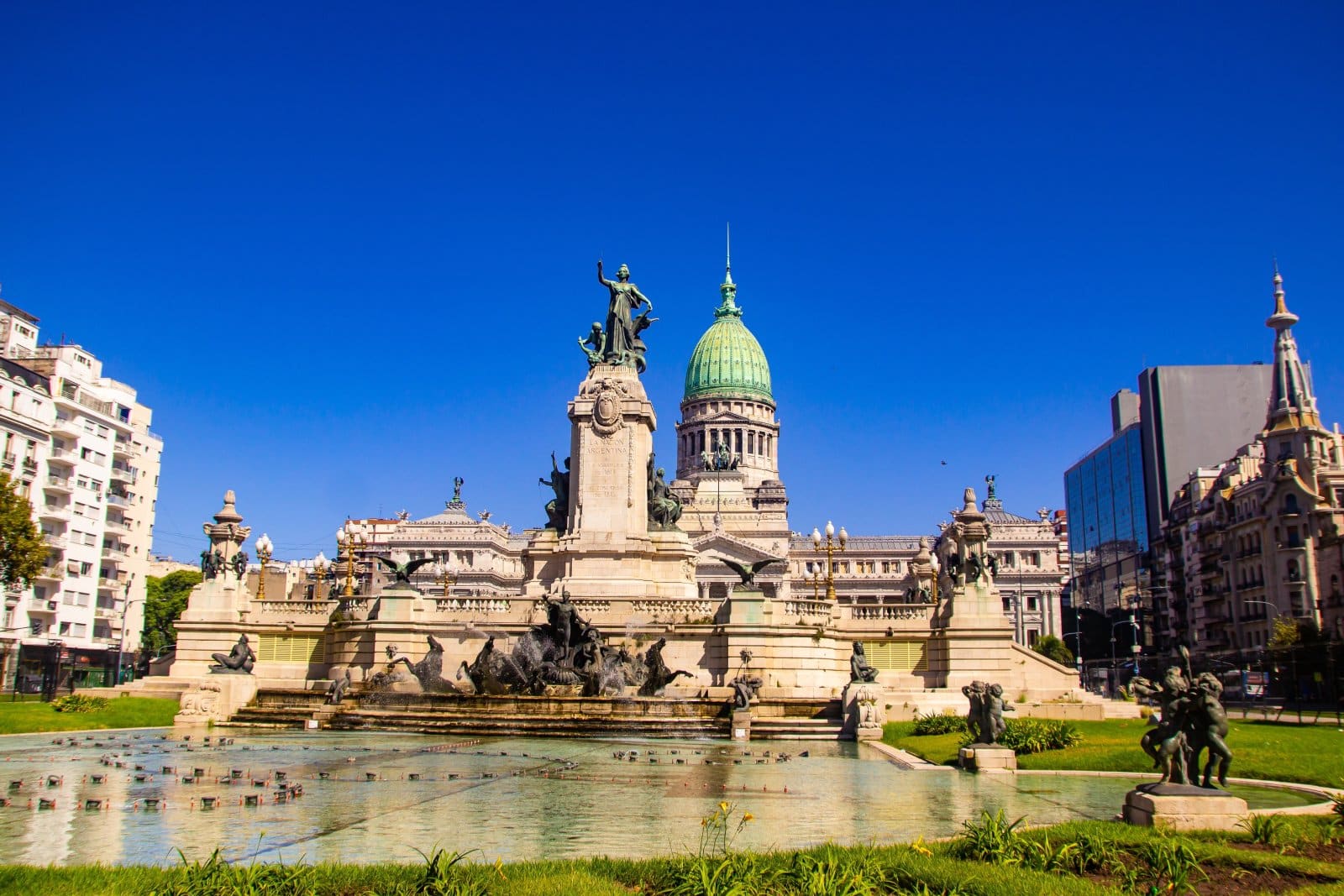
2. Buenos Aires, Argentina
Buenos Aires, known as the “Paris of South America,” is a city that captivates solo travelers with its European charm and Latin flair. Explore the city’s diverse neighborhoods, from the colorful houses of La Boca to the elegant streets of Recoleta. The city’s vibrant cultural scene, with tango shows, bustling cafes, and rich history, makes it an ideal destination for those traveling alone.
Insider’s Tip: Take a group tango lesson to immerse yourself in Argentina’s iconic dance and meet new people.
When to Travel: Visit in the fall (March to May) or spring (September to November) for pleasant weather and fewer tourists.
How to Get There: Buenos Aires is well-connected by international flights to its two main airports, Ezeiza and Aeroparque.
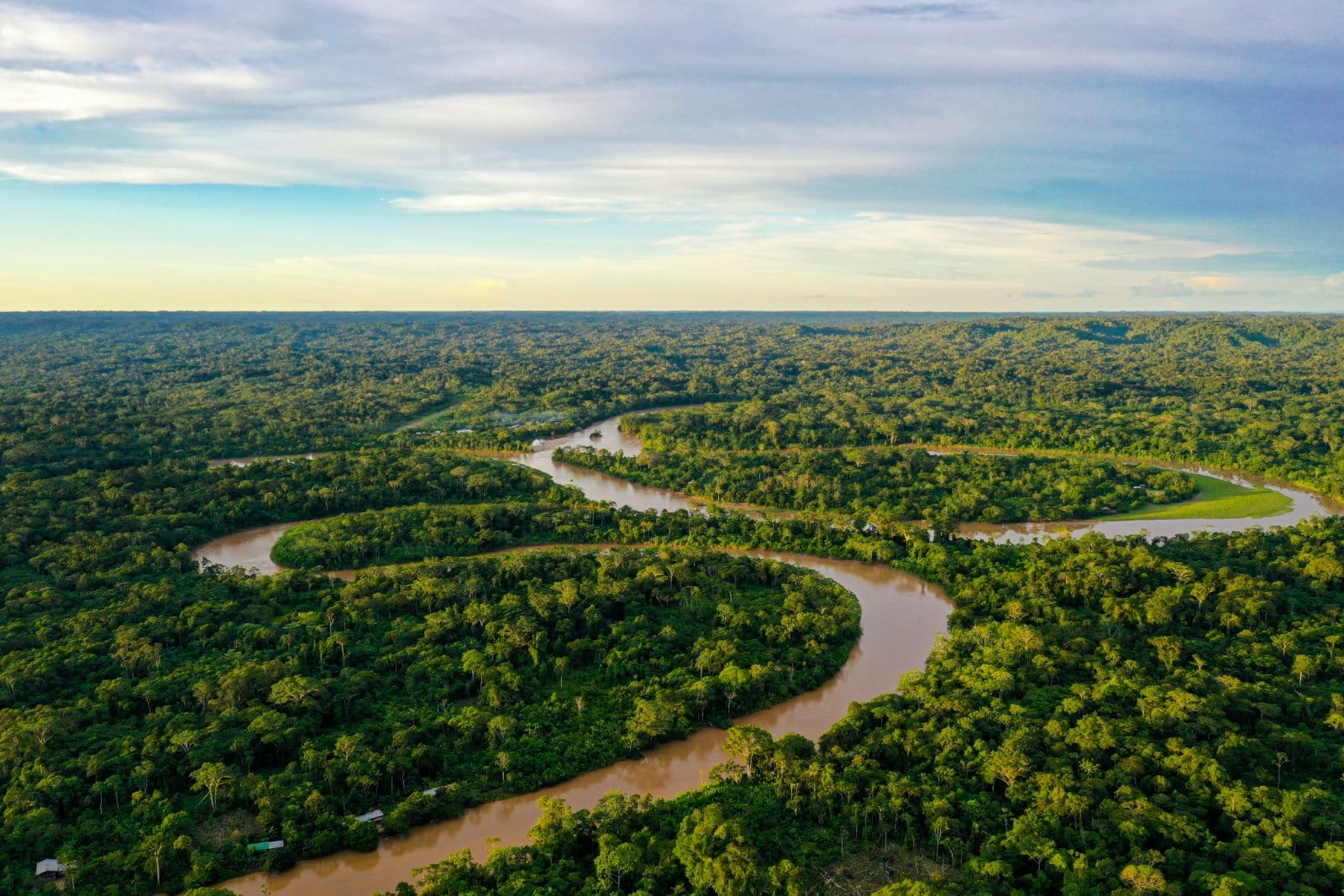
3. The Amazon Rainforest
The Amazon Rainforest, spanning across several South American countries, offers solo travelers an unforgettable adventure into the world’s largest tropical rainforest. Join guided tours to explore the diverse ecosystem, spot exotic wildlife, and learn about indigenous cultures. The Amazon is not just a destination; it’s an experience that connects you with nature on a profound level.
Insider’s Tip: Choose eco-friendly tours that support conservation efforts and respect local communities.
When to Travel: The dry season from June to October is ideal for wildlife spotting and fewer mosquitoes.
How to Get There: Access the Amazon from gateway cities like Manaus in Brazil, Quito in Ecuador, or Iquitos in Peru.
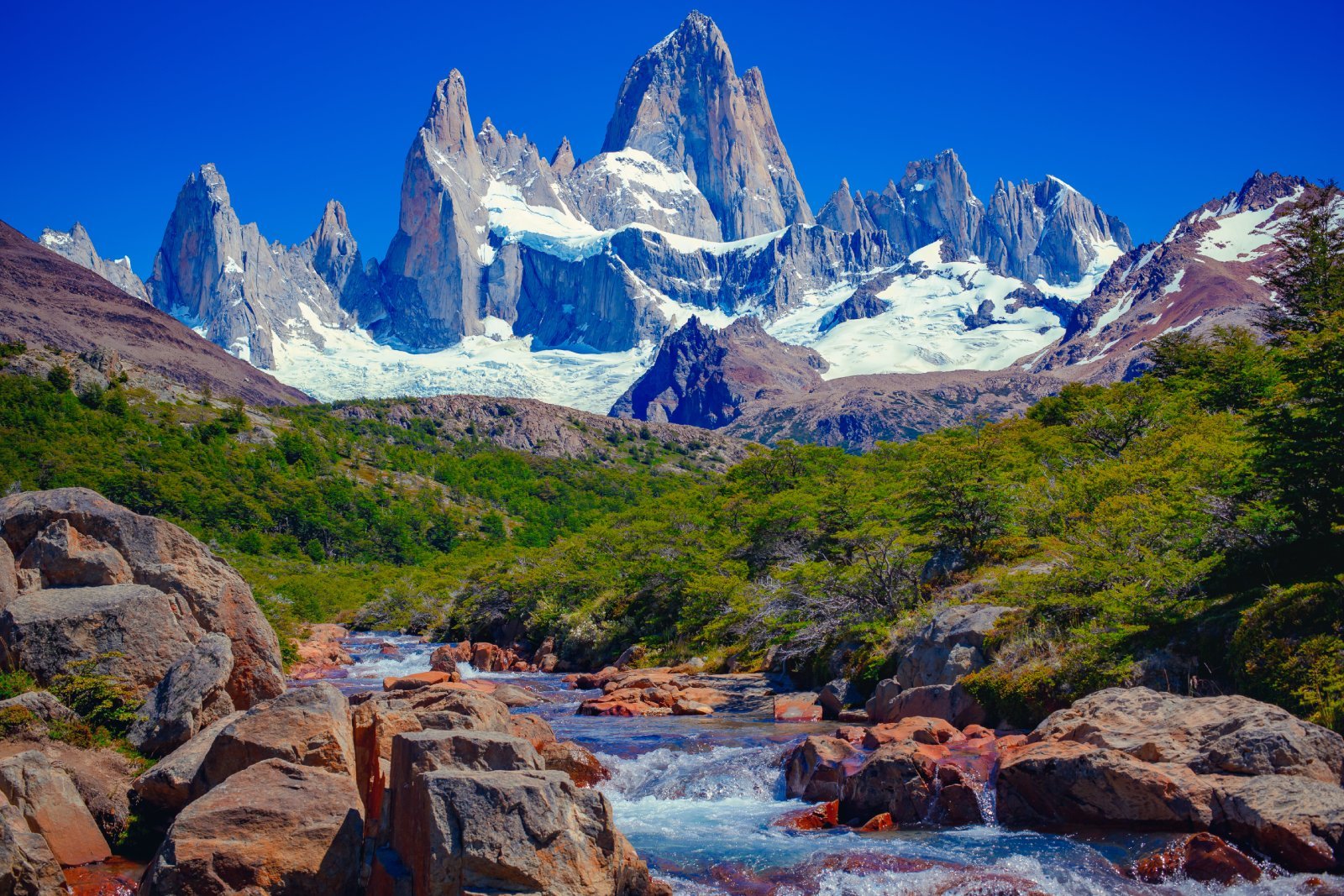
4. Patagonia, Chile and Argentina
Patagonia, straddling Chile and Argentina, is a dream destination for solo hikers. Its dramatic landscapes of glaciers, mountains, and lakes offer some of the most spectacular trekking opportunities in the world. National parks like Torres del Paine in Chile and Los Glaciares in Argentina are perfect for joining group hikes and connecting with fellow travelers.
Insider’s Tip: Consider staying in refugios or shared lodges to meet other solo hikers.
When to Travel: The Southern Hemisphere’s summer months, from November to March, offer the best conditions for hiking.
How to Get There: Fly into Punta Arenas for Chilean Patagonia or El Calafate for Argentine Patagonia, then travel by bus or car to the national parks.
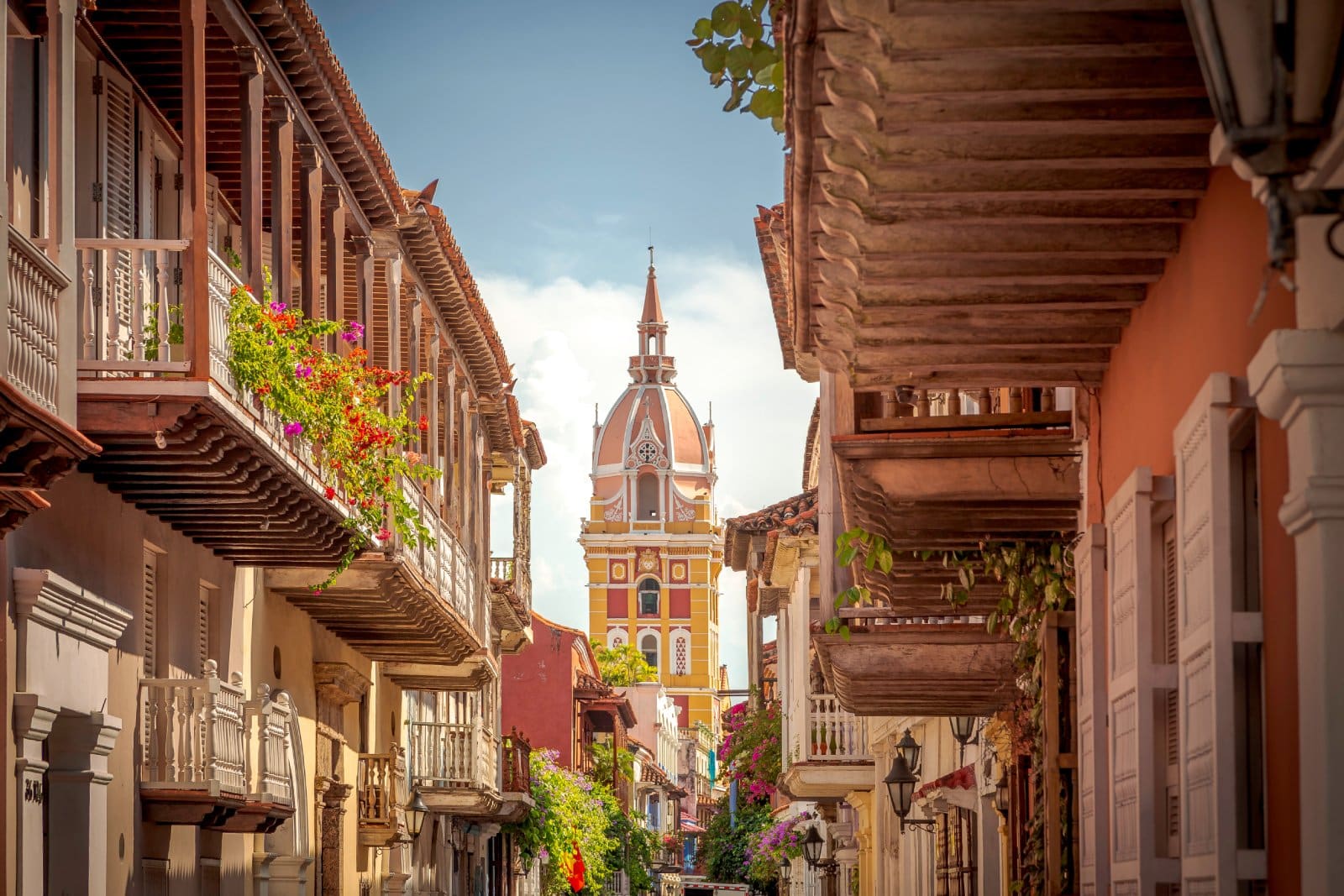
5. Cartagena, Colombia
Cartagena, a coastal city in Colombia, is a delightful destination for solo travelers. Its well-preserved colonial architecture, vibrant street life, and Caribbean beaches perfectly blend culture and relaxation. The city’s friendly locals and lively music scene warmly welcome solo visitors.
Insider’s Tip: Join a walking tour of the historic walled city to learn about Cartagena’s rich history and meet fellow travelers.
When to Travel: The dry season from December to April is the best time to visit, with sunny days and lower humidity.
How to Get There: Cartagena has an international airport with direct flights from major cities in the Americas.

6. Salar de Uyuni, Bolivia
Salar de Uyuni in Bolivia, the world’s largest salt flat, offers a surreal landscape that feels like another planet. For solo travelers, it’s a place of introspection and awe. The vast expanse of white salt, especially during the wet season when it reflects the sky, creates a dreamlike horizon. Guided tours, often in groups, allow you to explore this unique environment safely, including visits to cactus-filled islands and flamingo-populated lakes.
Insider’s Tip: Book a tour that includes a stay in a salt hotel for a unique experience.
When to Travel: The rainy season from December to April offers the mirror effect on the salt flats, while the dry season from May to November provides easier travel conditions.
How to Get There: Fly to Uyuni from La Paz or take an overnight bus for a more budget-friendly option.
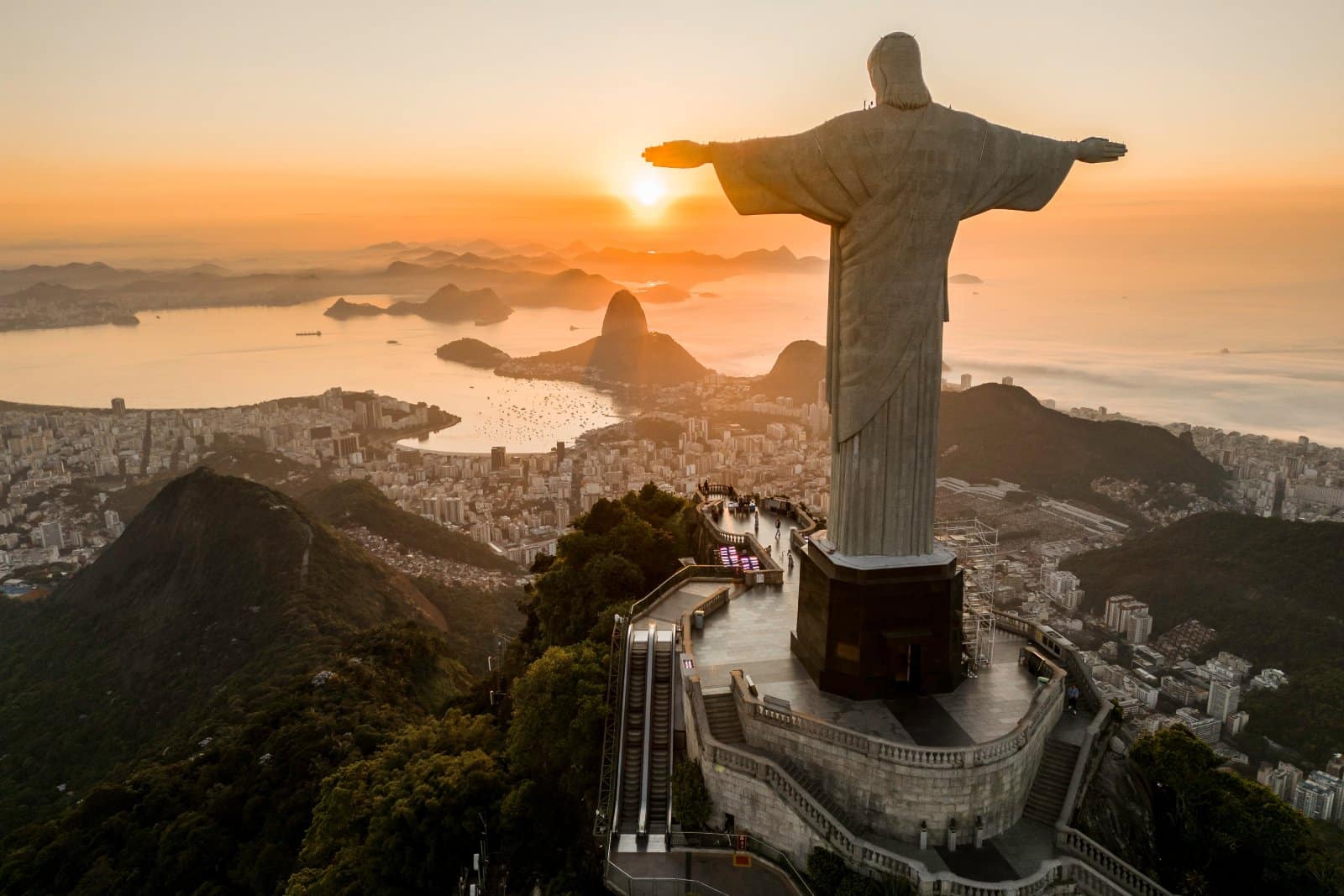
7. Rio de Janeiro, Brazil
Rio de Janeiro, with its iconic beaches, vibrant street life, and pulsating samba rhythms, is a dynamic destination for solo travelers. The city’s natural beauty, from the Sugarloaf Mountain to the Christ the Redeemer statue, is matched by its cultural richness.
Exploring Rio’s diverse neighborhoods, enjoying beach sports at Copacabana or Ipanema, and experiencing the nightlife are perfect solo activities that offer both adventure and the opportunity to meet locals and fellow travelers.
Insider’s Tip: Join a group tour to visit the city’s landmarks and meet other solo travelers.
When to Travel: Visit during the Carnival in February or March for a once-in-a-lifetime experience, or choose the shoulder seasons for fewer crowds.
How to Get There: Rio de Janeiro is well-connected by international flights to Galeão International Airport.
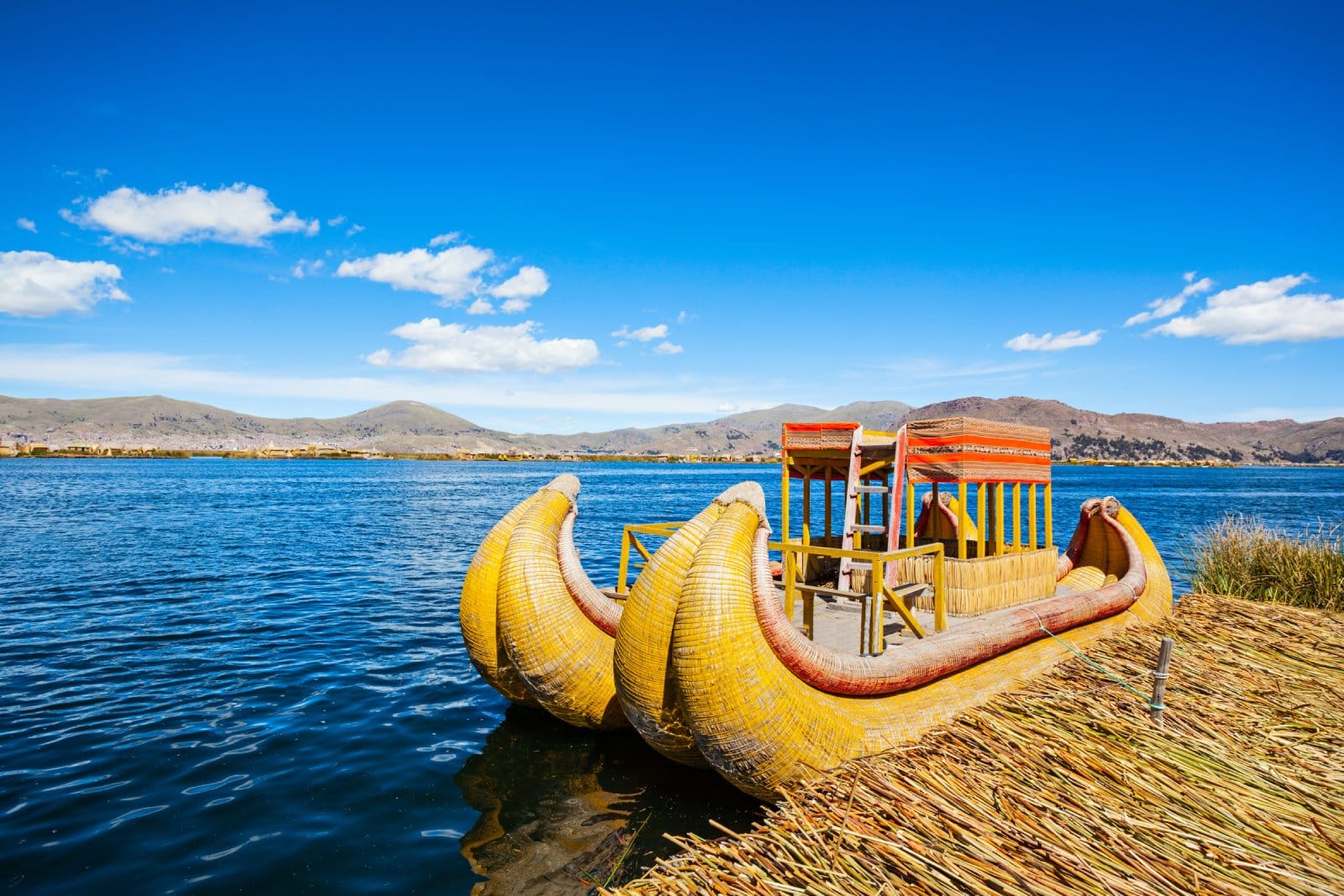
8. Lake Titicaca, Peru and Bolivia
Lake Titicaca, straddling the border of Peru and Bolivia, is the world’s highest navigable lake and a place of deep cultural significance. Solo travelers can explore ancient ruins, visit the unique floating islands of Uros, and experience the traditional way of life of the local communities. The lake’s serene beauty and the people’s warmth make it a fulfilling destination for those traveling alone.
Insider’s Tip: Stay overnight on Isla del Sol or Isla Amantani for a more immersive cultural experience.
When to Travel: The dry season from May to October offers clear skies and more comfortable temperatures.
How to Get There: Access Lake Titicaca from Puno in Peru or Copacabana in Bolivia, both reachable by bus from major cities in each country.
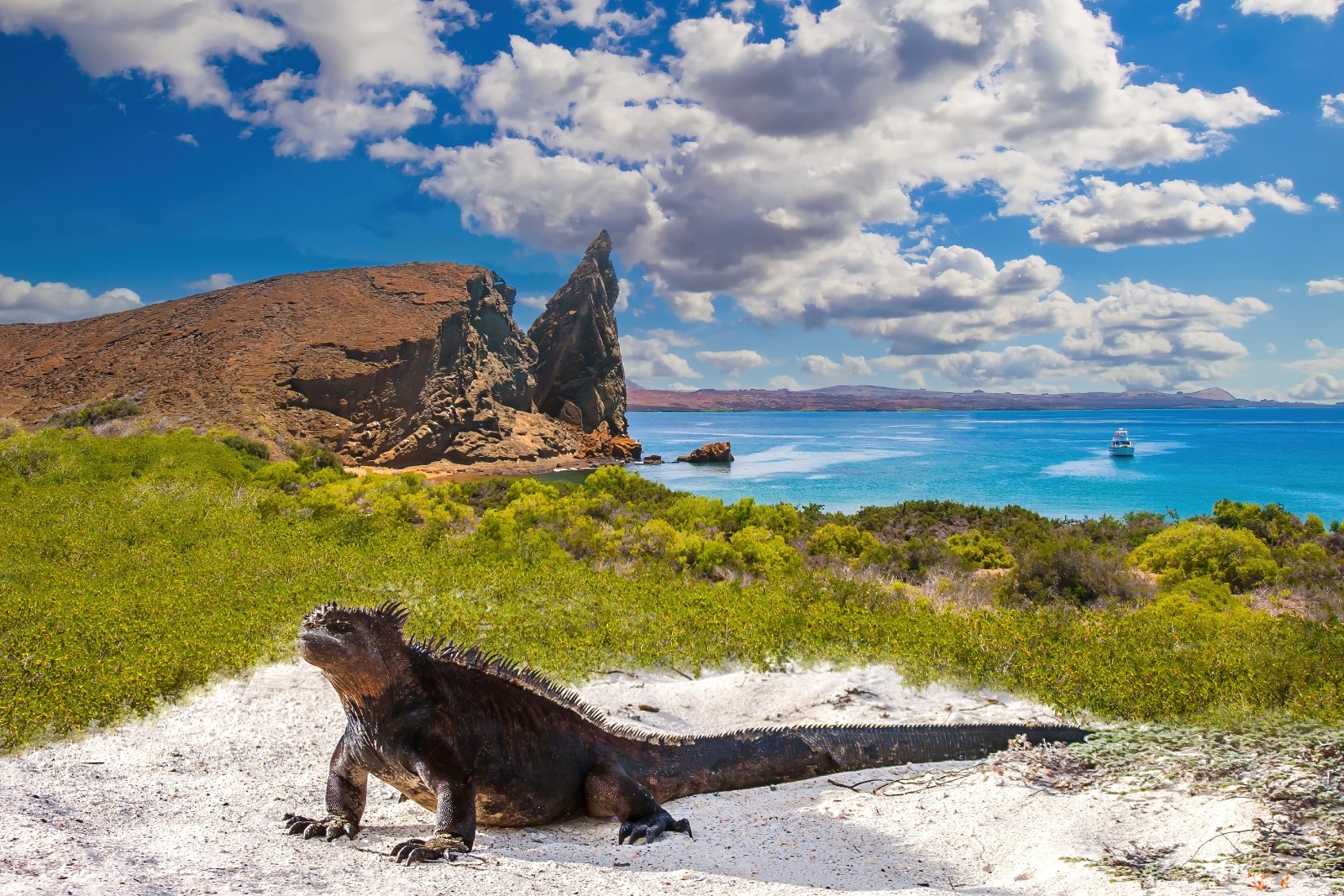
9. The Galapagos Islands, Ecuador
The Galapagos Islands, off the coast of Ecuador, are a dream destination for solo travelers interested in wildlife and nature. The islands offer an unparalleled opportunity to observe unique species up close in their natural habitat. Joining a cruise or a guided tour is a great way to explore the islands and meet fellow nature enthusiasts.
Insider’s Tip: Opt for a small-group tour or cruise for a more personalized and intimate experience.
When to Travel: Each season offers different wildlife viewing opportunities; however, the cooler dry season from June to November is great for seeing marine life.
How to Get There: Fly to the Galapagos from Quito or Guayaquil in Ecuador, then join a pre-arranged tour or cruise.
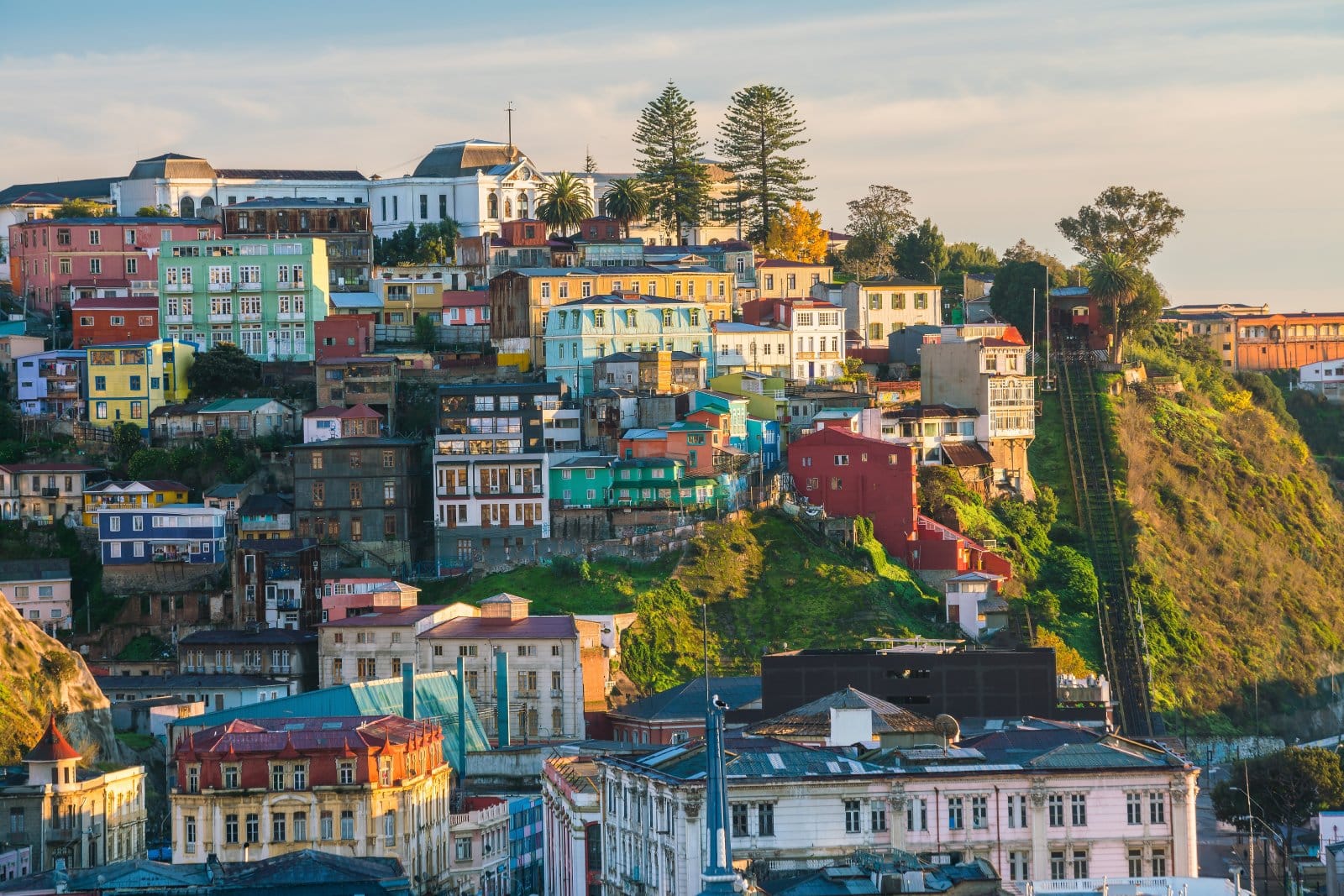
10. Valparaiso, Chile
Valparaiso, a port city on Chile’s coast, is a vibrant canvas for solo travelers seeking artistic inspiration. Known for its colorful houses, historic funiculars, and stunning street art, the city’s bohemian atmosphere is perfect for those exploring alone.
Strolling through the cerros (hills) with their labyrinth of streets offers spectacular views and a chance to delve into Chile’s artistic heart. The city’s lively cafes and cultural events provide ample opportunities to mingle with locals and fellow travelers.
Insider’s Tip: Take a guided street art tour to fully appreciate the stories behind the city’s famous murals.
When to Travel: The Chilean summer months from December to March offer pleasant weather for exploring the city.
How to Get There: Valparaiso is about a 1.5-hour drive from Santiago, Chile’s capital, and is also accessible by bus.
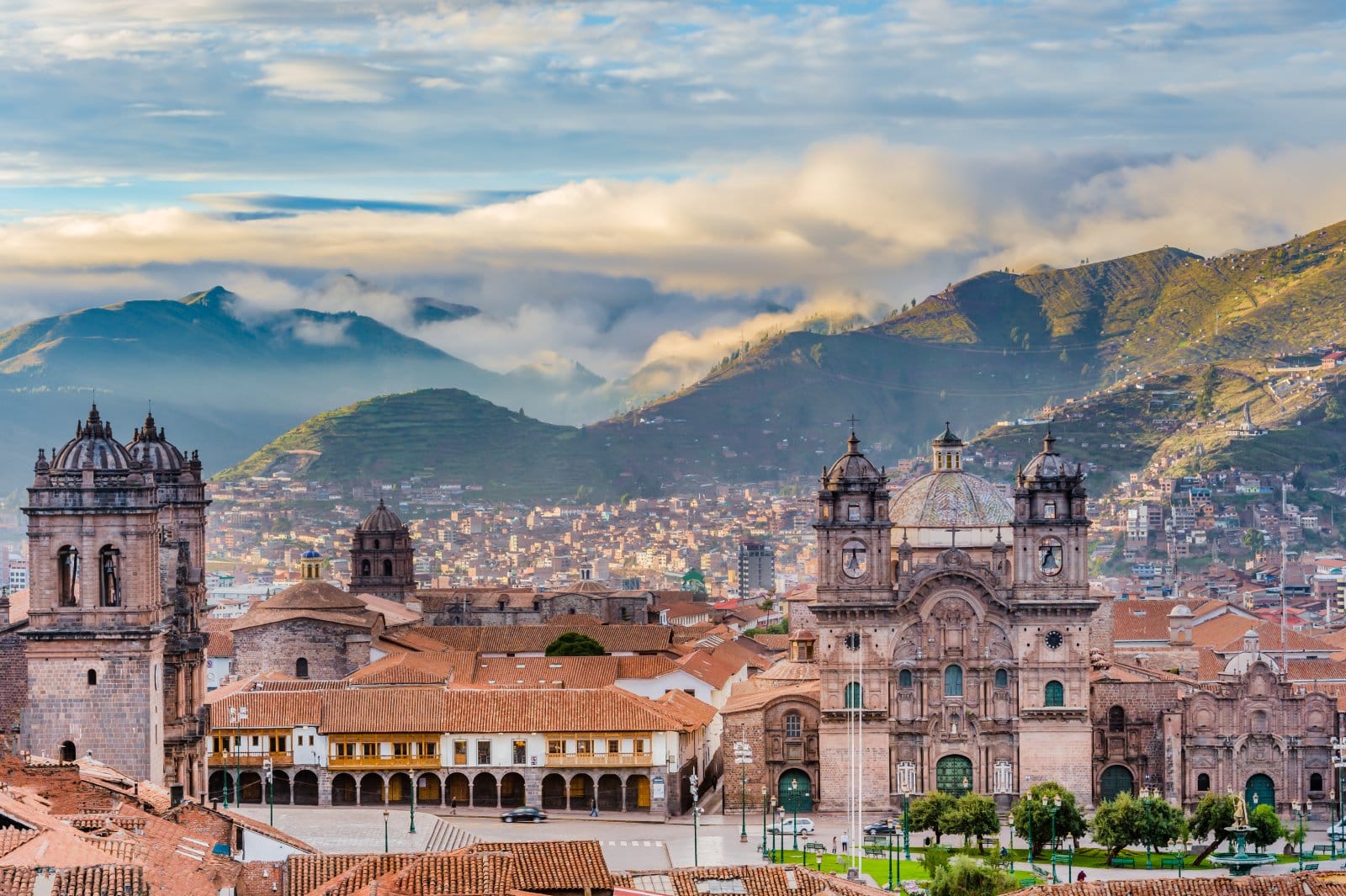
11. Cusco, Peru: A Cultural Gem for the Solo Explorer
Cusco, once the capital of the Inca Empire, is more than just a gateway to Machu Picchu. This high-altitude city in Peru is a treasure trove of history, architecture, and culture, ideal for solo travelers.
Wander through its cobblestone streets, explore the ruins of Sacsayhuaman, or immerse yourself in the vibrant San Pedro Market. Cusco’s blend of Inca and Spanish colonial heritage, along with its lively atmosphere, makes it a captivating destination for those traveling on their own.
Insider’s Tip: Spend a few days in Cusco to acclimatize to the altitude before heading to higher elevations.
When to Travel: The dry season from May to October is the best time to visit, with sunny days and cooler nights.
How to Get There: Fly into Alejandro Velasco Astete International Airport in Cusco, with frequent connections from Lima.

12. Salvador, Brazil
Salvador, the capital of Brazil’s Bahia state, is a city where African and Brazilian cultures meld into a vibrant landscape. For solo travelers, Salvador offers a chance to experience its rich history, colorful colonial architecture, and pulsating music and dance scenes. The Pelourinho district, a UNESCO World Heritage site, is a must-visit for its well-preserved colonial buildings and cultural significance.
Insider’s Tip: Attend a capoeira performance or take a class to experience this Afro-Brazilian martial art form.
When to Travel: Visit during the Bahian Carnival, a less crowded alternative to Rio’s Carnival, usually held in February or March.
How to Get There: Salvador is accessible by air from major Brazilian cities and some international destinations.

13. The Atacama Desert, Chile
The Atacama Desert in northern Chile offers solo travelers an otherworldly landscape of salt flats, geysers, and lunar terrains. It’s a place for self-reflection and adventure, with opportunities for star gazing, hiking, and exploring unique geological formations. The desert’s vastness and tranquility make it an ideal destination for those seeking solitude and a connection with nature.
Insider’s Tip: Visit the ALMA Observatory for a unique insight into astronomical research and spectacular stargazing.
When to Travel: The Atacama Desert can be visited year-round, but spring and fall shoulder seasons offer more comfortable temperatures.
How to Get There: Fly to El Loa Airport in Calama, then take a shuttle or bus to San Pedro de Atacama.

14. Medellin, Colombia
Medellin, once infamous for its turbulent past, has transformed into a hub of culture, innovation, and tourism. Medellin offers solo travelers a unique blend of modern urban landscapes and lush greenery. The city’s innovative public transport system, including cable cars and metro, makes it easy to explore.
Visit the Botero Plaza, take a graffiti tour in the Comuna 13 neighborhood, or relax in the Botanical Gardens. Medellin’s story of transformation is particularly inspiring for solo travelers looking for stories of resilience and renewal.
Insider’s Tip: Join a guided tour of Comuna 13 to understand the neighborhood’s history and witness its vibrant street art.
When to Travel: The best time to visit is during the Flower Festival in August, although the city’s pleasant climate makes it a great destination year-round.
How to Get There: Medellin is served by José María Córdova International Airport, with good connections to major cities in the Americas.

15. Quito, Ecuador
Quito, the capital of Ecuador, is a city rich in history and culture, making it an ideal destination for solo travelers interested in heritage and architecture. As the second-highest capital city in the world, it offers breathtaking views of the Andean landscape. The city’s well-preserved historic center, a UNESCO World Heritage site, is filled with colonial monuments and architectural treasures. Exploring Quito allows solo travelers to delve into Ecuador’s history and enjoy its vibrant contemporary culture.
Insider’s Tip: Take a trip to the equator line at the Mitad del Mundo monument, just a short distance from the city.
When to Travel: June to September offers clear skies and dry weather, ideal for exploring the city and its surroundings.
How to Get There: Quito’s Mariscal Sucre International Airport has regular flights from major cities in the Americas and Europe.
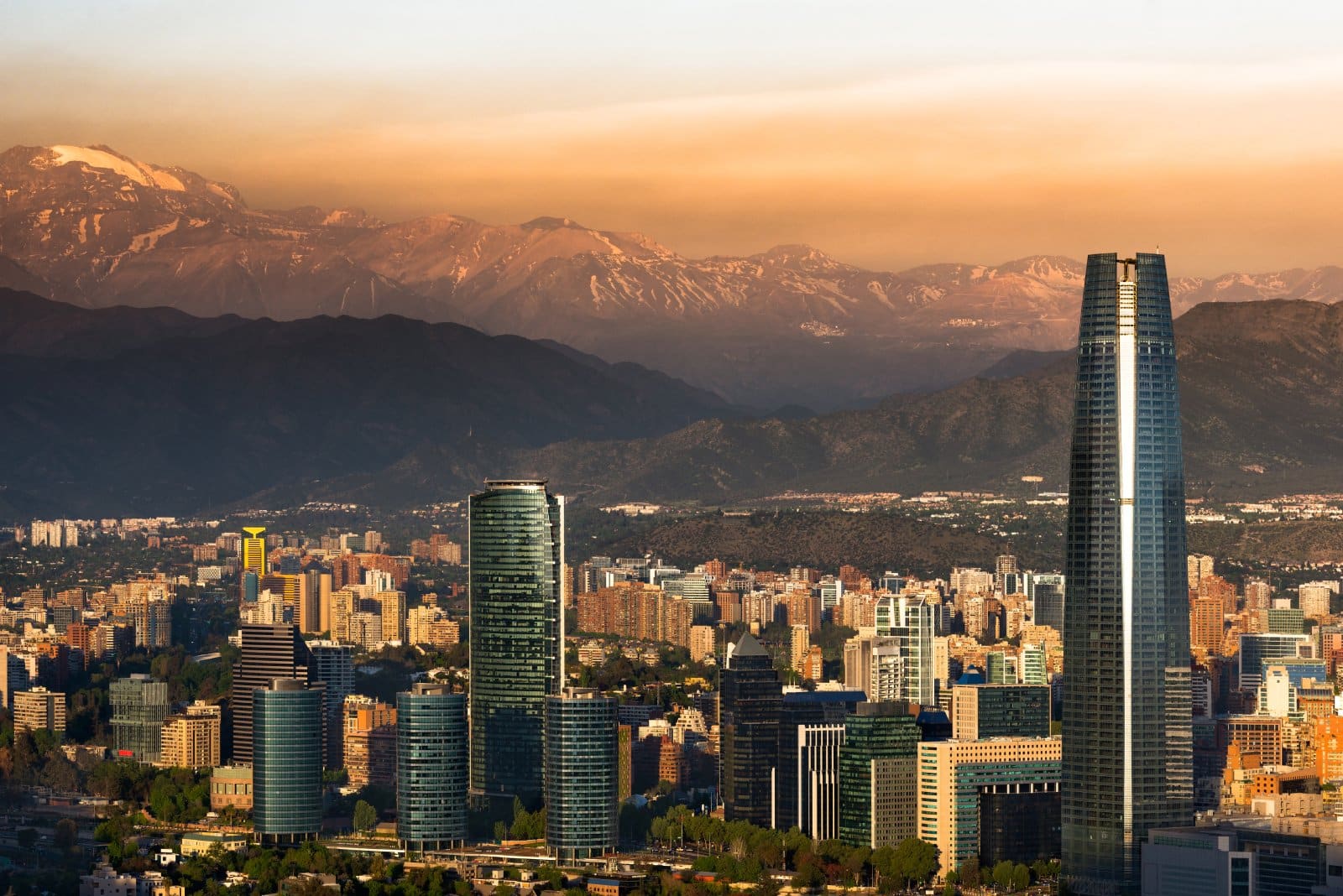
16. Santiago, Chile
Santiago, the capital of Chile, is a cosmopolitan city set against the backdrop of the Andes Mountains. For solo travelers, Santiago offers cultural experiences, outdoor activities, and culinary delights. Explore the city’s museums, parks, and vibrant neighborhoods like Bellavista.
A short trip to the nearby Andes allows for skiing or hiking, depending on the season. With its blend of traditional Chilean cuisine and international flavors, Santiago’s growing culinary scene is a delight for food enthusiasts.
Insider’s Tip: Visit the top of Cerro San Cristobal for panoramic views of the city and the Andes.
When to Travel: Spring (September to November) and fall (March to May) offer mild weather and fewer crowds.
How to Get There: Santiago’s Arturo Merino Benítez International Airport is well-connected internationally.
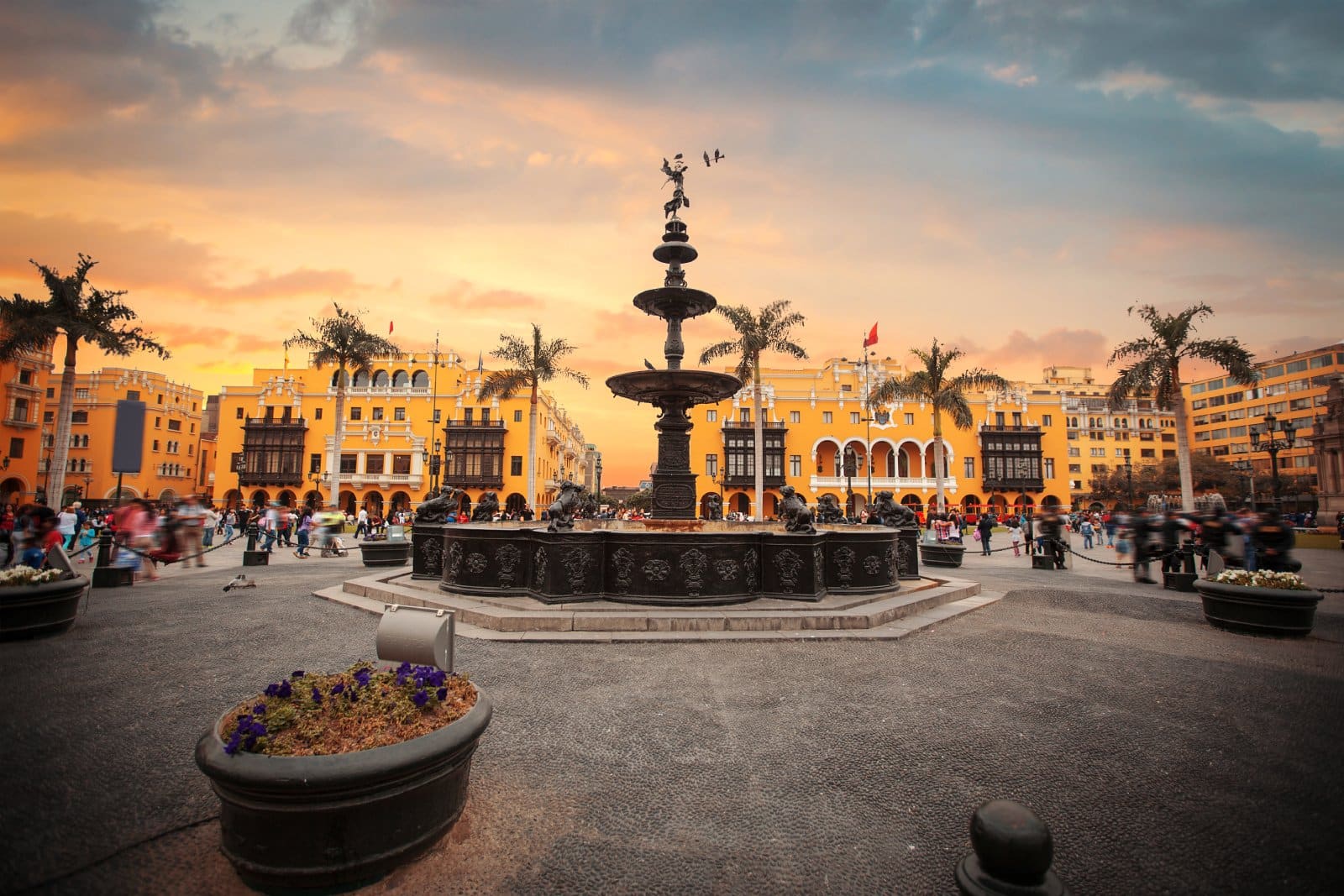
17. Lima, Peru
Lima, the capital of Peru, is a paradise for food lovers and a must-visit for solo travelers interested in gastronomy. The city offers a culinary journey through its diverse food scene, from street food to gourmet restaurants. Don’t miss the chance to try ceviche, Lima’s iconic dish. The city’s rich history, represented in its museums and architecture, complements its culinary offerings, making Lima a well-rounded destination.
Insider’s Tip: Take a Peruvian cooking class to learn about the local cuisine and meet fellow food enthusiasts.
When to Travel: The best time to visit is from December to April, when the weather is warmer and sunnier.
How to Get There: Jorge Chávez International Airport in Lima is the main gateway to Peru, with numerous international connections.

The Bottom Line
Solo travel in South America offers an unparalleled opportunity for personal growth, adventure, and cultural immersion. As you navigate this diverse continent, embrace its challenges as part of the journey. Remember, your solo travels in South America are as much about the destinations you explore as the personal discoveries you make along the way.
Always keep safety in mind: stay informed about local conditions, trust your instincts, and keep your belongings secure. Embrace the freedom and flexibility of solo travel, but also be open to joining group activities where you can share experiences and make new connections.
More Articles Like This…
Barcelona: Discover the Top 10 Beach Clubs
2024 Global City Travel Guide – Your Passport to the World’s Top Destination Cities
Exploring Khao Yai 2024 – A Hidden Gem of Thailand
The post Solo Adventure: 17 Thrilling Destinations in South America 2024 republished on Passing Thru with permission from The Green Voyage .
Featured Image Credit: Shutterstock / Peera_stockfoto.
For transparency, this content was partly developed with AI assistance and carefully curated by an experienced editor to be informative and ensure accuracy.
More for You
Can't hear TV dialogue? I changed these 3 things to dramatically improve audio
NFL Legend Blasts Bronny James' NBA Future in Fiery Commentary
Clint Eastwood, 94, and 8 children reunite in photos for daughter Morgan's wedding at 22-acre ranch
Pump up your shoulders and chest in 15 minutes with this simple 3-move workout
Moment Woman Realizes She Was 'Accidentally Poisoning' Herself for Months
The Fast-Growing Tree You'll Want To Plant In Your Yard For All Of Its Benefits
3 New Required Minimum Distribution (RMD) Rules Everyone Needs to Know About in 2024
Shaquille O’Neal Apologizes To Drake For Posting Edited Picture
I Always Laughed at My Grandma's Favorite Ingredient, But Now I Love It
Dolly Parton scheme giving children free books attacked as ‘white saviourism’
EV driver shares photo of concerning scene at local charging station: 'This angers me so much'
Carmen Electra’s “Baywatch ”Red Latex Look at “That ‘90s Show” Premiere Wasn’t Actually Inspired by the ‘90s (Exclusive)
'Forget about Florida' and 6 other key pieces of real estate advice from Barbara Corcoran
Watch Michael J. Fox Join Coldplay on Guitar at Glastonbury
‘I feel slighted’: My husband and I are in our 70s. We married 3 years ago. He’s leaving his $1.8 million home to a 10-year-old relative. Is that normal?
I spent 6 years living on The World, a cruise ship for millionaires. It was like the Four Seasons on steroids — readjusting to reality was tough.
Frustrated Home Depot employee shares photo of countless carts full of gardening products wasted for no good reason: 'Not our call'
The Canned Chili Brand We Consider The Best Of The Best
The Ho-Hum Box Office of Kevin Costner's ‘Horizon' Carries a Message: Don't Turn Movies Into Television
What Happens if You Deposit More Than $10,000 in Your Bank Account?

IMAGES
VIDEO
COMMENTS
Here are five of the most popular backpacking locations for solo travellers in Central America. 1. Ometepe, Nicaragua. Isla Ometepe is a volcanic island in the middle of Lake Nicaragua - the largest lake in Central America. Ometepe is straight out of a fairytale and is one of my favourite locations in the world.
Best for ruins in the jungle. Solo travelers touring the length and breadth of Central America will no doubt venture to the standout sites of the ancient Maya world - Guatemala's Tikal and Honduras's Copán. But if your trip is a bit less ambitious, Belize's Altun Ha is an easy and rewarding side-trip from the country's favorite ...
Central America solo travel has it all; Mayan temples and Aztec ruins, great nightlife, crystal waters, the world's second-longest reef, active volcanos and lush vegetation, not to mention big cats and an abundance of wildlife. Its history dates back thousands of years, and evidence of the Maya civilisation can be found in Mexico, Guatemala ...
Best Destinations For Solo Travelers In Central America. Caye Caulker, Belize. This sleepy little Island off the coast of Belize is the perfect place to start our list of destinations in Central America for Solo Travellers. If you are looking for sun, sea, chilled vibes, no worries, good food and stress-free travel then Caye Caulker is the ...
Here are the 30 best destinations in Central America for solo travelers, each offering a unique and unforgettable experience. So, pack your bags, grab your passport, and get ready for an adventure of a lifetime in Central America! 1. Antigua, Guatemala - Colonial Charm & Volcanoes. Antigua, Guatemala.
San Ignacio, Belize is one of the best places to visit in Central America solo. Located in far western Belize, the town is ideal for solo travelers looking for budget lodging and adventure activities. The town has several hostels and various eco-lodges that are great for meeting other travelers. I stayed in a jungle lodge just outside the town ...
The Best Destinations for Solo Female Travel in Central America. 1. Costa Rica. Costa Rica is one of the best destinations for solo female travelers in all of Latin America, in my opinion. The public transportation system works smoothly, making it easier to get from place to place on the bus.
Belize is the only English-speaking country in Central America, and with the friendly locals, relaxed vibe and ease of communication, it's a breeze for solo travel. First up: off the coast is a tiny island paradise, Caye Caulker. The motto here is "Go slow" - it's a car-free place where the roads are sandy, palm trees sway, rum punch ...
The Rainmaker Walkway was the first one to be built in Central America, and it is still considered one of the most picturesque aerial walkways in the region. It makes for a thrilling and rewarding adventure for solo travelers, allowing them to walk along a swaying bridge in the middle of the rainforest.
There are eight countries that make up the region of Central America; each one is worthy of exploration! Backpacking Central America offers up the opportunity to experience a vast array of landscapes, cultures, food, and activities. Belize, Costa Rica, and parts of Mexico are more expensive than the other countries.
Central America Travel Costs. Accommodation - Hostel dorms with 6-8 beds cost $8-20 USD per night while private hostel rooms cost $15-30 USD for a single or double bed with private bathroom (in Belize, Costa Rica or Panama, you will pay on the higher end of that range).
For solo travelers, the lodging options seem never-ending, and finding a dorm room under $10 isn't hard. Public buses are frequent and cheap, and getting lost on one is an adventure waiting to happen. Costa Rica is the safest country in Central America, according to Statistica, which makes it a popular destination for single travelers. And when ...
Belize (caye caulker, and don't skip mainland belize [san igancio and the coastal beach towns]) little corn island, Nicaragua (the true definition of off the beaten path island, however, keep in mind if you get hurt, you may be hours and a flight away from a hospital). all the ruins— tikal is a must. 1. Reply.
If you're looking for inspiration and empowerment to solo travel in Central America, follow my adventures as I solo travel Central America, exploring the continent. Panama Canal Visit This entry was posted in Panama and tagged City & Sightseeing on February 29, 2024 by Girl about the Globe .
Honduras: Honduras is one of the cheapest places in the world to get certified for scuba diving. Head to the Bay Islands and choose from a bunch of different dive centers. Nicaragua: If Costa Rica is too expensive for your budget, travel to cheaper Nicaragua. It's a popular backpacking destination in Central America, making it an excellent option for solo travelers who want to make some new ...
Backpacking Central America is an amazing experience. From diving into the blue hole in Belize to camping by active volcanoes in Guatemala, this region of the world is home to some amazing bucket-list experiences. Central America was the region of the world that reignited my love for backpacking. I say reignited because it wasn't the first trip.
Is Central America Safe for Solo Female Travelers? Solo female travelers will need to be more on guard during their time in Central America. Costa Rica, Panama, and Belize are the safest countries in the region. If you're a new solo female traveler, stick to these countries.
Central America is a fantastic destination for experienced solo female travelers. I was 30 years old and had traveled to 50+ countries before arriving in Central America and I found it beautifully calibrated to my travel expertise.
A place for all of those interested in solo travel to share their experiences and stories! ... Central America Central America Backpacking Itinerary Hello everyone, I recently discovered this subreddit this is my first time posting. This Itinerary was Created During the beginning of the pandemic last year. The plan was to go with my cousin in ...
Central America is a bucket list destination for solo travelers and backpackers worldwide, and there is no better place to start than San Jose, Costa Rica. Home to a bustling international airport, the city can be reached in under a five-hour flight from many cities in the United States.
Benefits of Solo Female Travel in Central America. Central America offers a multitude of advantages for women traveling alone. The foremost benefit is the empowerment it brings, as it encourages women to step outside their comfort zones and gain confidence in navigating unfamiliar territories independently.
Antigua is easily my favorite place in Central America. I met people in an expats in Guatemala Facebook group ahead of time and am still in touch with a few. 3. Reply. RaggaDruida. • 2 yr. ago. If you go to Guatemala and want to socialize, Quetzaltenango/Xela is a better option! Consider also lake Atitlan! 3.
What to pack for a solo road trip. If you're planning on setting off on a solo, contemplative journey in an off-the-beaten-path location, you'll want to do some pre-planning. Here's what I found came in handy while spending long hours on the road in remote locations. An inspirational audio book; A sing-along playlist (downloaded)
Backpacking Central America Solo - 4 Months. Hi all, First Time poster. I'll be backpacking through Central America starting in Cancun Mexico and ending in Panama City, I'll be leaving in the next couple of weeks and was wondering if anyone had any recommendations or tips for travelling the region. Bit about me: first time travelling, 22 M from ...
Buenos Aires, known as the "Paris of South America," is a city that captivates solo travelers with its European charm and Latin flair. Explore the city's diverse neighborhoods, from the ...